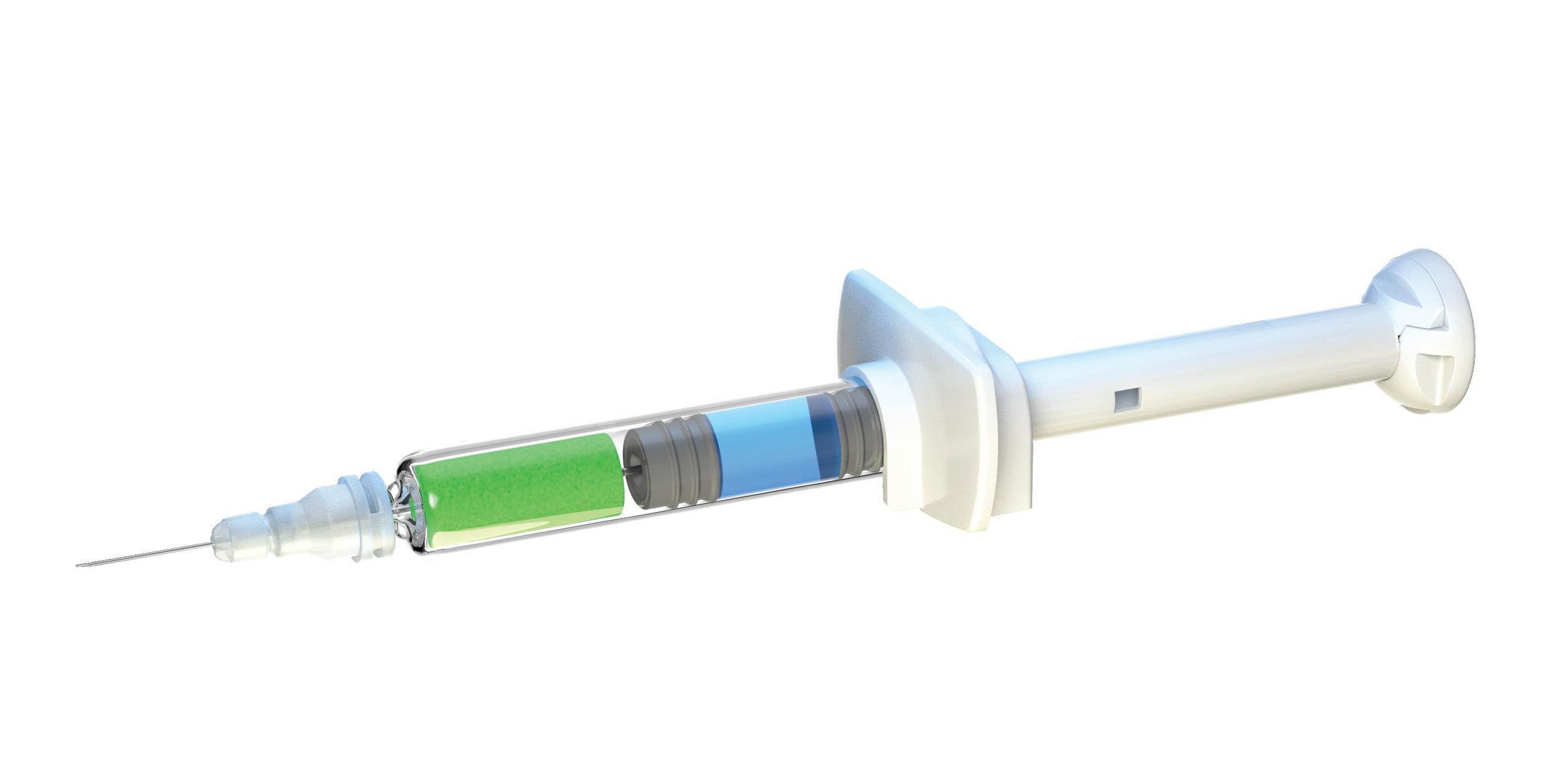FUTURE TRENDS FOR NOVEL INJECTABLE DRUG DELIVERY
BEYOND PROBABILITY: CHOOSING DETERMINISITC METHODS

FUTURE TRENDS FOR NOVEL INJECTABLE DRUG DELIVERY
BEYOND PROBABILITY: CHOOSING DETERMINISITC METHODS
THE RISE OF

OUTSTANDING ISSUE SPONSOR






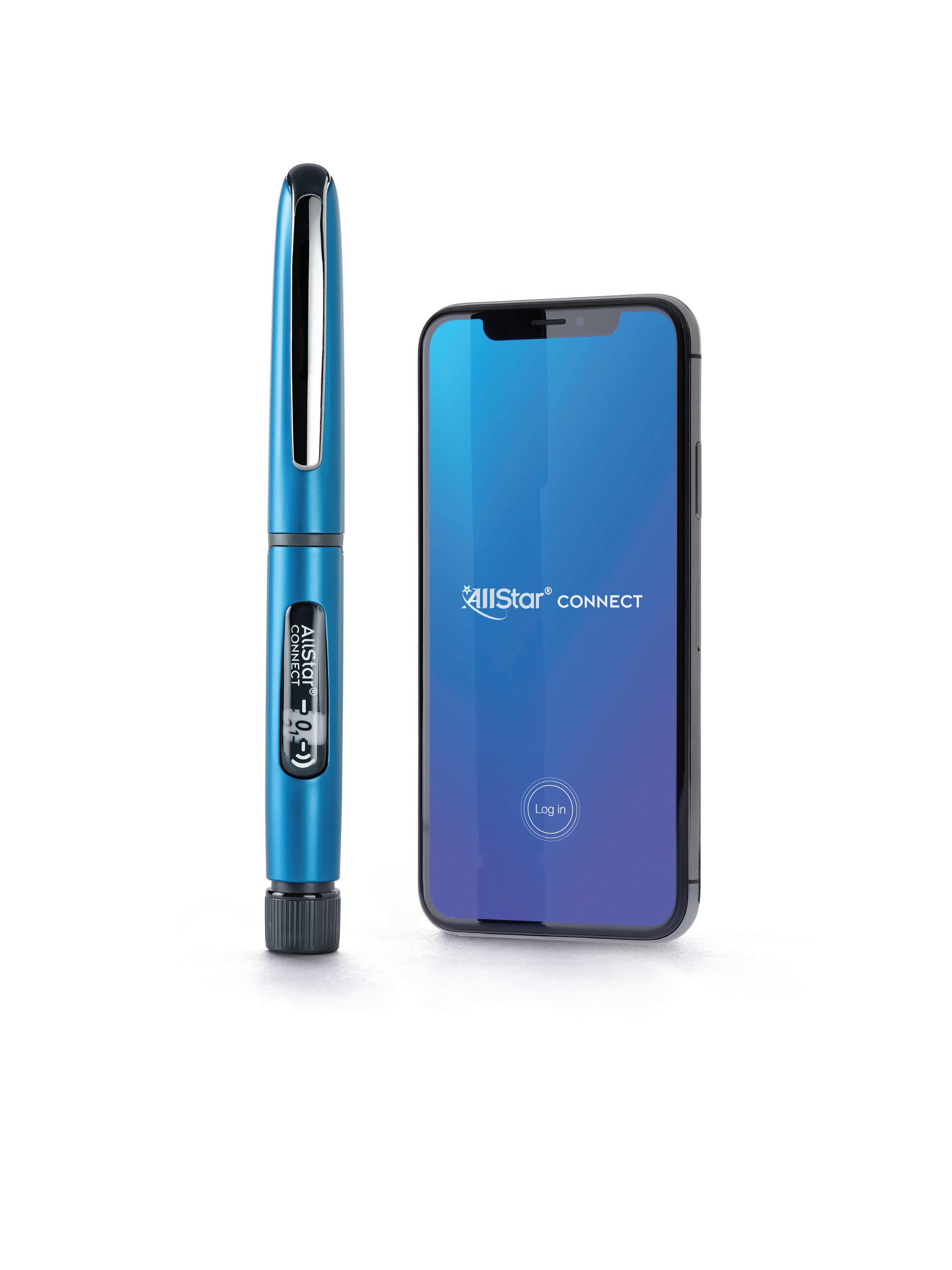
At Sanner Group, we blend agility with capability to deliver exceptional Contract Development and Manufacturing Organization (CDMO) services for pharmaceutical, medtech, biotech, and diagnostic devices. Our integrated approach ensures that your project moves swiftly from concept to market, reducing risks and accelerating time to approval
End-to-End Expertise with Springboard Pro
Our Device Design & Development entity, Springboard Pro, brings together leading experts in advanced science, human factors, robust design, and forensic engineering. Using cutting-edge digital and computer-aided methods, we provide Quality-by-Design developments from the ground up, ensuring your devices are robust, reliable, and innovative.
With state-of-the-art production facilities built to GMP standards and certified under DIN EN ISO 9001, ISO 13485, and ISO 15378, we offer worldwide manufacturing capacity in high-precision injection molding. Our facilities support all phases of production, from clinical builds to short-run production, catering to small and mid-sized projects with unmatched precision and efficiency.
Our advanced prototyping capabilities range from 3D printing and additive-manufactured mold inserts to small batch production, perfectly suited for clinical trials. This allows for rapid iterations and testing, providing flexibility and speed without compromising quality.
Navigating regulatory landscapes can be challenging. Our deep understanding of regulatory requirements across all phases of development ensures your devices meet all necessary standards, minimizing the risk of setbacks and streamlining the approval process.
Seamless
By keeping all capabilities under one roof, Sanner Group eliminates the common inefficiencies and miscommunications associated with multi-vendor collaboration. Our dedicated, fully integrated design transfer teams minimize risks during transfer to manufacturing, enabling a smooth and responsive progression through every stage of development.
From initial design to final production, our robust, manufacturable designs and streamlined processes deliver rapid, cost-effective solutions tailored to your needs. With our close coordination across all phases, we ensure flexibility, quick adaptation to changes, and a faster path from concept to market.



Combining a passion for precision with responsibility

IGS GeboJagema is the worlds’ leading high precision mould manufacturer. Recognised and appreciated by all global industry experts. Based in the heart of the most prominent technology hub of Europe, and with a state-of-the-art plant in the USA.
Visit us at:
CPHI Oct. 08th -10th Milan, Italy
Fakuma Oct. 15th -19th Friedrichshafen, Germany
PDA Oct. 22nd -23rd Phoenix (AZ), USA
PODD Oct. 28th -29th Boston (MA), USA
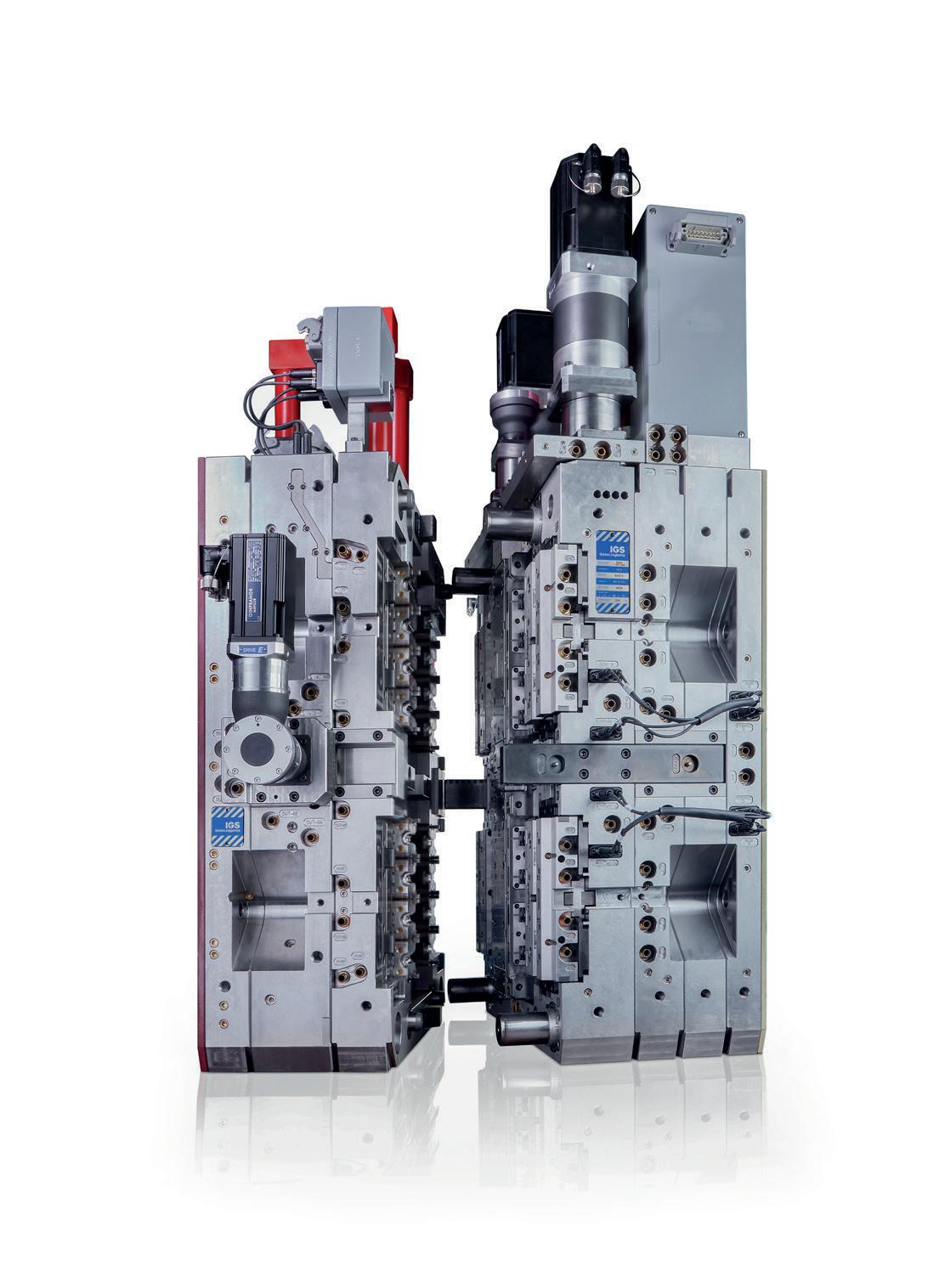
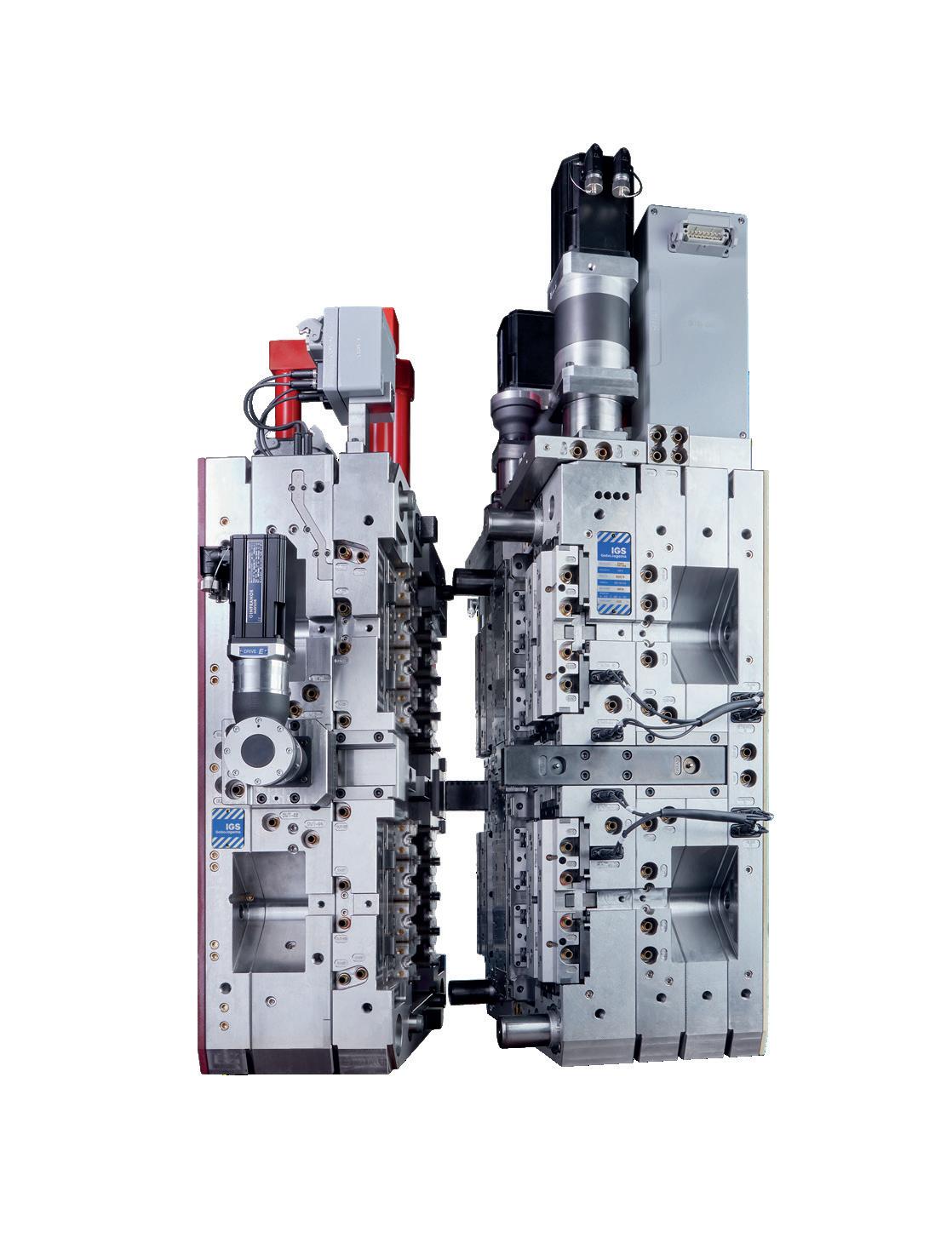
ONdrugDelivery Issue No 166, October 8th, 2024
PREFILLED
This edition is one in the ONdrugDelivery series of publications. Each issue focuses on a specific topic within the field of drug delivery, and is supported by industry leaders in that field.
EDITORIAL CALENDAR 2024/25
Nov 2024 Pulmonary & Nasal Drug Delivery
Dec Connectivity in Drug Delivery
Jan 2025 Prefilled Syringes & Injection Devices
Feb Skin Drug Delivery: Dermal, Transdermal & Microneedles
Mar Ophthalmic Drug Delivery
Apr Pulmonary & Nasal Drug Delivery
Apr/May Sustainability in Drug Delivery
May Injectable Drug Delivery: Formulations & Devices
May/Jun Oral Drug Delivery
Jun Connectivity in Drug Delivery
Jun/Jul Industrialising Drug Delivery
Sep Wearable Injectors
Sep/Oct Sustainability in Drug Delivery
Oct Prefilled Syringes & Injection Devices
EDITORIAL:
James Arnold, Editor
E: james.arnold@ondrugdelivery.com
CREATIVE DESIGN:
Simon Smith, Head of Creative E: simon.smith@ondrugdelivery.com
SUBSCRIPTIONS:
Print + Digital subscription: £99/year + postage
Digital Only subscription: free. E: subscriptions@ondrugdelivery.com
ADVERTISING & SPONSORSHIP:
Guy Furness, Publisher E: guy.furness@ondrugdelivery.com
ONdrugDelivery is published by Frederick Furness Publishing Ltd
The Candlemakers, West Street, Lewes East Sussex, BN7 2NZ, United Kingdom T: +44 1273 47 28 28
Registered in England: Company No 8348388 ISSN 2049-145X print / ISSN 2049-1468 pdf
Copyright © 2024 Frederick Furness Publishing Ltd

ONdrugDelivery Magazine is printed sustainably by Newman Thomson Ltd, West Sussex, UK, using Forest Stewardship Council® certified recycled paper, vegetable-based inks, biodegradable laminates and carbon balanced materials offset via the World Land Trust™ following ISO140001 processes. ONdrugDelivery in print is sustainably shipped to events by DHL using GoGreen Plus whereby carbon insetting of at least 30% is achieved through the use of Sustainable Aviation Fuel (SAF), a biofuel substitute for traditional jet fuel, produced from renewable sources such as vegetable oils, animal fats, waste products, and agricultural crops. The magazine is mailed to individual readers outside the UK by DHL using GoGreen, which offsets 100% of CO2 emissions.
The ONdrugDelivery logo is a registered trademark of Frederick Furness Publishing Ltd.
The views and opinions expressed in this issue are those of the authors. Due care has been used in producing this publication, but the publisher makes no claim that it is free from error. Nor does the publisher accept liability for the consequences of any decision or action taken (or not taken) as a result of any information contained in this publication.
Subcutaneous Drug Delivery: Adapting to High-Viscosity, Large-Volume Demands
Ypsomed
Future Trends for Novel Injectable Drug Delivery
Team Consulting
Roundtable: Discussion on Anti-Obesity Treatments
Kymanox
Ypsomed
A New Dimension: Balancing Biologic Limitations and Patient Perceptions for an Enhanced Injection Experience
Stevanato Group
Streamlining the Testing Process for Autoinjector Devices
Instron
It’s Time to Consider Intradermal Delivery
Pharma Latch
Defining High-Viscosity, Large-Volume Drug Delivery Systems
Shore
Comprehensive Testing Proves Design Concept of Novel Autoinjector Platform
Gerresheimer
Midas Pharma
Beyond Probability: Choosing Deterministic Methods for Reliable Container Closure Integrity Testing
Gateway Analytical
AltaVISC: Expanding the Delivery Window for High-Viscosity & High-Volume Drugs
Altaviz
The Performance of Euroject – a BFS-Based Injection Device
Unither Pharmaceuticals
Interview – Scott Ariagno EdgeOne Medical
SHL Medical’s Elexy™: Redefining Possibilities
SHL Medical
Springs: The Key to Advanced Autoinjector and Pen Injector Performance
RPK Medical
OXYCAPT Vial’s Container Closure Integrity with Dry Ice After Freezing and Thawing
Mitsubishi Gas Chemical
Nolato’s Virtual Factory Nolato
FluroTec® Prefillable Syringe Plungers: A Solution for Low-Temperature Storage
West Pharmaceutical Services
The Rise of the Next-Gen CDMO: Strategies for Reducing Risk and Time to Market Springboard
Company Showcase
PCI Pharma Services
40 years of building powerful industry partnerships.
Broadest portfolio of self-injection products built on platforms
Serving pharma globally for all their originator and biosimilar needs
Over 70 products launched in 15 different therapeutic areas
Global manufacturing footprint spanning Switzerland, Germany, China and North America
Fully integrated strategic partner network






In this article, Thomas Fontanellaz, Category Lead YpsoMate 2.25, Reto Jost, Category Lead Large Volume Injectors, and Andreas Schneider, PhD, Head of Innovation, all at Ypsomed, discuss how the company is addressing the growing need for subcutaneous injections that accommodate higher volumes and viscosities, with innovative self-injection devices designed to enhance patient comfort and adherence.
The subcutaneous (SC) drug delivery landscape is undergoing significant change, fuelled by the increasing need for autoinjectors that are capable of handling high-viscosity, high-volume formulations. This shift is largely being driven by advances in biologics, which often require syringebased autoinjectors that can accommodate larger volumes and higher viscosities.
For years, the study of the upper feasible limits of injection volumes and rates has been a focus in the field of self-injection solutions. Traditionally, the industry has assumed that SC delivery was limited to administering up to 1.0 mL in 10–15 seconds. However, the recent introduction of handheld 2.25 mL prefilled syringe and autoinjector
“The recent introduction of handheld 2.25 mL prefilled syringe and autoinjector products has demonstrated the viability of delivering larger volumes, up to 2.0 mL.”
products has demonstrated the viability of delivering larger volumes, up to 2.0 mL,1 thereby expanding the possibilities for SC drug delivery.
Building on these advances, the simple and easy-to-use YpsoMate 2.25 has emerged as a key platform designed to address the growing need for highervolume SC injections. With its intuitive two-step automatic injection process, YpsoMate 2.25 offers a reliable option for both clinical and commercial applications.
A key advantage of the YpsoMate 2.25 is its fill volume range of 0.4–2.25 mL, providing flexibility to accommodate different drug formulations. Its user-centric design simplifies the injection process, making it accessible to patients with limited dexterity or visual impairments, in line with the industry’s shift towards solutions that prioritise usability and adherence (Figure 1). In addition, the platform’s adaptability to different prefilled syringe, plunger and needle shield types supports a wide range of customer needs, from biotech firms to large pharmaceutical companies.
The success of YpsoMate 2.25 lies in its technical capabilities and streamlined customisation process that de-risks development and reduces time to market. By centralising the critical stages of product development – such as design, human factors studies, clinical supply and regulatory filing – at its headquarters in Burgdorf, Switzerland, Ypsomed ensures that the
Thomas Fontanellaz
Category Lead YpsoMate 2.25
E: thomas.fontanellaz@ypsomed.com
Reto Jost
Category Lead Large Volume Injectors
T: +41 34 424 3987
E: reto.jost@ypsomed.com
Dr Andreas Schneider
Head of Innovation
T: +41 34 424 3206
E: andreas.schneider@ypsomed.com
Ypsomed AG
Brunnmattstrasse 6
CH-3401 Burgdorf Switzerland
www.ypsomed.com/yds

platform can be precisely tailored to meet specific requirements while fostering seamless expert collaboration and efficient communication across all stages and maintaining high standards of safety and usability. This modular approach accelerates development timelines and reduces risk, enabling a rapid response to evolving market needs.
Integrating expert collaboration and risk management into the development process supports the delivery of innovative self-injection solutions globally.
As attention shifts to volumes greater than 2.25 mL, two emerging device categories are attracting significant attention. The first is the exploration of whether the established handheld autoinjector format can accommodate even larger volumes.2 Several investigational large-volume autoinjectors are now being developed with dose-volume capacities up to 10.0 mL. As previous research has shown that patients can safely and effectively hold devices on the skin for injections lasting up to 30 seconds, if not longer,1 industry efforts are increasing to expand the feasible upper volume limits for handheld devices.
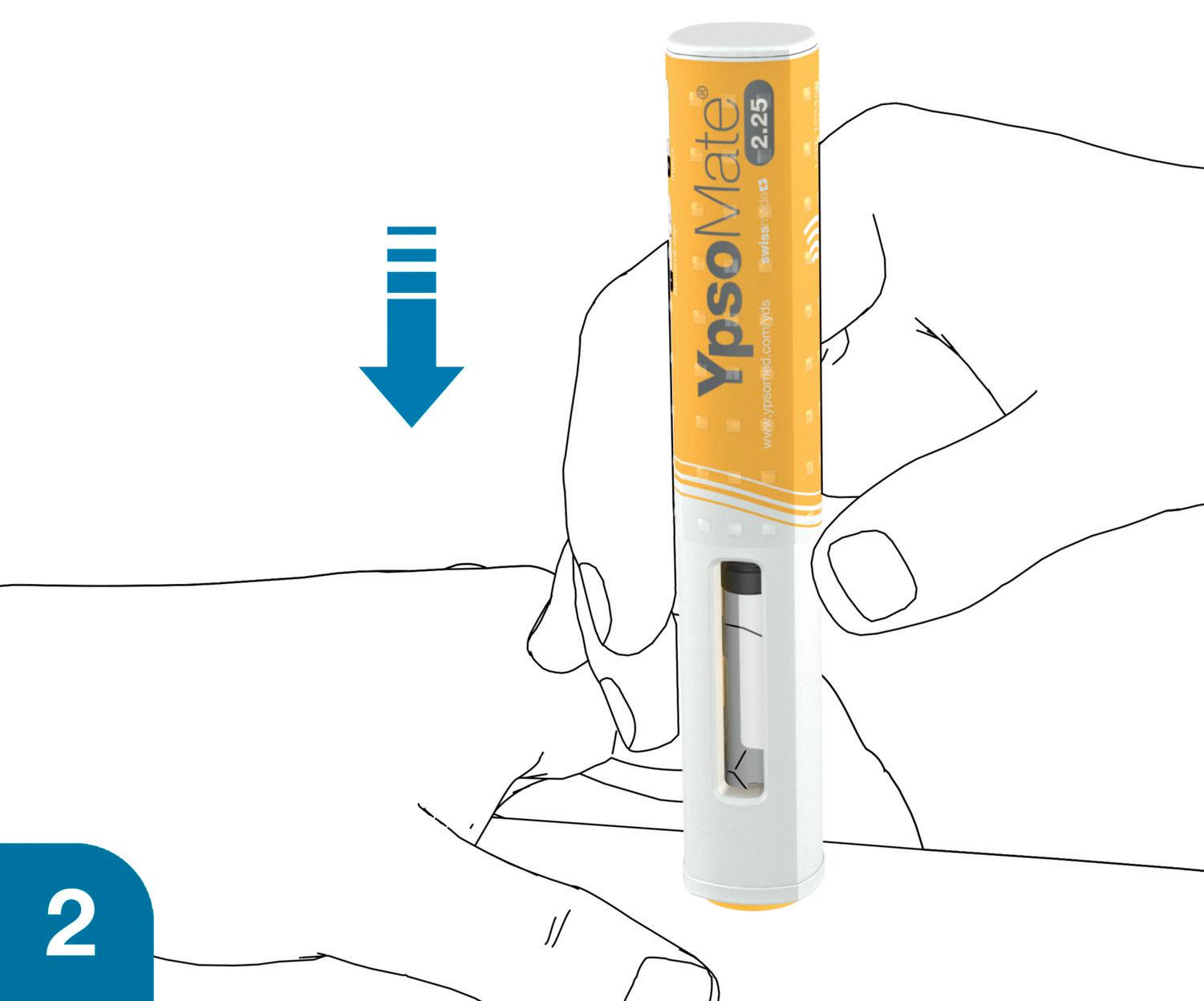
Based on recent supportive literature and the emerging market need, Ypsomed introduced the YpsoMate 5.5, the newest member of the YpsoMate autoinjector family, which expands the design space of today’s handheld autoinjectors and enables the administration of injection volumes in the 2.0–5.5 mL range.
YpsoMate 5.5 is based on the proven YpsoMate 2.25 Pro technology and uses a similar type of constant force drive mechanism. This ensures that large drug volumes are reproducibly injected, even with high-viscosity formulations, which would not be possible with a conventional compression spring. Different spring configurations with different force profiles allow the system to be adapted to accommodate a wide range of drug viscosities, up to 30–50 cP. It also allows the flow rate to be adjusted to the desired target rate. Configurable injection times range from approximately 10 to 60 seconds for a 5.0 mL injection volume.
The YpsoMate 5.5 autoinjector also features the market-proven and widely accepted two-step handling principle: the user removes the cap and injects the drug by pushing the device against the skin. As with the other products in the YpsoMate family, the design is suitable for fully automated manufacturing. YpsoMate 5.5 is compatible with a wide range of applications and is designed as a cost-effective solution, facilitating efficient development and deployment (Table 1).
*Feasibility testing is recommended for new drugs, as a broader range of viscosities can be accommodated.

2: Ypsomed solutions for large volumes and high viscosities. Pictured from left to right: YpsoMate 2.25, YpsoMate 2.25 Pro, YpsoMate 5.5 and YpsoDose.
Increases in dose volumes well beyond 5.0 mL remain tolerable in terms of pain and adverse events.2,3 Even when increases in dose volume are associated with increases in pain, these changes are often clinically insignificant and remain at the low end of absolute pain scales. For example, in a recent systematic review of the relationship between pain and injection volume, 15 of 16 studies reported only mild injection-related pain. While four studies found a significant positive relationship between injection volume and pain, five studies found no clinically relevant effect.2
The debate around the feasible upper limits of drug delivery volumes is likely to continue, particularly with respect to highrate injections using handheld devices. At the same time, largevolume patch injectors have emerged as a new device category to facilitate the injection of even larger volumes.4 Whether userfilled, user-assembled, or prefilled and pre-assembled – with and without connectivity, and with volume capacities ranging from 3–50 mL – these devices share the goal of reducing injection rates for large-volume delivery. This approach aims to alleviate some of the challenges associated with large-volume, handheld devices. Several platforms are currently in clinical trials and some on-body injectors have been commercialised.5
The Ypsomed patch injector YpsoDose was developed in response to the growing demand for new large-volume SC therapies. These new therapies are usually antibody based and have payloads of up to 1,000 mg, if not more, requiring a fill volume of 5–10 mL. Ypsomed has harnessed its experience with prefilled pen injectors and autoinjectors to develop a modular and customisable patch injector platform to accelerate time to clinic, reduce up-front investments and lower project risks for pharma partners.
YpsoDose addresses common challenges in the patch injector market, such as ensuring a consistent flow rate and minimising drug formulation loss (Figure 2). Its prefilled system eliminates use steps that can lead to dosing variability, simplifying the process and
“YpsoDose addresses common challenges in the patch injector market, such as ensuring a consistent flow rate and minimising drug formulation loss.”
improving safety by eliminating issues related to cartridge integrity and contamination. The fully assembled, ready-to-use design ensures consistent performance without complex final assembly steps, providing a streamlined, user-friendly experience. In addition, YpsoDose avoids the complexities associated with suction pump mechanisms, which can introduce limitations in pressure control and increase the number of parts in contact with the drug while injecting, potentially leading to contamination or residual volume issues.
The debate about user preferences for large-volume handheld devices versus on-body patch injectors is likely to continue. For example, Amgen’s recent decision to discontinue the PUSHTRONEX on-body device for Repatha® (evolocumab) is likely to intensify this discussion.6 Further research is needed to conclusively determine how injection durations and frequencies influence user preferences between the two emerging device categories for different patient populations – a complex issue that research is only beginning to explore.7
The administration of high-dose biologics often requires formulations with higher solution concentrations, resulting in higher viscosities due to the well-characterised exponential relationship between antibody concentration and viscosity. This increase in solution viscosity presents several challenges, as it can negatively impact stability, manufacturability and drug delivery.3 While highviscosity solutions have been associated with slightly increased injection site leakage, the volume leaked remains minimal, below 1% of the injection volume.9
Furthermore, research has uncovered surprising findings regarding injection pain – Berteau et al found that injections for high-viscosity formulations are less painful. Specifically, when comparing the perceived pain from injections of three different solution viscosities (1, 8–10 and 15–20 cP), the highest viscosity solutions were the least painful and most easily tolerated.10
The effect of viscosity on drug delivery has also been studied with respect to drug delivery devices and primary packaging.2,3 Higher viscosities require higher forces to expel the drug from the primary container, while ensuring that the primary container can withstand the increased force. This has led to innovations in primary packaging, such as the introduction of a new 27G ultra-thin-wall cannula with an external length of 8 mm, compared with the traditional 12.7 mm. Testing of this new design over a range of solution viscosities (2.3–30 cP) showed a significant reduction in injection time, particularly at higher viscosities.8 This has two important benefits – either autoinjectors with a pre-set force profile can now deliver higher viscosities at a constant injection time or the injection time can be reduced at a constant force, improving device usability and, ultimately, patient adherence to injectable treatments.
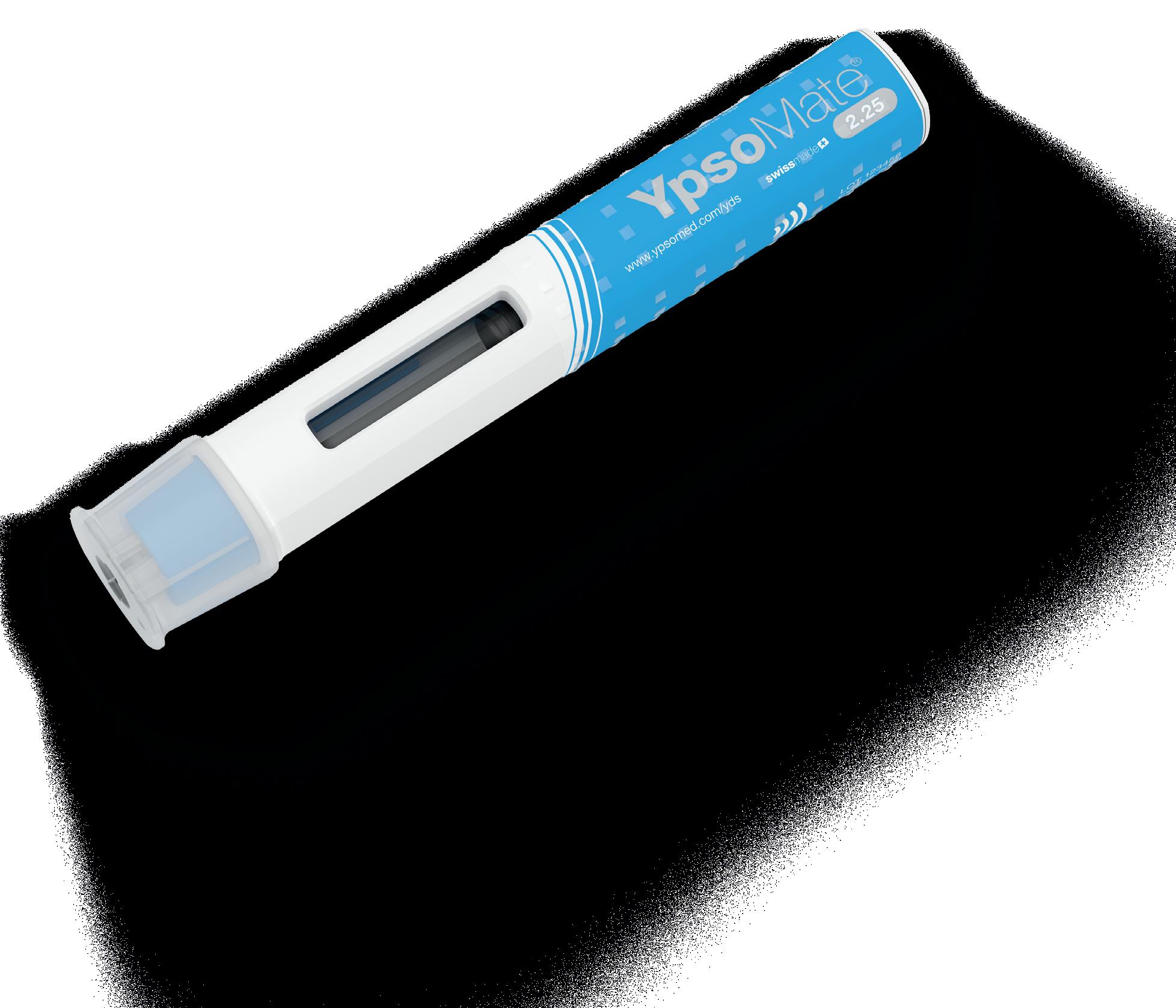
“The YpsoMate 2.25 has been optimised to further enhance patient comfort and ease of use.”
Recognising these challenges, the YpsoMate 2.25 has been optimised to further enhance patient comfort and ease of use. Notably, the introduction of an 8 mm external length cannula allows for greater versatility in accommodating highviscosity formulations (Figure 3). The extension of the proven platform for the new cannulas includes the design of new autoinjector parts to accommodate the shorter 8 mm needle, the manufacture and qualification of the corresponding injection moulds, the adaptation of the automated assembly process and extensive technical testing of the new YpsoMate 2.25 configuration. The shorter needle length, combined with a thinner wall, significantly reduces the force required to inject the medication. This improvement not only speeds up the injection process but also allows higher viscosities to be delivered in the same time frame. These advancements offer tangible benefits to both patients and
healthcare providers, and the flexibility to choose between the 8 mm needle and the standard ½” needle offers pharmaceutical companies greater customisation options tailored to specific drug and patient needs. Recent research suggests that both high-volume and high-rate injections are feasible and tolerated. This has further accelerated the demand for innovative self-injection systems targeting that segment. Ypsomed is at the forefront of the development of large-volume handheld autoinjectors and on-body patch injectors that offer flexibility in injection volume and solution viscosity to meet the diverse needs of pharmaceutical companies and patients (Table 1, Figure 4). These devices not only facilitate self-administration of complex medications, but also shift the point of care from the hospital to the home, increasing patient autonomy and reducing healthcare costs.
Ypsomed’s comprehensive self-injection device platforms consist of autoinjectors for prefilled syringes in 1, 2.25 and 5.5 mL formats, disposable pens for 3 and 1.5 mL cartridges, reusable pen injectors and ready-to-use prefilled patch injectors for up to 10 mL volumes. Since 1984, Ypsomed has focused on the development and manufacture of innovative injection systems. Ypsomed is well equipped to tackle digital healthcare opportunities and has invested strategically in the development of connected solutions and therapy-agnostic digital device management services. The company leverages its in-house capabilities in mechanics, electronics, software and connectivity for the development of new devices and digital product systems. Ypsomed is ISO 13485 certified, and all its processes comply with design control and cGMP guidelines, with operational QA/QC experts on site at each location. Ypsomed’s US FDA-registered manufacturing facilities are regularly inspected by pharma customers and regulatory agencies and supply devices for global markets including the US, Europe, Japan, China and India.
1. Schneider A et al, “Hold the device against the skin: the impact of injection duration on user’s force for handheld autoinjectors.” Expert Opin Drug Deliv, 2020, Vol 17(2), pp 225–236.
2. Schneider A et al, “Autoinjectors for large-volume subcutaneous drug delivery: a review of current research and future directions.” Expert Opin Drug Del, 2023, Vol 20(2), pp 1–16.
3. Badkar AV et al, “Subcutaneous Delivery of High-Dose/ Volume Biologics: Current Status and Prospect for Future Advancements.” Drug Des Devel Ther, 2021, Vol 15, pp 159–170.
4. Lange J et al, “Formative Study on the Wearability and Usability of a Large-Volume Patch Injector.” Med Devices (Auckl), 2021, Vol 14, pp 363–377.
5. Woodley WD et al, “Clinical evaluation of large volume subcutaneous injection tissue effects, pain, and acceptability in healthy adults.” Clinical and Translational Science, 2022, Vol 15(1), pp 92–104.



6. “One Repatha Presentation Will Be Discontinued Next Month, Another in 2025,” AIS Health, AIS Health Radar on Specialty Pharmacy, 2024, Vol 49(1).
7. Schneider A et al, “Understanding patient preferences for handheld autoinjectors versus wearable large-volume injectors”. Expert Opin Drug Deliv, 2023, Vol 20(2), pp 271–283.
8. Pager A et al, “User experience for manual injection of 2 mL viscous solutions is enhanced by a new prefillable syringe with a staked 8 mm ultra-thin wall needle”. Expert Opin Drug Del, 2020, Vol 17(10), pp 1485–1498.
9. Doughty DV et al, “Understanding Subcutaneous Tissue Pressure for Engineering Injection Devices for Large-Volume Protein Delivery”. J Pharm Sci, 2016, Vol 105(7), pp 2105–2113.
10. Berteau C et al, “Evaluation of the impact of viscosity, injection volume, and injection flow rate on subcutaneous injection tolerance.” Med Devices (Auckl), 2015, Vol 8, pp 473–484.
Thomas Fontanellaz is the Category Lead of the YpsoMate 2.25 at Ypsomed Delivery Systems. He leads a group that drives customer customisation projects as well as the lifecycle management of the YpsoMate 2.25 franchise. Mr Fontanellaz has been with Ypsomed since 2017 in a number of roles in development, and marketing and sales, working with pharma and small biotech companies to develop and bring innovative self-injection systems to market. He is a trained electrician and studied mechanical engineering and business administration in Switzerland.
Reto Jost is Category Lead for Large Volume Injectors at Ypsomed Delivery Systems. He has been with Ypsomed since 2014 in various roles in product management and business development, working with pharmaceutical companies to develop innovative self-injection systems and bring them to market. Since 2018, his main focus has been on new product innovation, with a particular focus on large-volume injections. Reto holds an MSc in Mechanical Engineering from ETH Zurich (Switzerland) and a CAS in Business Administration from HES-SO (Fribourg, Switzerland). He has broad experience in medical devices, having worked in the industry since 2006.
Andreas Schneider, PhD, is Head of Innovation at Ypsomed Delivery Systems. He leads a group that drives innovation end to end, from insights to ideas to prototypes to proof-of-concept. The team's responsibilities range from market and technology intelligence to strategy and business development, engineering and technology, and digital innovation. Dr Schneider has published and presented extensively in the areas of innovation management and drug delivery. He holds a PhD in Innovation Management from ETH Zurich (Switzerland).




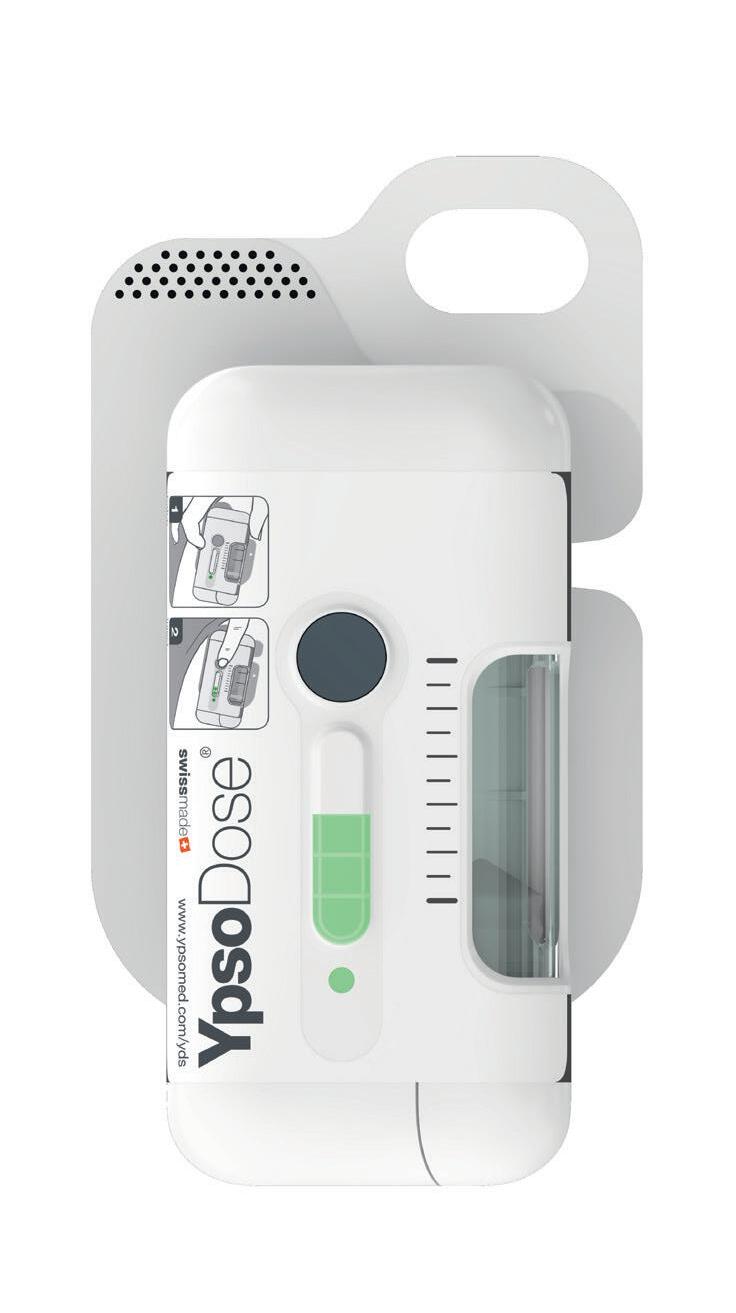
40 years of know-how and Swiss engineering expertise
Industrialised for clinical and commercial quantities
Reliable, innovative and patient-friendly solutions for volumes from 2–10 mL
Tackling the challenges of high-viscosities drug formulations with unmatched flexibility for pharma
End-to-end support, from development to market
For more information visit www.ypsomed.com/yds or scan the QR code
In this article, Chris Hurlstone, Director of Drug Delivery, at Team Consulting, looks at the increasing demand for novel injectable devices and summarises the areas we can expect to see significant development activities in injectable technologies.
Significant growth is predicted for many areas of the injectable drug delivery sector. Although small-molecule-based formulations dominate pharmaceutical innovator pipelines generally, the development of advanced biologics continues to be a major focus for injectables. Meanwhile others, such as the glucagon-like peptide-1 (GLP-1) blockbusters, are making headlines and impacting supply chains. In terms of therapy areas, many pharma companies are targeting oncology, immunology and cardiovascular fields, with cell and gene therapies becoming increasingly important. Given these predicted advances in drug formulation and other drivers, such as sustainability, where are novel injectable drug delivery devices currently headed?
DRIVERS AND CHALLENGES FOR NEW INJECTION DEVICES
Novel device development is rarely a company’s first choice for a variety of reasons. In the injectables sector, formulators will often target 1 mL subcutaneous delivery or similar where possible, as this is an area already well served by existing devices that are well understood by manufacturers, regulators and users.
However, there is an ongoing and potentially increasing demand for novel devices, driven by many different factors, including servicing of niche markets, such as emergency use. Much of the activity can be attributed to three particular areas:
• Meeting the needs of at-home users, moving treatment out of the clinic and into the home
• Finding ways to add value and improve usability while meeting the demands of cost and carbon footprint reduction
• Targeted drug delivery, for example, direct to organ/tumour.
MOVING FROM CLINIC TO HOME – THE NEED FOR LARGER-VOLUME AND/OR HIGHER-VISCOSITY
Healthcare systems are increasingly looking to move injection-based treatments from the clinic, currently often administered via intravenous infusion, to the home. In this endeavour, they may turn to delivery systems such as syringe pumps and ambulatory pumps, which are currently undergoing development either as new devices or through the lifecycle management of existing technologies.


Chris Hurlstone
Director of Drug Delivery
T: +44 (0)1799 532 700
E: chris.hurlstone@ team-consulting.com
Team Consulting
Abbey Barns
Duxford Road
Ickleton Cambridge CB10 1SX
United Kingdom
www.team-consulting.com
“Biologic drugs often also result in the need for injections either of larger volume or higher viscosity, due to the large-molecule nature of their formulation.”
Another solution – for lower costs and improved usability – is to move to a subcutaneous injection, via an autoinjector or on-body delivery system, such as a patch pump. The challenge here is that reformulating large infusion volumes down to something that can be delivered subcutaneously will, in many cases, result in dosages of a volume and or viscosity that exceeds the capability of current devices.
At the same time, biologic drugs, which currently account for 80–90% of injectable drugs in development, often also result in the need for injections of either larger volume or higher viscosity, due to the large-molecule nature of their formulations.
The combined result is an increasing need for new devices that push the boundaries of what handheld autoinjectors can deliver, from a user, device and primary packaging perspective. Many companies are working in this area, with two examples of device technologies being Ypsomed’s (Burgdorf, Switzerland) Ypsomate 5.5 and SHL’s (Zug, Switzerland) Bertha (Figure 1).
The Ypsomate 5.5 is available in several configurations and can deliver up to 5.5 mL of drug. The device maintains many aspects of the now industry standard approach, such as overall form and aspect ratio, mode of operation (remove cap, press and hold), inspection window, plus visual and audible indicators. It also uses a prefilled syringe as the primary packaging with a staked needle. However, it is significantly larger than the 2.25 mL device, and a 5.5 mL injection may require an injection time of up to 60 seconds, twice as long as that for the 2.25 mL device. To support the user in achieving this, the device features continuous visual and audible feedback, as opposed to just start and end clicks. The Ypsomed device can also deliver higher viscosities, helping to meet the demand for large-molecule formulation delivery.
Although not able to deliver as high volumes as Ypsomate 5.5, SHL’s Bertha can deliver formulations of 60 cP. The increased forces to achieve this performance, with delivery times of no more than 15 seconds, put more loading on the device and the primary packaging, thus requiring significantly increased mechanical robustness. Although delivery can be achieved in under 15 seconds, the device also features continuous visual and audible feedback to the user.
These systems, among others, are examples of how significant new innovations in device design and engineering are required to extend delivery capability. As performance boundaries and manufacturing methods are pushed to new limits, extra effort is needed to ensure that technologies achieve the necessary levels of robustness and reliability.

Figure 2: Squaring the current circle of industry trade-offs.
There has also been much activity on pump technologies in recent years and several have reached late stages of development. Apart from in the diabetes sector, however, only a few have secured regulatory approval and been made commercially available. However, these device technologies offer opportunities for the delivery of higher-volume and higherviscosity payloads, so will continue to be a focus of much activity and interest. Which succeed and which fall by the wayside will be interesting to see.
One of the challenges habitually faced by organisations developing new technologies to meet increasing demands is how to find the best trade-off between key constraints. Recent emphasis on the potential value of digital tools and device connectivity, set against the increasing focus on sustainable technology solutions, have resulted in a new spin on this trade-off assessment (Figure 2).
How can you provide the potential benefits of connected systems to the user, the commercial manufacturer and healthcare systems in general, while also meeting potentially conflicting demands of cost and sustainability, all while ensuring that usability is optimised?
This is one of the key questions facing the industry, with different approaches currently being taken to resolve the complex relationships between these opportunities and challenges (Figure 3). The following are some of the options currently being explored in the industry.
Option 1 – Develop Systems With Reusable/Durable and Disposable Elements Splitting an injection platform into a “retained”, “reusable” or “durable” element, which incorporates the drive system and much of the caseworks and user interface, can transfer cost and carbon footprint into a separate subassembly that can be used multiple times. For organisations wishing to add value through device connectivity and digital tools, the overheads of achieving this can effectively be amortised across multiple uses.
Challenges include how to retain equivalent ease of use for a system that now requires additional user steps, and how to ensure longer-term reliability of a retained multi-use system. It must also be recognised that quite a significant proportion of cost and carbon footprint of such an autoinjector system remains in the disposable primary packaging sub-assembly, so potential savings should not be over-estimated.
Examples of this approach include electro-mechanical platforms from UCB (Ava connect®), Phillips Medisize (Aria), Pfizer/PHC (Smartclic®) and SHL’s very recently announced Elexy™. Purely
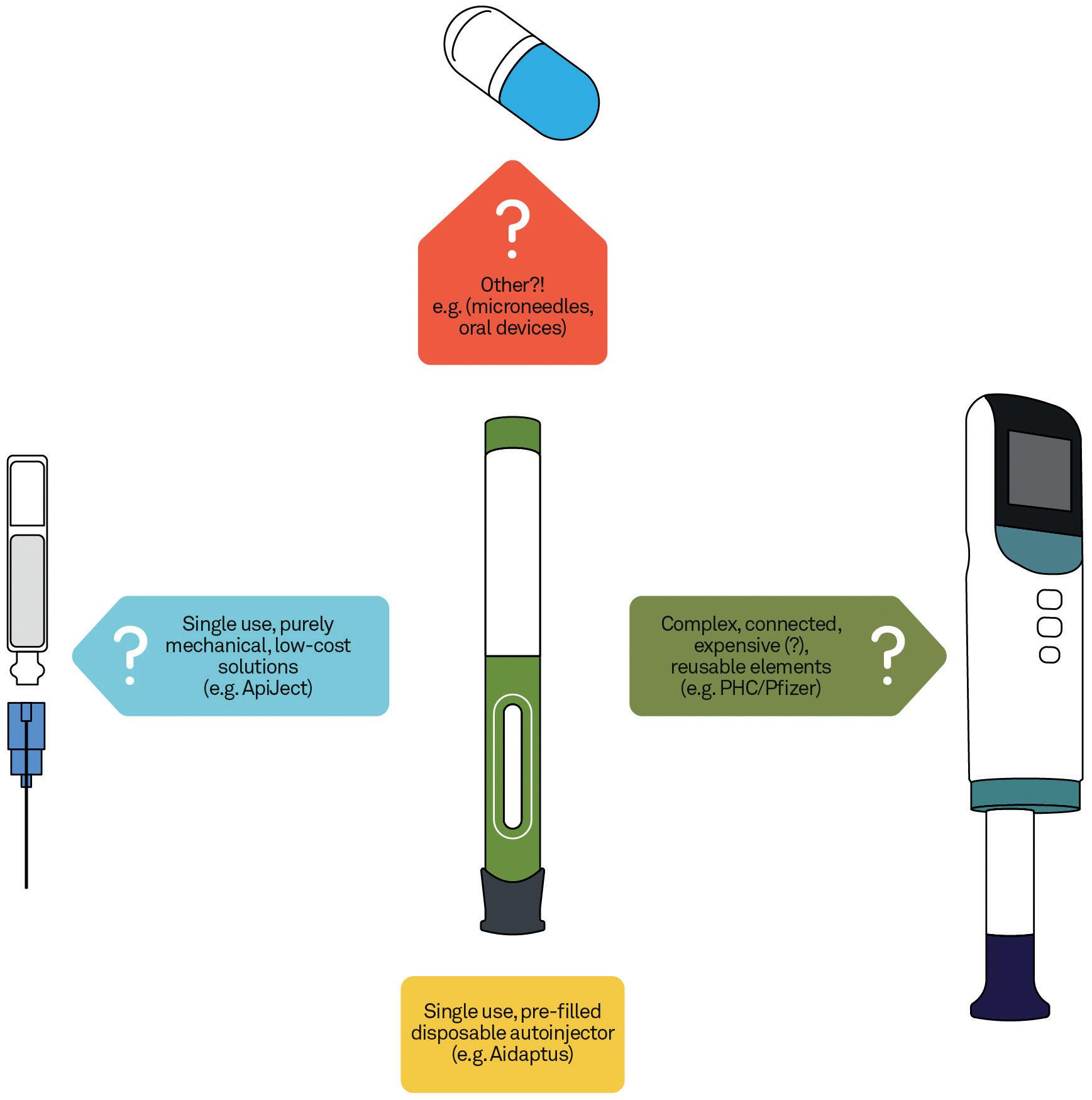
mechanical takes on this approach, which forego the connectivity aspects, can challenge cost and carbon footprint even more strongly, but with potentially less added value. New examples of these are expected to appear in the near future.
From a connectivity perspective, challenges over data capture and handling also present a barrier. Efforts to resolve these challenges will continue but, in the meantime, opportunities to use other digital tools and approaches are being developed, for example, through the use of smart labelling and packaging, sometimes linking to mobile apps and website support materials. These could be equally well applied to purely mechanical device solutions.
“From a connectivity perspective, challenges over data capture and handling also present a barrier.”
Option 2 – Keep the Vision Simple
Rather than moving to more complex device solutions, an alternative approach is to keep the device vision as simple as possible, rejecting potential value-add through additional functionality to focus on the best solution to a particular constraint.
One example is the ApiJect single-dose injection device (ApiJect Systems, CT, US) which is based on the use of well-established blow-fill-seal manufacturing technology in a new application. This approach provides clear and significant benefits in terms of cost and carbon footprint, with the acceptance that it will not be able to offer connectivity. The company has also worked to demonstrate usability, for healthcare providers if not for self-administering patients. Challenges could remain in this area, as well as in the demonstration of drug stability (including under high processing temperatures) for a primary packaging that is novel to many applications.
Another example of a “simple” device vision is the Eco-inject® autoinjector (Eco-inject, London, UK), which stays much closer to the well-established and accepted autoinjector product format but
“Radically different approaches to established autoinjector technologies are numerous, with some more established than others.”
is manufactured from 100% bio-based polymers. To achieve greater sustainability, this approach does not provide connectivity benefits and perhaps relies to some extent on an acceptance of “softer” compromises in performance (feel, robustness) and a dependence on an as yet unproven material supply.
Radically different approaches to standard autoinjector technologies are numerous, with some better established than others. One example is the use of micro-needle arrays and patches, the technology and manufacture of which are quite well proven but for which payload limitations may be a major constraint. Alternatively, more novel approaches, such as the oral delivery platforms being developed by companies like Biora (CA, US) and Lyndra Therapeutics (MA, US), could offer significant cost and sustainability savings, if proven to be effective and suitable for industrialisation and commercialisation.
The current prediction is that the more radical solutions mentioned here, which offer real advantages in terms of cost and carbon footprint, are less likely to succeed. This is because of some technical challenges that need to be overcome, as well as the risk-averse nature of the industry. However, if there was a strong increase in regulatory pressure to reduce the environmental impact of drug delivery devices, this could shift the balance of these trade-offs.
A significant new area of device innovation, which is being largely driven by developments in both oncology and cell and gene therapies, is that of drug delivery direct to physical target sites in the body, such as organs, tissues and tumours. The need for this innovation is due to several key factors.
Firstly, many target sites are difficult to get to, both in terms of physical access but also due to the need for accurate navigation and positioning in highly variable and personalised environments. Surgical robots can sometimes be used for such delivery techniques but, for various reasons, the best opportunity for innovation may be in standalone delivery devices that can be deployed more broadly and flexibly, for example, through the use of standard laparoscopic methods. Various types of guidance systems that make use of a range of imaging and navigation tools are also often required.
Another reason why one-size-fits-all device solutions are unlikely is the huge variation in payload that such systems often need to deliver, both in terms of dose volumes – which can range from 1–2 mL to 200–300 mL, but also the drug’s physical characteristics, such as viscosity, single/ multi-phase, sensitivity (e.g. to temperature, to shear) and stability.
Controlling distribution and retention within the target site is also critical to ensure that the necessary amount of drug is delivered but also, in some cases, to ensure that neighbouring non-target tissue is not at risk of damage or contamination. Given the huge range of tumour and organ types, this again points to a need for bespoke solutions, alongside the need to fully understand tissue characteristics. This can be very challenging and is best approached through a combination of experimental and analytical methods.
One specific area of interest and opportunity is that of ocular delivery, for example, for gene therapy through the
implantation of drugs and drug delivery devices. Although well established as a delivery route, new devices and procedures for intravitreal, subretinal and suprachoroidal delivery are a focus for many organisations. The use of microneedles, including positioning and depth, is critical to deliver to the targeted retinal or subretinal layer.
These and other challenges, such as the need to ensure that delivery technology can be deployed across a wide range of varying healthcare settings, mean that it is critical to begin device developments very early, alongside the development of the formulation. This is frequently the case but not always appreciated.
This article has summarised a number of different areas where the industry can expect to see significant development activities in injectable technologies over the coming months and years. While the industry has
a reputation for being slow moving and risk averse, frequently for understandable reasons – such as the need to ensure patient safety and conform to regulatory requirements – the opportunities for success are clearly there for organisations willing and able to move quickly and decisively.
Team Consulting is a drug delivery technology design and development partner. For over 38 years, the company has helped its clients create elegant, sustainable solutions to complex healthcare challenges. Team Consulting’s multidisciplinary team of experts bring a unique blend of human-centred design, engineering, science and regulatory expertise to every project, with an unparalleled track record in drug delivery technology development. Working with organisations ranging from leading pharma companies to emerging start-ups, Team Consulting empowers its clients to create high-quality products that improve patient lives
Chris Hurlstone, Director of Drug Delivery, has more than 30 years of experience in developing technologies and devices for healthcare markets, with a particular focus on drug delivery systems. He has successfully brought products to market in technical lead and project management roles, including inhalers, injectors and surgical delivery systems. A named inventor on numerous patents, Mr Hurlstone has a strong track record in delivering innovative and robust engineering solutions. He is a regular contributor at key industry conferences and is also a member of the ISO TC84 standards committee covering devices for administration of medicinal products and catheters.

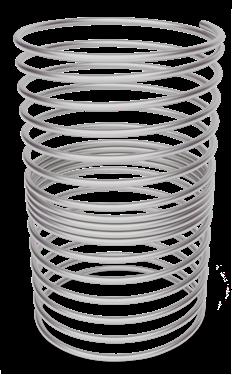
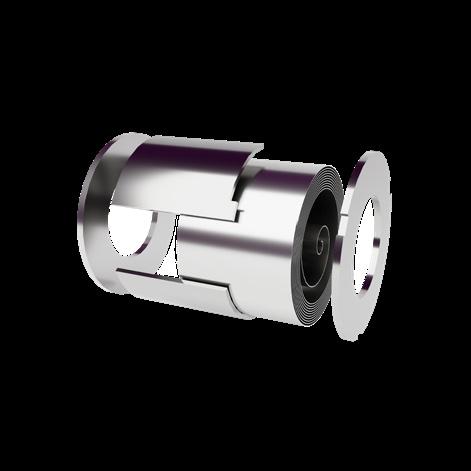






In this roundtable discussion chaired by ONdrugDelivery’s Guy Furness, Stephen M Perry and Mathias Romacker, Kymanox, and Andreas Schneider, PhD, Ypsomed, tackle the subject of GLP-1s and related obesity-targeted injectable therapeutics and the enormous impact they are having and are expected still to have on drug delivery and the wider pharmaceutical sector. The insightful and wide-ranging discussion touches on various aspects from the transformative potential these drugs could have on patients’ lives, through the relative lack of digital connectivity in the GLP-1 pipeline, to the potential benefits, risks and pitfalls that the sheer scale of the GLP-1 and obesity market could pose to pharma.



Stephen M Perry, Chief Executive Officer and Founder of Kymanox, is an accomplished life sciences business leader with nearly three decades of experience. Mr Perry has participated in the US FDA commercial approval of over two dozen unique drugs, devices, biologics and combination products. In 2004, he created Kymanox, a professional services firm specialising in the development and commercialisation of modern medicines. Prior to this, he held roles at M+W Group, Abbott Laboratories, FujiFilm Diosynth Biotechnologies and Human Genome Sciences. He holds a Bachelor’s degree in chemical engineering from the University of Notre Dame (IN, US).
Mathias Romacker is a Kymanox Executive Advisor with more than 30 years of experience in the field of injectable drug delivery devices. He brings a deep understanding of prefilled syringes, handheld injection devices and on-body wearable devices, having been involved in multiple successful combination product launches. Mr Romacker was a co-chair for the PDA Universe of Pre-Filled Syringes and Injection Devices conference in 2013, 2017, 2019 and 2022, and received the PDA Edward Smith Packaging Science Award in 2018 for his contributions over the years.
Andreas Schneider, PhD, is Head of Innovation at Ypsomed Delivery Systems. He leads a group that drives innovation end to end, from insights to ideas to prototypes to proof-of-concept. The team’s responsibilities range from market and technology intelligence to strategy and business development, engineering and technology, and digital innovation. Dr Schneider has published and presented extensively in the areas of innovation management and drug delivery. He holds a PhD in Innovation Management from ETH Zurich (Switzerland).
To kick us off, Stephen, can you follow up on how things have progressed with regard to GLP-1s since your keynote address at last year’s PDA Universe of Pre-Filled Syringes conference?
So, for that keynote, I outlined that we have US$125 billion (£95 billion) disruptor in the form of GLP-1s entering the market. This is unprecedented – we haven’t seen any product or class of products like that before. At a minimum, we’re going to need reusable dose delivery systems for it, particularly from the environmental, cost and convenience standpoints. And, building from the main theme of that keynote, we can draw a strong parallel here with between GLP-1s and diabetes treatment with insulin. The first insulin pen was vastly ahead of its time – it was a cartridge system, it was reusable and you could dial in the dose;
GLP-1s will evolve to a similar platform, with a scale or impedance body scan acting as the diagnostic analogue to glucose monitoring.
One of the disruptions we’ve seen as a consequence of GLP-1s has been large pharma companies securing their own supply chain. The clearest example of this is the purchase of Catalent, specifically for a GLP-1 manufacturer’s exclusive use.
Another thing that’s been disruptive is the data that’s regularly being released indicating that GLP-1s are actually bending the mortality curve – they’re not only solving for obesity, they’re potentially solving for cancer, heart disease and a myriad of other life-shortening indications. Orthopaedic surgeons are changing their forecasts for knee and hip replacements because so many more people who had to lose, say, 50 lb (23 kg) before it was safe to proceed with surgery are successfully achieving the weight loss;
in other cases, people are losing weight before joint damage accumulates to a point where surgery becomes necessary.
We’ve gone from a situation where patients were opting out of elective surgeries that could greatly improve their quality of life because their obesity means their odds of dying on the operating table are unacceptably high, to one where they can shed that weight with GLP-1s, something they might not be able to do any other way, so their surgery becomes feasible and they’ve got a real pathway to getting their lives back.
Going back to the diabetes comparison, there’s also the digital health side of the equation – something diabetes has mastered. I think something similar is going to happen with GLP-1s. My anticipation is that we’ll see advanced, connected dose delivery systems that intersect with the wellbeing industry because obesity goes beyond just treatment with the drug.
The next key point is how the supply chain impacts patients’ lives. For example, I’ve spoken with one person who has several active prescriptions to ensure they have access; including getting the drug in a vial format. They then have to buy their own syringes and inject themselves manually. There’s no autoinjector, which is a problem for needlestick injuries and a wide variety of failure modes.
However, it’s important to appreciate just how transformative these drugs are. I’ve been speaking with about two dozen GLP-1 users, and the difference it’s made to their lives is astonishing. It goes beyond just weight loss, it affects every aspect of their lives in a significant and positive way. I don’t think the media or the people inside the life science industry really understand how big this is yet. I think it’s so much bigger than people are estimating at present –when you stack all the benefits of GLP-1s, we are seeing the mortality curve bend in real-time and completely change the insurance actuary tables.
The last key thing to state up front is the scale of use. Morgan Stanley has predicted that, by 2035, nearly one in 10 Americans are going to be on a GLP-1. As things stand, that could bankrupt US healthcare, absent some changes. We’re looking at a trillion-dollar hit on the healthcare system in that scenario, and I’m not convinced that we’re prepared for that. All of this would have ramifications beyond healthcare. If you’ve got almost 10% of Americans on GLP-1s and their caloric intake goes from 3,000–4,000 calories a day down to 2,000 calories a day, that’s going to have a massive impact on the food and beverage industry.
QAndreas, taking a step back and looking at the industry behind this, what’s going on in terms of the obesity-targeted pharmaceutical pipelines for GLP-1s and beyond?
ASIn short, it’s mind-blowing. We’ve done some systematic analysis into how many clinical-stage drug products are there and how the clinical trial landscape is looking. We estimate that there are well north of 100 drug candidates on the way, not counting biosimilars. While a significant number are, of course, injectables, we’re seeing a number of formats, including intravenous infusions, implants and, of course, orals. The pipeline currently spans multiple different routes of administration.
I think what’s also interesting to see is that it’s not just the western big pharma companies driving innovation; many of these new drug candidates are coming from small biotechs and, also, from Chinese companies. It’s very vibrant and it’s exciting to see innovation coming from across the globe beyond the usual big pharma companies.
Right now, innovations are targeted at improving weight loss. So, if we’re currently working with a 20–25% reduction in body weight in a year, the question is how quickly can we push it to 30%? It’s about attaining higher potency in order to increase the effective weight loss and to reach higher efficacy at an earlier time point so that patients lose more weight more quickly. However, with rapid weight loss comes the question of whether we are losing the “right” weight – fat loss or muscle loss. For example, it is becoming increasingly important to limit muscle loss through concomitant treatments that promote muscle growth.
Secondly, I think innovators are investigating tolerability. There are side-effects of GLP-1s that could theoretically be overcome by adding certain additional drugs on top. For example, you can try to address the gastrointestinal and other side effects with amylin, glucagon or gastric inhibitory polypeptide receptors (GIPRs), among others.
Then, of course, there’s improving convenience – there are companies trying to formulate an effective oral dosage, which are often seen as more convenient. However, we’re also seeing developers looking to improve convenience by changing injection frequencies. For example, Amgen has a late-stage Phase II asset (AMG133, a dual GLP-1 agonist and GIPR antagonist) looking into monthly injections versus weekly – today’s dominant dosing regimen – most likely in a convenient autoinjector format.
To add to that, one of the things I think is notable by its absence is digital connectivity –there are several products in the pipeline and few to none of them are connected. Considering that one of the biggest issues facing healthcare right now is low adherence, and GLP-1s are the sort of drug where poor adherence can derail the entire therapy, you’d think that the benefits to adherence offered by connectivity would be a natural fit. We shouldn’t be shocked by this. Humira’s number one failure mode is non-adherence, and now we have a dozen generic competitors approved with none of them using a connected device to solve that problem. When you have to take a medicine for a certain number of months at a minimum to see an effect, you want to ensure that patients are taking it properly.
That’s a good point. Personally, I think that connectivity is likely to come at some point but it’s probably a little bit further out, after the sector has matured more. After all, to add to the adherence aspect, GLP-1s are expensive, so healthcare systems are going to want to hold patients accountable for taking the drug and ensuring that the cost pays off. How do you do that? Either you need to believe patient self-reporting or you need to have a tracking mechanism, which would almost certainly be digital.
QMathias, Andreas mentioned that oral forms of GLP-1s are currently in the pipeline, do you think these are likely to pose a threat to the injectable share of the market?
MR
The big open question is what oral forms will be like when they arrive – whether they’re a threat to the injectable share of the market will largely depend on whether they’re a positive thing for patients. From my research on the situation, I’d say it’s currently all over the place. The big factor is likely to be how fast the weight loss actually happens with oral formats compared with their injectable counterparts. That’s important, because GLP-1s require lifestyle changes alongside the actual therapy. It’s even on the label – exercise and dietary
“Giving patients a way to tune their dose to their needs seems to me to be the natural way to achieve the best therapeutic outcomes.” – SMP
changes. From what I’ve seen so far, it seems that the weight loss takes quite a lot longer than with the injectables, although we’re still very early on with the oral forms so that could change.
Beyond that, I think that we should question the common assumption that, if you have an oral dosage form, that it’s automatically better in terms of adherence than an injectable. In my experience, if you have a monthly injection, you’re probably going to remember it, but, if you have a daily or twice-daily pill, it’s easier to forget when things are busy or something else demands your attention. In some cases missing a dose here and there isn’t a big deal, but we don’t know that for sure with GLP-1s. In my opinion, oral forms may not be the holy grail the industry sometimes thinks they are.
ASGoing by the data that I’m aware of, injectables are comparing favourably with orals in terms of efficacy at present. Currently, the injectables are pushing towards 20–25% weight loss after a year, whereas the oral formats are in the range of 10–15% so far – we’ll have to wait and see how they perform once we have data on longer timescales. Our estimate is that oral formats will take around 20–30% of the market in the mid- to long-term, meaning there’s still a significant share for injectables. Add to that the expected growth in this sector, and I wouldn’t describe injectables as losing out. Consider, for example, that oral formulations of GLP-1 peptides such as semaglutide require many times the amount of API compared with injectable formulations. Given the current shortage in the supply chain, going oral does not seem to be the most efficient way to serve the exploding market.
To add to Mathias’s point, in a study on patient preferences for GLP-1s in Type 2 diabetes comparing a once-weekly injection with a once-daily oral alternative, patients clearly preferred oral over injectables initially but, once they studied the product-specific administration procedures in detail, the preference became much less clear-cut. I would expect the same pattern to emerge for GLP-1s in obesity, where you have one segment the market that is effectively managed with and/or prefers an oral dose over injectables and another where that’s not the case. We also do not expect fundamental differences in pricing between injectable and oral forms; we currently assume a “price per day of therapy” – with increasing cost pressures for all forms of therapy.
QEarlier, Stephen pointed out that the GLP-1 market is set to be unprecedentedly large. Andreas, from the device side, how do you expect companies like Ypsomed to adapt to service the need for delivery devices suited to GLP-1s?
ASIn my opinion, the challenge is twofold. Firstly, how can we serve the market in terms of innovating and ramping up production capacity along the entire supply chain – including primary containers, fill-finish and final assembly – to meet demand? And secondly, how do we think the market is going to evolve and what device presentations are going to become the dominant ones?
That second challenge is especially interesting as, currently, GLP-1s are among the first products that are being commercialised in both syringe- and cartridge-based formats. That’s going to create some additional trade-offs and decisions need to be made for the future with regard to which formats are going to serve which markets. There’s also a question around sustainability and environmental impact – given the sheer size of the market, the number of devices being used is enormous. Today there are over a hundred million devices serving the market, and that’s only going to multiply in the years to come, so we need to carefully consider the sustainability of any product we put out there; for example, the difference in sustainability between a single-dose syringe-based autoinjector and a prefilled cartridge-based pen injector containing four doses is significant – it really adds up at this scale.
I have a vision on how the device aspect of GLP-1s should work, which I alluded to at the end of last year’s keynote in Sweden. It could work just like insulin. With diabetes, patients have a cartridge-based pen injector where they can dial in their dose at the time that is most appropriate to them – it’s essentially personalised medicine. Weight loss is incredibly hard, so giving patients a way to tune their dose to their needs seems to me to be the natural way to achieve the best therapeutic outcomes. For example, if the label gives a dosage for a once-a-week injection, but a patient is finding that, on day five, the cookie on the counter is calling to them, that’s the ideal opportunity for an app-controlled dosing level and frequency. Most GLP-1 patients quit their injections due to side effects in the first couple of weeks and months; by dialing in a dosing scheme for both the amount and schedule, those side effects could be greatly minimised. Empowering patients to deal with their individual situations will increase the overall efficacy of the product, optimising it for the individual and, ultimately, the plan sponsors who are authorising and paying for the drug access.
QRisk management is a huge part of the pharma and drug delivery industries. With a technology as disruptive to the market as GLP-1s, what do you consider to be the key pitfalls and risks that we need to watch out for?
MRObviously, there’s a huge amount of enthusiasm for GLP-1s out there right now. One risk is that the industry may end up overinvesting in that space and, in effect, neglect other projects, potentially missing out on opportunities in other therapeutic areas. I think there are significant business development opportunities to be found in underserved disease areas and, if GLP-1s suck up all the oxygen in the room, pharma will be failing both itself and those patients.
There are also concerns around pricing. Considering just how widespread the use of GLP-1s is expected to be, I’d expect there to be a lot of pressure around this topic. I have wondered if,
“There are also concerns around pricing. Considering just how widespread the use of GLP-1s is expected to be, I’d expect there to be a lot of pressure.” – MR
should GLP-1 pricing become a major topic of public debate, that pressure could then be extended into other therapeutic areas if legislators are forced to respond? It’s only a possibility, but I think it’s something that should be in the conversation.
It’s also important to consider that some GLP-1s are imminently about to come off patent, so we can expect to see a rapid transition to biosimilars to meet demand in many cases. And, when there are large populations taking a drug for long periods, there’s always a risk that an unexpected side-effect could be detected that creates a concern about safety. Such a safety signal would change the dynamics significantly – it could completely change the public mood around these drugs.
We also have to be mindful of supply chain risks, taking macroeconomic and geopolitical risks that could significantly impact the market. We need to rely on networks of contract manufacturers and really make sure our supply chains are robust all the way down to the component suppliers just to be able to handle the fluctuations we expect to see in today’s world. There’s already a shortage problem and rationing going on, so these supply-chain disruptions will make a bad situation worse.
On top of that you have the risks around pricing we mentioned before. With the scale of GLP-1 use we’re expecting, there will be political pressure to direct pricing, with the public putting pressure on governments to keep prices low, as happened with insulin in the US. There’s also the issue of counterfeiting which can play into this. And, of course, if the price of the end product is pushed lower, that’s going to have implications for the supply chain in turn. There are a lot of interconnected factors here that need to be carefully thought through by everyone in the space.
QMathias, you’re scheduled to deliver a talk on this topic at the PDA Universe of Pre-Filled Syringes conference in Phoenix later this month. Please could you give ONdrugDelivery’s readers a sneak preview of what to expect?
MRThe title is, “The Disruption Potential of New Injectable Anti-Obesity Therapies on Drug Delivery and Beyond”. We’ve already touched on quite a few of the aspects I’ll be covering in this interview. Let’s start with the expectation that we are going to have 30 million patients on those drugs in the US. That’s a whopping 9% of the population. However, when looking at numbers for 2030, almost half of Americans are projected to be obese. So, this is a huge market but, even then, it’s not reaching the majority of people who may potentially benefit from it.
What I also find fascinating is the impact we’re expecting to see on other sectors. The potential impact on the food and beverage industries, for example. But it extends beyond that to things like restaurant dining, retailers and the wellness and fitness industry –exercise is on the label, so we can expect to see a knock-on effect in gyms, for example. I think a lot of other areas will be impacted by knock-on effects, including some we haven’t thought of yet.
And then there’s the drug delivery landscape. First of all, when you do the maths that 30 million patients in the US, if they’re all taking an injectable, that’s over a billion injections a year. That’s a lot of prefilled syringes and autoinjectors that will be discarded. So, clearly, we have to talk about sustainability and the potential for reusable injectors. We should also consider multi-dose injectors, such as a cartridge-based device that can deliver four doses from one device. That topic on its own could be a whole second interview!
QAndreas, you’re also presenting at PDA Universe, could you give us some insight into what you’ll be discussing as well?
ASOne thing I want to discuss is how, in light of drug shortages and capacity ramp up, we’ve tended to neglect to explore what is it that the patients are asking for. A lot of the discussions happening in pharma are being driven by the supremacy of supply chain, with the primary concern being simply getting things onto the market. What we’ve done at Ypsomed is conduct an extensive online survey with over 400 patients, asking them about their preferences and perspectives on four delivery device archetypes – syringe-based versus cartridge-based and reusable versus prefilled.
With this survey we’ve looked into different geographies such as the US, UK, Germany and Switzerland and into different target populations, such as varying BMI, co-morbidities and injection experience. With that, we’ve tried to discern what patients would ask for if they had the choice. Considering the competitive pressure we’re expecting in the GLP-1 space, understanding true patient preferences is going to be critical to success.
Kymanox is a life sciences professional services organisation that offers engineering, scientific and compliance support to companies exclusively in the biotechnology, pharmaceutical, medical device and combination product industries throughout the product lifecycle from early development to post-market.
Ypsomed is a developer and manufacturer of injection and infusion systems for self-medication, and a specialist in diabetes. The company’s comprehensive self-injection device platforms consist of autoinjectors for prefilled syringes in 1 mL, 2.25 mL and 5.5 mL formats, disposable pens for 3 mL and 1.5 mL cartridges, reusable pen injectors and ready-to-use prefilled patch injectors for up to 10 mL volumes. The company leverages its in-house capabilities in mechanics, electronics, software and connectivity for the development of new devices and digital product systems.
Stephen M Perry
Chief Executive Office & Founder
T: +1 919 246 4896
E: stephen.perry@kymanox.com
Mathias Romacker
Executive Advisor
T: +1 805 304 5843
E: mathias.romacker@ kymanox.com
Kymanox 430 Davis Drive Suite 300 Morrisville NC 27560–6802
United States
www.kymanox.com
Dr Andreas Schneider Head of Innovation
Delivery Systems
T: +41 34 424 3206
E: andreas.schneider@ ypsomed.com
Ypsomed AG
Brunnmattstrasse 6 CH-3401 Burgdorf
Switzerland
www.ypsomed.com/yds
22-23 OCTOBER | PHOENIX, AZ | #PDAups
This conference is the premier event for professionals in the pharmaceutical, biotech, and medical device industries. Whether you’re involved in R&D, manufacturing, quality, regulatory affairs, or marketing, gain invaluable knowledge and strategies to advance your injectable drug delivery programs.
The exhibit hall presents cutting-edge solutions from 120+ companies and an empowering venue to learn, connect with peers, and meet potential new collaborators and partners.
This peer curated conference promises an unparalleled lineup of expert speakers and thought-provoking plenary sessions:
Regulatory Landscapes and Strategies for Combination Products
• Desiree Crisolo, Sr. Director, Head of Global Regulatory CMC Policy and Intelligence, Biogen
• Andrea Redd, Associate Vice-President, Global Regulatory Affairs, Drug Delivery and Combination Products, Eli Lilly and Company
Current Opportunities and Challenges with Large Volume Injections – Market Overview and Delivery Options with Focus on Injection Tolerability and Pain
• Phil Green, PhD, President, Chesapeake Pharma
• David W. Kang, Director, Innovation, Halozyme, Inc.
• Galen Shi, PhD, Vice President of Delivery Devices, Eli Lilly and Company
Drug Delivery Platforms – Compare and Contrast Device and Pharma Perspectives
• Jakob Lange, PhD, VP & Head of Account and Business Development, Ypsomed AG
• Bart E. Burgess, Global Head, Portfolio Strategy and Customer Solutions, SHL Medical AG
• Ronald Forster, PhD, Executive Director, Amgen Inc.
• Jeffrey Givand, PhD, Executive Director, Device and Combination Product Development, Merck & Co., Inc.
How Cross-Industry Collaboration Can Boost Sustainability
• Serkan Oray, PhD, Vice President, Head of Device, Packaging, and Wearable Technologies, UCB Pharma
• Cedric Gysel, Senior Manager Sustainable Solutions, Johnson & Johnson
There’s More!
• Combination Products Workshop 24-25 October
This hands-on workshop is the preeminent immersion for guiding you through the entire lifecycle of combination products and medical devices, with a focus on critical development activities.
• Training 21 and 24 October
• Drug Delivery Device and Combination Product Risk Management and Safety Assurance Cases
• The Manufacture of Sterile Pharmaceutical Products Using Blow-Fill-Seal Technology
• Assessing Packaging and Processing Extractables/Leachables
• Understanding Container Options and User Needs for Syringes, Cartridge Containers, Wearables, and Drug Delivery Systems
Visit pda.org/ups2024 to learn more and register for the main conference, workshop, and training courses.
In this article, Enrico Barichello, Product Manager, Syringe Platform, and Carlo Valbonesi, Human Factors Engineer, both at Stevanato Group, discuss the need to harmonise the formulation parameters with patient convenience and comfort for injections, and demonstrate how the company has solved this issue through innovation in injector components.
As the development of injectable drugs has continued to push boundaries, new challenges have arisen when it comes to their delivery. In each case, the specific requirements for administering an injection must be harmonised with the particular physico-chemical parameters of the formulation if, together, they are to deliver the efficacy and safety required, while also supporting convenience, increasing comfort and promoting adherence.
These benefits are felt keenly by the increasing number of patients affected by chronic conditions. It is estimated that non-communicable diseases represent more than half of the global disease burden, with a third of the global adult population suffering from multiple chronic conditions.1
Given that regular subcutaneous (SC) injections are needed for the ongoing management of many of these conditions, any opportunity to alleviate the burden of injections is likely to be welcomed, particularly as a large proportion of patients associate the experience with discomfort, anxiety and even fear to varying degrees.2
While subjective, such feelings are, of course, entirely valid and must be taken seriously to avoid the risk of treatment avoidance or abandonment.
Potential solutions to this challenge include reducing injection frequency to minimise visits to clinical settings or enabling patients to self-administer their
“While the transition to an autoinjector offers greater freedom and control to patients, these devices are limited in terms of the maximum forces they can apply to power an injection.”
medications, possibly with the support of an autoinjector. These options bring several critical variables into play, however. For example, if the problem of injection frequency is solved by increasing the concentration of the dose, this can lead to an increase in the viscosity of the formulation. This could potentially exacerbate an existing problem for biologics, where viscosities are often already high, as it could lead to an extension of the injection time, negatively impacting the patient experience.
Furthermore, while the transition to an autoinjector offers greater freedom and control to patients, these devices are limited in terms of the maximum forces they can apply to power an injection, presenting a mechanical challenge for the delivery of more viscous drug products.

Enrico Barichello
Product Manager, Syringe Platform
T: +39 049 931 8111
E: enrico.barichello@stevanatogroup.com

Carlo Valbonesi
Human Factors Engineer
E: carlo.valbonesi@stevanatogroup.com
Stevanato Group
Via Molinella 17 35017 Piombino Dese Padova Italy
www.stevanatogroup.com
Increasing the physical size of the needle has the potential to alleviate the need for a higher injection force when delivering higher-viscosity formulations, but larger needle geometries have been associated with increased pain.3 Meanwhile, strategies to reduce injection frequency by increasing drug volume can lead to an unwanted increase in injection time or may not even be possible with an autoinjector, which typically delivers doses of ≤2 mL.
Stevanato Group has shown how this conundrum can be solved through innovation in injector components. This takes the form of the company’s 12.7 mm special thin-wall (sTW) needle, which maintains the traditional 12.7 mm needle length but features an optimised internal diameter to reduce the forces required when injecting high-viscosity formulations compared with a typical thin-wall (TW) needle. Crucially, this is achieved without increasing the external dimensions of the needle, which avoids increased pain.
Stevanato Group has also developed an 8 mm sTW needle, which features the same expanded internal diameter but with a reduced length. This further reduces the frictive potential of the needle, meaning the required injection force is further reduced. At the same time, the length of the needle has been designed to minimise the risk of accidental intramuscular delivery, which is a notable risk in patients such as children where the SC layer is thinner. With a shorter length and expanded internal diameter, the specifications of the needle enable the safe and effective delivery of high-viscosity formulations, as well as laboratory evaluation of break-loose extrusion has been undertaken to confirm the lower injection force.
A component’s performance can only be truly verified when it is assessed in realworld situations. Fundamentally, syringes are tools to be used by an individual and, while the technical parameters of each component must conform to precise physical specifications, they will, ultimately, be judged by the healthcare professionals (HCPs) and patients who directly interact with them – only they can decide whether a design truly delivers the intended benefits.
To answer this question, Stevanato Group conducted a rigorous human factors study comparing the performance of the new 8 mm sTW needle against the longer 12.7 mm sTW needle and the 12.7 mm TW needle, which features a slightly narrower internal
diameter. The study aimed to explore the perceptions of four stakeholder groups who would be tasked with performing injections: HCPs, caregivers (CGs), experienced selfinjecting patients (EXAPs) and inexperienced self-injecting patients (NAPs). Their assessments recorded the force required to push the plunger rod during injection, their confidence in the experience, whether they could perceive any difference between the needles and which needle they preferred.
The usability study paired the three needle variants with 2.25 mL syringes at injection viscosities of 10 and 30 cP.
A total of 43 participants were enrolled in the study across the four different stakeholder groups, each of which carried out simulated injections on an injection pad using all syringe samples, which were presented in a randomised order. Any errors or difficulties were noted independently, while the participants self-reported different attributes of the injection experience according to seven items on a Likert scale – each item measuring how an attribute was experienced. Feedback was provided on general ease of use as well as perceptions of ease relating to insertion of the needle, holding the syringe while performing the injection and pushing the plunger.
In addition, participants were asked to record their levels of anxiety and confidence in using the needles. Preferences across the syringe types and viscosities were indicated through the allocation of counters (Table 1).
In terms of overall preference, the 8 mm sTW needle was rated highest for both viscosities based on the total combined score of all participants in the four test groups.
Conversely, the 12.7 mm TW needle was the least preferred among all users, with universal agreement that the push force required was comparatively higher for this syringe variant.
Preference for the 8 mm sTW needle was particularly strong among the two patient groups, who noted the benefits of a lower push force and the shorter needle length, which was expected to enable a less painful self-injection. These two attributes together determined a higher confidence and acceptance for the 8 mm sTW needle among these participants.
The CGs ranked the 8 mm sTW and the 12.7 mm sTW options almost equally; their preference was split between the two needle lengths, with a primary focus on ease of push.
For the HCPs, meanwhile, the 12.7 mm sTW needle scored the highest preference rating. In feedback, this group cited the benefit of reduced injection force in line with other stakeholder groups, however, they also found the familiarity of the standard needle length appealing. This preference was strongly linked to the fact that they regularly use 12.7 mm needles during the course of their work and training. The HCPs acknowledged that their position could change on receipt of training regarding the use and benefits of a shorter 8 mm needle option, including being provided with the necessary assurances that the SC tissue can be reached in all types of patients despite the shorter length of needle.
Both patient groups had a more positive rating for the 8 mm sTW versus the 12.7 mm sTW at both viscosities for ease
Likert-item scoring range: 1=Very strongly disagree 2=Strongly disagree 3=Disagree 4=Neither disagree nor agree 5=Agree 6=Strongly agree 7=Very strongly agree
of push. Interestingly, the HCPs and GGs were more positive regarding “ease of push” for the 8 mm sTW than for the 12.7 mm sTW with the 30 cP (higher viscosity) injections, although this was not the case for the lower viscosity (10 cP).
At low viscosity, the ease of push between the 8 and 12.7 mm sTWs appeared almost equal for HCPs and CGs, with a more familiar needle (12.7 mm) contributing to a more positive rating, especially for CGs. However, as viscosity increases, the benefit of a shorter needle in reducing the required push force becomes more apparent, even to those who did not prefer the 8 mm needle at lower viscosities (Table 2).
In summary, the results of the study show that the expanded internal diameter of sTW needles are preferred by patients, CGs and HCPs alike, thanks to the lower injection forces required. Moreover, the shorter 8 mm version of the sTW needle is preferred by patients, particularly if they lack experience administering injections, as it is linked to a perception of reduced pain during self-administration. For CGs, while no real preference was shown in relation to needle length, there was a clear preference for options with increased internal diameter where
injection force was reduced. And while HCPs showed specific preference for longer needles, they are open to the benefits that shorter needles can bring.
While adjusting to the idea of a shorter needle can be supported through training, communication and the familiarity that comes with time, Stevanato Group has ensured that no significant adjustments are necessary from a manufacturing and product-handling perspective for such a transition. The 8 mm sTW needle, samples of which are available now, is packaged with the same rigid needle shield (RNS) as the 12.7 mm version, with continuity achieved through recalibration of the interior profile of the RNS. It is also compatible with both Stevanato Group’s Alba® and Nexa® glass primary packaging lines, which not only meet the mechanical and cosmetic demands of high-performance applications but also offer a complete containment solution through the use of cross-linked coating technology and elastomer components formulated to protect sensitive biologics.
Given the burden of injections in terms of their frequency, as well as the force and time involved, there is a clear need to optimise this process for speed and ease of use to enhance the patient experience
“Given the burden of injections in terms of their frequency, as well as the force and time involved, there is a clear need to optimise this process.”
and support long-term adherence to treatment regimens for patients with chronic conditions. In reality, that means accommodating fewer, less painful injections of more viscous drug products, ideally via autoinjector devices, to support an improved patient experience. Already, the development of a sTW needle allows many of these benefits to be achieved in 12.7 mm form, and the introduction of the new 8 mm sTW variant extends these capabilities further for accuracy and ease of use in SC injections. However, the objective advantages provided by the specification of these needles must be assessed in the subjective light of experience. Through analysis, Stevanato Group has been able to demonstrate this point, showing how injection perceptions can differ, not just in line with different needle types and injection viscosities but also according to the feelings, knowledge and expectations of the person administering the injection. For patients, when the internal diameter and the length of the needle are optimised to make this experience easier and quicker, perceptions around pain decrease and there is an increased level of acceptance. To the untrained eye, it might be easy to assume that all injections are essentially the same. With every dose delivered, the essential elements of needle, cartridge and plunger combine in a consistent action and common patient experience. However, as discussed here, the delivery of injectable drug products in the real world must bring together precision-designed components engineered to critical tolerances. Only
“Stevanato Group has conducted internal testing at the company’s Technology Excellence Centers (TEC) to assess the effect of the needle’s exposed length.”
then will the most critical stakeholder –the patient – feel confident in both the immediate moment of the injection and in the ongoing benefits of their therapy.
In addition to the human factors study, Stevanato Group has conducted internal testing at the company’s Technology Excellence Centers (TEC) to assess the effect of the needle’s exposed length.
Consistent with the human factors study, the company’s US TEC tested two 2.25 mL syringes: the first with an 8 mm exposed needle and the latter with a 12.7 mm exposed needle, both sTW.
The syringes were filled with water and glycerol-based solutions characterised by different target viscosities (1, 30 and 50 cP) and then tested via break-loose extrusion testing to assess the extrusion force (EF) at two different test speeds (100 and 250 mm/min).
As shown in Figure 1, the results show that, for samples filled with the highly viscous glycerol-based solutions (30 and 50 cP), the syringes assembled with the 8 mm sTW needle resulted in a lower EF than the syringes assembled with the 12.7 mm sTW needle. This difference was magnified in the high-speed (250 mm/min) tests. No difference was observed with the water-filled samples.
Overall, optimising injection systems to reduce the injection frequency, associated pain and required effort is essential for enhancing the patient experience and adherence, especially when chronic conditions. Stevanato Group’s innovations in needle design demonstrate significant progress in achieving these goals, with real-world usability studies validating the benefits perceived by patients and HCPs.
Figure 1: In samples filled with highly viscous glycerol-based solutions (30 and 50 cP), the syringes assembled with the 8 mm sTW needle resulted in lower EF than the syringes assembled with the 12.7 mm sTW needle.
Founded in 1949, Stevanato Group is a global provider of drug containment, drug delivery and diagnostic solutions to the pharmaceutical, biotechnology and life sciences industries. Stevanato Group delivers an integrated, end-to end portfolio of products, processes and services that addresses customer needs across the entire drug lifecycle at each of the development,
clinical and commercial stages. Stevanato Group’s core capabilities in scientific research and development, its commitment to technical innovation and its engineering excellence are central to its ability to offer value-added solutions to clients.
1. “This is the biggest challenge to our health”. World Economic Forum,
Dec 7, 2017.
2. Alsbrooks K, Hoerauf K, “Prevalence, causes, impacts, and management of needle phobia: An international survey of a general adult population”. PLoS One, 2022, Vol 17(11), article: e0276814.
3. Gill HS, Prausnitz MR, “Does Needle Size Matter?”. J Diabetes Sci Technol, 2007, Vol 1(5), pp 725–729.
Enrico Barichello, Product Manager, Syringe Platform, has a background in industrial engineering and a master’s degree in Management from the University of Padua (Italy), giving him a broad spectrum of skills in technical concepts and complex processes. Mr Barichello joined Stevanato Group in 2017 as a Product Management Specialist for the syringe platform. He has defined and co-ordinated the activities required to bring the company’s products to market, bridging gaps between different company functions and aligning the involved teams. Since January 2021, he has been the product owner – responsible for the roadmap and execution – of the new innovative Alba® platform.
Carlo Valbonesi has led the Human Factors workstream for Stevanato Group’s on-body delivery platform, Vertiva®, since joining the company in 2023. Previously, he led human factors activities at Janssen (now Johnson & Johnson Innovative Medicine) on various drugonly and combination products. Since 2006, Mr Valbonesi has consulted in human factors and usability across consumer and safetycritical industries, including digital services, telecom, manufacturing, aviation and railway transportation. He holds a master’s degree in Communication Studies, with a focus on human–machine interaction, from the University of Siena (Italy).


• Digital & Connected Health—Novel Applications for PFS & Auto-Injectors
• A System-Wide Approach to Stability of Combination Products
• Wearable Devices and the Changing Paradigm in Drug Delivery
• Meeting Regulatory Expectations for PFS and Auto-Injectors
• Human Factors—Translating User Research to Actionable Product Specification
James Wabby, AbbVie
Max Lerman, Suttons Creek (Former FDA)
Mike Ulman, West Pharmaceutical Services
Ellie Younger, AstraZeneca
Its enlarged internal channel diameter has been designed for high-viscous biologic solutions without the need for bigger needles. This 27G ½” Special Thin-Wall needle thereby satisfies the auto-injector device requirements whilst enhancing the patient experience.
Visit us at CPHI Milan, 8 - 10 October 2024, Booth 20C1 to learn more!

CPHI Milan celebrates 35 years of pharma excellence – join the next generation of leaders, innovators & trailblazers.
Register now
8-10 October 2024
Fira Milano, Italy

At the heart of Pharma
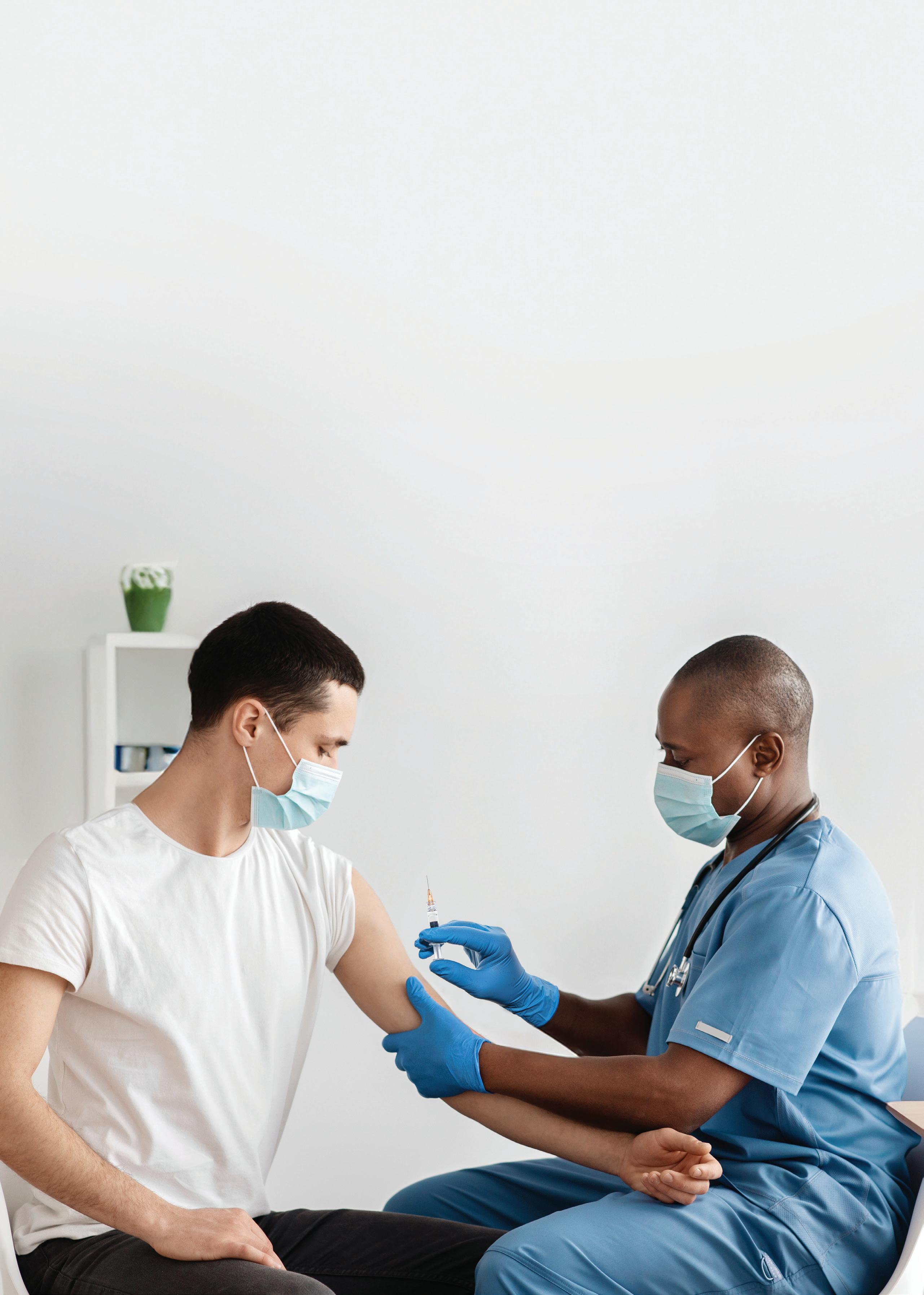
Each needle is sterile packed individually
Packaging design supports compatibility with automated pick-and-place systems/feeders •
Color-coded labels and barcode on label enable in-line product identification

In this article, Landon Goldfarb, Biomedical Market Manager at Instron, highlights the challenges of autoinjector testing and the importance of drawing on the experience of customers when it comes to drug delivery device innovation.
The injectable drug landscape has shifted significantly in the last 10 years, with autoinjectors quickly becoming the preferred choice for chronic conditions and, more interestingly, an expected option for many patients. The pace of innovation within the biologics and other large-molecule formulation space has, in many ways, prompted this shift from the pharmaceutical side, as existing technologies, such as prefilled syringes, became less equipped for safe, efficient delivery to the patient.
The larger volumes and higher viscosities of these formulations created more opportunities for patient misuse and made manual delivery more difficult for certain segments of the patient population. These technical hurdles catalysed the interest in autoinjectors, which allow for more reliable and repeatable drug delivery with minimal opportunity for error. When coupled with a growing infrastructure to support large-scale fill-finish and assembly, autoinjectors represented a massive opportunity for pharmaceutical manufacturers to better differentiate their products and appeal directly to healthcare professionals and patients.
“The design of autoinjectors offers significantly more opportunities for customisation to better align the device with the indication and patient population.”
A major concern for healthcare providers is ensuring that patients adhere to their prescribed dosing regimen in order to receive the full therapeutic efficacy of the drug. Several studies have characterised the positive effects that self-administration devices have had on overall patient compliance. In addition, the use of self-administering devices provides more opportunity for integrating connectivity capabilities, offering the physician reliable data to confirm the treatment is being followed correctly.
From a patient’s perspective, the overall usability and experience are improved using autoinjectors, especially for the population segment that is afraid or anxious around needles. The design of autoinjectors also offers significantly more opportunities for customisation to better align the device with the indication and patient population. For example, autoinjectors used for patients with severe forms of arthritis will be ergonomically designed to minimise pain during use. These features all work to increase patient confidence in their device and ultimately improve the patient experience.
All these improvements for patients and healthcare professionals represent a major shift in the complexity and variability of drug delivery devices and, as such, impact their requirements for mechanical testing. In a departure from more traditional devices, such as syringes and cartridges, autoinjectors use automated functions, such as passive safety and activation mechanisms, with auditory and visual feedback to alert the patient to the beginning and completion of the injection.

Landon Goldfarb
Biomedical Market Manager T: +1 781 575 5046
E: landon_goldfarb@instron.com
Instron 825 University Avenue Norwood MA 02062 United States www.instron.com
“Device specimens can often be at a premium, especially early in the development process, and their design prevents them being retested in most cases.”
This functionality is far beyond the standard scope of mechanical test systems, requiring measurements aside from force and displacement to assess the performance of the injection and the patient feedback. These requirements have been described within the ISO 11608-5 standard and, more recently, within the draft guidance from the US FDA regarding Essential Drug Delivery Outputs (EDDOs) and can include the following evaluations:
• Dose accuracy
• Needle depth
• Cap removal force
• Activation force
• Injection time
• Audio/visual tactile feedback.
In many labs, the standard practice is to evaluate these characteristics by performing individual tests on separate pieces of equipment. In addition to the time and effort required to do this testing, there are other significant drawbacks to this approach. Device specimens can often be at a premium, especially early in the development process, and their design prevents them being retested in most cases. For this reason, project timelines and cost can be strained when large numbers of specimens are needed for testing.
The variety of form factors and patientdevice interactions also complicates the scope for performing full functionality in a single test run. Figure 1 shows the myriad devices that exist on the market today, making a one-size-fits-all solution difficult. Furthermore, the ISO standard
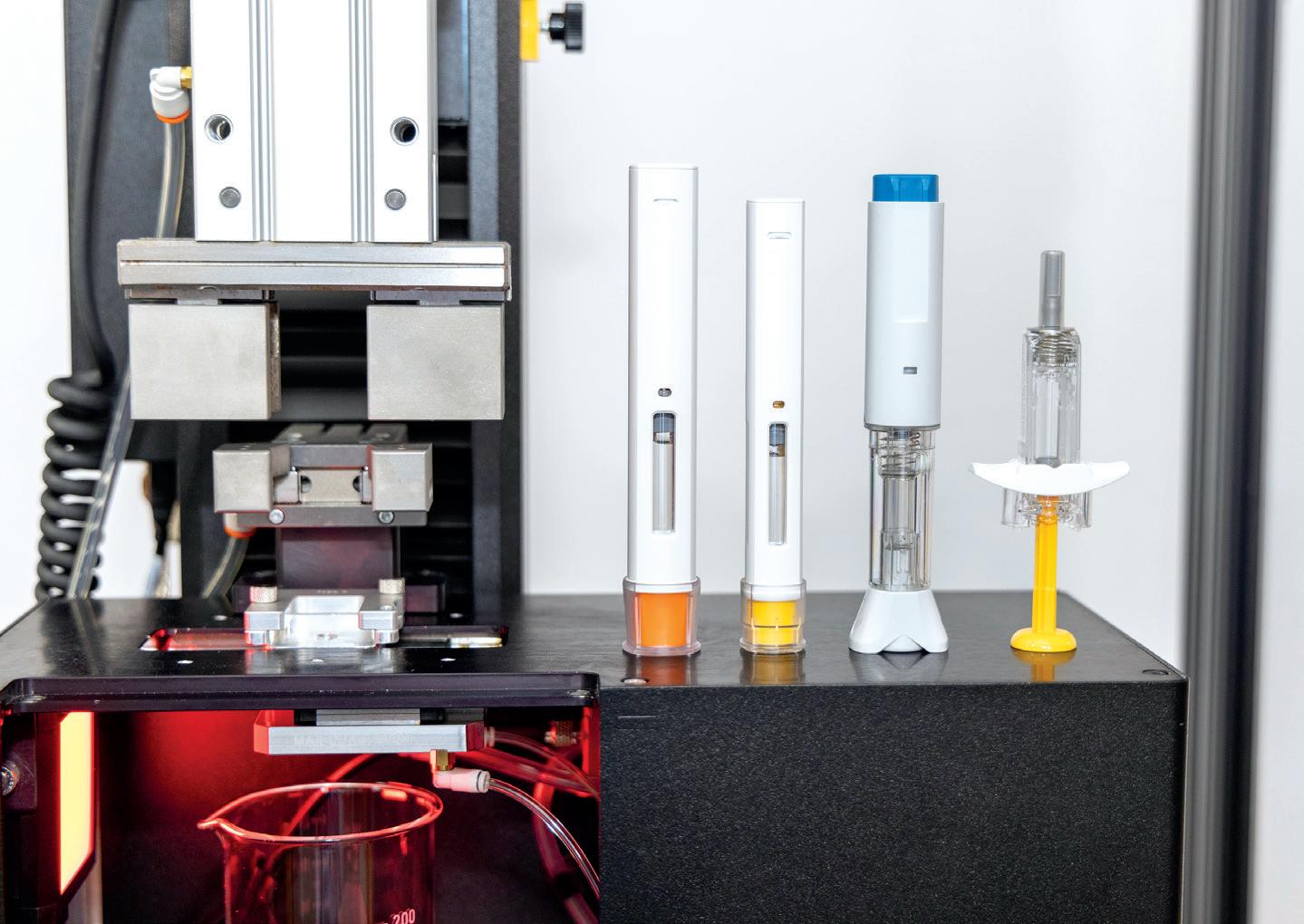
provides minimal direction for test setup or procedure, opting instead to be purposefully broad to promote innovation in autoinjector design. This open-endedness means that testing procedures vary widely across device manufacturers and pharmaceutical companies.
The challenges outlined here highlight the need for a comprehensive functional tester for autoinjectors with proven methodologies for measuring the parameters, the flexibility to work with a range of devices and the necessary automation to perform the testing in a single sequence. Integration of the necessary hardware to perform this testing on a traditional mechanical testing system is only part of the challenge – designing a user experience to allow for simple development of methods, modification of testing parameters and process control is equally critical.
Instron’s mechanical testing systems have been around for over 75 years and are trusted to validate the safety and performance of
“Instron’s mechanical testing systems have been around for over 75 years and are trusted to validate the safety and performance of materials and products on a global stage.”
materials and products on a global stage. Core to Instron’s beliefs is the importance of customer-backed innovation – building on the experience of customers to develop products that meet their needs and address the current challenges of the market.
The exponential growth of the autoinjector market has served as a catalyst for Instron to collaborate with industry partners to develop a solution for testing the evolving autoinjector. Creating the complete set of requirements for this system necessitated understanding the pain points across the entire drug development process, as well as understanding the unique needs of device manufacturers, pharmaceutical companies and contract development and manufacturing organisations (CDMOs) in both R&D and production environments. Many of the insights gained dealt with two main topics –system flexibility to support different device types and system usability.
The autoinjectors on the market have distinct geometry and functionality to support their specific patient populations. This variability necessitates thoughtful design to accommodate the variation of device interfaces, injection mechanisms, primary packaging, patient feedback and failure modes. Figure 2 highlights just a few of the different device variables and their impact on the system, as well as measured results.
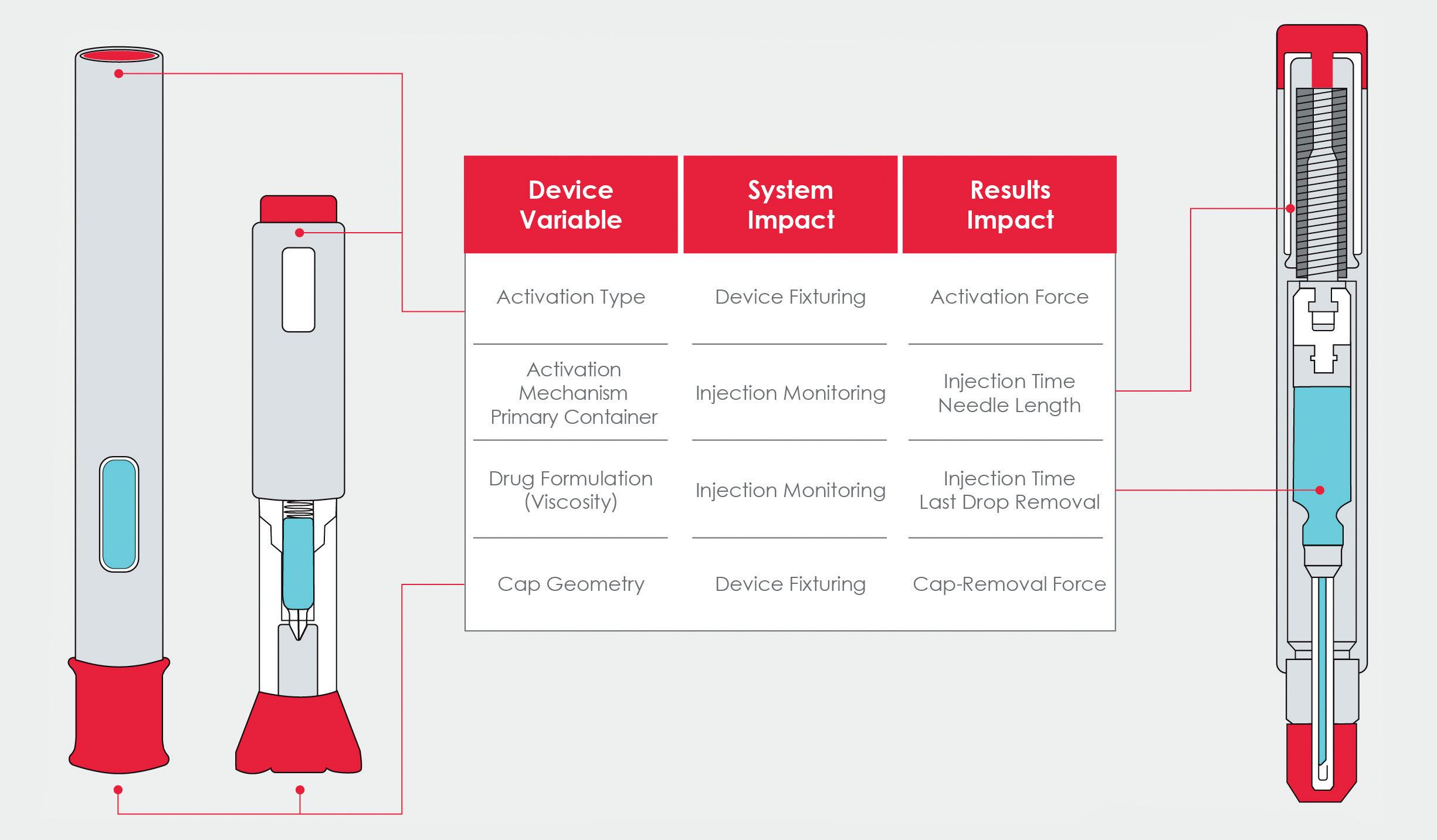
Cap removal is often the first test performed and can be overlooked as a straightforward evaluation. Internal testing and customer feedback highlighted the correlation between device alignment and the repeatability of the cap-removal force. Data showed that any device misalignment could artificially raise the measured force by up to 20%. Additionally, minimising external influence is also preferred, so simple tooling was developed to match the cap geometry of common devices and easily interface with the system, as seen in Figure 3. The tooling design purposefully allows for customer-driven design in instances where device manufacturers are developing their own custom devices or customising stock devices to their specific needs.
The primary container and drug formulation also have significant impacts on the device functionality and, subsequently, the required system capability. The primary container for most fixed-dose devices is a prefilled syringe, and its properties will rely on the formulation and delivery route. One of the EDDOs – needle length – is related to the pharmacokinetic properties of the formulation, which will often dictate the required delivery route.
“The
For example, the delivery route for parenteral injection will be via either the subcutaneous or intramuscular regions, where the needle depth can range from 3–20+ mm, depending on the target delivery region. To compensate, the testing system uses a machine vision camera designed to identify the needle during the injection and then monitor the tip position throughout the injection, providing the needle depth during injection. To provide additional
testing system uses a machine vision camera designed to identify the needle during the injection and then monitor the tip position throughout the injection.”
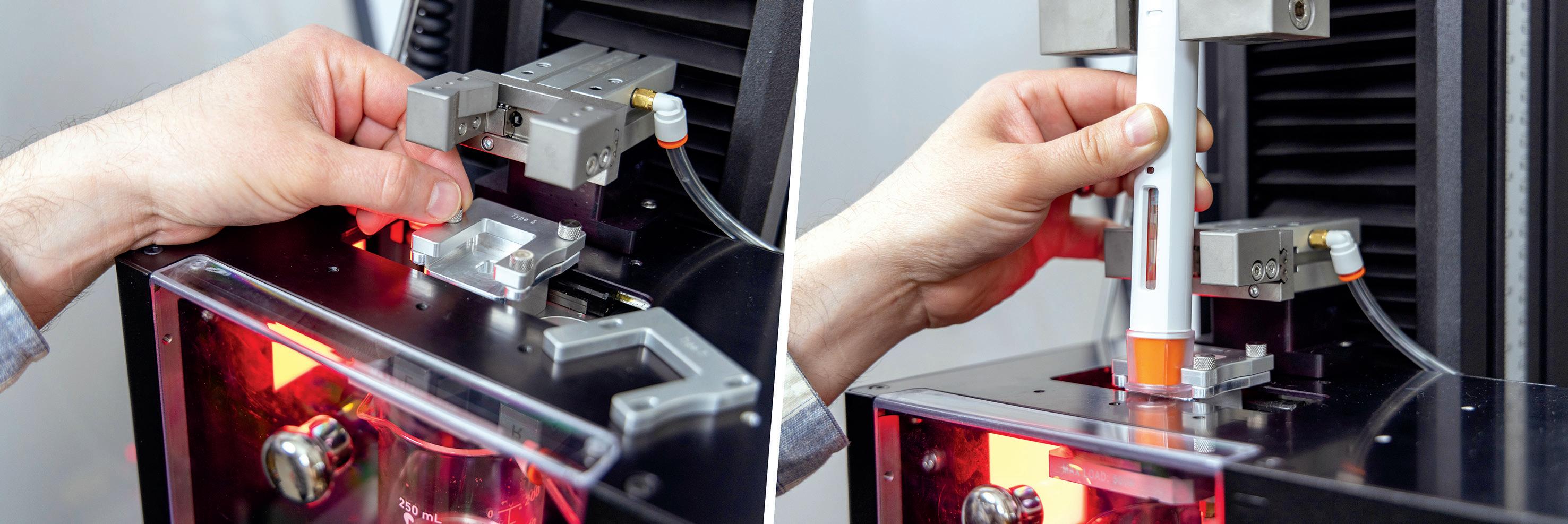
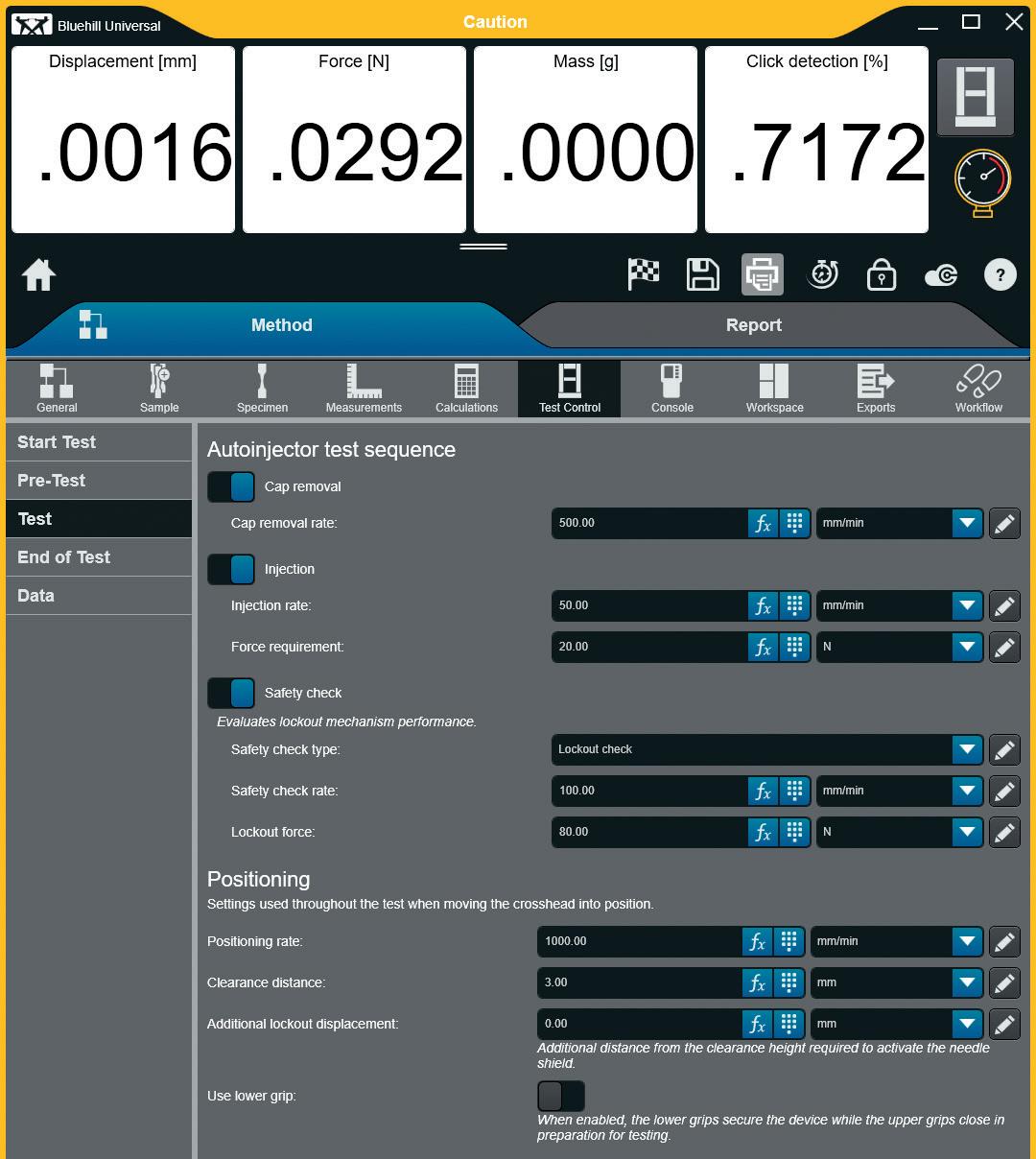
value and better assess the device performance, the camera will simultaneously monitor the drug delivery and capture the length of the needle at the start of the injection to better evaluate the delivery region over time. This additional analysis can be used as an attribute analysis, confirming whether the complete injection was delivered within the therapeutically relevant region.
Viscosity has been another major topic within the industry, as the advent of new drug classes, such as biologics and other large-molecule formulations, has led to viscosities that are orders of magnitude greater than traditional formulations. Fluid viscosity is of primary importance during the device selection process, as increased viscosities require activation mechanisms or powerpacks that can sufficiently deliver the drug within an acceptable duration –typically less than seconds. The force profile of the powerpack will also need to be finely tuned to ensure that excessive force is not generated at activation, which can cause
shearing of the prefilled syringe flange. All of this contributes to variations in injection time and needle velocity.
Using the machine vision camera and tracking the fluid directly provides an extremely robust methodology for determining the injection time that is less affected by these variables. Alternative methodologies, as suggested in ISO 11608-5, such as laser- or gravimetric-based systems, each have drawbacks. Laser-based systems are direct but susceptible to external variables such as changing lighting conditions and mist produced from the injection. Gravimetric systems are indirect and require complex algorithms to adequately identify the start and end of injection for a range of mass profiles, which are highly dependent on formulation viscosity.
In many cases, companies may be testing safety syringes and prefilled syringes in addition to autoinjectors. Instron’s Autoinjector Testing System is designed
to accommodate these devices as well as perform EDDO evaluations. Using either Instron-provided or customer-designed inserts, the system can be adapted to evaluate properties such as rigid needle shield removal, break-loose and glide force and plunger lockout checks.
Where system flexibility is all about what the system is capable of, system usability is about how an operator interacts with the system. These systems are essentially fully automated, performing the tests sequentially without manual intervention. Accomplishing this level of automation –while simplifying the user interface and enabling independence for users to develop their own methods – was a foundational requirement of the product. Although R&D and CDMO environments are entirely different, they share a requirement for ownership of method development.
In an R&D environment, a level of experimentation is performed, especially when characterising a device, requiring the ability to easily modify test methods. For a CDMO, agility is paramount –client-driven method changes or the addition of new client projects must be acted on quickly, without requiring vendor support. Figure 4 shows an example of the test method development screen, designed from the bottom up to perform autoinjector testing and using customer feedback to isolate the critical parameters, which need to be user definable, while hiding everything else.
Production testing is under intense scrutiny and any failures need to be noted and addressed through root cause analysis. Given the implications for even small delays in resolving, the system is designed to provide qualitative insights into the testing to aid in root cause analysis. High-definition video of the injection area is recorded and saved with the samples to help identify any visual clues for issues such as an occluded needle or excessive needle angle. Additionally, the video is
“The system is designed to provide qualitative insights into the testing to aid in root cause analysis.”
correlated with the graphical display, allowing the operator to select a point of interest on the curve and find the corresponding video frame. Timestamped images of the needle at both the start and end of the injection are saved as separate files to confirm the reported needle depth values are representative of the correct needle position.
In GMP environments, system suitability is a daily requirement and, in many labs, the process is primarily paper driven, with sign-offs being performed in lab notebooks and no control over whether the daily check is performed. To alleviate these issues, the system software will automatically integrate the daily check procedure, locking out a user from testing until they have performed the necessary tests. The data and report are stored in the audit log, stamped with the date, time and operator associated with those tests.
Figure 5 shows an operator performing a system suitability test for the machine vision camera. Using Instron’s TrendTracker module, long-term data analysis of the transducer performance can be checked, providing evidence of degradation of the transducer performance and helping to catch an issue before it affects data. This system is designed to digitise the entire system suitability process and increase transparency, giving lab managers assurance that the test systems are being used properly.
Instron’s next-generation autoinjector is the product of years of working with industry partners, distilling the core

testing.
requirements for evaluating these devices and understanding the features necessary to optimise usability. Additionally, the ability to test thousands of different devices with a wide range of form factors and formulation variables enabled Instron to quickly find common pitfalls and helped to develop more robust solutions for this market. This system is designed to provide an industry-leading level of capability –
Landon Goldfarb is the Biomedical Market Manager at Instron where he works with the world's leading medical device manufacturers and pharmaceutical companies to develop, improve and automate their static mechanical testing programmes.
flexible enough to support R&D work while robust enough to withstand the rigor of production – all in a package dedicated to enhancing the user experience.
Instron specialises in the materials testing industry, delivering state-of-the-art mechanical testing systems to the medical device and pharmaceutical industries. Backed by a global infrastructure, Instron offers single-source convenience through localised service and support, including assistance with installation qualification and operational qualification, performance verifications, system calibrations, training and preventative maintenance.





October 28 - 29, 2024 • Westin Boston
October 28 - 29, 2024 • Westin Boston Seaport, Boston, MA
Featured Speakers
Featured Speakers
Featured Speakers

Laura
Laura
Laura

Robert


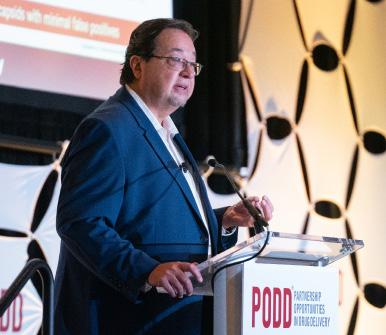

•
•




Attendees
• 750+ Attendees from Pharma, Biotech, Drug Delivery, Academia, Investors and More
• 750+ Attendees from Pharma, Biotech, Drug Delivery, Academia, Investors and More
• 750+ Attendees from Pharma, Biotech, Drug Delivery, Academia, Investors and More
• Pharma Companies Address Drug Delivery Needs and Partnering Philosophies
• Pharma Companies Address Drug Delivery Needs and Partnering Philosophies
• Pharma Companies Address Drug Delivery Needs and Partnering Philosophies
• Partnering Opportunities including One-on-One Scheduled Meetings to Help Foster New Collaborations Aly
• Pharma Companies Address Drug Delivery Needs and Partnering Philosophies
• Pharma Companies Address Drug Delivery Needs and Partnering Philosophies
• 10 Tracks Covering a Wide
• 10 Tracks Covering a Wide Range of Drug Delivery Technologies
• 10 Tracks Covering a Wide Range of Drug Delivery Technologies
• 10 Tracks Covering a Wide Range of Drug Delivery Technologies
• 10 Tracks Covering a Wide Range of Drug Delivery Technologies
•
• Partnering Opportunities including One-on-One
• Partnering Opportunities including One-on-One
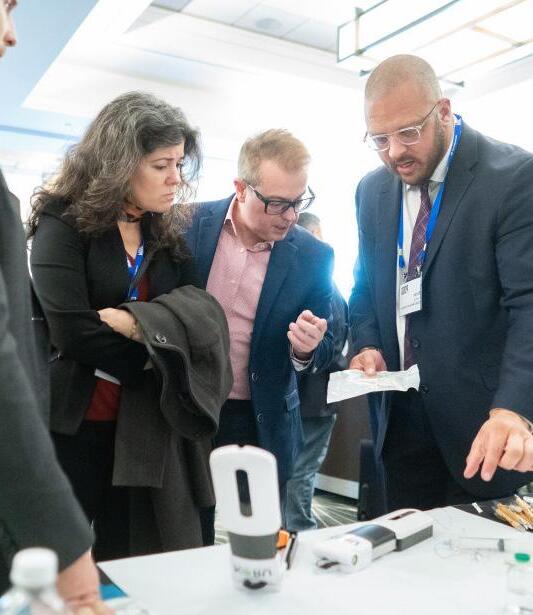
Scheduled Meetings to Help Foster New Collaborations
• Partnering Opportunities including One-on-One Scheduled Meetings to Help Foster New Collaborations
Scheduled Meetings to Help Foster New Collaborations



Kindeva Drug Delivery is one of only a few CDMOs in the world combining sterile fill, device manufacture, and final assembly in one geographic location at our St. Louis injectable hub. Backed by cutting-edge technology, we deliver an unmatched initial capacity of 100M units/year across vials, cartridges, and syringes, with plans for continued expansion.
Here, Nicky Bertollo, PhD, Chief Technology Officer and Co-Founder, Adam Rock, Strategic Partnerships and Commercialisation Manager, and Saidhbh O’Callaghan, Strategic Alliances Associate, all of Pharma Latch, discuss the progress the company’s intradermal drug delivery platform is making towards realising the potential the intradermal route offers to drug developers, especially for vaccines.
Intradermal (ID) delivery has long held the potential to be an attractive route of administration across a range of drug delivery applications. However, due to the limitations of previous and current ID delivery technologies, this potential has never been realised. However, the Pharma Latch platform overcomes many of the obstacles that have previously been encountered in the pursuit of a successful ID delivery system, allowing ID administration to be considered a truly realistic route of administration for the first time, with a host of benefits across a range of applications.
In Pharma Latch’s previous article in ONdrugDelivery magazine,1 the company outlined the potential benefits of ID delivery across various drug types, including:
• For vaccines:
– Functional improvements in the durability, strength and type of immune response following vaccination
– Similar immune responses with fractional dosing (i.e. dose sparing).
• For biologics:
– Improved pharmacokinetic profiles (increased bioavailability, faster onset of action, increased Cmax/Tmax, etc)
– Reduced needle phobia from shallow needle penetration aiding compliance.
• Targeted (versus systemic) delivery, reducing adverse events and improving the therapeutic window.
While many of these benefits are well studied and understood, the lack of simple, reliable and practical delivery methods and devices has meant that the ID route is rarely used in clinical practice.
For example, the Mantoux technique –a healthcare professional (HCP) inserting a needle into the skin at an angle, first described more than 100 years ago – remains the clinical gold standard for performing ID injections. This procedure is technically challenging to perform, as the approach angle and depth of needle penetration are user-dependent and therefore subject to a high degree of variability. In fact, it has been demonstrated that up to 70% of ID injections administered using this technique are delivered to the incorrect depth.2 Subsequently, a number of drug delivery technologies have been developed to improve the ease of ID delivery, such as microarray patches, jet injectors and other microneedle systems, however, these have achieved limited clinical and commercial success. Often, they struggle in some or all of the following areas:
• Difficulty in administering to the correct depth in the skin
• Regulatory concerns over consistent dose administration
• Lack of confidence for the administering HCP
• Typically very low volume (e.g. 100 µL) and viscosity capabilities (primarily aqueous-based)
• Difficulties around device manufacturing and scalability
• Reformulation requirements (for patches in particular).
For these reasons, the ID route has rarely been considered a realistic or attractive option for the pharmaceutical industry, as it can introduce unnecessary risk,
Dr Nicky Bertollo
Chief Technology Officer and Co-Founder
T: +353 01 716 3770
E: nicky@latch-medical.com
Adam Rock
Strategic Partnerships and Commercialisation Manager
T: +353 01 716 3770
E: adam.rock@latch-medical.com
Saidhbh O’Callaghan
Strategic Alliances Associate
T: +353 01 716 3770
E: saidhbh.ocallaghan@ latch-medical.com
Pharma Latch
NovaUCD
Belfield Innovation Park
Belfield Dublin 4
D04 V2P1
Ireland www.pharmalatch.com
“The Pharma Latch platform was developed to overcome the biomechanical properties of the skin, which naturally resist needle insertion, and are a significant contributor to the inconsistency of previous ID injection technologies.”
a lack of confidence in the ability of devices to reliably deliver ID doses in full and added complexity, time and cost to development programmes. Additionally, many available technologies only offer a single device solution, with limited flexibility with regard to changes in drug dose or formulation and limited use cases, such as being suitable for administration by an HCP only.
Pharma Latch’s platform was developed with these shortcomings in mind. The company focused on the development of innovative device solutions that work with the needs of the pharmaceutical industry and patients, rather than adding complexity to them.
The Pharma Latch platform is based on opposing arrays of angled hypodermic needles. As described in detail in a previous issue of ONdrugDelivery,1 the Pharma Latch platform was developed to overcome the biomechanical properties of the skin, which naturally resists needle insertion, and are a significant contributor to the inconsistency of previous ID injection technologies.
As a result, the Pharma Latch platform enables precise and repeatable ID injections, every time. Furthermore, the combination of a unique fluid pathway and favourable manipulation of the biomechanical properties of the skin allows the Pharma Latch platform to inject high-volume and high-viscosity formulations (up to 3 mL and 60 cP), increasing the clinical applications of ID delivery beyond what was previously thought possible. Pharma Latch’s novel injection platform also facilitates the development of a pipeline of future selfinjection and wearable combination products (currently under development) that can address the complex delivery
requirements of therapeutics for the management of chronic diseases.
In summary, the Pharma Latch platform is a disruptive drug delivery platform that:
• Overcomes the technical challenges of ID delivery, allowing the ID route to be a realistic option for the pharma industry
• Enables new applications and use cases for ID delivery to be realised due to superior volume and viscosity capabilities
• Provides a platform solution with multiple device offerings capable of serving a wide array of drugs and use cases.
PHARMA LATCH HOLLOW
The first product offering built off the Pharma Latch platform – the Pharma Latch Hollow (PLH) – is in development as an HCP-administered, sterile-packed, singleuse disposable medical device (Class II medical device, FDA 510(k) pathway) and is in late-stage manufacturing in the US (Figure 1). The PLH is available for preclinical work now (in small or large animals) and for clinical evaluation from 2025.
The PLH introduces a new and improved device-based solution for injecting liquid formulations into the skin, achieving this in a number of different ways:
• PLH dramatically simplifies the procedure for the user and removes the variability associated with traditional techniques by having device geometry (and not the user) govern needle insertion depth (Figure 2).
• Through a combination of favourable conditions that are established in the skin and inherently low internal fluidic resistance, PLH provides ease of injection and can work with volumes up to 3 mL and viscosities up to 60 cP, which were previously only achievable with intramuscular (IM) and subcutaneous (SC) administration.
• PLH ensures full dose delivery consistently and repeatedly in all patients, thereby satisfying clinicians and regulators alike.
• PLH can be used immediately with any drug formulation and dose without the requirement for reformulation and complex in vitro assessment.
PLH has been developed to serve a wide range of use cases, where ID delivery is increasingly being recognised as an enabling technology as well as a point of differentiation. Cancer vaccines (CVs) are one such area and have witnessed tremendous growth and investment in
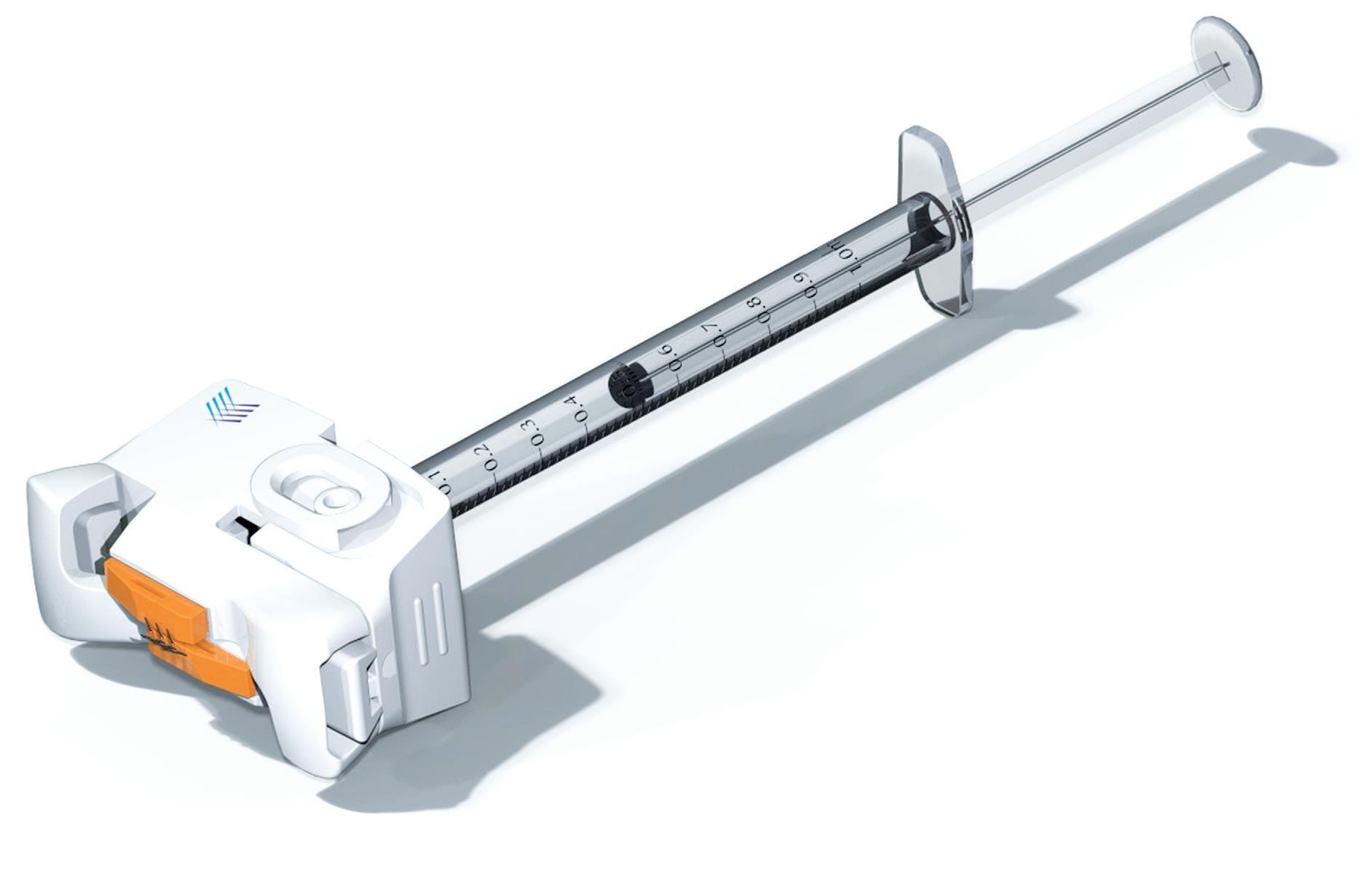
Figure 1: Overview of PLH, which is being developed as a single-use, sterile-packed, HCP-administered medical device. The PLH is compatible with both Luer lock and slip syringes, and exhibits arrays of angled 31G hypodermic needles at its distal end for delivery of the injectate into the dermal layer.
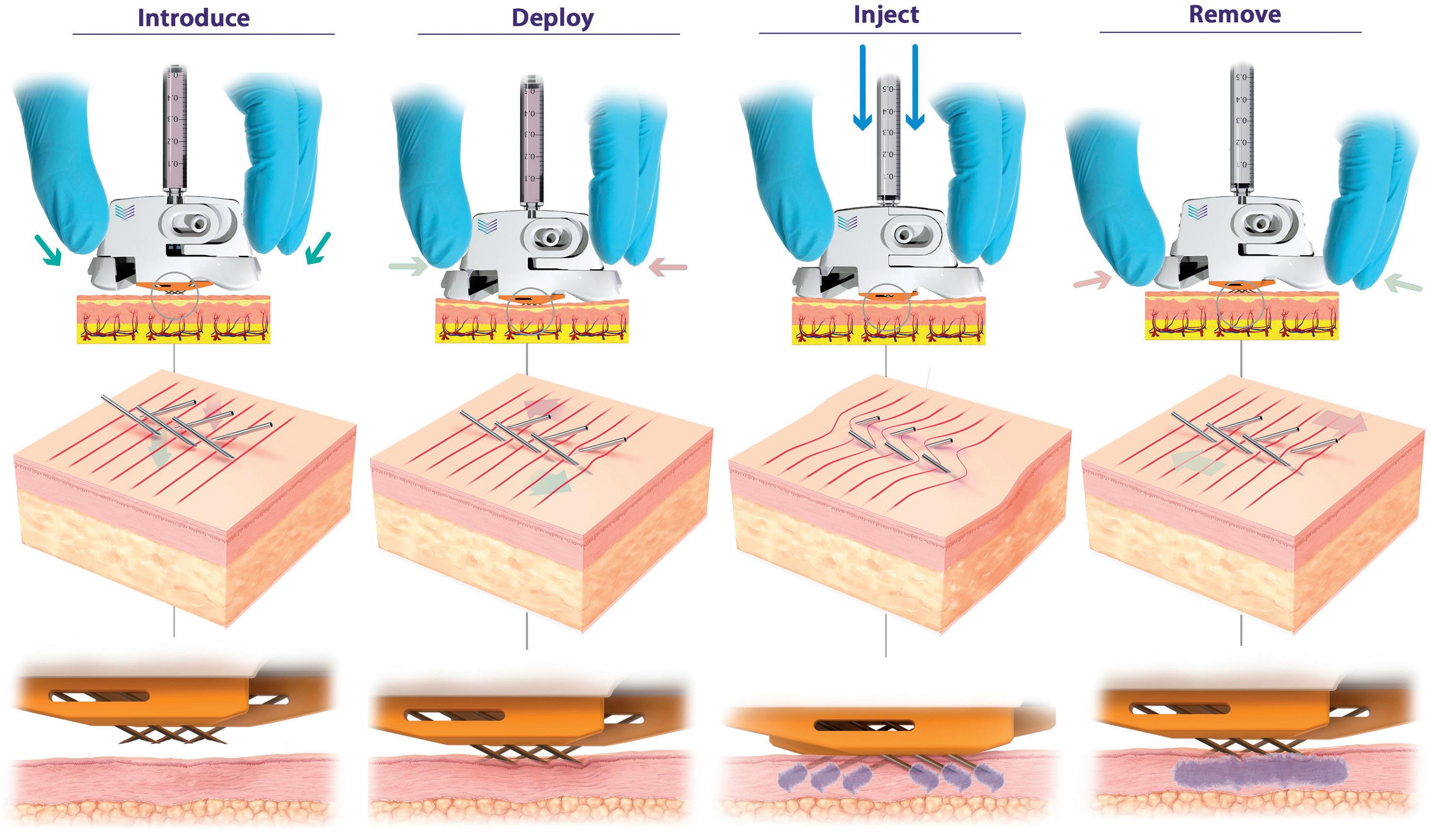
2: PLH operation (left to right). Device is placed over the injection site. The needles are then deployed using a simple “clicking” action, which establishes a slight stretching of the skin, preventing tenting and compression and enabling full penetration of the hypodermic needles to a predetermined depth (820 μm). Injection can be performed with minimal resistance and with superior diffusion into uncompressed tissue. The PLH can then be removed from the skin, using simple squeezing of the release tabs, and disposed of.
recent years, with approximately 360 active clinical trials.3 Although CVs have faced significant challenges in the past, advances in sequencing technology enabling the identification of new target antigens, successful combination therapy with checkpoint inhibitors and emerging vaccine technologies, such as messenger RNA (mRNA), are fuelling a renewed interest in this segment.
CVs are therapeutic vaccines, requiring strong and specific immune responses –typically over multiple doses per course, in order to be effective against the target disease. As such, there is a concerted effort to optimise all aspects of current CV design, including route of administration. There is a strong scientific rationale for administering CVs intradermally, as this approach takes advantage of the high
density of antigen-presenting cells in the skin, such as dendritic cells, whose activation is critical for eliciting the desired immune response. The ID route is continuing to gain traction in the CV space, as evidenced by approximately onethird of current CVs in clinical trials being delivered intradermally.3
Similarly, other more traditional vaccine applications can also derive significant benefits from ID delivery, including dosesparing – the ability to generate similar immune responses with a fraction of the dose. This dose-sparing effect has been demonstrated with fractional doses of onefifth of the standard IM or SC dose, or even less, across numerous vaccine platforms, including mRNA, peptide, viral vector and live attenuated viruses. The ability to dose-spare has numerous implications
“The ID route is continuing to gain traction in the CV space, as evidenced by approximately one-third of current CVs in clinical trials being delivered intradermally.”
and benefits for vaccines, including reducing systemic adverse events, reducing costs and, importantly, increasing critical supplies of vaccines, which is especially important for rapidly responding to disease outbreaks. In fact, in 2022, in response to an outbreak of monkeypox (Mpox), the US FDA authorised the ID delivery of the JYNNEOS vaccine (Bavarian Nordic, Hellerup, Denmark) at one-fifth of the SC dose, enabling rapid roll-out of the vaccine.
Biologic drugs, such as peptides and monoclonal antibodies (mAbs), continue to represent a significant proportion of new drug approvals, with an increasing proportion now being delivered subcutaneously. While this transition has been successful, a number of key challenges remain, including concerns around patient compliance, variable pharmacokinetics and suboptimal efficacy. ID delivery of biologics has numerous well-established benefits in this regard. For one, while SC administration allows for selfadministration, this places a high degree of burden on the patient to comfortably perform a correct injection. In addition to needle-phobia, which is a well-established
“ID delivery has demonstrated a clear benefit across numerous high-value biologic therapies, including checkpoint inhibitors, insulin, GLP-1s and other mAbs.”
phenomenon, concerns around uptake and compliance must be addressed. ID delivery offers a potential solution in this regard, as Pharma Latch's microneedles reach a depth of 820 µm in the dermal layer, which can help reduce any anxiety surrounding needles and may improve compliance. There is also increasing evidence to suggest that the ID route has therapeutic and pharmacokinetic benefits compared with SC and IM delivery. These benefits are thought to arise from the improved access to the lymphatic network following ID administration, which enables rapid transport to the systemic circulation, especially for larger molecules, as well as a potential secondary site of action for some immunotherapies. ID delivery has demonstrated a clear benefit across numerous high-value biologic therapies, including
checkpoint inhibitors, insulin, glucagon-like peptide 1 (GLP-1) and other mAbs.4–9
The ability of the Pharma Latch platform to deliver higher volumes and viscosities than previously possible (up to 3 mL and 60 cP) via the ID route opens up a wide range of additional applications. The platform has a range of iterations (Figure 3):
• Preclinical Study Devices: Available now – Pharma Latch has developed a range of specific versions of PLH to work in a variety of both small and large animal models. This is facilitating early, accurate evaluation of the ID route of administration in a host of development programmes.
• HCP-Administration: Available now –Pharma Latch’s PLH device as outlined above is a medical device available for preclinical and clinical work with approval anticipated in H1 2025.
• Self-Administration : Application dependent – Pharma Latch’s platform approach retains the same fluid pathway and manner of skin interaction, allowing users to work with PLH and migrate to a range of self-injector versions of the platform specific to customer requirements.
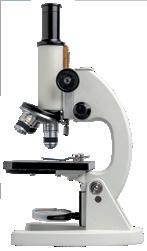




An effective delivery strategy is fundamental to bringing innovative therapies to market. As drug modalities have evolved from small, simple molecules to complex biologics, unique delivery challenges have emerged, and drug developers are increasingly searching for innovative delivery solutions. ID delivery has long been considered an attractive solution in this regard and, for the first time, is now a reality with the Pharma Latch platform.
Pharma Latch is a venture and corporate (West Pharmaceutical Services) funded medical device company based in Dublin, Ireland. The company has developed a unique portfolio of HCP and selfadministration ID injection devices based on a core platform technology. Its core platform technology uses an array of opposing-angled microneedles that latch into the skin at a preset depth, ensuring consistent needle-depth penetration and dose delivery. Its devices can deliver high volumes and viscosities (up to 3 mL and 60 cP) and are simple to use, cost efficient and highly scalable.


1. Bertollo N, Rock A, Byrne R, “How Do You Perceive Intradermal Delivery? Think again…”. ONdrugDelivery, Issue 160 (May 2024), pp 26–30.
2. Micheels P, Goodman L, “Injection Depth in Intradermal Therapy: Update and Correction of Published Data”. J Drugs Dermatol, 2018, Vol 17(1) pp 88–96.
3. Janes ME et al, “Cancer vaccines in the clinic”. Bioeng Transl Med, 2023, Vol 9(1), article e10588.
4. Rini CJ et al, “Intradermal insulin infusion achieves faster insulin action than subcutaneous infusion for 3-day wear”. Drug Deliv Transl Res, 2015, Vol 5(4), pp 332–345.
5. Ranamukha S et al, “Intradermal Administration Improves the Kinetics of Faster-Acting Fiasp® Insulin”. Diabetes, 2018, Vol 67(Suppl 1), article 985-P.
6. Jacobse J et al, “Comprehensive evaluation of microneedle-based intradermal adalimumab delivery vs. subcutaneous administration: results of a randomized controlled clinical trial”. Br J Clin Pharmacol, 2021, Vol 87(8), pp 3162–3176.
7. Hoeijmakers LL et al, “The MARIANE-trial: Multicenter phase 1b/2 trial testing safety and efficacy of neoadjuvant intradermal ipilimumab and nivolumab in high-risk stage II melanoma”. J Clin Oncol, 2024, Vol 42(16_ suppl), article TPS9615.
8. Tanaka R et al, “Efficient drug



Nicky Bertollo, PhD (University of New South Wales, Sydney, Australia), is Chief Technology Officer and Co-Founder of Pharma Latch. He is a biomedical engineer with over 20 years’ experience in the design, development, preclinical testing and evaluation of medical devices. Dr Bertollo is the inventor of the Latch platform technology and has built deep domain expertise in ID drug delivery technologies over a number of years. Dr Bertollo leads all the company’s engineering, technical and scientific activities.
Adam Rock is Strategic Partnerships and Commercialisation Manager at Pharma Latch. Mr Rock’s core interest and expertise is around identifying and evaluating high-value partnership opportunities across the pharmaceutical and drug delivery industry. Prior to joining Pharma Latch, he spent a number of years in a research setting, focused on drug development at various institutes including The Francis Crick Institute in London, UK. Mr Rock holds an MRes in Drug Discovery and Development from Imperial College London, and a BSc (Hons) in Pharmacology (University College Dublin, Ireland).
Saidhbh O’Callaghan is Strategic Alliances Associate for Pharma Latch. Her role is focused on the development and articulation of scientific and business opportunities in the intradermal space. In addition, she provides scientific support to a wide range of projects within Pharma Latch. Ms O’Callaghan holds a BSc (Hons) in Physiology from University College Dublin (Ireland).
delivery to lymph nodes by intradermal administration and enhancement of anti-tumor effects of immune checkpoint inhibitors”. Cancer Treat Res Commun, 2023, Vol 36, article 100740.
9. Van Pul KM et al, “Local delivery of low-dose anti-CTLA-4 to the melanoma lymphatic basin leads to systemic Treg reduction and effector T cell activation”. Sci Immunol, 2022, Vol 7(73), article eabn8097.
www.ondrugdelivery.com/subscribe
In this Expert View, Kyle Toole, Design Consultant, Blair Hutton, Design Consultant, and James McLusky, Director, all at Shore, discuss the value that mathematical modelling can provide in the early stages of injectable drug delivery device development, especially when coupled with appropriate empirical testing in a laboratory setting.
Recent advancements in biologics have led to breakthrough therapies for a variety of indications. However, these formulations often require higher viscosities and larger volumes for administration, which presents significant challenges for the development of new drug delivery devices for subcutaneous injection. Simultaneously, these devices must meet the broader needs of both patients and healthcare providers.
Meeting these needs requires the consideration of core factors such as patient tolerability, the formation and dispersion of the subcutaneous depot, device usability, choice of primary container and the technical capabilities of the delivery device itself. One crucial performance requirement that influences the ability of any device to address these factors is the injection duration and the forces required to achieve it.
As shown in Figure 1, there are multiple delivery systems available, or emerging, within the drug delivery landscape. Using mathematical modelling and explorative laboratory testing early in the development process, an engineering team can quickly understand the capabilities and limitations
of an established device or the need for a new concept in relation to a new drug formulation. This insight can enable the efficient evaluation of a concept, helping to define the delivery strategy and design of next-generation drug delivery systems with informed decisions.
Mathematical modelling and explorative laboratory testing can allow engineers to:
1. Define the most suitable device format for a concept, along with the associated primary container and needle combination
2. Optimise the often-conflicting design variables of a concept
3. Determine if a concept can still perform at its operating limits.
Using a modified Hagen-Poiseuille equation (Figure 2), it is possible to calculate the nominal injection duration for a given configuration. This equation effectively models injection duration for high-viscosity Newtonian formulations,
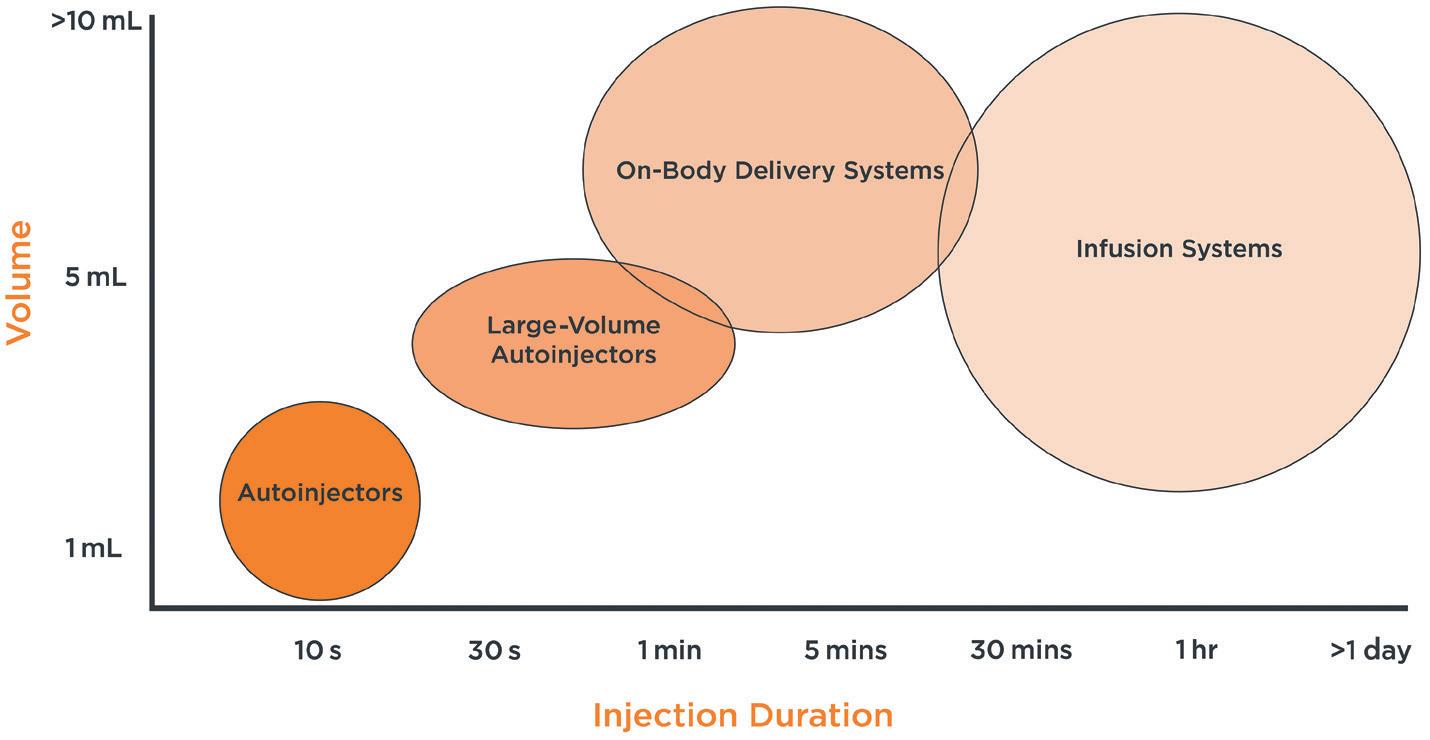

Kyle Toole
Design Consultant
T: +44 131 526 3516
E: ktoole@shore-group.com

Blair Hutton
Design Consultant
T: +44 131 526 3521
E: bhutton@shore-group.com

James McLusky
Director
T: +44 131 554 2626
E: jmclusky@shore-group.com
Shore Waterside House
46 Shore
Leith
Edinburgh
EH6 6QU
United Kingdom
www.shore-group.com

producing reasonably accurate results. Before moving on, it should be noted that non-Newtonian fluids, such as formulations that exhibit shear thinning behaviour, require alternative models.
The parameters of the modified HagenPoiseuille equation are:
1. Viscosity and volume, including environmental factors
2. Needle selection
3. Primary container
4. Plunger stopper friction
5. Tissue back pressure
6. Drive system force.
Viscosity and Volume
Known or theoretical viscosity and volume data are added into the model to assess how they impact injection duration across different delivery device concepts. Environmental factors should also be considered here – whilst room temperature is often controlled in clinical settings, patients administering at home will encounter temperature ranges that can significantly affect viscosity, even after accounting for warm-up time post-refrigeration. Many biologics are sensitive to temperature changes, so using “temperature versus viscosity” data in the model helps predict how injection duration might vary in actual use. These insights can be used to refine the device design and inform any mitigating steps that may be added to the instructions for use (IFU).
Choosing the right needle has long been understood as critical for both patient comfort and effective drug delivery. The needle’s gauge, wall thickness and length significantly influence fluid flow. Smaller diameter needles reduce patient discomfort but can restrict fluid flow and may increase the risk of occlusion. Conversely, larger diameter needles improve fluid flow but increase patient discomfort.
The Hagen-Poiseuille equation clearly shows that flow rate is inversely proportional to the fourth power of the needle’s inner radius, emphasising how needle diameter affects injection duration. Balancing these factors increasingly points towards the use of thin-walled or ultra-thinwalled needles. What may look like a small increase in bore diameter can have a huge impact on injection duration (Figure 3).
The inner diameter of the primary container is crucial because it influences the force required to expel the formulation. Larger container diameters may require more force to achieve a target injection duration as
the applied pressure is equal to the force divided by the area, therefore increasing the burden on the delivery device. Additionally, the primary container’s aspect ratio – whether it has a large diameter with a short length or a small diameter with a long length – affects the device’s overall format and usability. Whilst numerous other factors can influence the selection of a primary container, an early evaluation of how it integrates into a device and its associated impacts on performance and usability can assist in making efficient decisions.
The glide force of the plunger stopper moving through the primary container is influenced by the stopper material and design, barrel material, surface treatment and level of lubrication. Known or expected values can be incorporated into calculations to account for the additional forces that the device must overcome to achieve the target injection duration.
A factor that is often overlooked during the characterisation of a concept is the tissue back pressure. Typically, combination products are tested by “injecting” into free air. However, injecting into a patient’s subcutaneous tissue introduces back pressure, which can increase both the nominal injection duration and its variability, especially with high-viscosity, large-volume formulations.
“Many
biologics are sensitive to temperature changes, so using ‘temperature versus viscosity’ data in the model helps predict how injection duration might vary in actual use.”

Factors influencing tissue back pressure include tissue characteristics at the injection site, formulation composition, viscosity, volume and flow rate. Analysing data from literature and specific studies can enable the incorporation of tissue back pressure values into the equation, improving the understanding of its impact on injection duration.
The Hagen-Poiseuille equation can also be rearranged to focus on the required force to achieve a given injection duration. This can enable a design team to evaluate concepts for the device form factor and determine suitable drive system technology options quickly. This can ensure that the selected concept will meet performance requirements and remain aligned to the overall programme strategy.
Integrating the Hagen-Poiseuille equation within a probabilistic mathematical model can expand an engineering team’s understanding of a concept’s capabilities and limitations by accounting for potential variations and production tolerances. A Monte Carlo simulation is a powerful tool to help in this evaluation.
Where the Hagen-Poiseuille equation offers predictions under nominal conditions or simple edge cases, Monte Carlo simulations can extend this by modelling a broad range of scenarios. This method generates a predictive distribution or bell curve that reveals potential variations in injection duration and identifies the performance limits (Figure 4). Analysis using this approach can illustrate how different device configurations may perform under diverse conditions, thereby identifying potential issues. This simulation step ensures a robust concept throughout the development process with a view to high-volume manufacture.
Whilst mathematical modelling is invaluable for exploring concepts and understanding any limitations, empirical data from laboratory testing always provides the most reliable insights. Early in the development process, the fluid path can be simulated using off-the-shelf components to compare against the theoretical data.

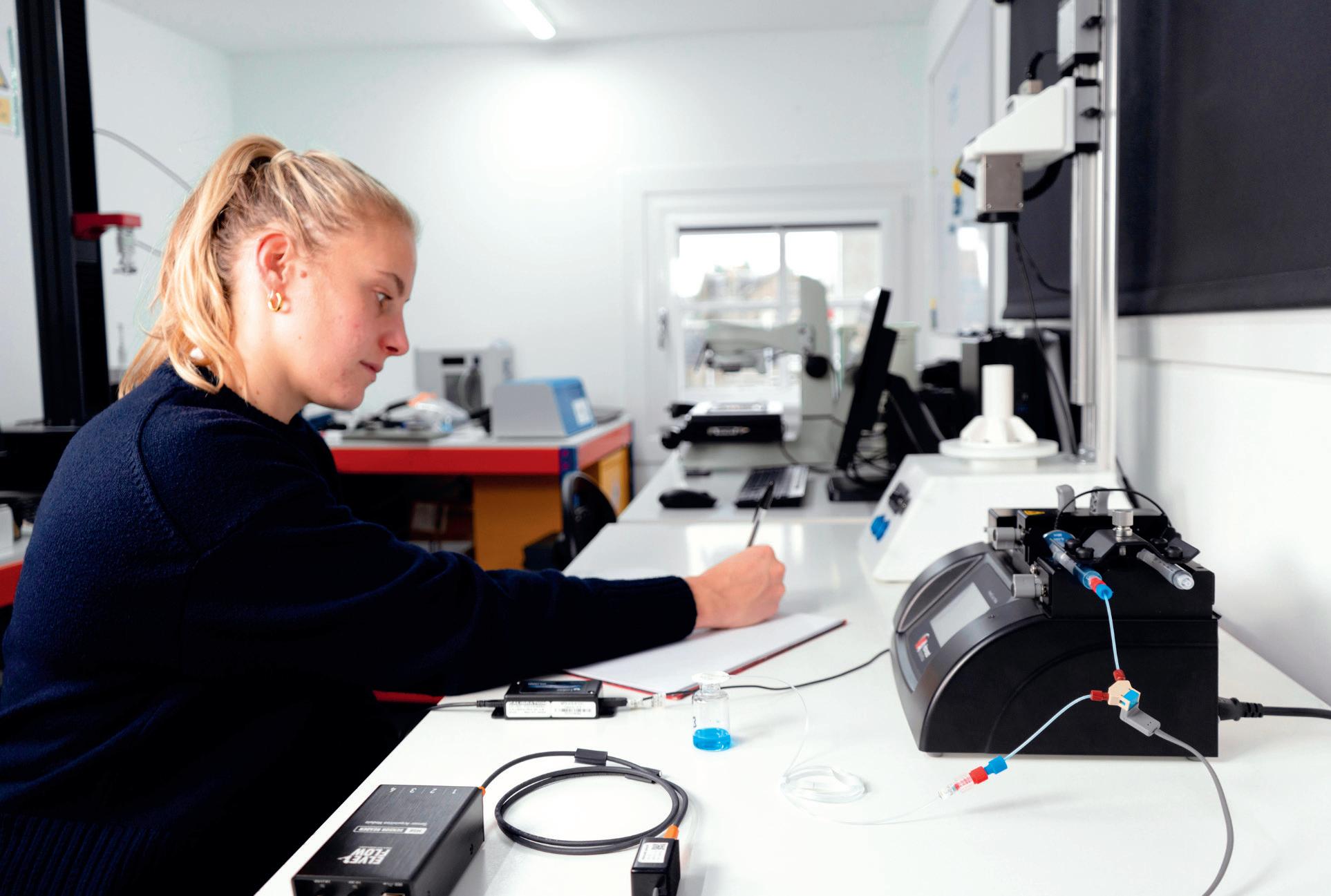
“Whilst mathematical modelling is invaluable for exploring concepts and understanding any limitations, empirical data from laboratory testing always provides the most reliable insights.”
Equipment such as a universal test machine or syringe pump can simulate a drive system under nominal, best-case and worst-case conditions (Figure 5), whereas in-line pressure monitoring systems can record pressure data. This set-up, used in
a suite of tests or design of experiments studies, can offer valuable insights into the forces and pressures required to achieve target injection durations. If the drug product formulation is not yet available or if a range of viscosities need to be explored, viscosity mimics can be prepared. These mimics, verified with a viscometer, can be filled into the primary container or fluid path for testing. This approach not only fosters confidence in the mathematical models but can also help to identify any discrepancies or unexpected challenges early on in the design process. Following this initial exploratory testing, physical prototypes of the delivery device can be designed and integrated into development rigs, paving the way for the subsequent design and development stages.
The development of delivery devices for the subcutaneous administration of highviscosity, large-volume biologics benefits from an integrated approach that combines mathematical modelling with empirical testing. Using tools such as the HagenPoiseuille equation and Monte Carlo simulations early in the development process can help to guide the selection of the optimal device format, balance design variables and assess performance limits.
Complementing these theoretical models with explorative laboratory testing can build confidence in the predictions and evaluate real-world performance. This combined approach significantly strengthens the likelihood that a drug delivery concept will meet the stringent performance requirements as it progresses through the development process toward high-volume production.
Finally, this approach is not only useful for informing new delivery system developments – which can be prohibitively expensive – the early engagement with device designers in any pharmaceutical formulation process can enable options that may or may not be suitable for existing platform devices and categories to be quickly reviewed. This can potentially expose the need to explore lower concentrations at larger volumes or higher concentrations at smaller volumes in a timely manner. Whatever the overall strategy, this considered approach can
optimise therapeutic efficacy, improve the patient experience and significantly reduce commercialisation costs.
Shore is a medical device design consultancy that delivers end-to-end solutions that optimise usability and performance. With over 500 successfully completed projects, Shore tailors its approach to precisely fit each client’s unique needs, ensuring that
products are delivered on schedule, within budget and with a focus on improving patient outcomes. Long-standing partnerships with some of the world’s largest pharmaceutical and medical device companies underscore its expertise in medical and drug delivery device development. A flexible and bespoke service ensures that Shore meets the specific demands of each customer, from early-stage feasibility all the way through to clinical manufacture and supply.
Kyle Toole, Design Consultant at Shore, has extensive experience across all phases of engineering development. With a background in design and project management across various industries, Mr Toole now focuses on consulting and leading projects in the medical device sector. From initial strategy to final production, he excels at transforming complex, abstract ideas into practical, high-quality products. Mr Toole thrives when navigating the complexities and ambiguities of design and development.
Blair Hutton has worked on the design and development of innovative market-leading products for over 25 years, including in the automotive, household appliance and luxury product sectors. Over the last decade, he has helped to deliver a diverse range of medical device projects, on time and under budget, for some of the world’s leading pharmaceutical companies. Mr Hutton has achieved this by continuously applying innovation and diligence from the initial definition of requirements through to high-volume production, all while deploying the industry’s latest technology and methodologies.
James McLusky, Director at Shore, has decades of experience in aesthetic design and product realisation across the consumer, medical, electrical and industrial markets. His focus now is medical device development, spanning product strategy, industrial design and mechanical engineering. He oversees the many medical and pharmaceutical projects at Shore. His deep knowledge of both design and engineering allows him to deliver innovative, high-quality solutions, making him a key player in bringing complex products to life.
Explore our PERFECT packaging selection process.
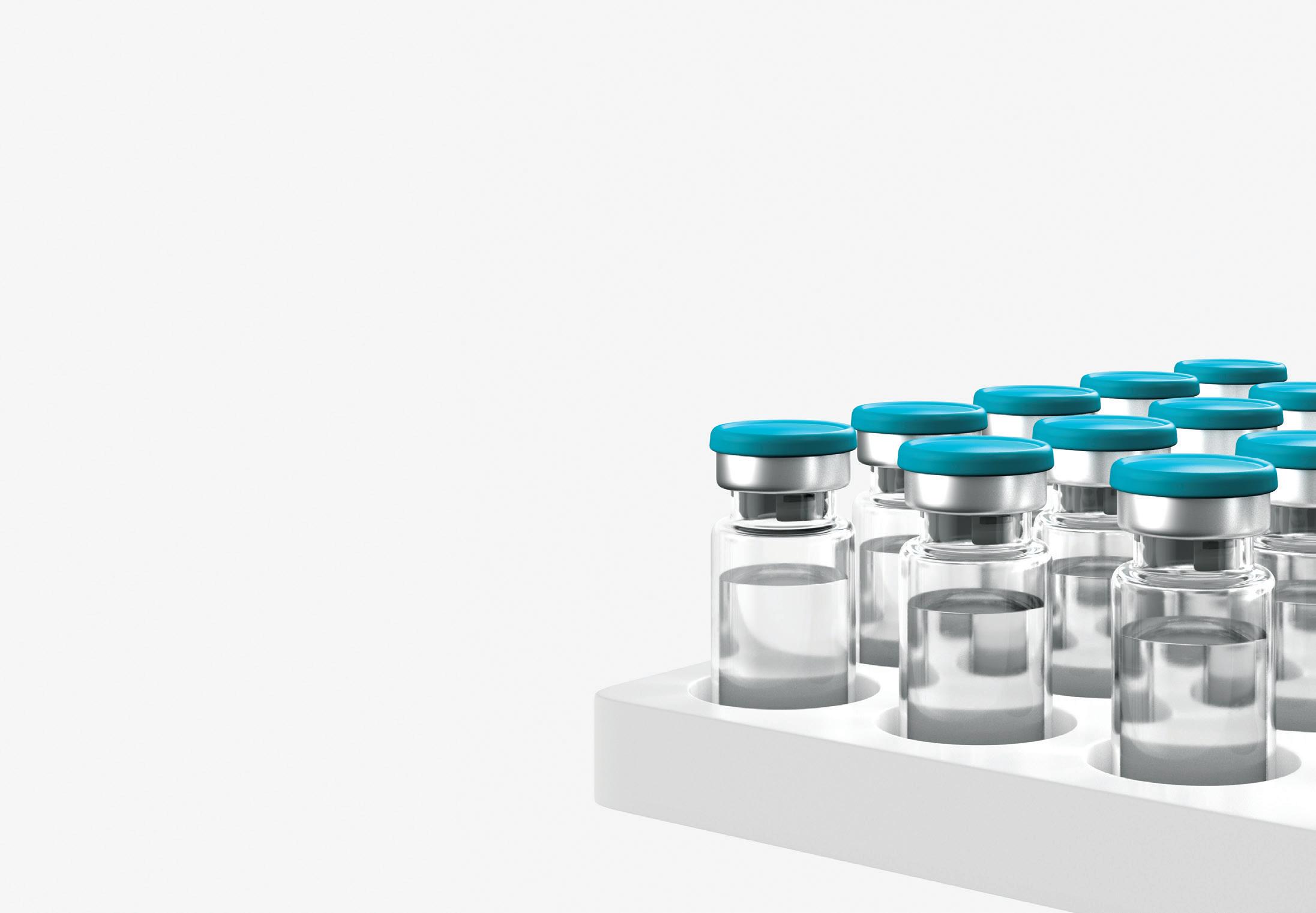
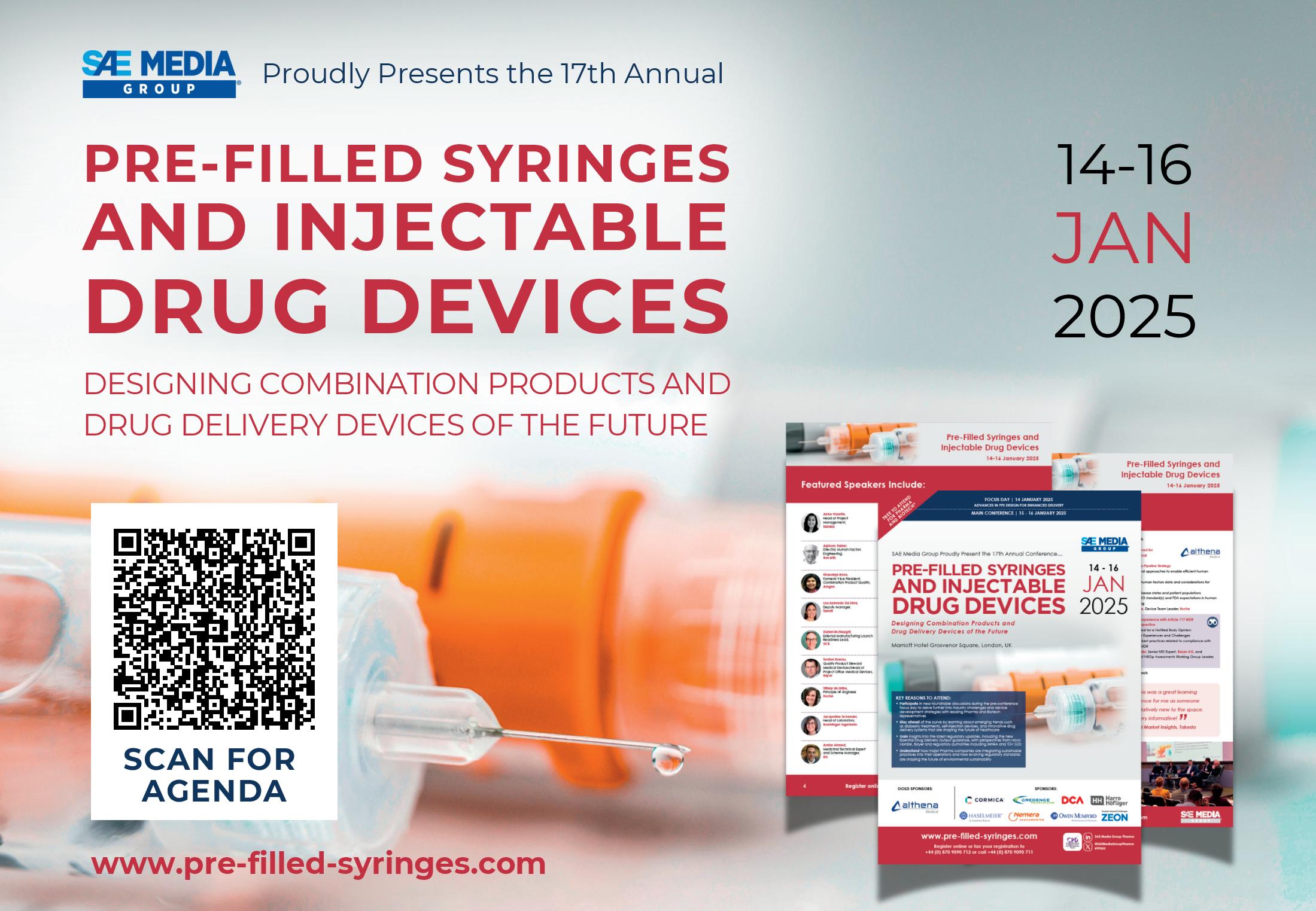
In this article, Farid Seddighi, PhD, Global Senior Director Device Project Group at Gerresheimer, and Sigrid Saaler-Reinhardt, PhD, Scientific Advisor and Consultant, and Daniel Primavessy, PhD, Head of Quality Control/Laboratory Head, both at Midas Pharma, discuss the critical importance of testing at an early stage of medical device development, presenting an overview of the results that confirm the technical performance and usability of the novel Gx Inbeneo® autoinjector.
Autoinjectors have become increasingly popular for the subcutaneous administration of biologic drugs, as they enable patients with chronic conditions to manage their therapy at home. Such a shift towards self-administration supports patient independence and may reduce the burden on the healthcare system. However, device failures or use errors can have serious implications for patient outcomes, making it even more critical to ensure autoinjectors are reliable, safe and easy to use.
To achieve this, functional and usability testing needs to be well planned and rigorously carried out. This is particularly critical when developing an innovative new concept such as the Gx Inbeneo® cartridgebased pre-pressurised autoinjector.1 Gerresheimer and its partner Midas Pharma have therefore implemented an extensive testing programme early in the development phase to confirm performance and usability.
In response to the market growth of biologics and the increasing preference for self-administration, Gerresheimer and Midas Pharma developed a new cartridgebased autoinjector platform concept.
Most autoinjectors are spring driven and based on a prefilled syringe (PFS) with staked-in needle. This design incorporates a compressed spring held in place by a locking mechanism. The mechanism must retain the force of the spring throughout the shelf
life of the combination device. It must then release the spring at the required moment and with appropriate force to effectively inject the drug. The moment of release in this design causes a pressure spike,2 which can place stress on the device’s components. This can be a particular problem with the higher spring force required to deliver drugs with large volumes or high viscosities and may lead to misfiring.3
To avoid these stress spikes, the Gx Inbeneo development team opted for a cartridge-based design with a novel “pre-pressurised” concept. The resulting autoinjector employs the primary prefilled cartridge in the autoinjector system to retain the spring force and a double-ended needle for activation. When the patient presses the autoinjector on their abdomen or thigh, the thinner end of the needle first pierces the skin. Subsequently, the thicker end of the needle pierces the cartridge septum, connecting the fluid pathway and commencing drug delivery automatically.
“The autoinjector design also decreases, or even dissolves, any gas bubbles present in the liquid drug, which might otherwise result in protein aggregation in sensitive, viscous biologics.”
Dr Farid Seddighi
Global Senior Director
Device Project Group
T: +41 62 209 71 16
E: farid.seddighi@gerresheimer.com
Gerresheimer
Solothurnerstrasse 235
CH-4600 Olten
Switzerland
www.gerresheimer.com
Prof Sigrid Saaler-Reinhardt
Scientific Advisor and Consultant
T: +49 16 2217 1247
E: sigrid.saaler-reinhardt @midas-pharma.com
Dr Daniel Primavessy
Head of Quality Control/ Laboratory Head
T: +49 61 3299 0371
E: daniel.primavessy @midas-pharma.com
Midas Pharma GmbH
Rheinstraße 49 D-55218 Ingelheim Germany
www.midas-pharma.com
This pre-pressurised concept bypasses the pressure spike in the drug delivery profile that occurs when a conventional spring-release mechanism is activated, resulting in a steady delivery profile from the start of the delivery until the drug delivery concludes. The autoinjector design also decreases, or even dissolves, any gas bubbles present in the liquid drug, which might otherwise result in protein aggregation in sensitive, viscous biologics.
The double-ended needle has further advantages – as it is separated from the cartridge until administration, it eliminates the risk of largemolecule biologics or excipients clogging the needle during storage. The double-ended needle design further responds to the requirements of delivering biologics, as it enables higher viscosities to be delivered in less time than with a standard needle (Figure 1).

State-of-the-art functional testing is the backbone of the quality assurance process for medical devices. A malfunctioning or difficult-to-use device may lead to incorrect dosing and reduced efficacy of the treatment – and cause patient anxiety.
With the innovative new autoinjector design concept of the Gx Inbeneo, Gerresheimer and Midas Pharma went through an extensive and comprehensive testing programme as early as possible as of the pre-feasibility phase. They enlisted the support of Springboard Pro
(Cambridge, UK) to develop and execute tests covering a wide range of factors, from the mechanical performance of the device to the long-term stability of the biologic drug product it should deliver. The results of such tests provided crucial information to establish data-based specifications for all critical components of the device throughout the design output phase, thereby ensuring that the final design is robust. Detailed methodologies and results were published in a peer-reviewed journal.4
METHODOLOGY AND RESULTS
Pressure Testing and Septum Stability
One of the key components of the primary cartridge is the septum, which acts as a
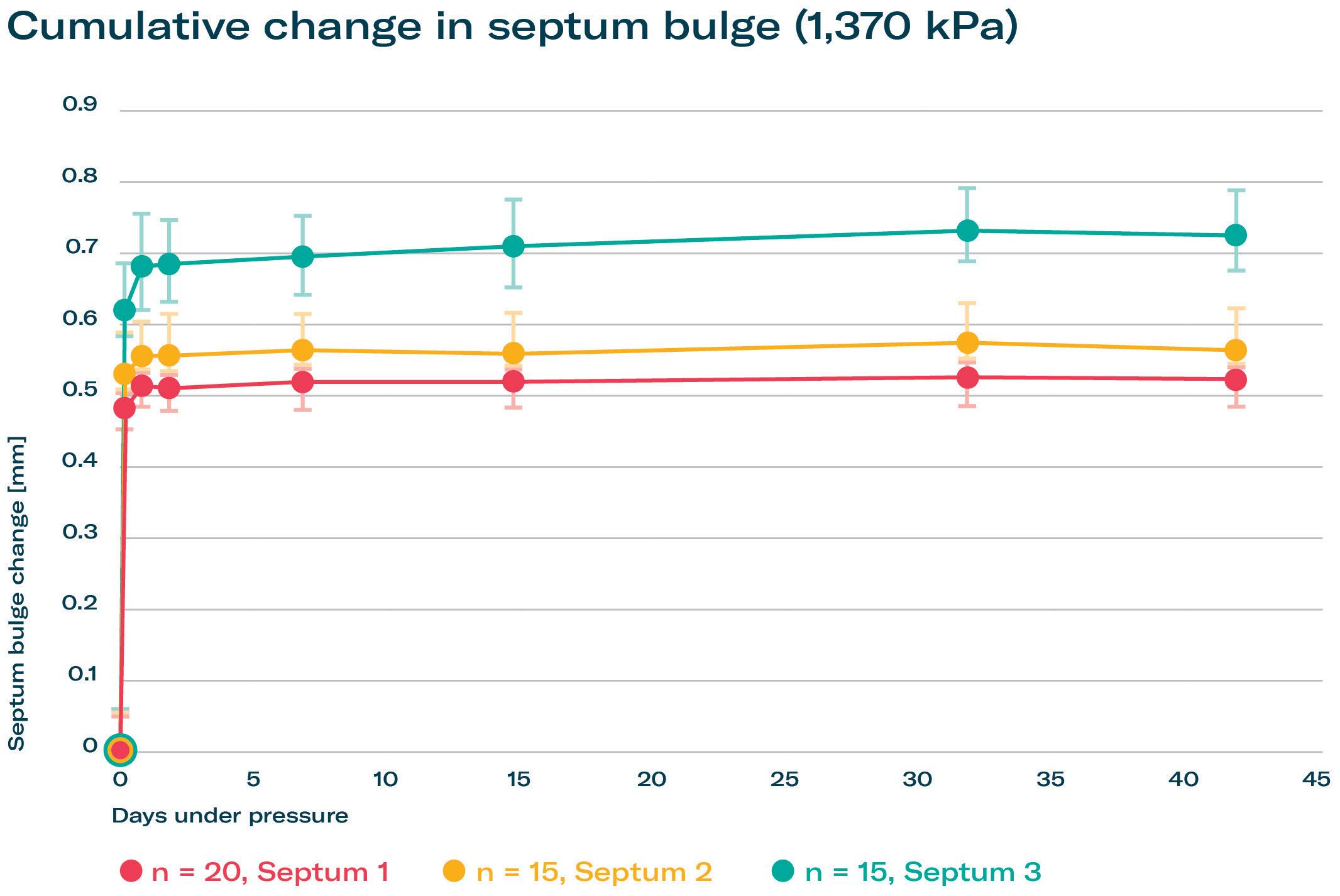
seal to maintain the sterility and integrity of the drug product. In the Gx Inbeneo concept, the septum has to withstand the pressure exerted by the power spring during storage without leaking. In addition, the septum must not rupture when pierced during the injection process. Any breach could compromise the drug product and result in malfunction or incomplete dosing. It was thus identified as the primary failure mode of the device.
Gerresheimer and Midas Pharma conducted extensive tests on the septum stability of standard ISO cartridge materials from different suppliers under longterm pressure conditions to assess their performance over the device’s intended shelf life of at least two years. The septum was subjected to continuous pressure to simulate the conditions the device would experience during storage.
The septum exhibited an initial expected bulge growth within the first 14 days, and then almost came to a halt, clearly indicating a stable performance over the intended shelf life. The tests confirmed that a variety of septa could withstand the pressures exerted by the device without rupture, helping to maintain the integrity of the drug product and the safety of the patient (Figure 2).
The primary packaging used in the autoinjector, typically made of Type I pharma-grade borosilicate glass, must be able to withstand the pressures exerted by the spring in the device during use. If the glass was to break or crack, it could lead to contamination of the drug product or injury to the patient.
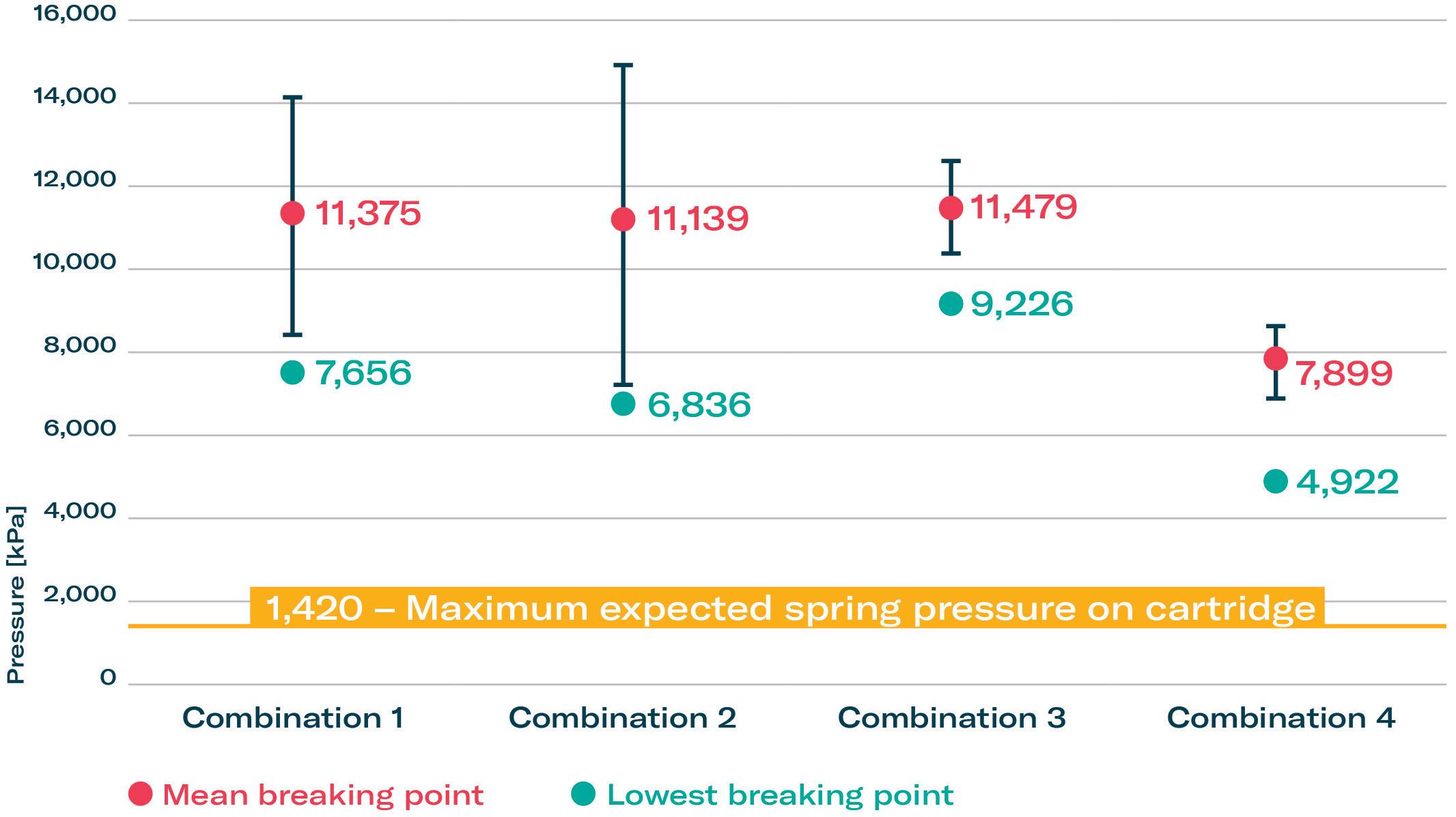
Glass breaking has been empirically identified as a secondary failure mode of the autoinjector concept. The breaking pressure of glass cartridges from different suppliers were tested under increasing levels of pressure (Figure 3). The lowest glass breaking point determined in all experiments was still more than 3.5 times higher than the highest possible pressure in the autoinjector platform. Another interesting finding regarding container closure integrity from the secondary failure mode testing was that, at increasing pressures, the plunger stopper did not fail.
The smooth operation of an autoinjector also depends on the forces required to trigger the device and push the drug through the needle into the patient’s tissue. These forces, known as glide and breakloose forces, must be carefully controlled to ensure that the device is easy to use, while also delivering the drug at the appropriate rate. It was especially important to test if the continuous pressure on the rubber plunger stopper would negatively impact glide force or break-loose force.
“It was especially important to test if the continuous pressure on the rubber plunger stopper would negatively impact glide force or break-loose force.”
The forces were measured repeatedly over time and under different environmental conditions to assess the consistency and reliability of the plunger stopper.
The forces remained within acceptable ranges throughout the testing period, even under pressurised conditions. This demonstrates that the autoinjector can reliably administer the drug without requiring excessive force or impacting the delivery of the drug.
Biologic drug products, such as monoclonal antibodies, are often sensitive to environmental conditions, including pressure, temperature and exposure to certain materials. It is therefore critical to ensure that the autoinjector does not adversely affect the stability or efficacy of the drug product over time. Extensive tests
were conducted on a commercially available monoclonal antibody (adalimumab) as a model for biologics to assess structural integrity and any agglomerates or degradation after being stored pre-pressurised in the device for an extended period. A range of analytical methods were used in drug-release testing under GMP conditions, including size exclusion chromatography and electrophoresis (Figure 4).
The tests showed no degradation or agglomeration of the drug product due to pressure or due to expelling the drug product through the device’s fluid pathway. This confirms that the Gx Inbeneo can safely store and deliver biologic drugs without compromising their efficacy or safety.
While functional reliability is essential, the usability of an autoinjector is equally important to ensure that a device meets the needs of the user, and that a therapeutic drug is administered correctly. device that is difficult to use or confusing to operate can lead to use errors, such as incorrect dosing, or even failure to administer the medication altogether. Such errors can have serious implications for patient therapy outcomes.
Gerresheimer places a strong emphasis on early usability testing, integrating a risk-based human factors and usability engineering approach into the design process. This ensures that devices are not only functional but also intuitive and easy

for patients to use. This type of testing is essential for reducing the risk of use errors, enhancing patient safety and supporting therapy outcomes.
The developers of the Gx Inbeneo incorporated several features to optimise ease of use and secure delivery. To mitigate needle phobia, the needle is hidden and protected within the autoinjector until administration. Administration steps have been minimised so that the user only needs to remove the cap and press the autoinjector against the skin to begin injection. Correct cap removal and orientation of the autoinjector is indicated with arrows. To monitor the injection progress, the housing includes a visual indicator in addition to the central viewing window commonly seen in autoinjectors. The visual indicator enables observation of injection progress even if the patient’s hand is covering the viewing window.
These features were tested during a formative usability study. The study participants (n=34) included patients and healthcare professionals, both injection-

naïve and experienced, and some with moderate dexterity issues. This ensured that all potential users were able to safely use the device. Study participants were observed to position the device correctly against the body for the full injection time. A total of 97% of the participants stated that they found it easy to track injection progress. Of these, 66% used the transparent top casing for monitoring.
Such comprehensive testing of an autoinjector ensures that it is safe and easy to use – and can reliably deliver the correct dose of a biologic drug product. Drug product stability testing further helps to confirm that an autoinjector will not negatively impact the drug product, ensuring that the efficacy of the therapy is maintained. This overall approach supports patient adherence, which is critical for managing chronic conditions and achieving positive health outcomes.
With their commitment to extensive functional and usability testing early in the development processes, Gerresheimer and Midas Pharma have demonstrated that the novel Gx Inbeneo platform concept can safely and effectively deliver viscous biologics. Armed with this knowledge, pharmaceutical companies can have confidence that the Gx Inbeneo is suitable for their biologic formulation, which may help reduce time to market.
As the use of biologics continues to grow, the rigorous testing of autoinjectors will remain a cornerstone in safeguarding patient health and supporting successful therapeutic outcomes.
Gerresheimer is an innovative systems and solutions provider and global partner for the pharma, biotech and cosmetic industries. The company offers a comprehensive portfolio of pharmaceutical containment solutions, drug delivery systems and medical devices, as well as solutions for the health industry.
In-depth analysis of pharmaceutical and biotech industry safety, quality, and regulatory challenges.
Focus on recent revisions to USP chapters, FDA guidances, and international regulatory requirements
Comprehensive discussions on drug packaging, delivery
Examination
Interactive
Dennis Jenke, Triad Scientific Solutions
Ping Wang, Janssen
Prabhakar Reddy, USP
Sherry Parker, SParker Consulting
Ray Colton, Nelson Labs
The product range includes digital solutions for therapy support, medication pumps, syringes, pens, autoinjectors and inhalers, as well as vials, ampoules, tablet containers and infusion, dropper and syrup bottles. With 35 production sites in 16
countries in Europe, the US and Asia, Gerresheimer has a global presence and produces locally for regional markets. With around 12,000 employees, the company generated revenues of around €2 billion (£1.7 billion) in 2023.



Farid Seddighi, PhD, has been Head of the Device Project Group at Gerresheimer Advanced Technology since January 2021 and is responsible for the development of medical devices in the regulated area. Dr Seddighi studied Physics in Kiel (Germany) and Bern (Switzerland). He has experience in development processes in basic research (NASA), as well as in the laser and semiconductor industry (Carl Zeiss AG), and in the development and lifecycle management of insulin pens and autoinjectors for biologics (Sanofi).
Sigrid Saaler-Reinhardt, PhD, studied Biochemistry at the Free University of Berlin (Germany), received her PhD in Cell Biology and Oncology and became a Professor of Molecular Genetics at the Johannes Gutenberg-University of Mainz (Germany). Prof Saaler-Reinhardt has more than 20 years of experience in academic research and the pharmaceutical industry, most of it at Midas Pharma, with responsibilities for R&D and intellectual property management, and subsequently for custom synthesis, biotechnology and drugdevice combination products. She is founder and consultant of her own company, EDUMO Consulting.
Daniel Primavessy , PhD, studied Bioinformatics and Biotechnology at Saarland University (Saarbrücken, Germany) and received a PhD in Pharmaceutics from PhilippsUniversity Marburg (Germany). He worked for two years as a postdoc at Saarland University and in a contract research organisation focusing on pulmonary in vitro instruments. In 2021 Dr Primavessy joined Midas Pharma as Project Manager for innovations in the pharmaceutical industry and became Head of Quality Control and Head of the GMP laboratory in 2024.
Midas Pharma is a mid-sized pharmaceutical company, founded in 1988. It offers products, services and expertise along the entire pharmaceutical value chain –from starting materials and APIs to the development of market-ready finished products and medical devices, as well as being a marketing authorisation holder for medicaments. For more than three decades, the family-owned company has successfully contributed to the pharma sector and expanded its competencies. With more than 300 employees and 12 locations in all major pharmaceutical markets worldwide, Midas Pharma has excellent local know-how, local contacts and well-established networks in different pharmaceutical sectors.
1. Primavessy D, Saaler-Reinhardt S, Maksymowicz K at al, “Gx Inbeneo® – Developing an Autoinjector that Responds to the Challenges of Biologics”. ONdrugDelivery, Issue 152 (Oct 2023), pp 32–36.
2. Veilleux J-C, Shepherd JE, “Pressure and stress transients in autoinjector devices”. Drug Deliv Transl Res, 2018, Vol 8, pp 1238–1253.
3. “Simponi (golimumab) 50 mg and 100 mg: important changes to the injection instructions for the SmartJect Pre-filled Pen”. Direct Healthcare Professional Communication, MSD, Aug 2023.
4. Primavessy D, Piening M, Nightingale A at al, “Investigation of long-term pressure on primary packaging materials and a biologic drug product for injection with a novel autoinjector concept”. Drug Deliv Transl Res, 2024, online only.


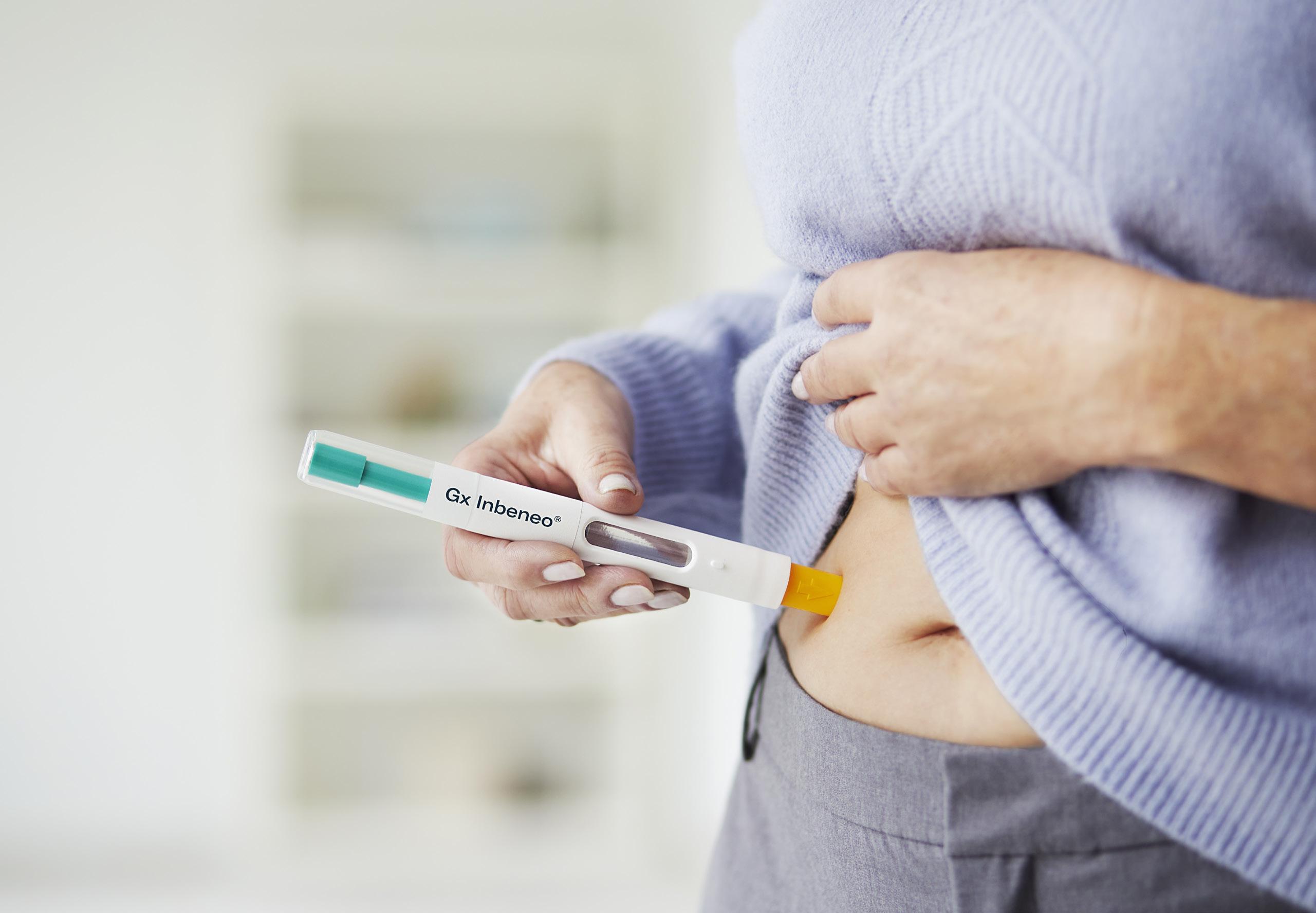
Discover

Transparent casing for injection progress
tracking
Cartridge-based, pre-pressurized system
Double-ended needle remains dry in storage
Patient-friendly design
Push-on-skin activation for ease of use
— Double-ended needle shortens injection time
Created for biologic drugs
Dry needle prevents clogging in storage
— Accommodates cartridges with baked-on siliconization
Quick customization
Platform concept reduces time-to-market
— Volumes up to 3 mL & viscosity up to 100 cP*
* Could be customized for higher viscosities

In this article, Antonio Scatena, Director of Sales and Marketing at Gateway Analytical, answers some of the most common questions regarding the container closure integrity testing methods used to detect leaks and defects – and discusses how the industry can meet the updated expectations set by regulatory bodies.
Container closure systems are critical for ensuring the integrity and safety of drugs. This is particularly important as modern developments focus on biologic drugs, which are increasingly complex and sensitive. Given the escalating costs of bringing such drugs to market, minimising the risk of failure at every stage of the development journey has become an essential endeavour for ensuring the success of drug development.
Primary packaging is in direct contact with the drug and plays an essential role in safeguarding its properties from the time of filling to patient administration. Although primary packaging manufacturers can provide data to de-risk the choice of container system, it is the responsibility of the drug developers to demonstrate compatibility with the drug formulation and container closure integrity (CCI) using methodologies that are fit for regulatory requirements.
CCI testing evaluates the ability of a container closure system to maintain a sterile barrier against potential contaminants to ensure the quality and safety of the drug contents throughout the product's lifecycle. It is the responsibility of every drug manufacturer to demonstrate that their containers – such as vials, syringes and blister packs – meet the stringent regulatory compliance requirements set by bodies such as the US FDA, the EMA and other global health authorities to ensure patient safety.
For de-risking purposes, packaging suppliers can generate drug-agnostic data using deterministic or probabilistic CCI testing methods. This data can give drug manufacturers clear indications of a container solution's expected performance.
“It is the responsibility of every drug manufacturer to demonstrate that their containers – such as vials, syringes and blister packs – meet the stringent regulatory compliance requirements.”
PROBABILISTIC TESTING VERSUS DETERMINISTIC TESTING METHODS
USP Chapter <1207> “Package Integrity Evaluation – Sterile Products” defines probabilistic and deterministic CCI testing methodologies and outlines the differences between the two.
A probabilistic leak test method detects a series of sequential and/or simultaneous events, each associated with uncertainties described by probabilistic distributions, where the sample size must be determined based

Antonio Scatena
Director of Sales and Marketing
T: +1 724 443 1900
E: scatenaa@gatewayanalytical.com
Gateway Analytical 2009 Kramer Rd Gibsonia PA 15044
United States
www.gatewayanalytical.com
“Specific differential pressure, partial pressure or electric potential can be capable of reproducibly detecting leaks at clearly defined and predictable detection limits.”
on the probability of the described event to occur. The lower the probability of a leak occurring, the larger the sample size required.
In contrast, a deterministic leak test method is one in which the leakage event is based on phenomena that follow a predictable chain of events that can be measured using physicochemical technologies and readily controlled and monitored to yield objective quantitative data.
For example, deterministic methods can rely on the predictable establishment of a gas or electrical flux that inevitably occurs through an open leak. In such cases, specific differential pressure, partial pressure or electric potential can be capable of reproducibly detecting leaks at clearly defined and predictable detection limits.
In recent years, regulatory agencies have been challenging companies over their choice of CCI testing methods. They have questioned the sensitivity and reproducibility of probabilistic CCI testing methods and encouraged the use of deterministic methods for new products, as they offer more reliable and precise measurements of CCI. It is important to note that these bodies do not prescribe specific CCI testing methods but instead expect companies to provide a clear rationale for the methods chosen, emphasising the importance of rigourous validation and the fit between the method and the product-package configuration.
The use of controls in CCI testing is a critical area of focus. Regulators prefer to see controls filled with the actual drug product or the most representative simulant available – as opposed to water or empty containers – to ensure that the testing conditions closely mimic real-world scenarios and provide more accurate and relevant results.
Products stored under frozen conditions appear to be another concern – particularly as cold storage can cause temporary seal failures that may not be detectable when the container returns to ambient conditions. Regulators are interested in how test methods can detect these transient leaks to ensure the integrity of the container is maintained at all times during cold storage.
Shipping and transportation studies are another area of focus that regulatory bodies expect companies to consider – to ensure that the product remains intact from the factory to the patient. For example, pressure changes that occur during air freight are known to put unusual strain on containers and can cause leaks that would not be identified in regular conditions.
As test methods evolve quickly and regulatory bodies have shown increased attention to drug safety over the years, there have been many updates to documentation governing CCIT testing.
USP Chapter <1207> (revised in August 2016) emphasises a lifecycle approach that covers selection, development, validation and the entire lifecycle of the product package. ASTM International – the global organisation that develops and provides standards for
various industries and applications –has proposed method F2338-09, which provides a comprehensive standard for nondestructive leak detection via vacuum decay and is often cited by the FDA.
In Europe, GMP Annex 1 was recently revised to mandate CCI testing for all fusion-sealed containers of 100 mL or less, emphasising validation and a lifecycle approach. Additionally, USP Chapter <382> (effective from December 2025) addresses functional suitability, highlighting maximum allowable leakage limits and inherent package integrity, referring to USP <1207> for detailed guidance.
There are three main deterministic CCI testing methods that are performed at Gateway Analytical.
The vacuum decay methodology (Figure 1) works by measuring the level and change of vacuum over time. It is suitable for a wide variety of standard packages, such as vials, ampoules and prefilled syringes, but also flexible packages such as intravenous bags, lyophilised products, pouches and ophthalmic squeeze droppers.
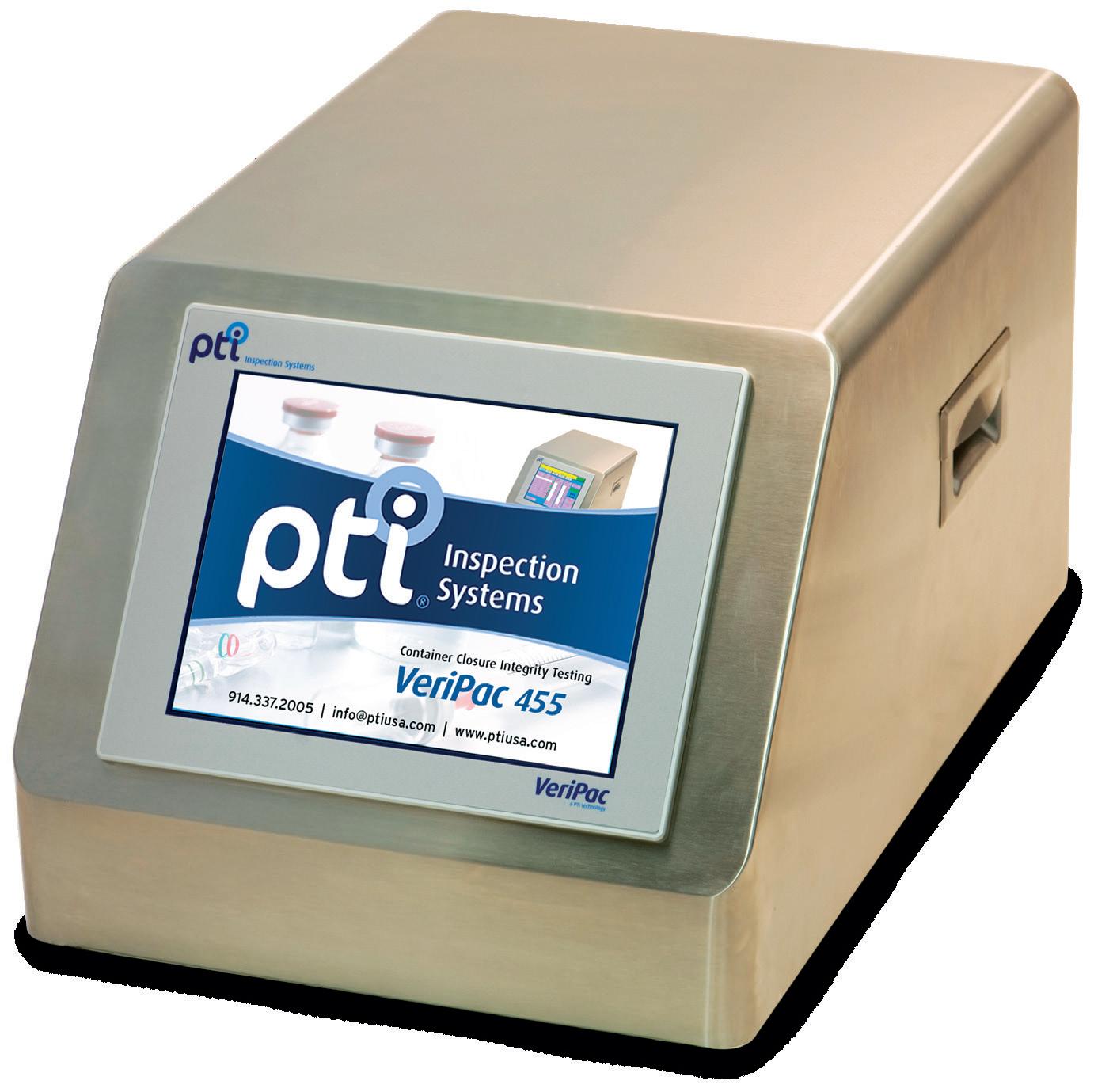
The main advantages of the vacuum decay test are that there is no sample preparation involved – the testing is rapid and non-destructive, and it can be used to detect leaks caused by defects as small as 2 µm. Additionally, it is easy to quickly change between different container configurations, which is advantageous if you have multiple products to test within a short period of time.
However, there needs to be awareness of the properties of the product before using this method as it is unsuitable for products with a high viscosity or large molecules, as they may clog up the defect paths, thus preventing detection of the leak. This could also be the case for solidified products or debris that end up in the leak path and block leak detection. Additionally, in the case of a significant leak, liquid may be accidentally drawn by the system, which could damage the instrument.
The high voltage leak detection (HVLD) method (Figure 2) is an alternative method to vacuum decay that is well suited for products with large molecules or high viscosity. This method works by spinning the filled container and measuring the resistance differential as the instrument probes move up and down the body of the container, which assists in approximating the location of any defects.
As with vacuum decay, this test method can switch between different products quickly, requires no sample preparation and is sensitive to CCI defects down to 2 μm.
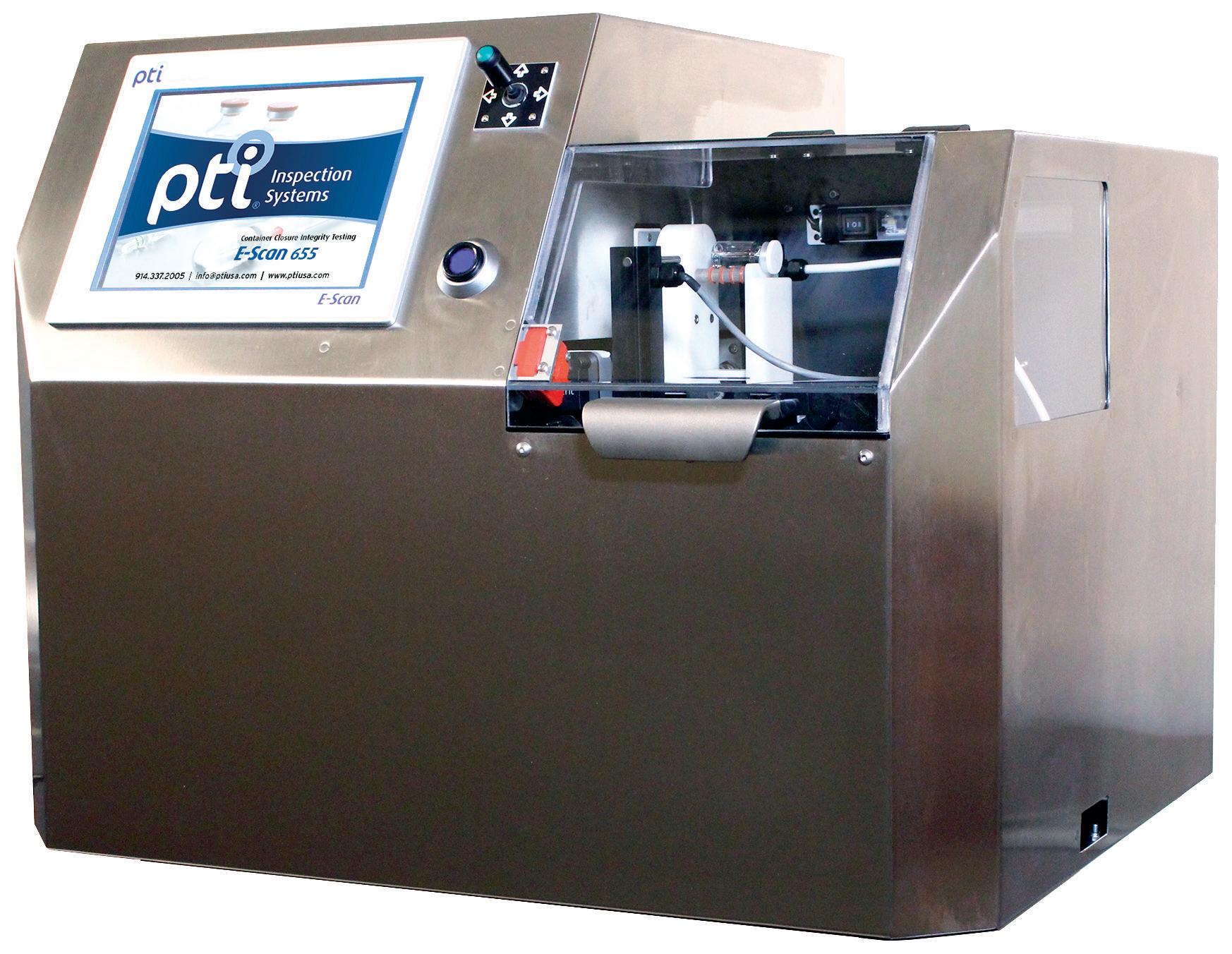
While the test is typically non-destructive, products sensitive to electrical current may be affected during testing.
The main drawback of this method is that at least a 50% fill volume is required within the container to ensure that the inner walls are coated with liquid while the instrument is spinning. The product must also be more conductive than the packaging, and the operation of the equipment requires expertise.
Laser headspace analysis (Figure 3) works by using frequency modulation spectroscopy (FMS) and is often coupled with gas ingress to measure the partial

pressure of carbon dioxide or oxygen gas concentration in the headspace of a product-package system. The technology supports rigid, cylindrical containers, such as vials, and can be used from ambient to cryogenic temperatures.
The main advantage of this methodology is that it can be used to detect transient leaks and temporary defects that occur during storage, even if those transient defects resolve during a temperature change – for example, when going from -80°C back to room temperature. The ingress of the gas has already occurred and can be measured. Similarly to the other two methods, this is a rapid and non-destructive test that can detect defects down to 2 µm and requires no sample preparation.
However, samples with a high fill volume may not be compatible with this method if the headspace is insufficient to allow for the laser to pass through. Additionally, the nature of the packaging itself may limit the feasibility of laser headspace analysis – for example, when using amber-coloured glass.
A hypothetical scenario is an aqueous, electrically conductive small-molecule product filled in a clear, rigid, cylindrical 2R glass vial with a volume of 1 mL. The vial is half full, with at least 3 mm of empty headspace that is atmospheric air. In this situation, all three methodologies would be viable options.
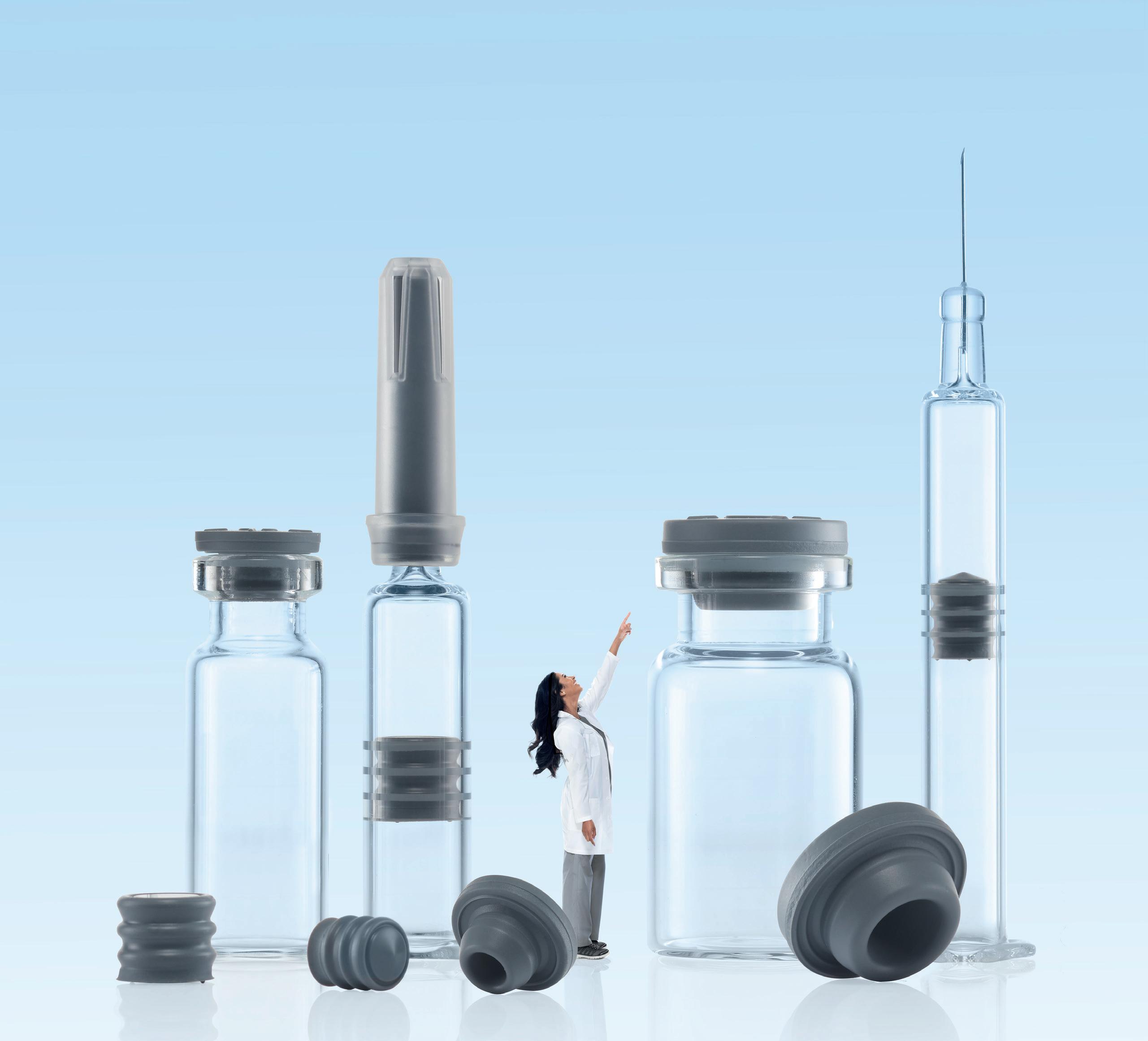
Big health challenges require transformative thinking. At Aptar Pharma, we’re transforming expectations of what an injectables partner can be.
To meet increasing demand and expectations for drug/container compatibility, we’re expanding our manufacturing footprint to deliver billions of additional injectable components each year, including 1 billion PremiumCoat® ETFE film-coated solutions. We’ve already implemented advanced robotics and added new clean rooms to enhance quality and derisk your sensitive drug development.
With our increased capacity and agility, together we can meet the world’s biggest health challenges, today and tomorrow. Join us.

Shaping the future of injectables, together visit www.aptar.com/pharmaceutical
Now, taking the exact same scenario outlined above, but instead using a largemolecule product, vacuum decay would not be advised because the large molecules may obstruct the leak path and prevent detection. If the fill volume of the sample is increased, laser headspace analysis may no longer be appropriate because of the lack of headspace. Therefore, HVLD is the only suitable method for such a situation, thanks to the nature of the container, the electrical conductivity of the solution and adequate fill volume.
All the CCI testing methodologies discussed here are equivalent in terms of efficiency and time; it comes down to pondering the advantages and weaknesses of each method in a given situation. The complexity of the method development depends on the combination of product and container closure system characteristics. Working out the recipe may take more or less time, depending on the situation, but one method does not necessarily take longer than another.
When it comes to choosing the correct CCI testing for a product package configuration, there are some key factors to consider. First, it is necessary to know the key specifications of the packaging: the outer diameter, height, additional components and the forces needed to combine them. This means providing information such as technical drawings and any items or equipment that are specific to the packaging.
“All the CCI testing methodologies discussed here are equivalent in terms of efficiency and time; it comes down to pondering the advantages and weaknesses of each method in a given situation.”
In addition, it is necessary to know about the product characteristics, storage conditions and fill volume, such as the storage temperatures, molecule size, viscosity, conductivity and whether the sample produces any specific gas, which can usually be determined from the raw materials or safety data sheets.
If there are any specific requirements from regulatory bodies – such as a specific defect size or range, whether to demonstrate detection of transient leaks or the need to detect headspace or liquid leaks – Gateway Analytical can assist throughout the method development and feasibility studies of the test methodologies.
Gateway Analytical, an Aptar Pharma company, is a specialised analytical testing laboratory that businesses around the world trust to provide solutions for their most challenging foreign particulate characterisation and materials analysis needs. Gateway Analytical’s expert scientists, specialised test methods and comprehensive suite of instrumentation deliver the fast, accurate and reliable results that customers in the pharmaceutical,
materials and medical device industries demand. With a strong focus on quality, Gateway Analytical is cGMP-compliant, FDA registered and inspected, and Drug Enforcement Administration licensed.
Antonio Scatena has over 13 years of experience in the pharmaceutical and biotechnology industries, occupying scientific, management, business development and sales and marketing roles. Mr Scatena’s expertise centres around testing methods to support parenteral medicine development and manufacturing, specifically visual inspection, primary container closure selection and validation and manufacturing materials compatibility testing. He holds a bachelor’s degree in biochemistry from the Indiana University of Pennsylvania and is the Director of Sales and Marketing at Gateway Analytical, an Aptar Pharma company.

* using Forest Stewardship Council® certified recycled paper, vegetable-based inks, biodegradable laminates and carbon balanced materials offset via the World Land Trust™ following ISO140001 processes.
** by DHL using GoGreen Plus carbon insetting of at least 30% through the use of Sustainable Aviation Fuel (SAF), a biofuel substitute for traditional jet fuel, produced from renewable sources. Mailed to individual readers outside the UK by DHL using GoGreen, which offsets 100% of CO2 emissions.

In this article, Nelson Quintana, Director, Drug Delivery Programs at Altaviz, discusses how AltaVISC delivery technology reaps the benefits of gas-powered drive systems over traditional spring-based systems for autoinjectors to offer a highly flexible platform technology for drug developers, allowing them to optimise their formulations within a wider range of delivery device specifications.
Patient-centric approaches are driving researchers to carefully balance the connected elements of drug concentration, viscosity and delivery volume in their ongoing efforts to optimise pharmacological dosing levels. To ascertain whether they can successfully accomplish their goals, they also need to assess the limitations of the current drug delivery landscape. The pursuit of more patient-friendly, longer-acting therapies is driving the development of treatments with increased delivery volumes and viscosities.
With higher viscosity and larger volumes, standard spring-powered autoinjectors must employ bigger springs to deliver their therapies in a reasonable time, which results in increased impact forces, leading to syringe breakage in conventional prefilled syringes (PFSs). Additionally, companies are being forced to gravitate towards the use of high-performance polymer syringes as a substitute to glass syringes due to the need for increased toughness. Doing so comes with significant costs and regulatory challenges, as this restriction presents a major obstacle in the development of novel medications.
The significant forces generated by larger springs also necessitates careful study of the delivery techniques for these high-volume and high-viscosity medicines. Furthermore, the loud impact noise generated during delivery can negatively affect the user
“There is an urgent need for a next-generation drug delivery technology that surpasses the capabilities of legacy technologies.”
experience, particularly for patients with a fear of injections. Therefore, there is an urgent need for a next-generation drug delivery technology that surpasses the capabilities of legacy technologies and is capable of supporting the current evolution of drug delivery development.
Companies are confronted with the question, “Is there an adequate delivery technology that can fulfil these requirements, support future formulation development, minimise the need to overhaul current devices and expand the therapies that can be delivered in standard glass primary containers?” The simple answer is yes – gas power. With a gas-powered AltaVISC drug delivery system, using Picocyl’s (Golden, CO, US) Pico-Cylinder gas cylinders, one size truly can fit all.
The AltaVISC gas-powered delivery system marks a substantial leap in next-generation drug delivery technology, offering many advantages over conventional spring-

Nelson Quintana
Director, Drug Delivery Programs
T: +1 858 373 7861
E: nelson@altaviz.com
Altaviz
13766 Alton Pkwy #143 Irvine CA 92618
United States
www.altaviz.com
Handling of low to ultra-high viscosities
Payload volumes
Customisable performance
1–5,000 cP as standard, however, viscosities up to 500,000 cP have been demonstrated.
Volumes up to 5 mL with standard syringes. Other volumes possible with custom syringes.
Ease of performance can be tuned for different viscosities to achieve different delivery times by just changing the pressure in the Picocyl gas cylinder.
Standard syringe sizes 1–2.25 mL and 5 mL ISO 11040 standard syringe sizes.
Primary drug container performance expansion
Ability to use standard primary glass drug containers for a wider range of high-viscosity and high-volume formulations. Even higher viscosities and volumes can be delivered by switching to polymer syringes.
Sustainability oriented No large springs required, less need for performance plastics and uses inert gases that have no global warming potential.
Easier customisation
Future-proof
Use of smaller needles
Versatile gas-powered engine
Gas-powered engine can be implemented into various therapy delivery methods, such as on-body delivery systems and handheld infusion systems.
Ability to handle extremely large-viscosity and large-volume ranges, as well as supporting emerging technologies, such as sequential and reconstitution therapies. Allows researchers to focus on formulations over delivery technology.
Ability to use standard needle gauges as well as smaller needle sizes due to increased gas-powered performance.
The gas-powered engine can be implemented into other methods of drug delivery for maximum product development flexibility.
powered devices (Table 1).1 By enabling both the use of smaller gauge needles, even for drugs with higher viscosities, and emerging therapeutic approaches, such as sequential administration and reconstitution, these gas-powered devices aim to reduce pain and enhance patient comfort. The consistent and controlled injection process that gas power provides ensures reliable and precise drug delivery.
AltaVISC’s user-friendly design, featuring soft-start technology, simplifies the injection process, leading to a comfortable user experience and better therapy compliance. Furthermore, since the energy source is stored within the Pico-Cylinder until time of use, the need for costly, high-performance polymers to mitigate the strain inherent in the storage of high force springs is eliminated.
A significant advantage of gaspower technology is the integration and expansion of existing and future product pipelines into a single device configuration. This versatility minimises the impact on upstream and downstream processes, including tooling, inventory management, automation, validation and the complex procedures required for changeovers to accommodate varying viscosities and delivery rates.2 Remarkably, these adjustments can be accomplished with a simple modification of gas pressure within the Pico-Cylinder.
“A simple adjustment of gas pressure can tailor the autoinjector delivery time to mimic early-stage trial results, which can then minimise regulatory hurdles and setbacks.”
The versatility of the gas-powered drive system allows pharmaceutical companies to efficiently transition therapies developed during preclinical and early-stage trials to autoinjectors without needing to redo lengthy biocompatibility and stability studies. A simple adjustment of gas pressure can tailor the autoinjector delivery time to mimic early-stage trial results, which can then minimise regulatory hurdles and setbacks.
The inherent gentle start of gas-powered delivery ensures that the impact force never exceeds the delivery force and maximises the viscosity range of formulations that can be delivered using standard glass PFSs. The high forces needed for delivering large volumes or highly viscous fluids, which used to raise concerns about switching the drug container due to the risk of breakage, can now be reduced by using gas power to control the delivery process.
Primary glass PFS containers in springdriven systems experience a force spike caused by the plunger rod accelerating into the stopper. In contrast, a gaspowered system offers a gentle soft-start and controlled delivery, thereby expanding the operational window of currently used primary drug containers and prolonging their useful life in a product offering. The floating low-mass plunger rod approach in the AltaVISC system reduces the gap to the stopper and the inertia of the plunger rod to limit the impact force on the syringe to below the force required to deliver the drug.
To illustrate the advantages of the AltaVISC soft-start technology, the MATLAB simulation shown in Figure 1 compares two delivery profiles – the AltaVISC system and a traditional springdriven system, both configured to deliver 2 mL of 100 cP fluid through a ½" 27G needle.3 The simulation results indicate that, while the overall force required to deliver the drug is similar across technologies, the initial impact force of
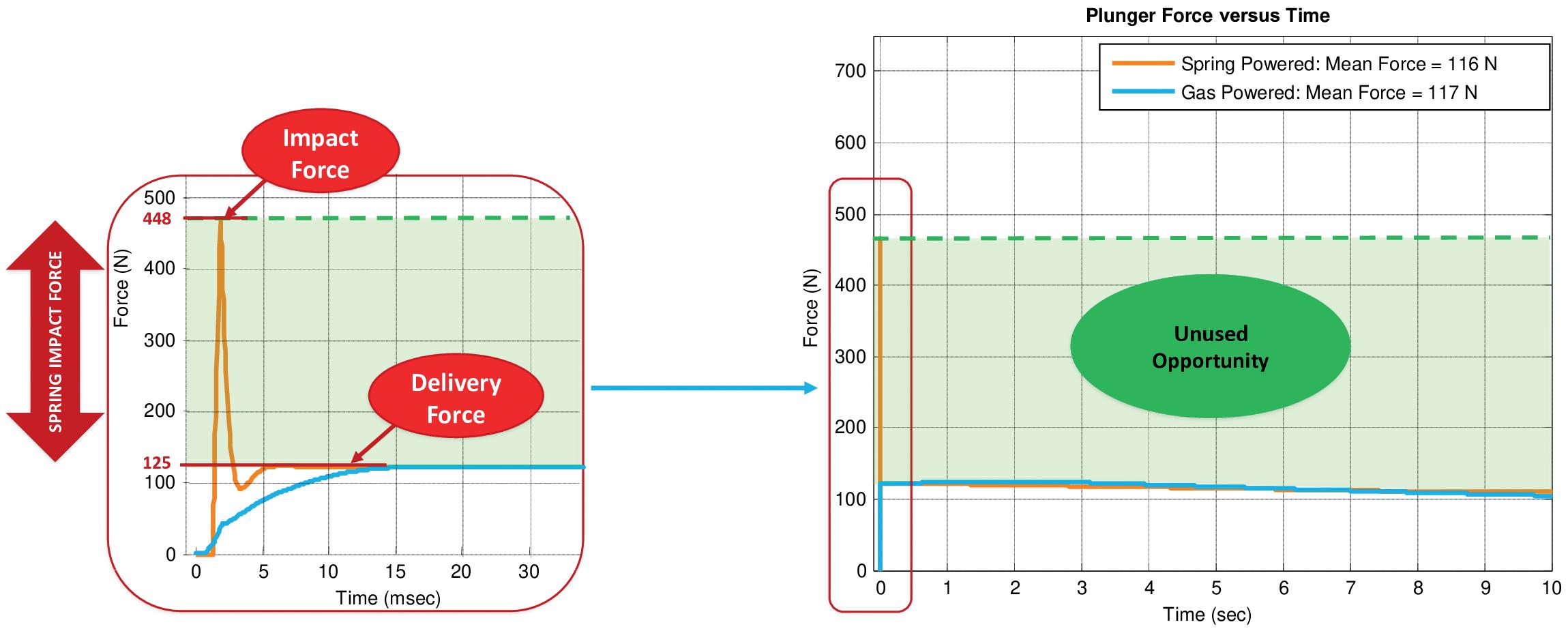
the spring-based system is four times higher than the delivery force. This spike in impact force increases the risk of syringe breakage and creates an unpleasant patient experience due to the force and noise generated when the plunger rod strikes the syringe stopper. Alternatively, the gaspowered system exhibits a smooth ramp up to the delivery force (blue line, left graph), minimising the stress on the primary container and thereby expanding the operational window of the delivery system as shown (green line, right graph).
A fixture (Figure 2) equipped with a load cell and a data acquisition system (4.8 kHz) was developed to measure the actual forces applied directly to the syringe stopper, highlighting the significant difference between the AltaVISC gas-powered delivery system engine and a traditional spring-based system. The fixture also has the capability to add a gap in between the plunger rod and stopper to replicate current spring-powered devices.

To demonstrate the flexibility of soft-start technology, an impact test was performed with two vastly different viscosities (10 and 500 cP) with a 5 mm
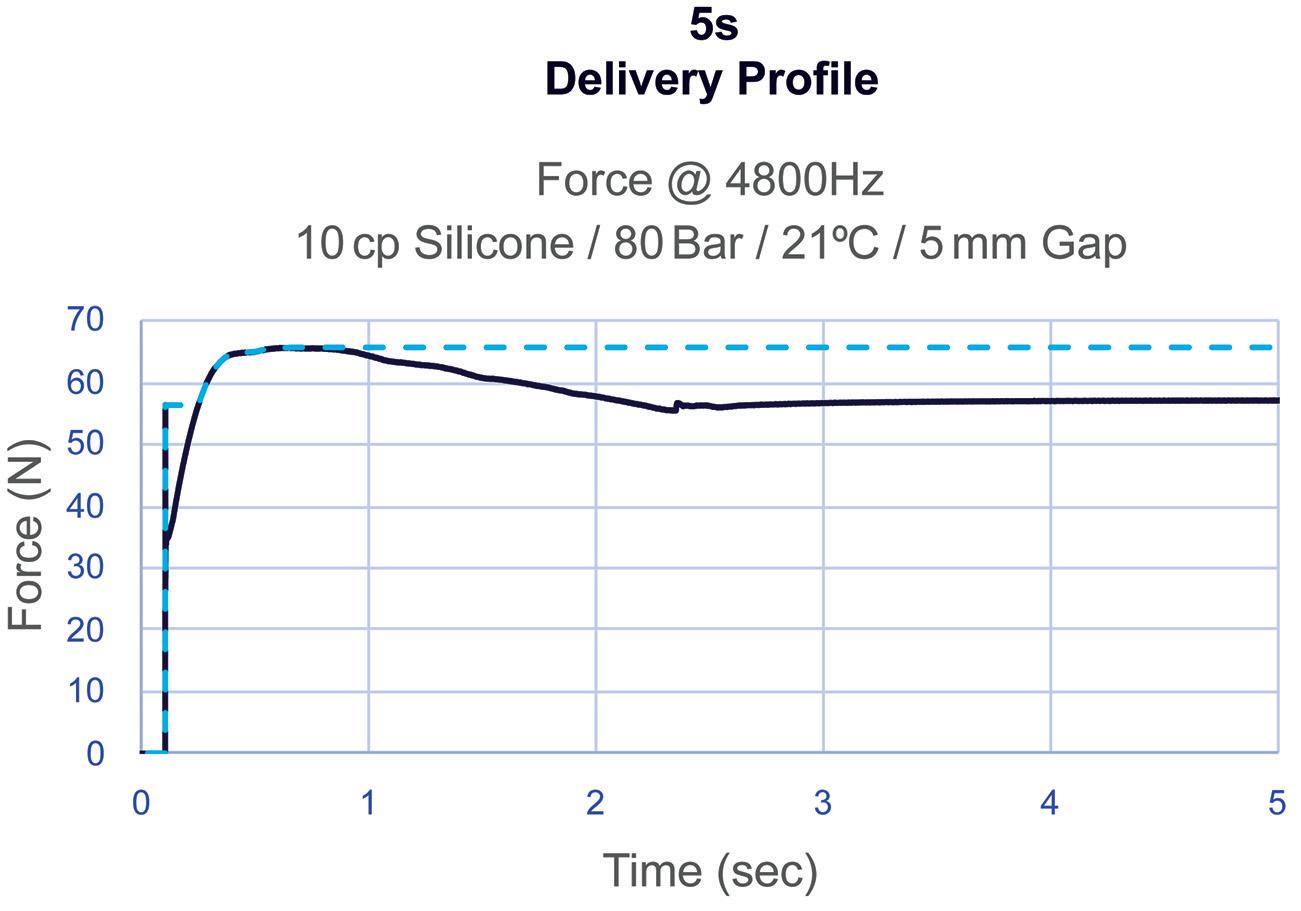
gap, as is commonly used in traditional spring-powered systems, using a 2 mL volume in a 2.25 mL syringe with a ½" 27G needle. As shown in Figure 3, even
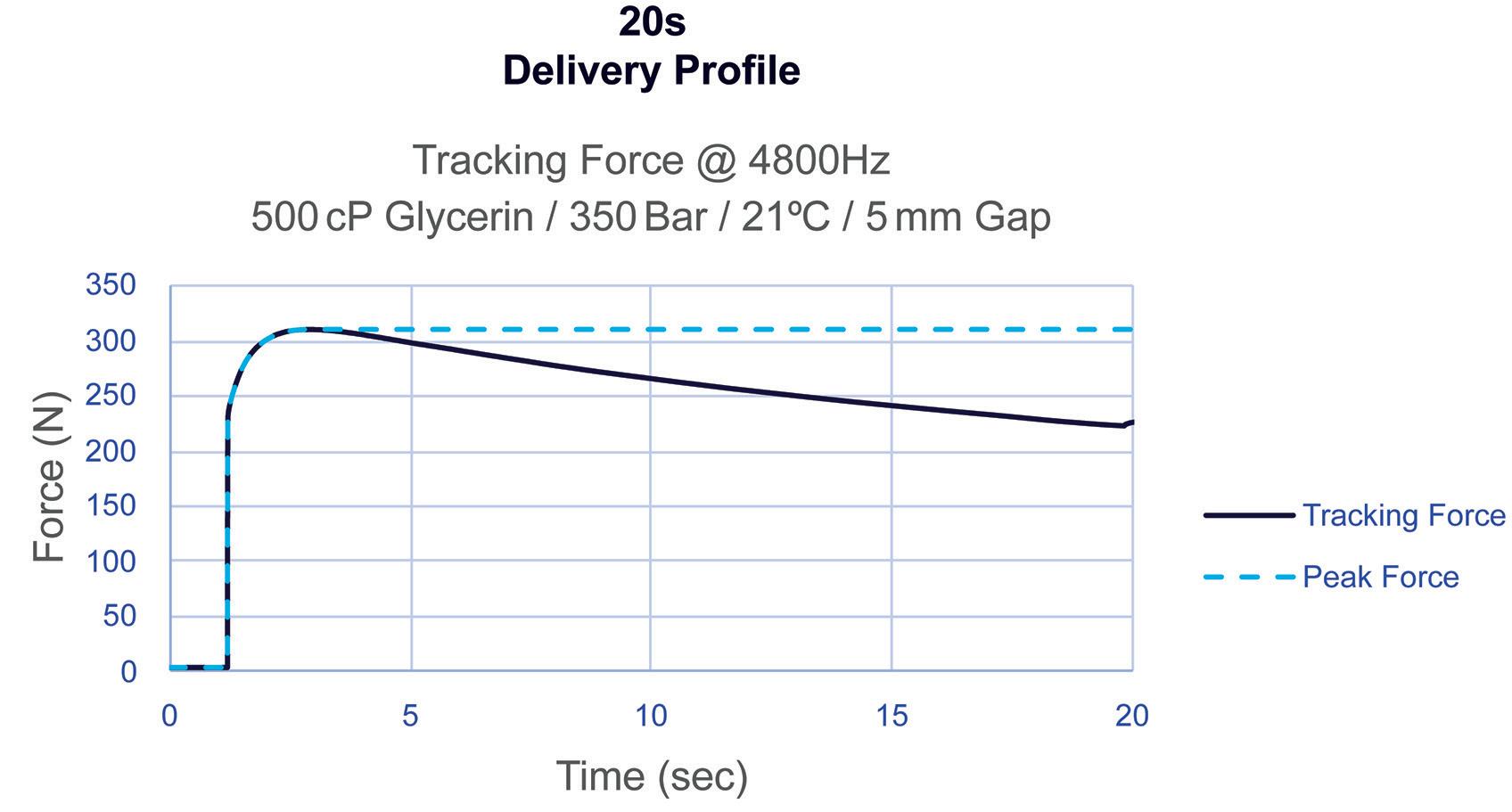
with a low viscosity of 10 cP delivered at 80 bar with a 5 mm gap, the impact force remains below the maximum delivery force. Similarly, with an ultra-high viscosity of 500 cP delivered at 350 bar with the same gap, no significant impact force is observed. These results demonstrate the robustness of the delivery system across a wide range of viscosities, maintaining controlled force levels under varying assembly conditions. This is of enormous benefit to glass-PFS-based devices.
In contrast, Figure 4 illustrates a 40 N spring-powered system delivering a 2 mL volume in a 2.25 mL syringe with a ½" 27G needle. Due to the inherent nature of spring energy release, the initial force exerted on the stopper significantly exceeds the force required to deliver the drug. This effect becomes more pronounced for higher-viscosity and higher-volume applications, which require stronger springs to meet the target delivery times. This relationship is a major contributor to syringe breakage in spring-powered systems and the need to consider alternative primary container materials, highlighting the limitations of spring technology for delivering high viscosity or high-volume drugs.
As shown in Figure 1, the spring-powered system at 100 cP generates an impact force of approximately 448 N, despite this being at only one-fifth of the viscosity of the 500 cP test in Figure 3 using gas power. Notably, the impact force at 100 cP with the spring-powered system is
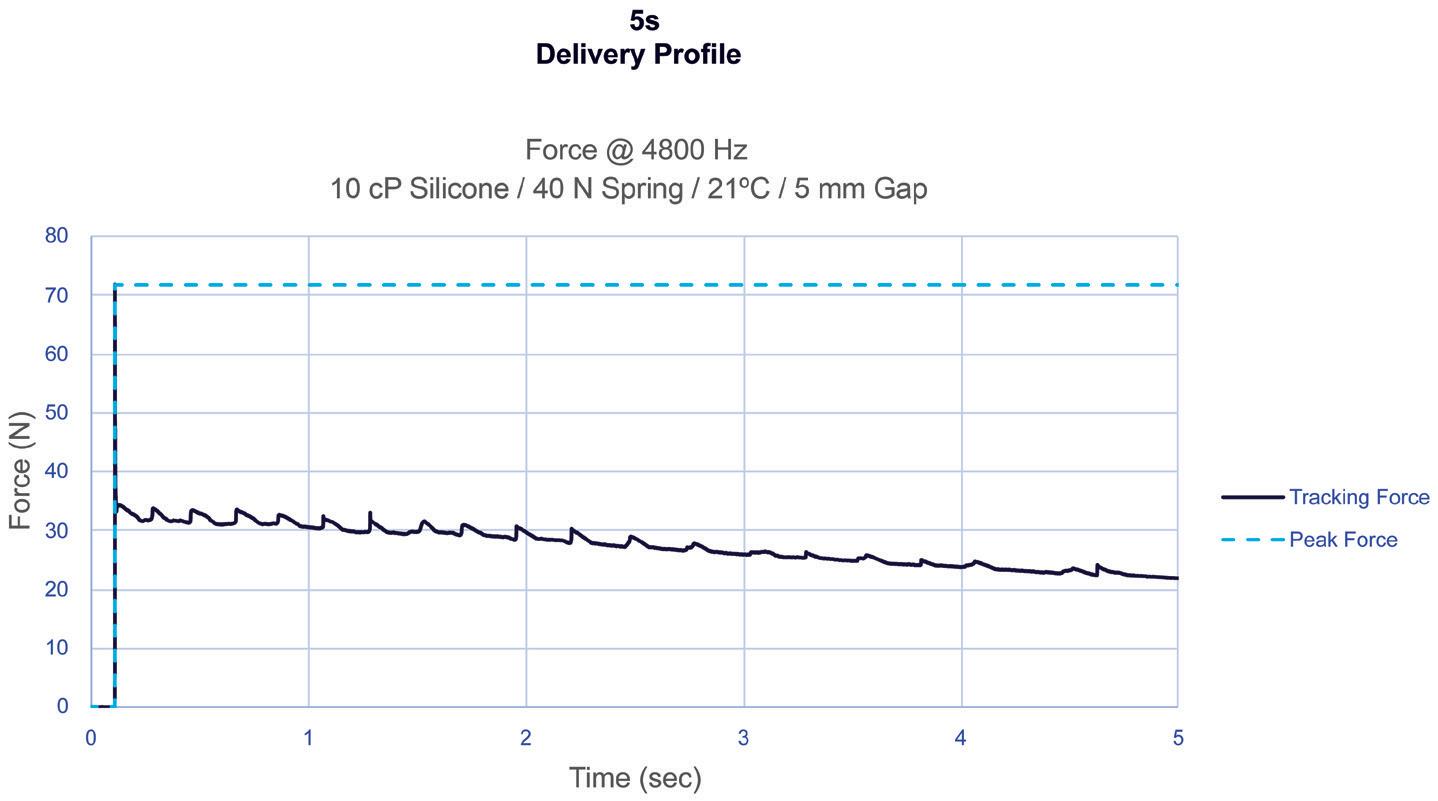
323 N higher than the total force of 125 N required to deliver the much higher viscosity of 500 cP with a gas-powered system (Figure 3). This comparison highlights the significant limitations of spring-powered systems compared with the gas-powered AltaVISC system.
The AltaVISC drug delivery system is a next-generation technology standard that supports the delivery of new therapies without sacrificing performance for the foreseeable future. Using the same system architecture, the AltaVISC system
can meet a variety of different delivery requirements by simply altering the pressure inside the gas cylinder.
Figure 5 shows a tuned delivery time target at different viscosities achieved with only a Pico-Cylinder pressure change, illustrating the precise tunability and flexibility of the AltaVISC drug delivery system. In this experiment, 2 mL of glycerol with varying viscosities were delivered via an AltaVISC system using a 2.25 mL syringe and a ½" 27G thin-wall needle, targeting a distinct delivery time of 18 seconds. The device configuration remained the same, and performance adjustments were achieved solely by modifying the internal pressure of the Pico-Cylinder.
“By overcoming the limitations and risks associated with springpowered systems when increasing viscosities and volumes, companies can now explore the use of smaller needle gauges, which were previously deemed unfeasible.”
During the first series of tests, five syringes were tested for each viscosity level (60–500 cP) to demonstrate that an 18 second delivery time can be consistently attained by adjusting the Pico-Cylinder gas pressure, regardless of the viscosity. This flexibility expands the allowable formulation parameters, allowing scientists to concentrate fully on optimising formulation development. The data also illustrate the various combinations of gas pressures and viscosities that can be finetuned to achieve a desired delivery time, optimising both user experience and the syringe’s performance window.
This performance also underscores a significant advantage of gas-powered systems. By overcoming the limitations and risks associated with spring-powered systems when increasing viscosities and volumes, companies can now explore the use of smaller needle gauges, which were previously deemed unfeasible. This advancement not only broadens design possibilities but also reduces patient discomfort by eliminating the need to increase needle gauge due to the constraints of spring-powered systems.
The AltaVISC delivers high-viscosity and high-volume drug formulations using
small-gauge needles – regardless of the viscosity or volume of a therapy, meaning that the user experience is always at the forefront of consideration. Smaller gauge needles can help improve pain tolerability, precision and control, as well as minimise the psychological effects on users. Companies now have the additional flexibility of choosing which needle gauge size is the best fit for their subcutaneous or intramuscular delivery approaches.
Human factors and user experience are crucial in advancing high-performance drug delivery systems, ensuring that products are tailored to the needs, capabilities and limitations of users, thereby enhancing usability, safety and overall performance. A prevailing concern in the industry is the reluctance of companies to be early adopters of innovative technology. To help address this, the development of the cutting-edge AltaVISC framework emphasises human factors and userexperience engineering, ensuring that devices are not only safe but also userfriendly and effective, while maintaining a familiar workflow for users of legacy spring-powered autoinjectors.
By preserving consistent user workflows across various products, Altaviz facilitates seamless transitions between devices, minimising the need for extensive retraining, particularly for those accustomed to spring-powered systems. The AltaVISC system effectively combines the benefits of a high-performance gas-powered engine
with the ease of use found in legacy spring-powered autoinjectors, successfully addressing challenges associated with higher viscosity and higher-volume applications. The soft-start mechanism of the gaspowered drug delivery system facilitates the ability to reduce needle size thereby reducing pain while also further improving the patient experience by eliminating the jarring impact force and noise associated with spring driven systems.
Currently, there is a significant lack of information regarding the user experience with high-volume, high-viscosity drug delivery applications, particularly in understanding the thresholds of volume, viscosity and delivery time that an enduser can tolerate. This gap in knowledge largely stems from the absence of highperformance devices that are both configurable and capable of successfully meeting these demanding parameters. The introduction of the AltaVISC drug delivery system addresses this need, enabling the industry to begin collecting critical usability data that will help guide the development of new therapies.
The AltaVISC framework represents the future of drug delivery systems. This evolution in flexible and customisable next-generation technology can help companies to get to market sooner by allowing the focus to be on formulation development and not worry about the suitability of current delivery limitations or having to find a suitable technology.
“The AltaVISC system effectively combines the benefits of a high-performance gas-powered engine with the ease of use found in legacy spring-powered autoinjectors.”
At the core of the AltaVISC system is the gas-powered Pico-Cylinder. Released to the market in 2017, with over 10 million units in the field without a single failure, the Pico-Cylinder has a five-year shelf life ensuring a reliable delivery for even the most critical applications. Coupled with the Pico-Cylinder power source, the AltaVISC drug delivery system is poised to lead the future of drug delivery technology.
Altaviz develops and manufactures technologies and products for the pharmaceutical, biotechnology, medical device and other specialised healthcare segments requiring high performance and innovation in an ISO 13485 environment. As experts in next-generation gas-powered devices, Altaviz applies its technical and
application accelerators or develop custom solutions that can now be resolved with the application of the robust performance of the Pico-Cylinder.
1. Whelton R, Green P, “Autoinjectors: Historical Achievements and Compelling Needs Driving Next-Generation Devices”.
ONdrugDelivery, Issue 138 (Oct 2022), pp 14–17.
2. Welch W, “Advancements and Evolution of Power Sources in Drug Delivery”. ONdrugDelivery, Issue 133 (May 2022), pp 57–60.
3. McCawley M, Lavin A, “Gas-powered autoinjector platform enables biologics drug delivery”. ONdrugDelivery, Issue 138 (Oct 2023), pp 50–54.
Nelson Quintana is Director, Drug Delivery Programs at Altaviz and boasts over 27 years of experience in groundbreaking technology development, covering diverse areas such as medical devices, drug delivery, semiconductors and robotics. As a seasoned mechanical engineer, Mr Quintana is passionate about smaller, high-performance/ impact companies, contributing leadership in scientific research, engineering, product development, project management and innovation. With a background spanning



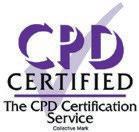




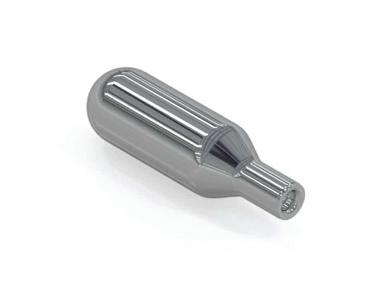
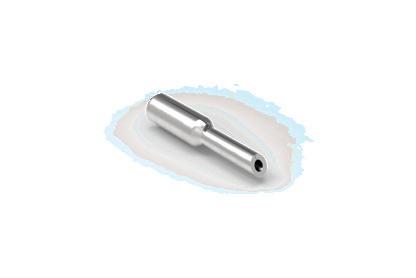

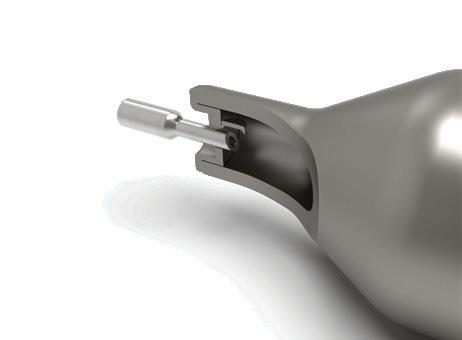
In this article, Nourhène Esseghir, Development Projects Manager, Alexandre Fontayne, PhD, Chief Scientist Officer for Biological Products, and Laury Livemont, Group Development Projects Manager, all at Unither Pharmaceuticals, discuss the performance and benefits of the company’s Euroject® injection system.
Injection systems available on the market, such as solutions for reconstitution in vials, prefilled syringes (PFSs) and multidose vials, have been used for decades. Unither designed Euroject® in a bid to revolutionise injectable products. It is a blow-fill-seal (BFS)-based prefilled singledose vial injection system that allows direct administration without withdrawing the solution and adjusting the volume before injection, reducing the risk of errors.
BFS technology ensures continuous fillfinish of therapeutics in polymer unit doses for single use. The fully automated and aseptic BFS process allows the production of enormous numbers of units within a short period of time. Unither has a current production capacity of five billion doses per year. This manufacturing technology is a cost-effective fill-finish solution compared
“The fully automated and aseptic BFS process allows the production of enormous numbers of units within a short period of time.”
with traditional manufacturing methods for producing multidose glass vials and PFSs. BFS technology significantly enhances access to healthcare, especially in low- and middle-income countries. This innovation helps to meet high demand quickly and increases the affordability of vaccines and injectables, improving global health outcomes.
The innovative Euroject injection device is a ready-to-use, preservative-free injection system that is easy to handle, efficient and does not require any lubricant, such as polytetrafluoroethylene (PTFE). Additionally, Euroject maintains strong competitiveness in its cost of goods sold (COGS), eliminating the 5–10% overfill necessary for multidose products. Furthermore, healthcare labour time is reduced because no manipulation is needed, as it is a ready-to-use, prefilled single-dose vial.
It is worth noting that the lightweight and compact nature of plastic containers from BFS reduces the likelihood of breakages, simplifying both transportation and storage. This contributes to a reduction in the carbon footprint. In addition, the BFS plastic container is made up of a recyclable mono-material and has a positive impact on the freezing time, allowing the optimisation of the cold chain.
Nourhène Esseghir Development Projects Manager E: nourhene.esseghir-seghaier @unither-pharma.com
Dr Alexandre Fontayne Chief Scientist Officer for Biological Products E: alexandre.fontayne.ext @unither-pharma.com
Laury Livemont
Group Development Projects Manager
E: laury.livemont @unither-pharma.com
Unither Pharmaceuticals
3–5 rue Saint Georges
75009 Paris France
www.unither-pharma.com
To assess Euroject’s usability and injection performance, an evaluation of the system was carried out to determine multiple parameters, such as ease of the prefilled single-dose opening, connection tightness of the different components of the device, injection angle, delivery time and dead space (Figure 1). The results were analysed with reference to the different existing guidelines.
The BFS prefilled single-dose vial opening was conducted with a torquemeter and resulted in an opening torque that varied between 13 and 17 Ncm. This range agrees with the force necessary to open prefilled, single-dose BFS vials that are commercially available for other medicines, such as eye drops.
The tightness of connection between the BFS prefilled single-dose vial and the connector was evaluated by an overpressure test, according to ISO 80369. All tests were compliant; the connection between the Euroject BFS prefilled single-dose vial and the connector was tight while applying a pressure of 3 bar to the system. This test confirms that the device can be used for direct injection and that the product will be delivered in its entirety to the patient once the Euroject is squeezed.
The optimal usage of Euroject was assessed to achieve the best performance when administering the injection from the prefilled single-dose vial by varying the administration angle to the horizontal. As a result, the injected volume into the air or a skin pad was not impacted when the angle was between 45° and 90°. These results diverge from the traditional injection technique, which allows for horizontal syringe applications, such as vaccinations administered in the arm.
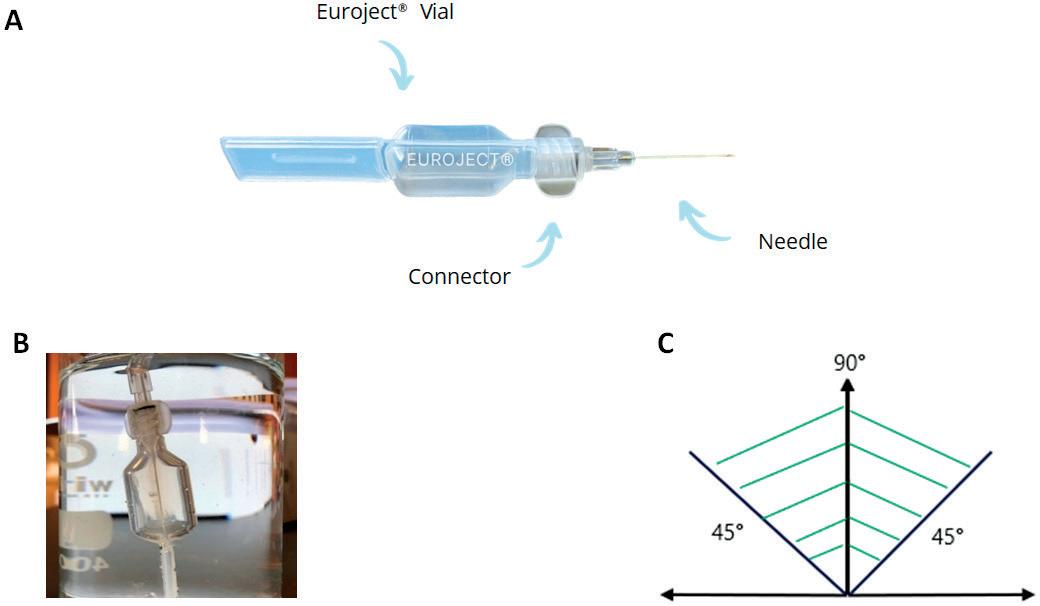
Figure 1: The Euroject injection device and its different components (A). The experimental set-up to evaluate the tight connection between the Euroject vial and the connector (B). The 45–90° injection angle, from the horizontal, allows for optimal performance of the Euroject injection device (C).
To ensure that this method was not a limitation, a preliminary survey was conducted with healthcare professionals. Two nurses and six physicians participated in the survey; all of them had experience practising medicine and performing vaccinations in low-income countries. The participants were given an opportunity to test the prototype device after reviewing the provided instruction leaflet. Subsequently, the injection test was divided into two segments for usability testing:
• Preparation of the injection device
• Injection using the injection device.
The device was received positively by the participants, as they found the device to be user friendly, fast and efficient, deeming it both functional and useful. Moreover, the new method of administration was not seen as a challenge in their practice.
“The injected volume into the air or a skin pad was not impacted when the angle was between 45 and 90°.”
In the next step, the Euroject device’s performance was evaluated, with more than 3,800 BFS prefilled single-dose vials used during the study. The impact of the injection system (needle-connector) using different rings for a tight connection and different gauges in length and diameter (22G 1.5"; 25G 5/8"; 25G 1") for different types of injection (intramuscular, subcutaneous and intradermal) was assessed.
A force of 15N was used, as recommended by the Program for Appropriate Technology in Health (PATH) for repetitive injections, so that the majority
of users can deliver the intended prefilled single dose and ensure patient safety. Independently of the ring and of the needle size, the delivered volume was measured at 0.43 mL with a 95% confidence interval (CI) (0.428–0.430 mL) and a total loss of 0.06 mL. These results confirmed that the Euroject system is compliant with the ISO 7886–1 standard for dead volume.
Interestingly, with the Euroject injection system, the total loss in the system was 0.06 mL. This amount of loss includes what was left in the vial and in the needle. Since the Euroject system uses air to deliver the solution and not a plunger, the solution that remains in the needle is nearly zero, and the loss or dead volume corresponds mainly to the solution that remains on the vial’s walls. Therefore, the Euroject injection system is completely in line with WHO guidelines for HIV and hepatitis C (HCV) prevention, thanks to low dead space syringe and needles (LDSS/N). It is hypothesised that LDSS can reduce HIV and HCV transmission risk, as experiments showed that the volume of the residual fluid (blood) in the syringe following injection is a key factor in the survival of these viruses in syringes.
The time needed to empty the Euroject injection system was also assessed and recorded during trials. Statistical analyses showed that needle size impacts delivery time. Indeed, in the experimental set-up, a needle hub with a 22G 1" needle allowed the delivery of the entire volume in two seconds (Table 1). This duration
is directly proportional to the length and indirectly proportional to the diameter. However, neither the injection pad, speed of the injection, injection force nor any other parameter impacted the delivered volume.
Across all the tests performed with Euroject, using a volume of water mimicking the most represented volume in intramuscular vaccine injection, it was demonstrated that Unither’s device is compliant with the standards and guidelines set forth for injection devices.
In summary, Euroject is a BFS-based, prefilled single-dose vial that has the following compelling properties, among others:
• Competitive COGS
• High production rate
• No risk of breakage during transport or administration
• Reduced transport weight
Table 1: Main performance attributes of the Euroject injection device.
• Easy to handle
• No risk of dose accuracy
• No preservatives and additives, such as lubricant
• Compatible with all standard safety caps.
Considering various viscosities and dosages of medications, Unither and its development teams can assist pharmaceutical and biotech companies in assessing and modifying Euroject to suit their production needs and for use in therapy and vaccine applications.
“Across all the tests performed with Euroject... it was demonstrated that Unither’s device is compliant with the standards and guidelines set forth for injection devices.”



Unither Pharmaceuticals is a pharmaceutical subcontractor specialising in the development and manufacturing of single and multidose liquid formulations (including eye drops, saline solutions, asthma medications in BFS single doses and oral liquid stick-packs) for originator pharmaceutical companies and generic manufacturers. Recent innovations have led the contract design and manufacturing organisation to launch Euroject – an innovative BFS-based device for single-dose injection of therapeutics. With 2,200 employees and eight manufacturing plants across France, the US, Brazil and China, Unither Pharmaceuticals reported sales of €475 million (£406 million) in 2023.
Nourhène Esseghir is a Development Projects Manager at Unither Pharmaceuticals, leading project development since May 2022. With a robust background in pharmaceutical formulation and development, she has held managerial roles at a variety of companies in France. Ms Esseghir’s expertise includes establishing formulation laboratories, project piloting and creating strategic partnerships. She holds a master’s degree in Pharmaceutical Technology from Université Paris Cité (Paris, France) and a doctorate in Pharmacy from Faculté de Pharmacie de Monastir (Tunisia). Passionate about advancing pharmaceutical innovations, she uses her analytical skills and industry experience to improve patient outcomes.
Alexandre Fontayne, PhD, has worked for Unither Pharmaceuticals as Chief Scientific Officer for biological products since 2021 and is deeply involved in the development of the Euroject device. He received his PhD in Biological Science at Université Paris Sud (Paris, France) and has 20 years of experience in research and development, including 13 years in the pharmaceutical industry working on drug design and bioproduction of biologics, including ublituximab. Dr Fontayne is co-author of 28 scientific articles and holds 12 patents. He contributes to the training of students and employees in drug design, chemistry, manufacturing and controls activities and subcontracting.
Laury Livemont currently serves as the Group Development Projects Manager at Unither Pharmaceuticals. An experienced project manager in the pharmaceutical industry, she has led the Euroject project since September 2021. With over 20 years at Unither, Ms Livemont has held roles such as Corporate Project Manager and Pharmaceutical Development Manager. Her career also includes positions at Auchan and L’Oréal, where she developed new products and managed quality assurance. Ms Livemont holds an engineering degree in Chemistry from École des Hautes Études d’Ingénieur (Lille, France) and a management diploma from Institut Français de Gestion (Paris, France).




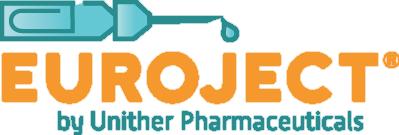
by Unither Pharmaceuticals





Adaptable
Different
Recyclable monomaterial









In this exclusive interview, Scott Ariagno talks with ONdrugDelivery’s Guy Furness about the role that contract development organisations play in the drug delivery industry ecosystem and how independent expertise can enable companies like EdgeOne Medical to troubleshoot and accelerate product development by bringing fresh eyes, an unbiased perspective and extensive expertise to bear on a development project. Furthermore, Mr Ariagno goes into detail on the unique advantages that EdgeOne can offer over others in the field.

Scott Ariagno is Vice-President of Engineering and Development Services at EdgeOne Medical and has over 25 years’ experience in medical device and combination product design, development and manufacturing. His expertise includes development and global launch of various single-use, disposable medical devices, infusion systems and combination products, strategic/technical development of device platforms and intellectual property development. Throughout his career, he has held management roles in engineering, including heading device development at Baxalta (a subsidiary of Shire, now Takeda). Mr Ariagno is a named inventor on over 20 patents and applications. He has a Bachelor of Science degree in Mechanical Engineering from Bradley University (Peoria, IL, US) and a Master in Engineering Management from Northwestern University (IL, US).
QMany of our readers will be familiar with EdgeOne Medical already but, for those who aren’t, please could you begin by providing an overview of the company and its culture?
AEdgeOne Medical is an ISO 13485-certified medical device contract development organisation, or CDO. What that means is that we’re in the business of supporting medical devices and combination products at any stage of their lifecycle. Customers come to us in the early concept design stages, and other times they’re looking for support in the planning and verification stages. We’ve even been brought in much later, such as during manufacturing transfers or resolving design or manufacturing flaws for marketed products.
EdgeOne has deep knowledge across a wide variety of drug delivery platforms and across all stages of their development,
including autoinjectors, pen injectors, prefilled syringes, on-body injectors and inhalers. We also work on complex systems consisting of electromechanical hardware, software and disposables that are used to deliver cutting-edge gene therapies across the blood-brain barrier to systems that are designed to replace organs.
Since the company’s founding in 2012, we’ve worked with many, many pharma companies, from small biotech start-ups to big pharma. That variety really keeps us
“We strive to be humorously serious, meaning that we’re both passionate about what we do and that we always let our humour shine through in the work that we do.”
on our toes and our skills sharp, especially when working with biotech firms that are developing bleeding-edge technologies.
Regarding our culture, I would say that it’s rooted in our core company values. The thing that we really hold near and dear is making sure we’re a tight-knit team –we’re really focused on building trusting relationships, both within our team and with our clients. Second, we strive to be humorously serious, meaning that we’re both passionate about what we do and that we always let our humour shine through in the work that we do.
Another key thing we do at EdgeOne is ensure that what we say is grounded in data – right at the heart of our culture is our engineering laboratory and all the testing we do there. We understand that it’s always critical to demonstrate and back up our conclusions and recommendations with data. This is especially important when we’re delivering bad news, such as a client having picked the wrong delivery system for their specific drug, or one that’s incapable of meeting a design requirement. We make sure to communicate with a human element that covers the logical thought process with data, but also remains respectful and straightforward.
QAnd how about your own career, what’s your background in the drug delivery sector and current role at EdgeOne?
AMy educational background is mechanical engineering. I spent the early years of my career deeply engrossed in computer-aided design. Working at a top medical device company, I took several medical devices all the way from a back-of-a-napkin sketch idea through to a commercially launched product. I’m especially proud of my work in the field of vial-access devices; I’ve spent a lot of time trying to figure out optimal ways to access drug products from vials. I’ve come up with some really clever systems that have been successfully commercialised and improved the patient experience over many years on market. To this day, that design aspect remains my true passion, and I find ways to reconnect with that as often as I can.
Another really valuable aspect of the middle of my career was gaining deep and meaningful experience with manufacturing. I learned the arts of moulding, machining, bonding, automated assembly – all the nuances of how to design robust manufacturing processes and how to debug them.
Today, I take all those foundational experiences in design, testing and manufacturing and apply them to my current role as Vice-President of Engineering at EdgeOne, working closely with a talented team of engineers. While I’ve always preferred a hands-on approach, which means I gravitate to the laboratory and the high-tech tools, I now combine that with leading and mentoring the team, ensuring that the team make the breakthroughs we need together. That can mean anything from working with high-speed video or computer tomography scanning through to 3D printing or implementing some unique sensors into a laboratory experiment. I really get a kick out of learning through that handson approach and putting a device through its paces. The depth and breadth of my background enables me to lead the team to solve EdgeOne’s clients’ most difficult challenges.
QCould you outline the fundamental rationale for engaging an independent expert for drug delivery product development and describe the solutions that EdgeOne offers?
AOne of the fundamental things to keep in mind is that drug delivery product development is, at its core, a risky endeavour. That applies whether you’re going from scratch or trying to put your latest drug into a popular prefilled syringe platform. It all comes with some level of risk. It’s your job and duty as the product development team to systematically retire those risks. The stakes are high and the rewards are high. The expertise of a company like EdgeOne can make all the difference – we’re a secret weapon to help our clients reveal blind spots that they may not even be aware of themselves and eliminate risks they can’t on their own.
“We’re a secret weapon to help our clients reveal blind spots that they may not even be aware of themselves and eliminate risks they can’t on their own.”
Being independent enables us to give each device a fair and objective look. Being free of burdens like sunk cost is hugely important, which, coupled with our expert knowledge, puts us in an excellent position to identify problems and move a project forward. There are always multiple ways to test a device and multiple ways to solve problems, so it’s important to have the expertise needed to recognise and act on those options.
At EdgeOne, we’ve got a proven track record where we’ve taken years off development cycles by helping our clients avoid pitfalls and make swift corrections. It’s all about having that expertise, recognising what the pitfalls are early on. When we’re not responsible for the design, we can approach problems with a fresh outlook and fresh eyes, without as any biases and preconceived notions that can colour our thinking.
QYou mentioned experience as a key aspect of EdgeOne’s offering – can you talk about the experience at hand within the EdgeOne team?
AWe take great pride in the fact that EdgeOne is made up of a strong, cross-functional team, led by a team of leaders with over 100 years of combined experience in combination product development. Many of us have taken multiple products to market – we’ve successfully developed products from idea to marketed product. Having been through that process earlier in our careers, we’ve learned many things that are important to our clients and combination products. One such learning is knowing how to effectively communicate with drug and biologic experts to ensure that a delivery device is going to work seamlessly with a drug.
Another key differentiator is that our team has worn many hats across the pharmaceutical and medical device industries. We’ve not only held leadership and engineering roles but have also executed highly successful programmes in the same environments that our clients operate in today. It’s important for our clients to know that we’ve walked in their shoes –we recognise the pressures they’re under and the challenges the industry faces. This gives us a distinct ability to bring different perspectives together and adapt to the dynamic demands of our clients’ projects. For instance, I lead a team of experts in
“Putting all these interwoven disciplines under one roof is what makes us special.”
design and laboratory testing, leveraging our collective product development and manufacturing expertise to improve our clients’ products. And we work side by side with other EdgeOne resources – best-inclass project management and regulatory experts and quality professionals. Bringing all these interwoven disciplines under one roof is what makes us special.
QCan you elaborate on how EdgeOne enables a way of working that is uniquely valuable for its clients and partners?
AEdgeOne is both cross-functional and largely co-located. We place strong value on all having a common place that we come to every day to get our work done. A key hub for us is our on-site laboratory, something truly unique in our industry. All the company’s functions are connected to that, and the magic of what we do often happens because of that proximity.
Having a diverse, and highly technical interdisciplinary team working together in the same place as often as we do makes us really agile and enables us to take a seamless approach to our work. It speeds up the whole process of gathering the information we need and delivering it right back to our clients – speed and time to market are the key currencies these days. So whatever EdgeOne can do to speed up our own processes and our own discoveries, that’s inherently to the benefit of our clients.
Most importantly, we do not view ourselves as a transactional organisation. An example of what I mean by that is, say we’re executing a test for a client, they don’t pick a test off a menu then have us execute it, hand them some data back and walk away. We always undertake our work in the context of understanding exactly what it is that the client is trying to achieve, which gives us an edge in being able to offer advice or recommend approaches that our clients might have missed. We’ve lived and breathed drug delivery systems for our entire careers and they’re what we’re passionate about – it’s a topic that we’re excited to talk about and work we’re excited to do.
QAt what stage in drug delivery product development should industry clients engage EdgeOne?
AThere isn’t a “gold standard” for the ideal time to engage with a device development organisation like EdgeOne. That said, based on our experience with clients over the years, I believe that the best time to start talking to us is as early as possible in the process. This is where EdgeOne’s value truly multiplies. A great example is during the process of selecting a delivery device platform. When clients involve us at this stage, we can actively facilitate discussions with device suppliers and contract manufacturing organisations. The earlier we collaborate, the more opportunities we have to anticipate challenges and streamline the process.
On top of that, we’re able to provide a significant amount of help with developing foundational programme documents, such as design input requirements, development plans and risk assessments. We can also co-ordinate very early characterisation testing at that stage to help the pharma companies have confidence that they’re picking the right device and that they’re on the right path to achieving regulatory success.
Another common engagement point for us is when clients run into a roadblock. For example, their device may be struggling to meet a specific requirement, or their current partners aren’t making enough progress on a solution, leading to frustration within their teams. In one case, the client’s device was experiencing high activation forces and we had to work with the existing internal design and manufacturing teams to solve the problem in firefighting mode. In other cases, we have actively engaged with clients that are dealing with persistent issues with devices already on the market, and then helped those clients to resolve these challenges successfully. The key for us there was coming in with fresh eyes and a clean slate, letting us discover overlooked factors that got those teams unstuck and the project progressing again.
QCan you provide some examples of common missteps that you’ve seen clients make and how EdgeOne can help to head these off before they happen?
AThe most common misstep that I see clients make is underestimating the complexity of the challenges ahead of them. I hear frequently that clients are looking for an off-the-shelf device but, in
“Whether we’re supporting small biotechs or medium or big pharma clients, it’s all about getting it right on the first try and getting them on that path to success.”
my experience, there’s no such thing when it comes to regulated combination products – they all have a certain level of complexity and nuance to them. You have to pay attention during development as there’s no one-size-fits-all solution. Hearing things like: “My combination product is just a syringe”, or, “Others have used this syringe platform before so it’ll be fine”, always sets alarm bells ringing for me.
At EdgeOne, it’s common for us to head this off by applying inverse thinking. This concept has been seen at work everywhere from scientific to financial communities, from Albert Einstein through to Warren Buffett. The idea of inverse thinking is to look at something from the opposite point of view to envision what can or may go wrong in the most complete way possible. Then, with that in mind, you systematically take proactive steps to retire your risks. That is the true fastest path to getting a product to market, in my opinion.
QThe drug delivery industry is constantly evolving, so, with the experience you’ve built up over your career, can you highlight some recent or upcoming developments in the industry that you think will have a significant impact on how combination product evaluations are conducted?
AYou’re exactly right that it’s a constantly evolving industry, especially with regards to regulatory expectations. I think one thing that has just come out over the summer is the US FDA Guidance on essential drug delivery outputs for devices and drugs. Through the regulatory expertise that we have at EdgeOne, the ability to decipher that and anticipate the implications for our clients’ combination product development programmes is right at the heart of what we do.
Even to this day, clients are still reacting to changes to the ISO 11608 series of standards that was updated a couple of years ago for autoinjectors and on-body
injectors. One key that I have come to appreciate about regulatory standards over time is that, while they continually strive to add more clarity, there are often some grey areas and room for interpretation. That means the choices you make as a team to follow one path or the other can still comply with the ISO standards. So being open-minded to the variety of possible approaches is important.
Another trend is increased pressure to execute faster development cycles. Multiple pharma companies are often competing across the same target indications, so getting to market faster and combining novel drugs with the best available delivery devices is critical. From EdgeOne’s position, whether we’re supporting small biotechs or medium or big pharma clients, it’s all about getting it right on the first try and getting them on that path to success.
EdgeOne Medical is a global contract device development organisation that supports the compliant device development and testing of combination products. Since 2012, EdgeOne Medical has been elevating medical device and combination product development teams, including in over half of the global top 20 biopharma companies. EdgeOne Medical has a unique combination of multidisciplinary product development experts combined with in-house ISO 13485 certified testing labs. These capabilities provide clients with the peace of mind that they have complemented their teams with a partner that has a successful track record of de-risking, navigating and accelerating device development programmes.
Scott Ariagno Vice-President of Engineering and Development Services
T: +1 312 300 6640
E: scott.ariagno@edgeonemedical.com
EdgeOne Medical, Inc
Wheeling IL 60090
United States
www.edgeonemedical.com
Device Selection & Development Strategy
Design History File Development (Remediation)
Risk Management File Development (Remediation)
Regulatory Strategy & Submission
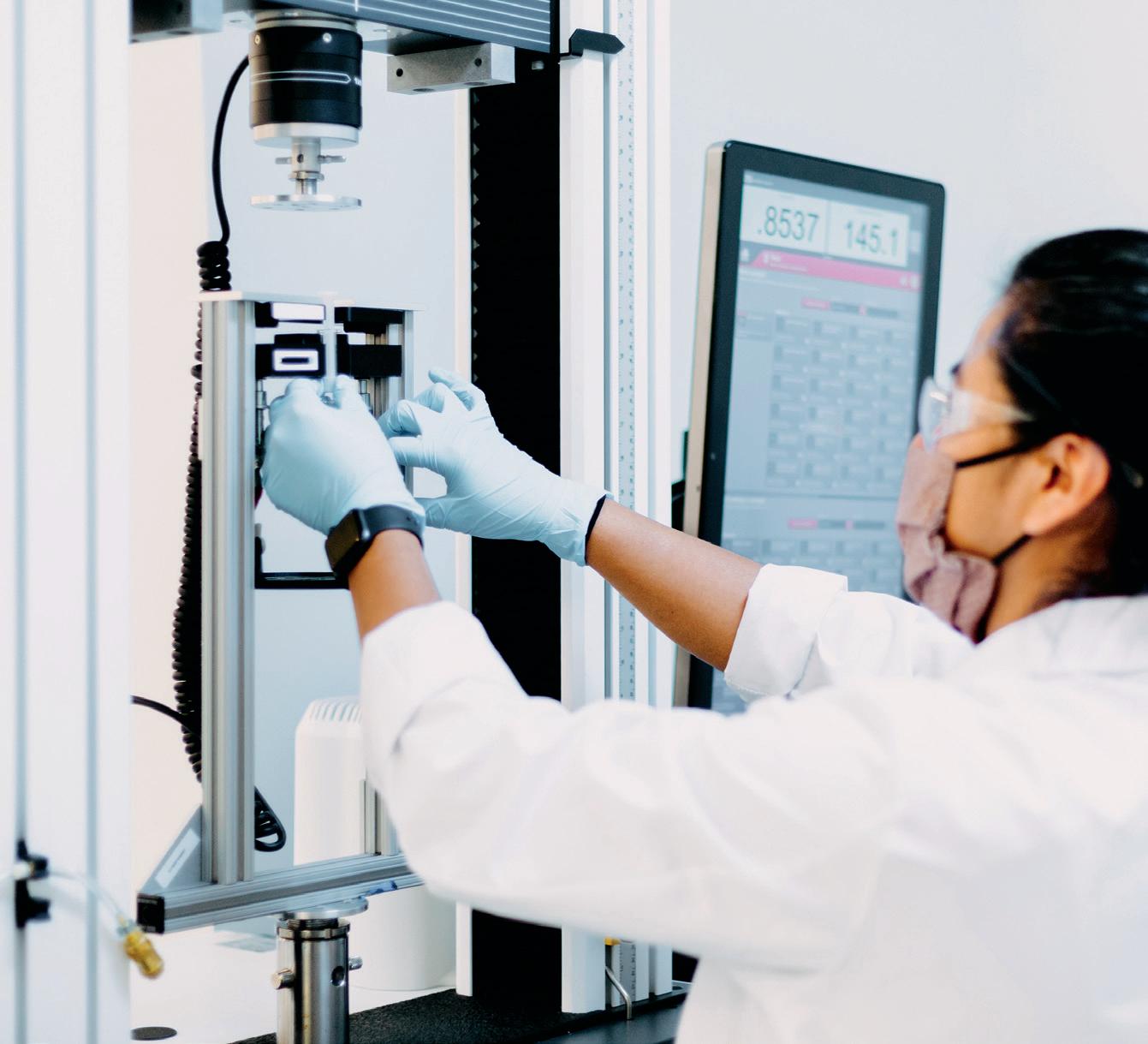
Authoring (FDA & CE) In House Combination Product Testing
Custom Fixture Development
Test Method Development & Validation
Verification & Validation Testing
Aging (Stability) Testing
Release Testing & Complaint Investigations
Here, Vince Masciopinto, Customer Solutions Director at SHL Medical introduces Elexy™, the company’s new reusable electromechanical autoinjector, highlighting the various advantages that the device platform offers at preclinical, clinical and commercial stages due to its ability to deliver a variety of injection profiles from different primary containers without requiring any mechanical reconfiguration of the device.
As a leader in the self-injection space, SHL Medical has consistently been at the forefront of developments in the industry.
In 2005, the company’s DAI® disposable autoinjector set the standard for the convenient use of modern autoinjectors. In 2010, SHL once again changed the industry by introducing Molly® as a device platform solution, enabling its partners to reduce investment, accelerate development and increase scale. With its latest product, Elexy™, SHL has developed a solution that could redefine what is possible for injectable drug delivery.
Figure 1: The Elexy autoinjector is comprised of a reusable power unit and disposable drug cassettes that can accommodate both PFS (Left) and cartridge (Right) primary containers.
Elexy is a versatile, reusable electromechanical autoinjector that aims to provide a best-in-class user experience and the broadest available range of delivery volumes. Comprised of a reusable power unit and disposable drug cassettes, the Elexy system is compatible with both prefilled syringe (PFS) and cartridge primary containers and, capable of delivering up to 5 mL in a single injection (Figure 1). For cartridges, SHL has included its proven NIT® needle isolation technology, which removes the need for a user to attach a needle manually, providing a seamless injection experience.
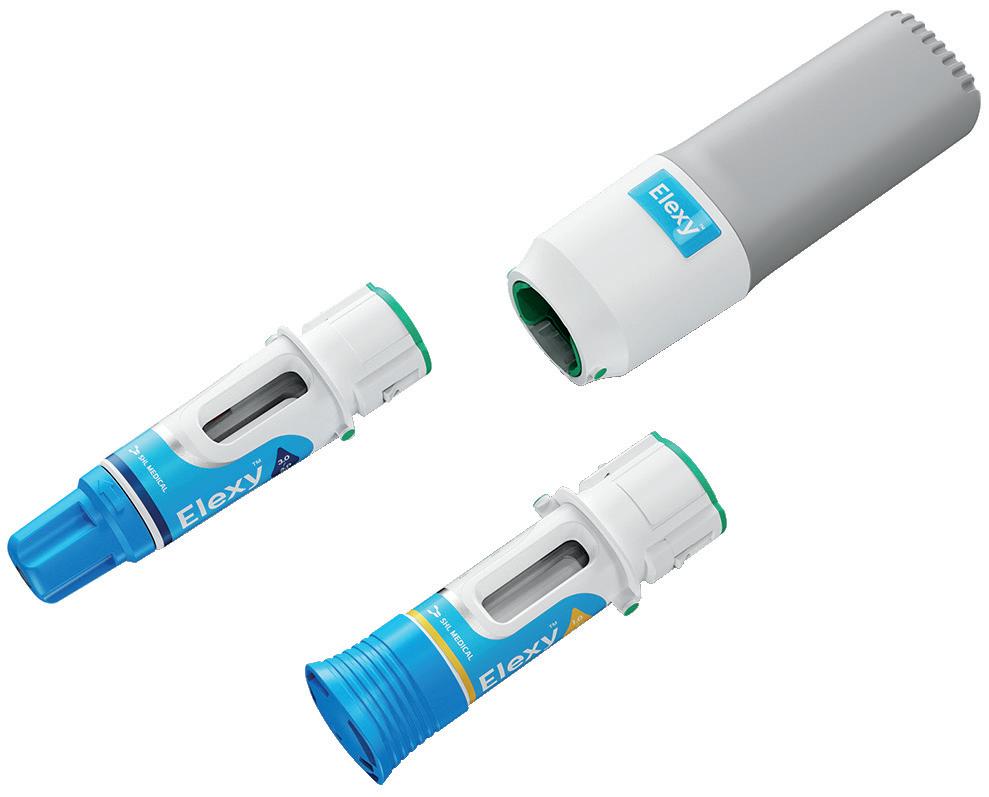

Vince Masciopinto
Customer Solutions Director
E: vincent.masciopinto@shl-medical.com
SHL Medical AG
Gubelstrasse 22
6300 Zug Switzerland
www.shl-medical.com
“Performing an injection is identical to the procedure for SHL’s Molly single-use disposable autoinjector – simply remove the cap and push Elexy against the injection site to activate.”




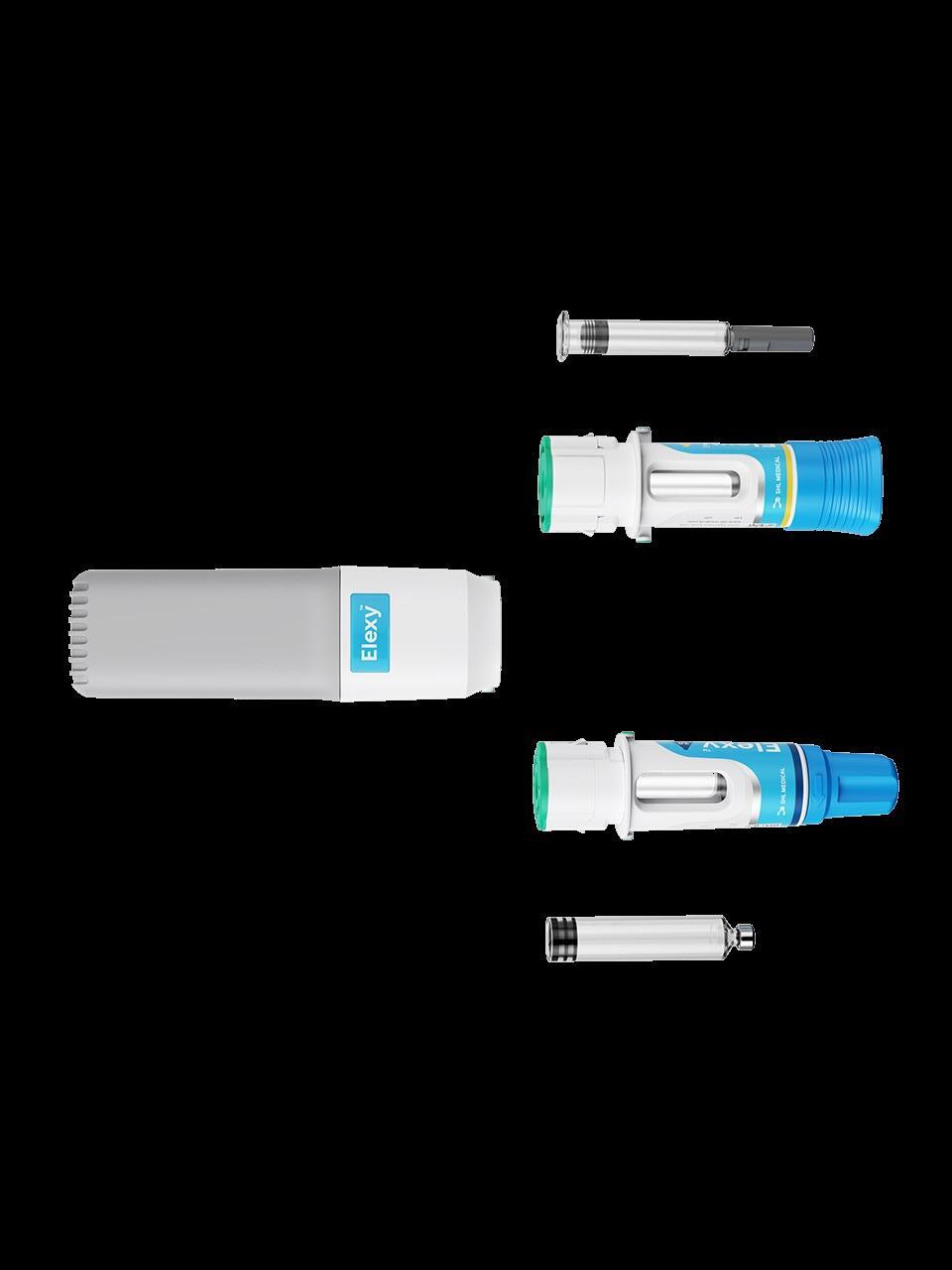
The reusable power unit can provide a wide range of delivery rates and push highly viscous fluids, creating unprecedented flexibility without any changes to hardware. Performing an injection is identical to the procedure for SHL’s Molly single-use disposable autoinjector – simply remove the cap and push Elexy against the injection site to activate. Its multi-level feedback mechanism provides an enhanced user experience, including visual cues on the power unit and plunger, as well as audio and haptic feedback.
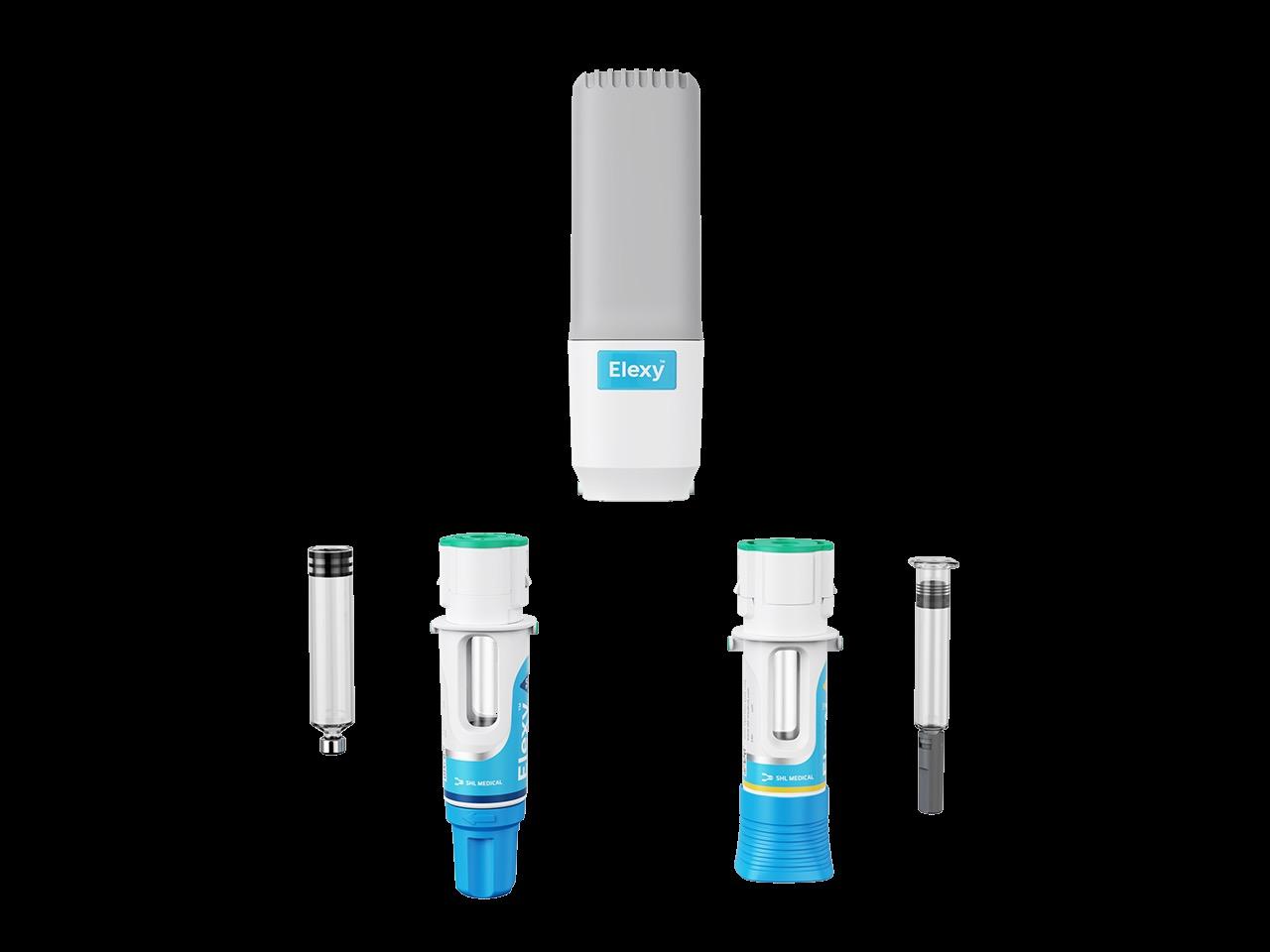
Elexy features integrated connectivity with cellular technology, opening avenues to collect rich injection data. The control of the power unit is provided by a radio frequency identification (RFID) tag on the disposable drug cassette, ensuring that the proper delivery parameters are used without the need for user inputs or creating opportunities for user error – it is as simple as loading a drug cassette.
PRECLINICAL ELEXY: WHERE A COMMERCIAL TOOL MEETS DESIGN OF EXPERIMENTS
The history of parenteral drug delivery tends to repeat itself – from the development of the hypodermic needle to the PFS to the infusion pump to the autoinjector; as new therapies emerge, they require specialised tools to optimise delivery. Today, innovative drug therapies are being developed that push the envelope of current delivery tools, requiring the delivery of
delivered volume, injection depth and needle gauge, would be impractical or impossible to execute with a mechanical autoinjector. Elexy’s flexibility makes such a preclinical study to evaluate the injection performance and tolerability of delivering large volumes subcutaneously not only possible but as simple as loading a new drug cassette (Figure 2). Furthermore, the use of a hand-held autoinjector provides better, more representative data than other preclinical delivery options, such as a through a needle set applied with adhesive.1
CLINICAL ELEXY: USING AN AUTOINJECTOR TO FIND THE RIGHT DOSE AND AVOID BRIDGING STUDIES
The typical approach to developing combination products is to focus on drug development first and worry about the delivery mechanism later. While this strategy has been successful in the past,
“Innovative drug therapies are being developed that push the envelope of current delivery tools, requiring the delivery of larger volumes, higher viscosities and novel drug formulations.”
autoinjector-based combination product would be to use an autoinjector during clinical trials and evaluate the combination product as a whole, avoiding devicerelated bridging studies altogether. This is impractical with single-use, mechanical autoinjectors because varying the dose requires significant component changes and long timelines to develop a new autoinjector for each test condition. On the other hand, Elexy uses the same power unit to deliver a variety of dose volumes, primary containers and delivery rates – making the execution of a doseranging study as simple as loading a new drug cassette for each use case. Additionally, Elexy’s flexibility with primary containers allows for easy transitions between low-dose, high-frequency regimens and high-dose, low-frequency formats, providing new options for clinical study design.
Using an autoinjector to generate clinical data, especially one with a programmable injection rate, produces a dataset that is much more representative of commercial applications. Additionally, because Elexy uses a standard primary container, the storage conditions and fluid path will also match the commercial application, resulting in shorter bridges and faster speed to clinic. Furthermore, the digital capabilities of Elexy enable the collection of richer clinical datasets and can instil greater confidence when transitioning to
commercial supply. This provides two significant opportunities for acceleration through clinical studies – using Elexy as a commercial device with delivery identical to that used in the clinical trials or using the clinical outputs to better inform the commercial autoinjector design.
Single-use mechanical autoinjector design relies on certain critical information, specifically injection volume, injection rate, injection depth and formulation viscosity. The mechanical components must be modified or changed in some way to accommodate these inputs to optimise the delivery parameters. This development of the mechanical system takes time to implement, test, iterate on and validate.
Due to the nature of clinical trials, these design inputs can only be known at the precise time that the product needs to advance to the next development phase or launch commercially. This results in delays or white spaces in development timelines. Attempting to circumvent this either leads to the use of suboptimal parameters during development to speed up timelines or launching commercially in a different device presentation, adding the autoinjector at a later date and driving up lifecycle management costs. Using Elexy during clinical trials enables optimisation of delivery parameters alongside drug development, which can then be translated immediately into a mechanical autoinjector with very low risk.
COMMERCIAL ELEXY: FLEXIBILITY FOR DYNAMIC APPLICATIONS
Like other reusable delivery systems, Elexy offers significant advantages for chronic conditions or therapies that require multiple doses. The more the reusable components are used, the more these advantages are amplified. Furthermore, Elexy’s electromechanical drive can easily deliver fluids where mechanical systems would struggle, such as with ultra-viscous fluids, profiled injections and those requiring precise delivery rates. In cases where cartridge-based delivery is more
“Using Elexy during clinical trials enables optimisation of delivery parameters alongside drug development, which can then be translated immediately into a mechanical autoinjector with very low risk.”
favourable, the NIT-integrated drug cassette allows for complete control of the cannula gauge and length to support achieving the target injection time and depth, independent of the primary container. What separates Elexy from other reusable electromechanical systems is its flexibility coupled with its usability (Figure 3). This is especially true for commercial applications where multiple doses are required or those that require different primary containers, such as variable doses (e.g. loading and maintenance doses) or multi-med therapies.
Elexy would be uniquely advantageous for a drug that requires a large loading dose and an ongoing smaller maintenance dose. A starter kit, containing a power unit and large-volume drug cassettes, could support initial loading doses. After completion of the starter kit, the patient could receive maintenance kits of multiple drug cassettes that would support the ongoing therapy. The user sequence would be identical for every injection, and the RFID in each drug cassette would ensure that the right delivery parameters are used without any intervention from the user. Beyond simplifying and optimising the injection experience for the patient, it would also provide significant advantages for package efficiency, storage, shipment, sustainability and error-proofing.
Elexy could also offer unique optionality for patients where dose is a choice or determined by factors expected to change
“Elexy’s electromechanical drive can easily deliver fluids where mechanical systems would struggle, such as with ultra-viscous fluids, profiled injections and those requiring precise delivery rates.”

Figure 3: Reusability has minimal impact on Elexy’s usability. The device features a familiar two-step activation process with passive sharps protection (PFS drug cassette shown here as an example).
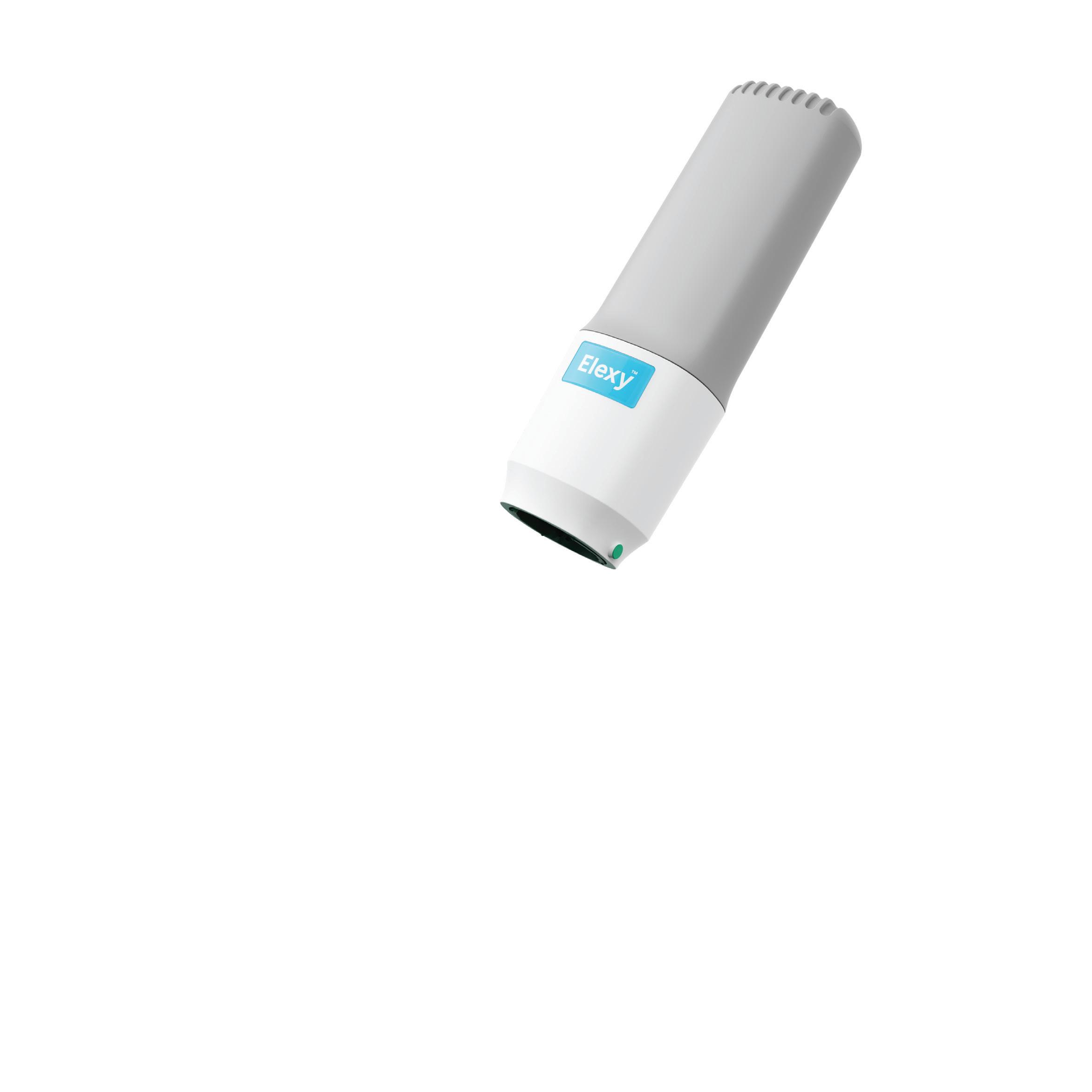
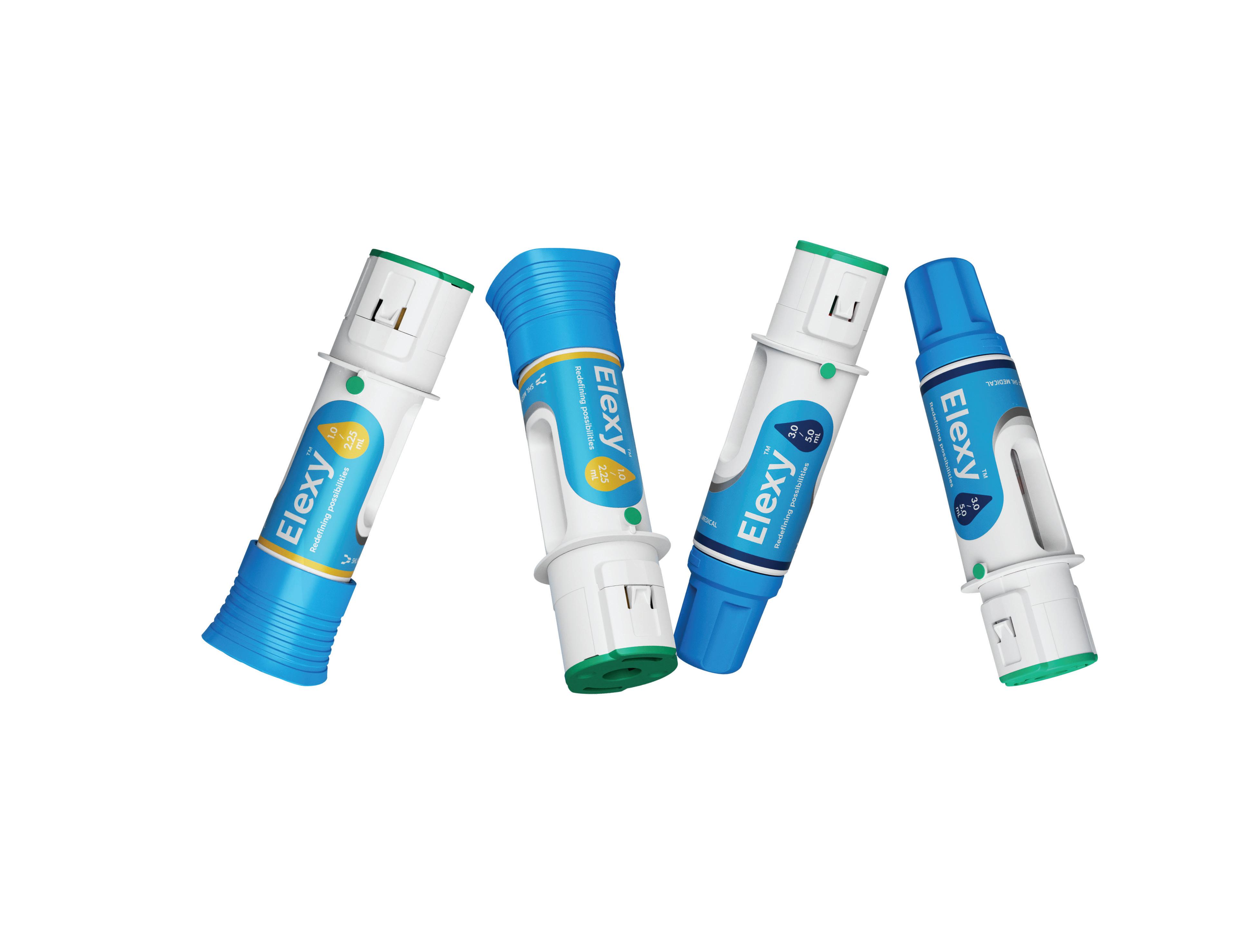
over time. The flexibility to deliver multiple volumes and use a variety of primary containers enables patients to use the same power unit with multiple drug cassettes. Without the need for user inputs, there is no risk of the wrong dose being delivered and the user experience is identical.
In the ever-changing landscape of parenteral drug delivery, new systems are required to address unmet needs – both for patients and in product development. Elexy is redefining possibilities as a flexible autoinjector capable of evaluating new therapies in accelerating, improving and de-risking
clinical trials, as well as delivering dynamic doses to patients in new ways. The possibilities are broader than ever before with Elexy – it is as simple as loading a new drug cassette.
SHL Medical is a solutions provider in the design, development and manufacturing of advanced drug delivery devices, such as autoinjectors and pen injectors. The company also provides final assembly, labelling and packaging services for leading pharmaceutical and biotech companies across the globe. With locations in Switzerland, Taiwan, Sweden and the US,
SHL Medical has successfully built a strong international team of experts that develops breakthrough drug delivery solutions for pharma and biotech customers. These include advanced reusable and disposable injection systems that can accommodate large volume and high-viscosity formulations – and connected device technologies for next-generation healthcare.
1. Dang X et al, “Clinical Investigation of Large Volume Subcutaneous Delivery up to 25 mL for Lean and Non-Lean Subjects”. Pharm Res, 2024, Vol 41(4), pp 751–763.
Vince Masciopinto is currently a Customer Solutions Director at SHL Medical, where he is responsible for supporting pharma and biotech customers in the adoption of customised, complex and bespoke solutions. Mr Masciopinto works closely with business development, product management and other teams to guide customers in selecting the right drug delivery solution. He brings with him decades of experience in the healthcare industry, having previously worked at companies such as Eitan Medical and West Pharmaceutical Services.


In this article, Emilie Aranda, Business Development Manager, Medical, and Fernando González, Development & Application Engineer, Medical, both at RPK Medical, discuss the crucial role of spring mechanisms and other metal parts in autoinjectors and pen injectors.
Demographic trends and the rise in various pathologies, such as diabetes and obesity, in European countries and the US indicate a growing demand for more sophisticated treatment options. Autoinjectors and pen injectors, with increasingly specialised user-focused characteristics, are prime examples of the types of treatments required.
One factor related to user centricity is the ease and convenience of administrating the medication with injectors. Three types of mechanisms can be used in these devices: springs, gas cylinders and electric battery activation. The dominance in the industry of the spring mechanism and other metal parts is clear.
There are several reasons why springs are the preferred mechanism for autoinjector manufacturing companies over other options:
• Mechanical precision : Springs can accommodate different types of injectable drugs because they can be adapted to different parameters, such as viscosity, thrust force, injection speed and administration time for introduction into the human body, regulating the characteristics required by autoinjectors or pen injectors.
“Springs can accommodate different types of injectable drugs because they
can be adapted to different parameters, such as viscosity, thrust force, injection speed and administration time.”
• Durability : A spring preserves the mechanical energy characteristics of the device, ensuring that it maintains error-free technical usability from the time of manufacture.
• Deformation-release control: Springs can expand or compress in response to controlled stimuli, allowing the rate of drug release to be adjusted.
• Device sophistication: Springs are also involved in innovative applications such as retractable needles (needle shielding) or the use of prefilled cartridges in reusable devices, which will gain market share due to sustainability issues.
As a division of the RPK Group, RPK Medical leverages 50 years of global leadership experience to design, develop and manufacture innovative metal springs,

Emilie Aranda Business Development Manager, Medical T: +34 945 277 700 E: e.aranda@rpk.es

Fernando González Development & Application Engineer, Medical T: +34 945 274 448 E: f.gonzalez@rpk.es
RPK Medical Portal de Gamarra 34 01013 Vitoria-Gasteiz
Spain
www.rpk-medical.com

stamping and bending components, and assemblies that integrate metal and plastic parts with special packaging and cleanliness requirements in its ISO 7 clean rooms worldwide.
The company aims to transform lives by providing customised, technologically advanced solutions that meet the unique needs of its partners with precision and dependability. Serving original equipment manufacturers (OEMs), contract manufacturers and medical device engineers, RPK Medical’s components are essential for applications such as disposable autoinjectors, pen injectors, staplers, inhalers, pump sprays, wearable devices, safety syringes, catheters, airway products, blood collectors, cannulas and lancets (Figure 1).
What sets the company apart is its unwavering commitment to not only exceed its clients’ quality expectations but also to enhance the lives of patients and healthcare professionals. An example of this is its development of complex springs, assemblies and power packs
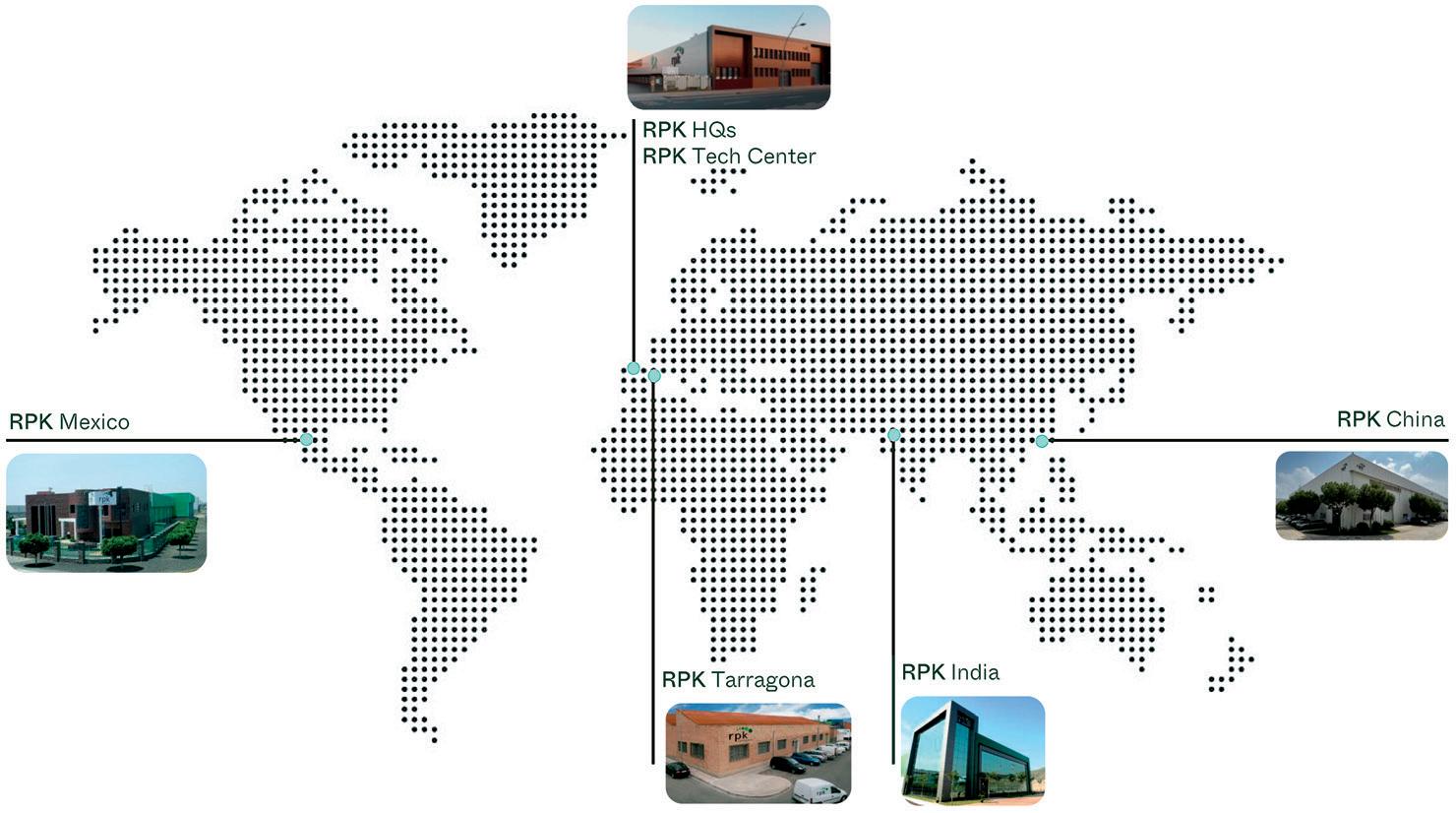
for disposable autoinjectors, which are crucial for patients managing conditions such as allergies, diabetes and obesity.
RPK Medical components help ensure that these devices deliver precise medication doses comfortably, safely and reliably, regardless of the drug’s viscosity.
“RPK Medical’s components are essential for applications such as disposable autoinjectors, pen injectors, staplers, inhalers, pump sprays, wearable devices, safety syringes, catheters, airway products, blood collectors, cannulas and lancets.”
Established in 1974, in Vitoria-Gasteiz, the Basque capital in the north of Spain, RPK Group has been at the forefront of wire forming, spring manufacture and small stamping for half a century. Its global presence was significantly bolstered more than two decades ago with the inauguration of its first plant outside Europe, situated in Mexico, which now stands as its secondlargest manufacturing facility (Figure 2).
The company’s global footprint is a testament to its commitment to being a local partner, no matter where you are. With six state-of-the-art manufacturing facilities across Europe, North America and Asia,
the company ensures it is always nearby to support clients throughout the process. It adheres to a local-to-local manufacturing model, producing the parts needed within each continent to serve the respective region efficiently.
RPK Medical is central to RPK Group’s sustainable growth strategy. It possesses the knowledge, capacity and experience necessary to thrive in the medical sector, which it has identified as a field with significant opportunities. It is particularly focused on Europe and North America, where it is seeing exponential growth in applications it excels at. Its three plants in Spain serve the European market, while its Mexico plant caters to North America and its China factory serves the Chinese and Asian markets. The company’s financial strength and strategic positioning enables it to invest in the necessary technologies and infrastructure to meet the increasing demands of OEMs and contract manufacturers.
RPK Medical’s engineering excellence and comprehensive process coverage are what set it apart. Its team of engineers works closely with clients to create advanced technical solutions designed to enhance lives. The team understands that each project is unique, and that the company’s bespoke approach allows it to tailor its services to meet the specific needs of each client. The team takes a project from the initial concept through to final production, ensuring every step is meticulously managed and optimised. This commitment to customisation and excellence is what drives the company’s innovation and keeps it at the forefront of the medical device industry.
In all engineering processes for autoinjectors and pen injectors, RPK Medical simulates and contrasts the behaviour of the spring constant with reality – load behaviour throughout the displacement (Figure 3). This helps to ensure the autoinjector functions correctly
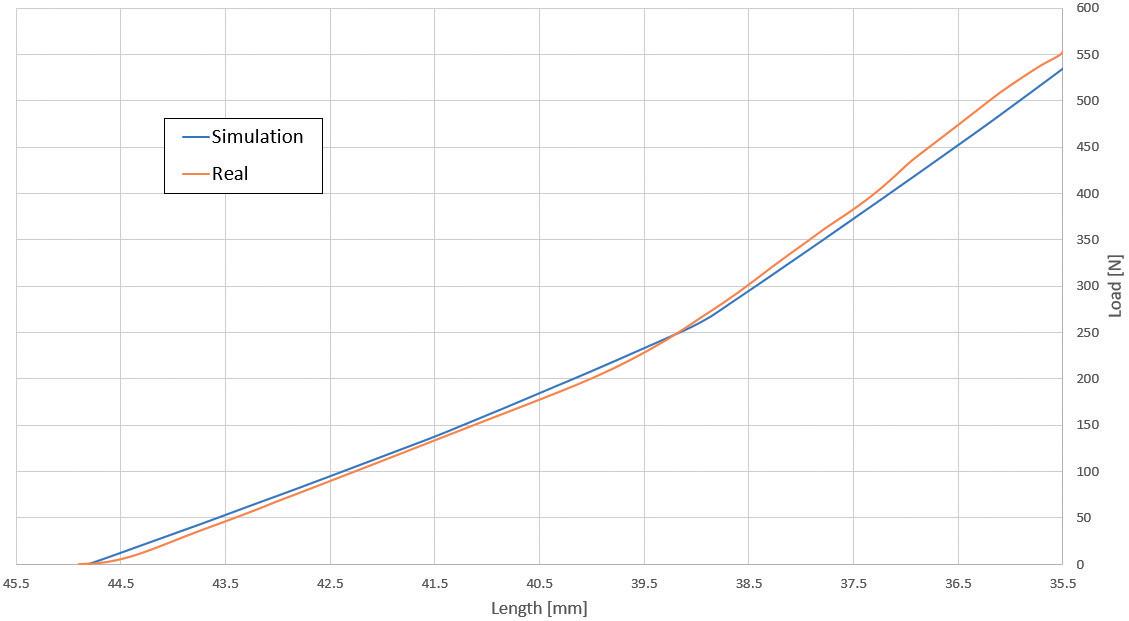
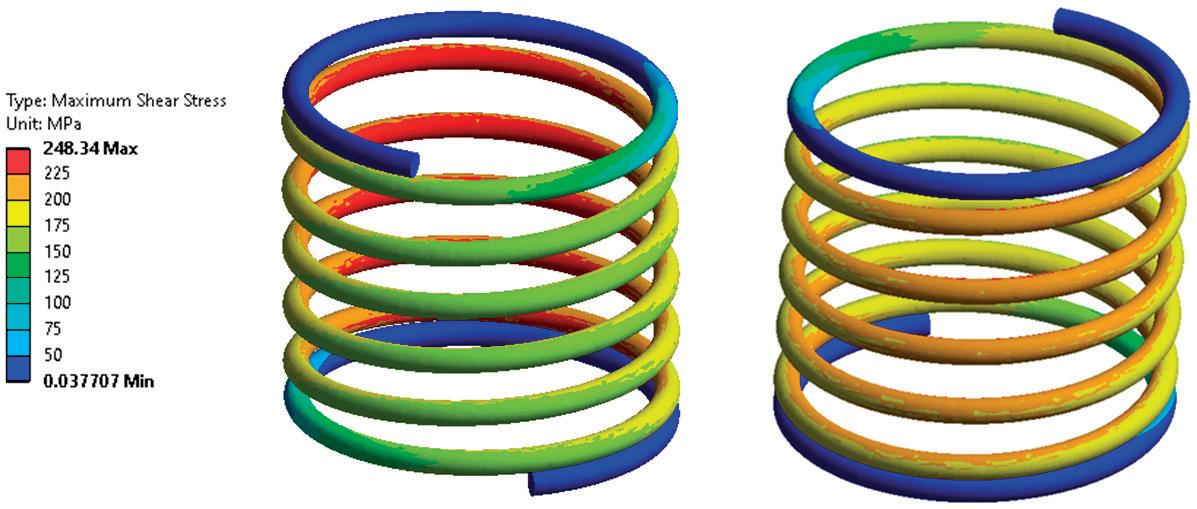
by regulating parameters such as injection speed according to the drug’s viscosity, the force required to administer the precise dose and the stresses during its operation (Figure 4).
The RPK Technological Center is testament to the company’s commitment to innovation. It is home to an in-house team of experts who specialise in projects that require highly complex technology. From the initial design and development stages to the procurement of necessary supplies, assembly, programming, commissioning, validation and industrialisation, the team manages every aspect with precision and expertise.
The knowledge generated at the RPK Technological Center is shared in real time with the company’s engineering teams around the globe. This seamless exchange of information ensures that the global operations benefit from the latest advancements and best practices, fostering a culture of continuous improvement and cutting-edge innovation.
Each project is unique and has different characteristics. Springs and stamped and bent parts are key components, and often OEMs and contract manufacturers do not have a very detailed understanding of their value and potential. That is why RPK Medical’s engineering teams specialising in these components are invaluable for these projects. The company’s project managers and engineers help clients develop, design and carry out the industrialisation process of the springs and metal parts necessary for the correct functioning of a device under special cleanliness and packaging conditions right from the start of a project, highlighting the process in three stages (Figure 5).
“The company’s expertise extends to special materials such as nitinol, allowing it to offer innovative solutions tailored to the most demanding applications.”

RPK Medical excels in creating and designing unique solutions from scratch or enhancing the performance of existing parts to improve patient care and outcomes. Its product engineers, in co-ordination with the development team, devise production processes that meet or exceed client needs, ensuring the most efficient design process.
The company’s expertise extends to special materials such as nitinol, allowing it to offer innovative solutions tailored to the most demanding applications. This in-depth knowledge of materials, combined with its engineering capabilities, enables the company to deliver products that perform exceptionally under various conditions, such as components for two- or three-step injectors that provide clear, audible, visual and tactile feedback. The metal parts of the device are designed for high- and lowviscosity drug delivery.
Transforming ideas into market-ready products is at the core of what RPK Medical does. Its dedicated team manages every aspect of product and process development, from project management and engineering to the development of processes and machines. Its best-in-class approach
includes prototyping, validation, ramp-up and the design and development of machines, tools and automatic assembly lines.
Advanced process and quality planning, finite element method and finite element analysis, rapid prototyping, in-house machine and tooling development, special packaging designs and full process design are all integral parts of the company’s comprehensive development services. These capabilities ensure that RPK Medical can take a client’s concept and turn it into a viable, manufacturable product.
The transition from product development to industrialisation is a critical phase. RPK Medical’s extensive knowledge of process and machine optimisation, manufacturing and quality management ensures a smooth and accurate transition from prototypes to high-volume production. Its global manufacturing capabilities, spanning America, Europe and Asia, allow it to support projects locally with the same high standards of technical and biological cleanliness. Its ISO 7 clean rooms, custom packaging solutions, such as tape and reel, and specialised processes, such as passivation, welding, deburring, grinding, shot peening, heat treatments and
Emilie Aranda, Business Development Manager, Medical, joined RPK Medical in 2017. She has a master’s degree in Marketing and Business Administration from the University of Bilbao (Spain). Ms Aranda’s current focus is on the European market, while also providing support to global sales teams.
Fernando Gonzalez, Development & Application Engineer, Medical, is a product engineer with 25 years of experience in the group. He is an expert at developing new products, particularly springs, for the medical sector. His new developments have included clock springs, power springs and constant force springs for medical applications and other sectors, such as automation.
advanced surface coatings, ensure that every product meets the stringent requirements of the medical industry.
The company’s commitment to quality is further exemplified by its 100% unitary control system, which incorporates machine-integrated vision and control technology. This system ensures that every product is thoroughly inspected and meets the highest standards of precision and reliability. Additionally, its laboratories conduct rigorous testing, including environment, fatigue, relaxation, cleanliness and residual and dynamic tests, to validate product performance and durability.
In conclusion, the approach of RPK Medical is encapsulated in its philosophy: “Need. Develop. Do. Care.” This guiding principle drives the company to innovate, develop and deliver solutions that not only meet but exceed the expectations of clients. With its global reach, local service and unwavering commitment to quality, the company is a trusted partner in the medical device industry, dedicated to improving lives through engineering excellence.
RPK Medical, part of RPK Group, is a global leader in the medical device sector with over 50 years of expertise in precision engineering. Operating six factories across Europe, North America, and Asia, and employing more than 800 people, RPK Medical specialises in creating custom solutions in springs, stamping, bending and assemblies. The company ensures quality through tailored cleaning and packaging in clean rooms worldwide. Innovation drives RPK Medical, supported by their RPK Technological Centre. Committed to sustainability and long-term partnerships, they enhance lives through cutting-edge healthcare solutions and a global-local service approach.




Here, Hiroki Hasegawa, MD, Assistant Research Manager, and Tomohiro Suzuki, Associate General Manager, both at Mitsubishi Gas Chemical, review the benefits of MGC’s multilayer plastic OXYCAPT™ vials and discuss a recent experiment comparing the ability of OXYCAPT and COP vials to resist permeation by CO2 upon thawing after being stored at temperatures below -60°C, with OXYCAPT’s multilayer structure providing a significant advantage over monolayer COP.
OXYCAPT OVERVIEW
OXYCAPT™ is a multilayer plastic vial and syringe developed by Mitsubishi Gas Chemical (MGC), offering a number of advantageous qualities as a primary drug container, including:
• Excellent oxygen and ultraviolet (UV) light barrier
• Strong water vapour barrier
• Very low extractables
• High pH stability
• Low protein adsorption and aggregation
• High transparency
• High break resistance
• Easy disposability
• Lightweight material.
MGC continuously conducts studies to confirm these properties. The latest results of these will be shared in the later part of the article. Before that, the first half of this article will provide an overview of the OXYCAPT multilayer plastic vial (Figure 1). The material consists of three layers – the drug contact layer and the outer layer are made of cyclo-olefin polymer (COP) and the oxygen barrier layer is made of MGC’s novel polyester (Figure 2).
MGC recently obtained a report on the environmental impact of glass and plastic containers for medical use from a Japanese research company. The report shows that plastic containers for medical use are much more environmentally friendly compared with glass containers. For example,


Hiroki Hasegawa
Assistant Research Manager
T: +81 463 21 8627
E: hiroki-hasegawa@mgc.co.jp

Tomohiro Suzuki
Associate General Manager
T: +81 332 83 4913
E: tomohiro-suzuki@mgc.co.jp
Mitsubishi Gas Chemical Company, Inc
Mitsubishi Building 5-2 Marunouchi 2 Chiyoda-ku
Tokyo 100-8324
Japan
www.mgc.co.jp/eng
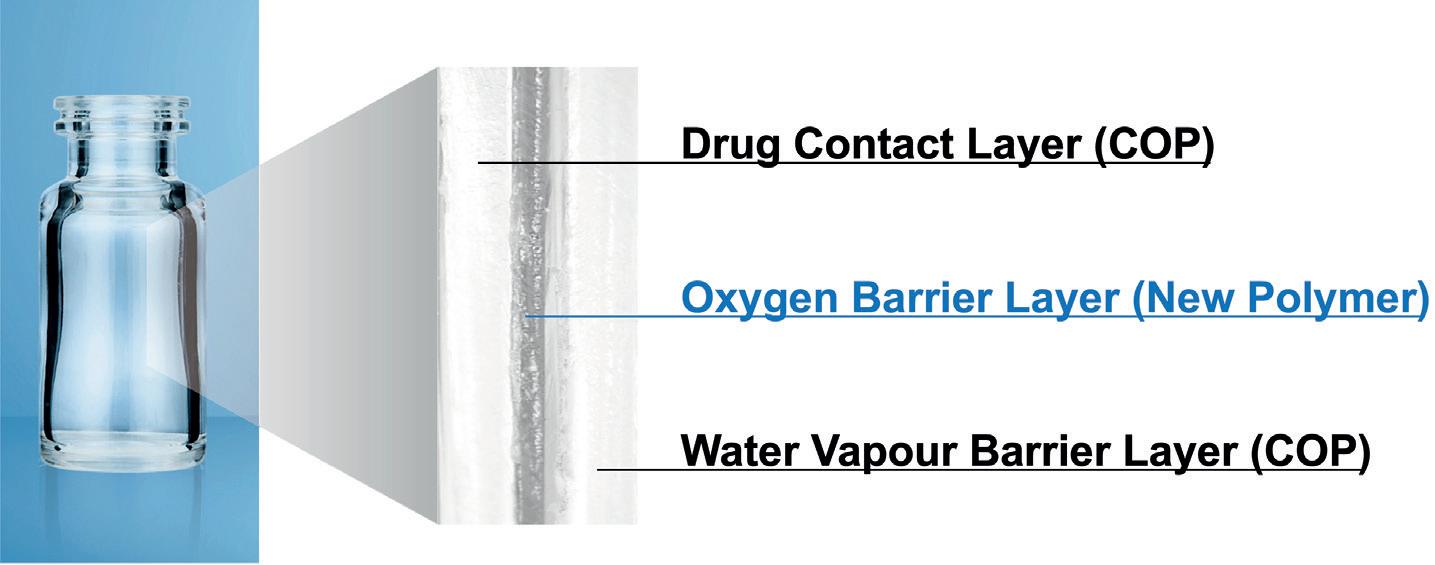
“The oxygen barrier of an OXYCAPT vial is about 20 times better than that of a COP monolayer vial.”
the carbon footprint, nitrogen oxides emissions, sulfur oxides emissions and water consumption associated with plastic containers for medical use are several times smaller than those of their glass equivalents.
OXYCAPT provides an excellent oxygen barrier. For example, the oxygen barrier of an OXYCAPT vial is about 20 times better than that of a COP monolayer vial. Furthermore, OXYCAPT provides an excellent UV barrier. While about 70% of 300 nm UV light transmits through glass and COP, only 1.7% transmits through OXYCAPT. MGC has confirmed that this feature contributes to the stability of biologics.
While OXYCAPT cannot reach the performance of glass with respect to acting as a water vapour barrier, its properties are similar to those of COP, which has been used for injectable drugs for a long time. This means that OXYCAPT easily meets the requirements of a water vapour barrier set out by the ICH guidelines.
“A second study confirmed that inorganic extractables levels from OXYCAPT were similar to those from COP, which is well known for being an extremely pure polymer with a better extractables profile than Type 1 glass.”
Studies have shown an extremely low level of extractables from OXYCAPT. One study was conducted to confirm the levels of volatile, semi-volatile and non-volatile impurities from OXYCAPT. Water and four solutions (50% ethanol, sodium chloride, sodium hydroxide and phosphoric acid) were selected, and impurities were measured by gas chromatography mass spectrometry (GC-MS) and liquid chromatographyUV spectroscopy-mass spectrometry (LC-UV-MS) after 70 days at 40°C. Compared with the control, impurities were not detected in the OXYCAPT containers. A second study confirmed that inorganic extractables levels from OXYCAPT were similar to those from COP, which is well known for being an extremely pure polymer with a better extractables profile than Type 1 glass. Lower levels of inorganic extractables are known to contribute to better pH stability in drug products.
The OXYCAPT vial is produced by co-injection blow-moulding technology. MGC has also developed inspection methods for testing the oxygen barrier layer. All the containers are fully inspected by state-of-the-art inspection machinery.
MGC can offer bulk vials and ready-to-use (RTU) vials, with its RTU products provided in standard nest-and-tub or tray formats. The nest and tub are mainly sterilised using gamma rays. There are 2, 6, 10 and 20 mL variants for vials. MGC is willing to provide samples for initial testing free of charge.
Each polymer meets the requirements of US Pharmacopeia (USP) regulations USP <661>, USP <87> and USP <88>, as well as those of the European Pharmacopoeia, and has been filed in the US FDA’s drug master file (DMF). The vials are also compliant with each pharmacopoeia and have been filed in the DMF.
The primary target market for OXYCAPT is the therapeutic application of biologics. As mentioned in ICH Q5C (Stability of Biotechnological/Biological Products), oxidation is one of the causes of protein instability. As such, the oxygen and UV barrier properties of OXYCAPT will definitely contribute to the stability of biologics stored within. Furthermore, some drug developers have recently started evaluating the OXYCAPT vials for their gene and cell therapies; the RTU vial is sterilised by gamma radiation, making it ideal for protein-based drugs.
CONTAINER CLOSURE
INTEGRITY AT -80°C
Figure 3
Figure 3
All pharmaceutical containers must maintain integrity against microbial contamination and have a gas barrier when a drug is sensitive to oxygen or carbon dioxide (CO2). Figure 3 shows a typical

CO2-enriched environment

ü Risk of breakage during cold storage and transportation
ü Risk of breakage during cold storage and transportation
ü Potential risk of loss of CCI
ü Potential risk of loss of CCI
ü Risk of CO2 transmission
ü Risk of CO2 transmission
scheme of storage and transportation for gene therapy. During storage and transportation, packages, including vials, are exposed to temperatures of around -80°C in a deep freezer or dry ice, which is a potential risk to container closure integrity (CCI) due to differences in the coefficient of thermal expansion (CTE) of the vial and rubber closure materials.
The CCI of Type I glass vials is particularly at risk from very low temperatures compared with plastic vials because the CTE of typical Type I glass is a factor of 10 smaller than that of rubber, including halogenated butyl rubber. On the other hand, standard plastic vials have a potential risk of CO2 transmission when in storage with dry ice. Based on MGC’s calculation by measurement of the transmission rate of CO2 through a polymer film, OXYCAPT has a CO2 barrier more than 20 times better than comparable COP monolayer vials. This means that the OXYCAPT vial has the potential to significantly contribute to protecting drugs, including biologics and gene and cell therapies, when they are in transport with dry ice.
To examine this potential benefit further, MGC performed a CCI test with dry ice. Table 1 shows the test sample combinations of OXYCAPT vial and rubber closures. Rubber closure 1 is a typical closure made of bromo butyl rubber with a glass transition temperature of -65°C. MGC also prepared press-on-cap closures and OXYCAPT’s positive control with a fine hole of a 5 µm nominal diameter.
“Based on MGC’s calculation by measurement of the transmission rate of CO2 through a polymer film, OXYCAPT has a CO2 barrier more than 20 times better than comparable COP monolayer vials.”
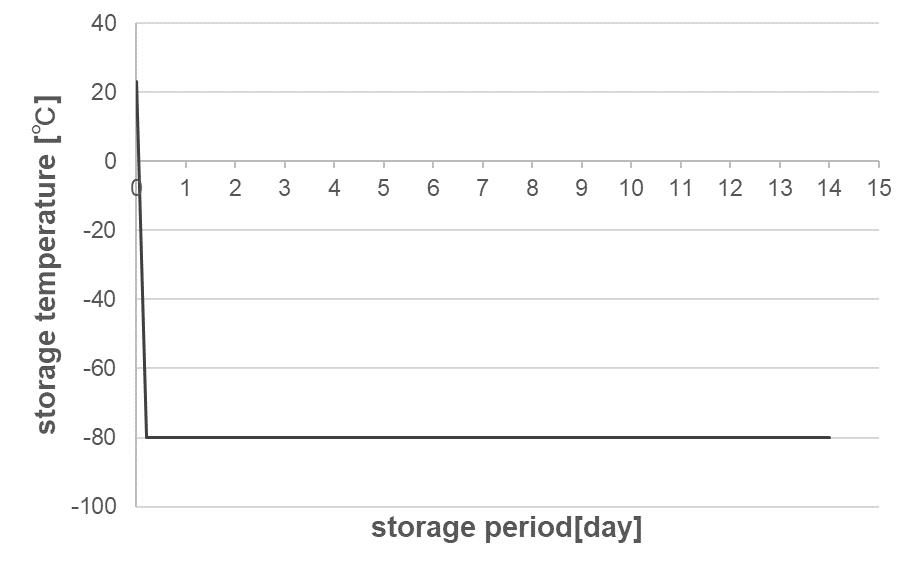




were then
Figure 4 shows the test procedure, which includes storage in a deep freezer and an insulation box with dry ice. First, all the vials, closures and aluminium seals were inserted into a chamber where the air was replaced with nitrogen, then they were assembled by hand in the chamber. After preparing the samples, MGC measured the partial pressure of CO2 in the vials’ headspace for all the samples (T0). The
stored in a deep freezer at -80°C for seven days. After storage in the freezer, the CO2 pressure of the headspace was measured (T1). Next, the remaining samples were immediately inserted into an insulation box that was filled with 30 kg of dry ice, as shown in Figure 5. After storage in the CO2-enriched environment, CO2 pressure in the headspace was measured (T2).
Headspace pressure of CO2 was measured with an FMS-Carbon Dioxide, manufactured by LIGHTHOUSE Instruments (VA, US). The instrument is based on frequency modulation spectroscopy (FMS), which is a nondestructive method. Table 2 shows the sample number for each measurement time point. The measured vials were disposed of after the measurements at T1 and the remaining ones were measured at T2
At temperatures lower than -65°C, bromo butyl rubber loses its elastic properties, which may lead to loss of airtightness at the interface between vial and rubber closure. Therefore,
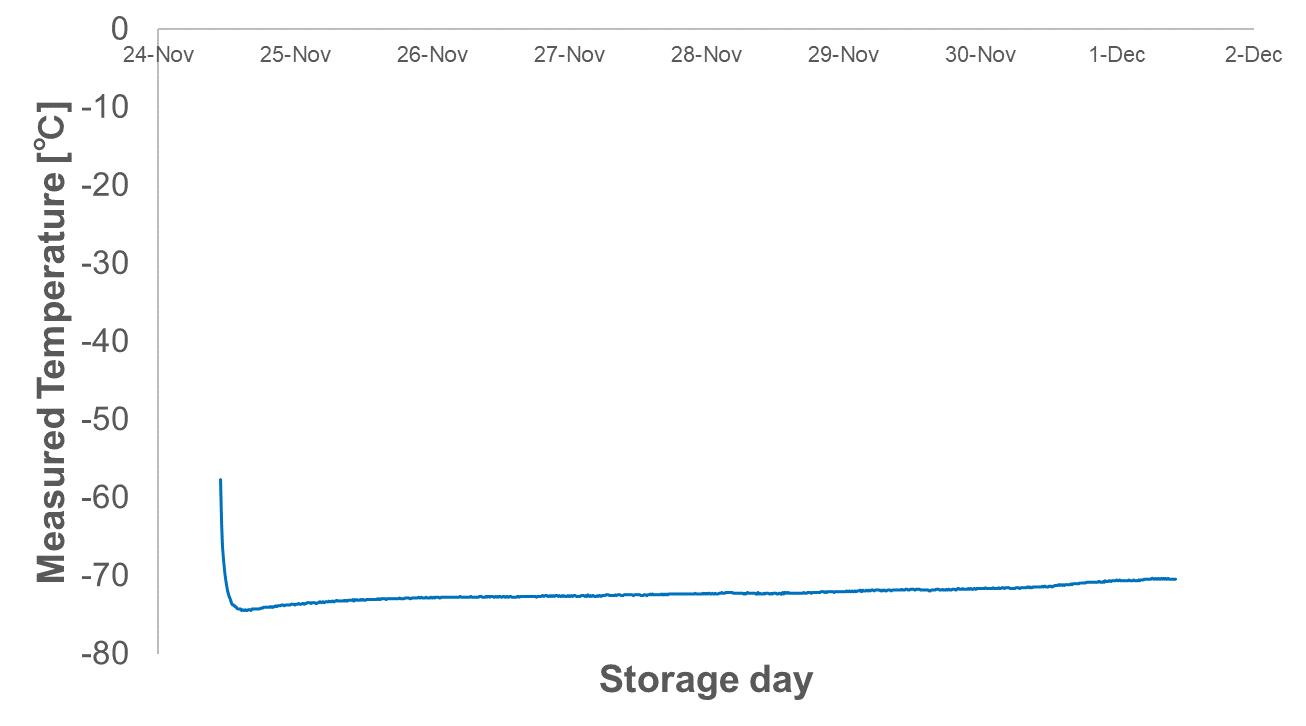
maintaining a temperature inside the insulation box of under -65°C is crucial for measuring the leakage precisely in this test. Figure 6 shows a temperature log inside the insulation box during the test, which was kept below -70°C for seven days.
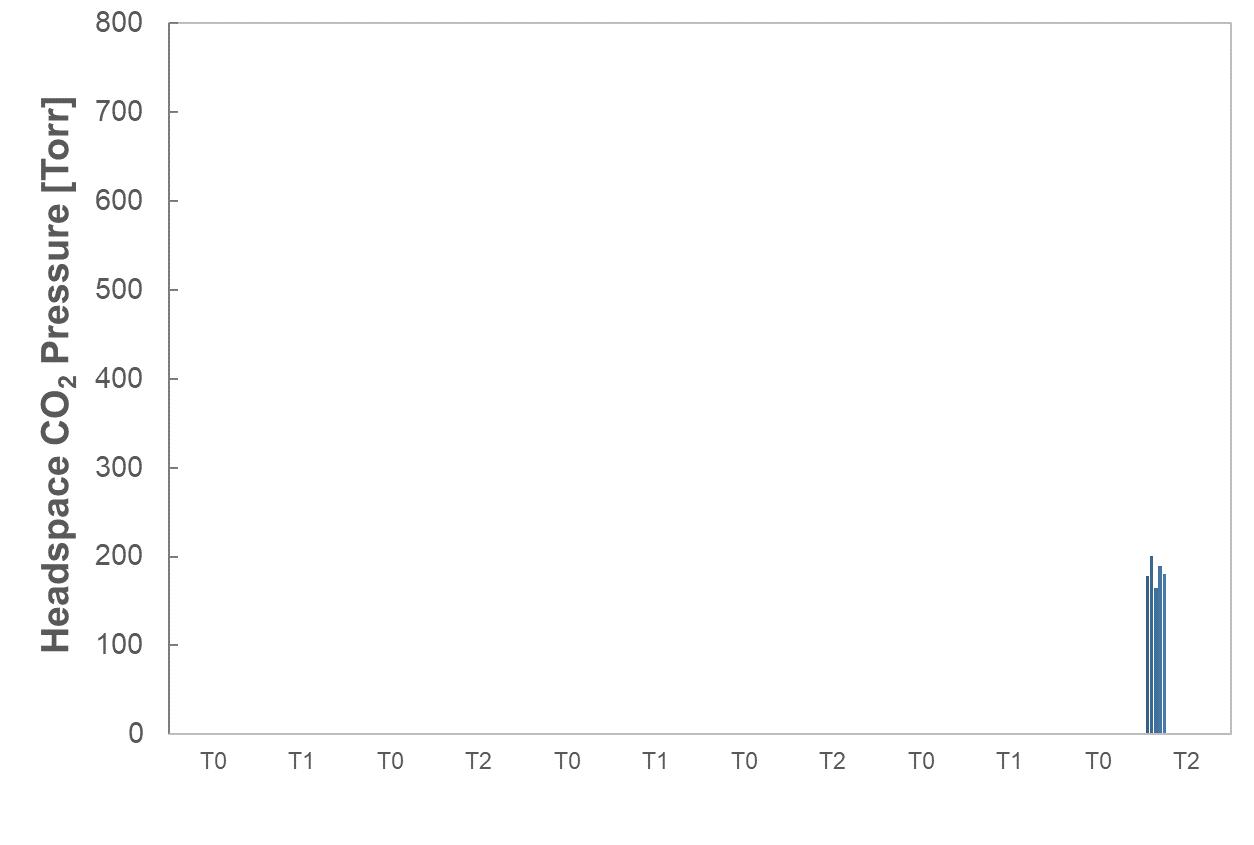
Figure 7 shows the results of headspace CO2 pressure for Entries 1, 2 and 1’. Regarding OXYCAPT positive control of Entry 1’, the mean value of CO2 pressure was 183 Torr at T2 under a CO2-enriched environment. However, there was no CO2 ingress at T1, as the initial seven-day storage was conducted under atmospheric conditions without dry ice. On the other hand, CO2 ingress was not observed in either combination of OXYCAPT and the two types of closure (Entry 1 and Entry 2), even at T2. This study demonstrated that OXYCAPT has an excellent CCI under a CO2-enriched environment for seven days. There are several factors that can affect CCI for a combination of vials and closures, including capping force and type of closure, among others. In addition, CO2 transmission is potentially observed in long-term storage with dry ice and an increase in temperature during storage. MGC intends to devise and perform additional CCI tests to clarify the efficiency of OXYCAPT vials compared with other plastic and glass vials. Furthermore, MGC is also planning to conduct similar studies at -180°C to confirm the effectiveness for gene and cell therapies.
CO2 molecules can permeate through polymers and get into a vial’s headspace, affecting drug stability. As the rate of CO2 transmission is different between polymer materials, MGC performed some related studies using OXYCAPT and COP vials. OXYCAPT and commercially available COP 10R vials were prepared with bromo butyl rubber (BBR) and aluminium seal closures. Firstly, all the vials and BBR and aluminium seals were placed in a nitrogen chamber for a couple of days. Secondly, the vials were sealed with the closures using a hand-crimper in a nitrogen chamber. Thirdly, these vials, filled with nitrogen gas, were placed in a box filled with CO2 and stored at 23°C.
Figure 8 shows the results of headspace CO2 partial pressure of OXYCAPT and COP vials. Although the CO2 partial pressure of COP vials immediately rose, reaching around 700 Torr in 60 days, the OXYCAPT vials were able to keep CO2 partial pressure to very low levels.
MGC also calculated the CO2 transmission rate of OXYCAPT and COP vials by using the test results of CO2 partial pressure. While only 0.018 cm3 of carbon dioxide transmitted through OXYCAPT 10R vials per day at 23°C, 0.423 cm3 transmitted through 10R COP vials (Figure 9). This result demonstrates that the CO2 barrier of OXYCAPT is more than 20 times better than that of standard COP.
Theoretically, the phenomenon of gas permeation depends on several physical factors, including the surrounding temperature and permeability coefficient of gas molecules. In accordance with Arrhenius’s formula, gas permeation gets slower as the surrounding temperature becomes lower, meaning that CO2 is barely able to permeate plastic vials into the headspace for the duration of transport with dry ice at lower than -60°C temperatures.


However, there is still a risk of CO2 ingress into the headspace after thawing because there are two steps in CO2 permeation –dissolution and diffusion of CO2 molecules. Dissolution refers to gas molecules being absorbed into the structure of plastics, while diffusion refers to the dissolved gases passing through them. In theory, the permeability coefficient is obtained by multiplying the solubility coefficient with the diffusion coefficient. The diffusion coefficient has
“OXYCAPT was able to prevent the CO2 diffusion into the headspace upon thawing due to its highly effective CO2 barrier layer, which dramatically mitigated any permeation of the CO2 dissolved in the outer layer of the multilayer.”
a positive correlation with temperature, whereas the solubility coefficient has a negative correlation to it in the case of CO2 In other words, plastic vials are likely to be able to retain CO2 within their structure during transport with dry ice below -60°C, which can then cause CO2 ingress after the thawing process (Figure 10).
To verify this theory, MGC conducted a study on CO2 ingress after freezing and thawing. To imitate the typical storage and transport process for gene therapy products, MGC first stored OXYCAPT and COP vials at -75°C in a CO2-rich environment for 18 days and then placed them at room temperature under atmospheric conditions for an additional four days.
As MGC expected, both the COP and OXYCAPT vials had 0% CO2 in the headspace after storage at -75°C in a

CO2-rich environment for 18 days. However, the COP vial could not maintain 0% CO2 after the additional time under atmospheric conditions, whereas OXYCAPT was able to sustain 0% CO2 (Figure 11). It is presumed that the dissolved CO2 diffused through the monolayer COP vials when thawed to room temperature. On the other hand, OXYCAPT was able to prevent CO2 diffusion into the headspace upon thawing due to its highly effective CO2 barrier layer, which dramatically mitigated any permeation of the CO2 dissolved in the outer layer of the multilayer.
To verify the excellent properties of OXYCAPT for cell gene therapy products, MGC has started further studies, such as CCI testing with liquid nitrogen and pH shift with dry ice. Although it is said that glass cannot be used for the cell gene therapy products stored at deep-cold or cryogenic temperatures, MGC has also added Type 1 glass vials to the samples to confirm if this is true or false.
These latest results have contributed to the ongoing studies verifying OXYCAPT’s superior properties for biologics and gene and cell therapies. In addition to the advantages of COP, such as a strong water vapour barrier, high break resistance, very low extractables and low protein adsorption, OXYCAPT also provides strong oxygen and UV light barriers. In particular, the excellent CO2 barrier of OXYCAPT is very useful for the stability of gene and cell therapies stored with dry ice. MGC believes that OXYCAPT offers a multitude of benefits to the rapidly growing field of biologics and gene and cell therapies.
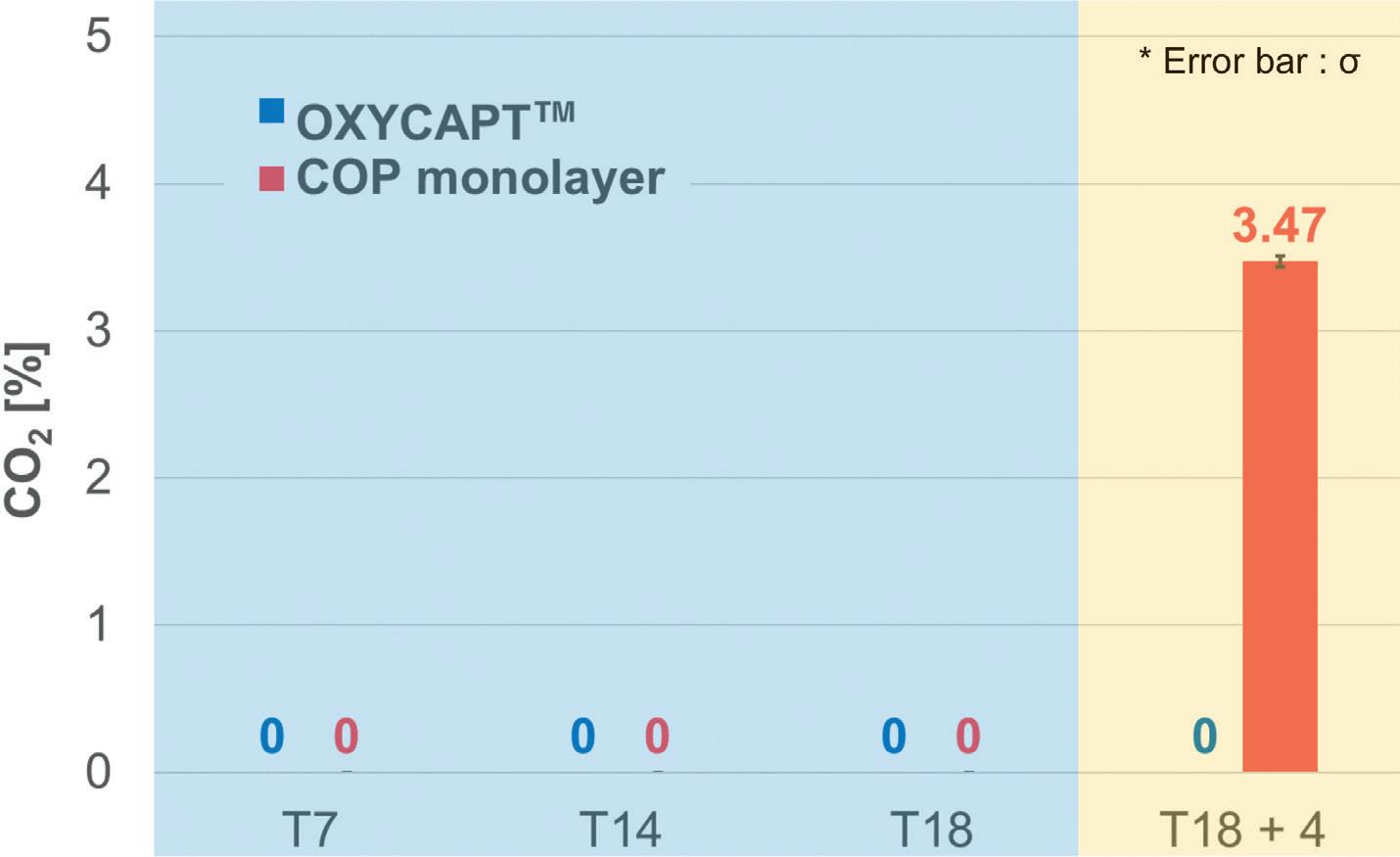
Mitsubishi Gas Chemical (MGC) is a major chemical products manufacturer, operating across a wide range of fields, from basic chemicals to fine chemicals and functional
materials. In 2012, MGC established a new division as a centre for continually creating new businesses. In the field of drug delivery, the company has developed the OXYCAPT plastic vial and syringe as an alternative to glass containers.
Hiroki Hasegawa, MD, is a researcher in MGC’s Advanced Business Development Division. He earned a Diploma in Science in 2013 and an MSc degree in 2015 from Osaka University (Japan). He has been working for MGC since April 2015, in charge of macromolecular science, especially in composition development of thermosetting resin. In 2018, he joined the development team for OXYCAPT.
Tomohiro Suzuki graduated from Waseda University (Japan) in 1997 and joined MGC in 1998. He belonged to the Oxygen Absorbers Division until 2011, after which he was transferred to the Advanced Business Development Division in 2012 to be a member of the OXYCAPT development team. Since then, he has been in charge of marketing for the OXYCAPT vial and syringe. His current position is Associate General Manager.


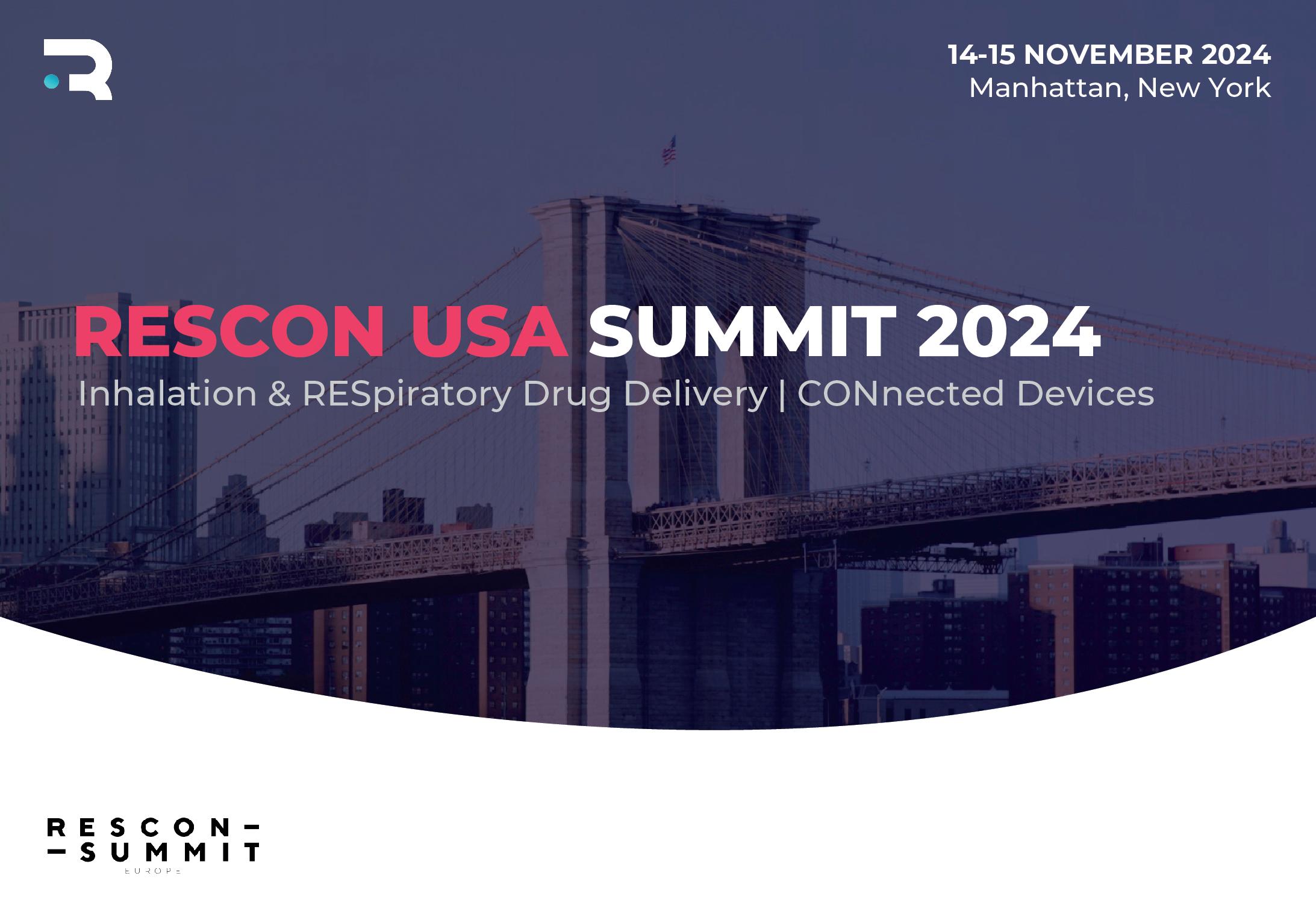

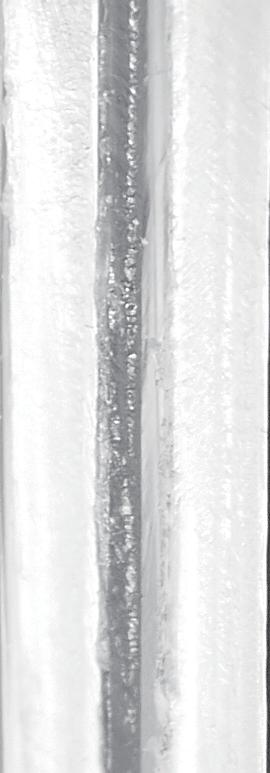


In this article, Patrik Ingvarsson, Director Technical Design Center Europe at Nolato, showcases the company’s virtual factory, highlighting the advantages of virtual tools for product development in the medical device industry.
Design robustness can be improved through the combination of injection moulding software with measuring software (Figure 1). Advantages of this combination can include avoiding some of the following:
• Project delays
• Tool adjustments
• Moulding imperfections
• Manufacturing defects affecting device functionality
• Delayed process qualifications
• Unpredictable outcomes
• Late and costly design changes
• Inaccurate measurements
• Expensive moulds.


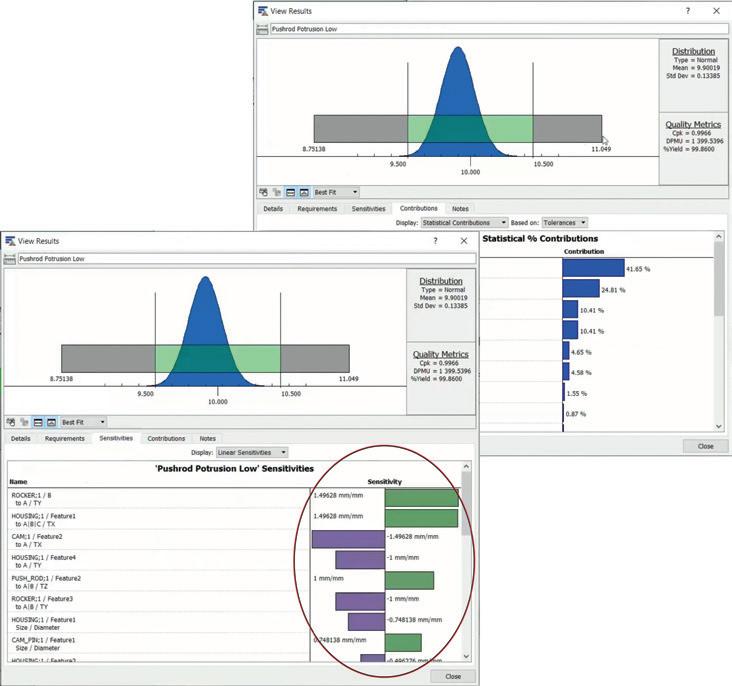


Patrik Ingvarsson Director Technical Design Center Europe
T: +46 768 880075
E: patrik.ingvarsson@nolato.com
Nolato MediTech AB Medicingatan 4 Hörby 24293
Sweden www.nolato.com
As technology progresses, it becomes increasingly important to use virtual simulations to continue advancing and improving product development, manufacturing and industrialisation workflows. Simulations offer a safe and cost-effective environment for optimisation, testing and evaluation to identify the best design.
Virtual tools, such as mould flow simulation software, mechanical simulation software and virtual measuring software, provide project teams with invaluable data and information. Combining these tools revolutionises the development process, and it is possible to predict the final result on a whole new level. For example, it allows for full dimensional virtual measurement of virtually manufactured components based on mould flow simulations, using the same measurement principles and machine parameters that will be used for physical components at a later stage (Figure 2).
The successful development of new products within the medical device industry requires close collaboration between designers/customers and manufacturers.
“Virtual tools, such as mould flow simulation software, mechanical simulation software and virtual measuring software, provide project teams with invaluable data and information.”

Confidence and control of product functionality is key to achieving the perfect balance between focusing on critical dimensions and allowing wider tolerances for less important features. Nolato therefore recommends using tolerance analysis software to shorten lead times and build confidence in the design.
Tolerance standards for plastic moulded parts, taking into account material selection and production conditions, should also be used as a guideline and reference for dimensional reviews.
For customers seeking excellence in their injection mould design and looking to reduce the number of unnecessary tool iterations to reduce time to market, the answer is to involve Nolato in the early development phase.
Using a virtual toolbox consisting of advanced mould flow simulations, finite element analysis simulations and tolerance analysis software, and combining them with the power of dimensional evaluation in measuring software, it is possible to predict outcomes and effectively evaluate different design options with high confidence.
With the software, Nolato fine-tunes gate positions, evaluates cooling layouts and optimises the design from a moulding and product perspective. Moulding imperfections, such as sink marks, air enclosures and weak areas, are identified at an early stage and can then be resolved or reduced. By using a measurement program, developed alongside the design work, complete virtual measurement reports can be provided for all virtual test runs and design of experiments (Figure 3). This makes it more efficient to analyse and select the best design track.
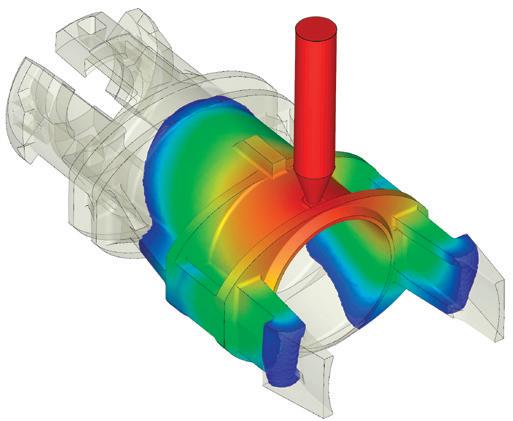
“Confidence and control of product functionality is key to achieving the perfect balance between focusing on critical dimensions and allowing wider tolerances for less important features.”
Adjusting injection moulding moulds after the first out of tools (FOT) can pose several risks, including incorrect adjustments, tool damage, cost overruns and more. Nolato believes in using steel strategies to address warpage and displacement issues identified during virtual runs using virtual measurements. This applies not only to surfaces that are steel safe (steel added with intention to remove) but also to surfaces where steel is removed upfront (more aggressive approach). This saves time and will result in higher accuracy than adjusting the mould afterwards.
Nolato supports customers with metrology expertise in the early development phase. The company provides advice and works with clients to develop robust measurement methods and define the individual dimensions to secure product functionality and a reliable control method.
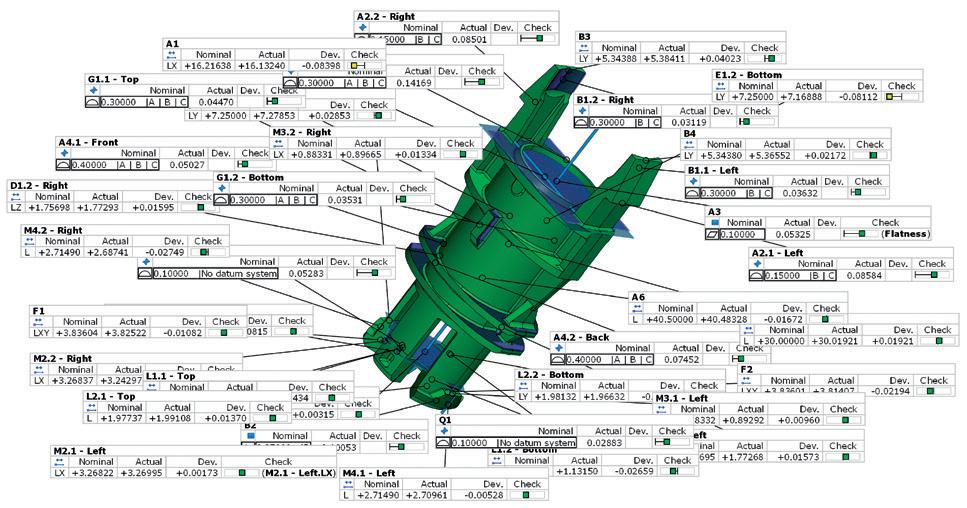
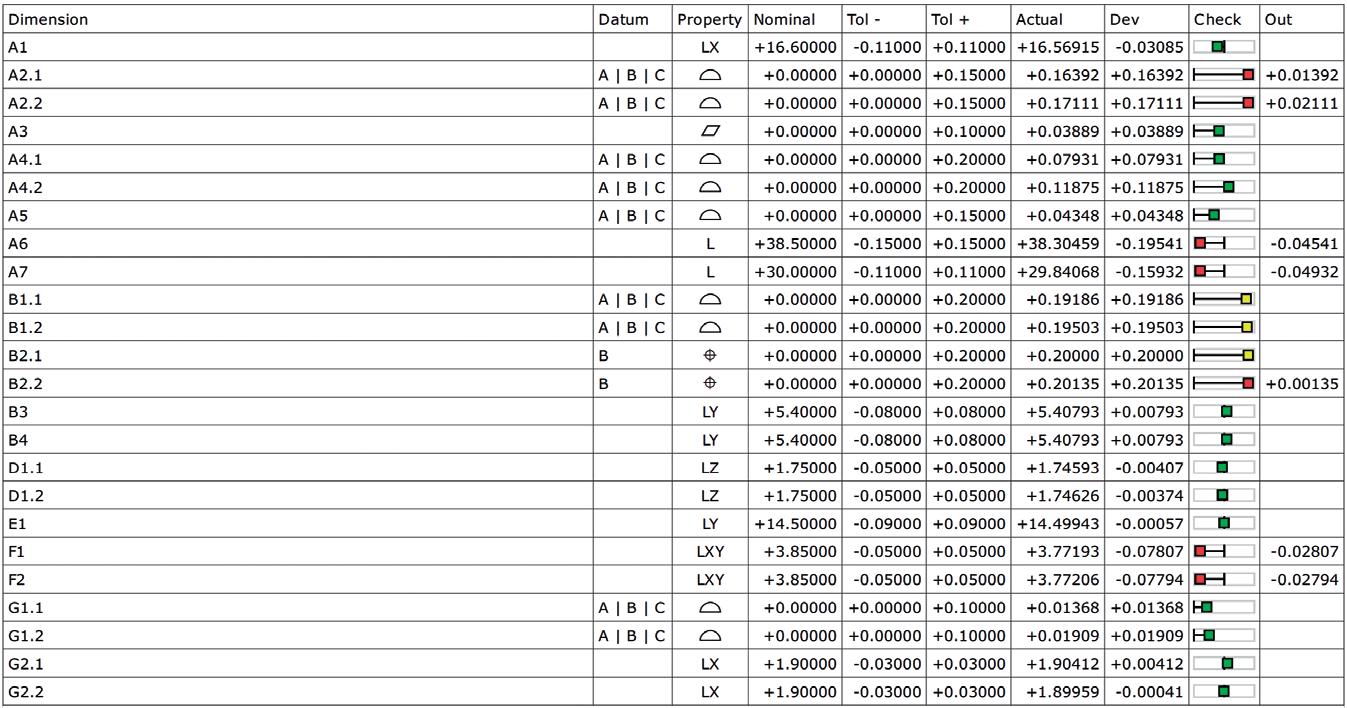
Initial virtual run
IMPROVEMENTS:
Tolerances
Definitions
3D optimisation (partial)
Datum references
Process optimisation

Optimised virtual run

Physical run
“Simulations allow the identification of any moulding or design issues early on in the process.”
The measuring software normally used for 3D scanning is developed based on virtually manufactured models (from mould flow simulation). Measuring software can evaluate all kinds of dimensions of virtual components. The benefit of this is that the company can check all dimensions from the simulation, and also review the checks from a functional point of view and verify the strategies upfront.
Simulations allow the identification of any moulding or design issues early on in the process, reducing lead times for product development and the risk of delays later on due to unidentified issues.
Even if model-based definitions are used, the most common way of defining dimensions and tolerances is still using 2D drawings. The main problem with 2D drawings is ambiguous definitions of dimensions, which could result in additional work and misinterpretations during measurements and evaluations.
To mitigate the risk of this, measurement agreements should be established between manufacturer and designer/customer in which every dimension is set out in detail using text and images. The same applies to alignments and datum systems, in other words, anything that could have an impact on the result. Control and alignment are important.
Mould qualification greatly benefits from using the combined strength of virtual tools: virtual manufacturing, virtual testing and virtual evaluation. Simulations and a robust design significantly enhance mould qualifications by optimising the mould design, detecting potential issues early on, saving time and costs, ensuring precise tolerance analysis and facilitating regulatory compliance.
The virtual factory will have already prepared initial settings for run-in, evaluated the process window and identified and resolved weaknesses, ensuring higher success rates during qualification.
Since measurement programs will have already been developed during the
“Since measurement programs will have already been developed during the evaluation of virtual samples, time saving and risk mitigations will have also been established.”
evaluation of virtual samples, time saving and risk mitigations will have also been established and will be ready to evaluate physical samples.
To optimise the product development process and ensure high product quality, bring Nolato on board, preferably before the design is frozen and moulds have been ordered. Nolato’s team of experts is ready to support the customer in developing stateof-the-art products, optimised for highvolume production.
Nolato Group is a Swedish group with operations in Europe, Asia and North America. Nolato develops and manufactures products in polymer materials, such as plastic, silicone and thermoplastic elastomers, for leading customers within medical technology, pharmaceuticals, consumer electronics, telecom, automotive, hygiene and other selected industrial fields. Nolato’s offering spans the entire value chain – from solutions-oriented development focused on sustainability to product delivery.
Patrik Ingvarsson is the Technical Director for Nolato Technical Design Center (TDC) Europe. TDC is a centralised organisation within Nolato that supports customers with developing new products. TDC’s core competence is within manufacturing expertise and will provide support to improve customer concepts with a focus on high-volume production and producibility. Mr Ingvarsson has more than 25 years of experience in plastic part production and development and has an MSc in Mechanical Engineering. Mr Ingvarsson is experienced in high-volume plastic part development and has working knowledge of part design, mould design, the injection moulding process and plastic materials. The use of simulation technology, such as injection moulding simulation and structural/thermal simulation, has been a major part of Mr Ingvarsson’s previous work experience.
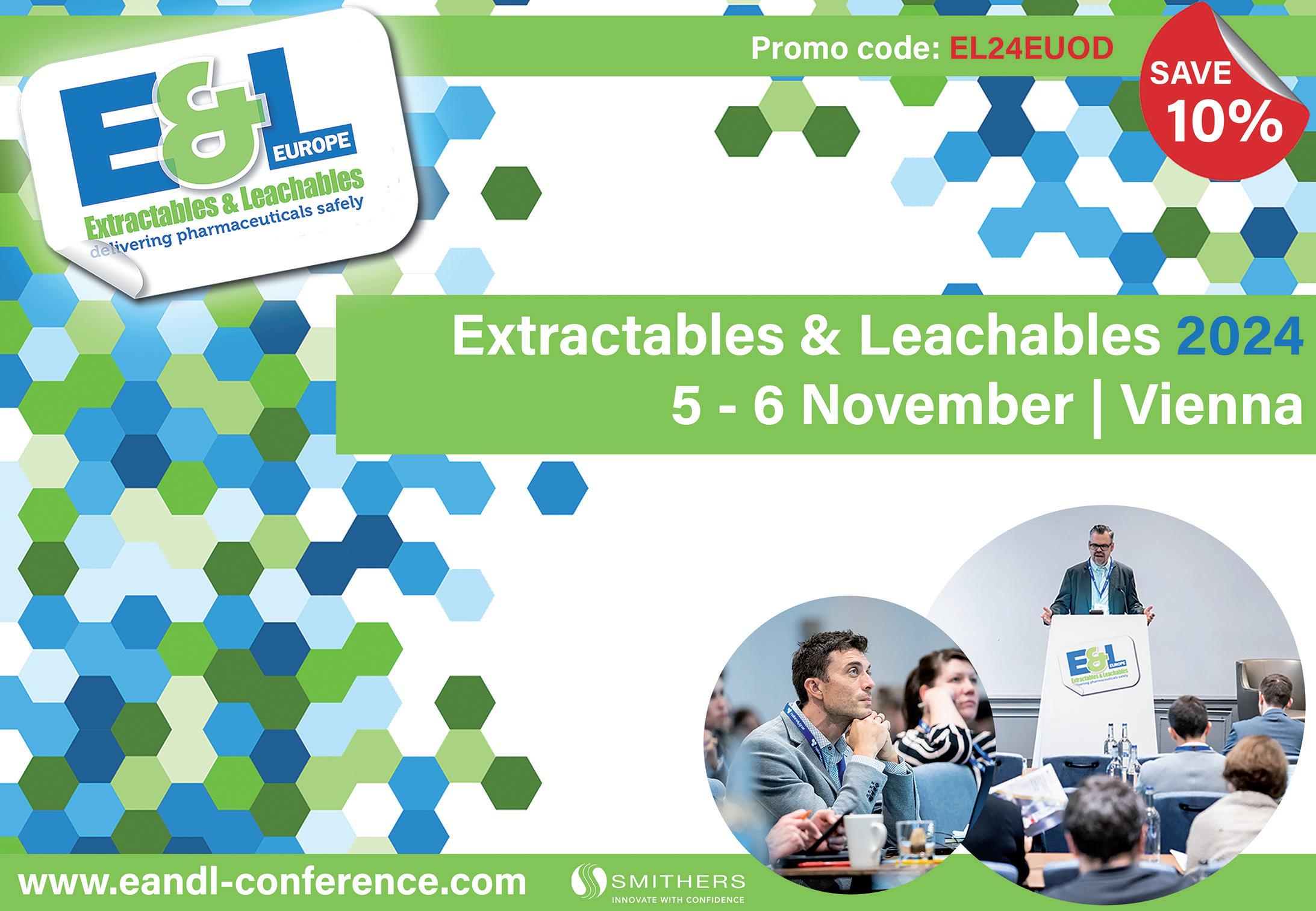
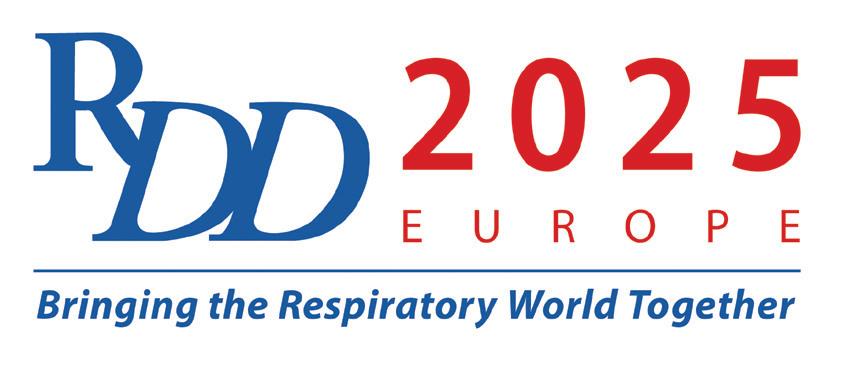





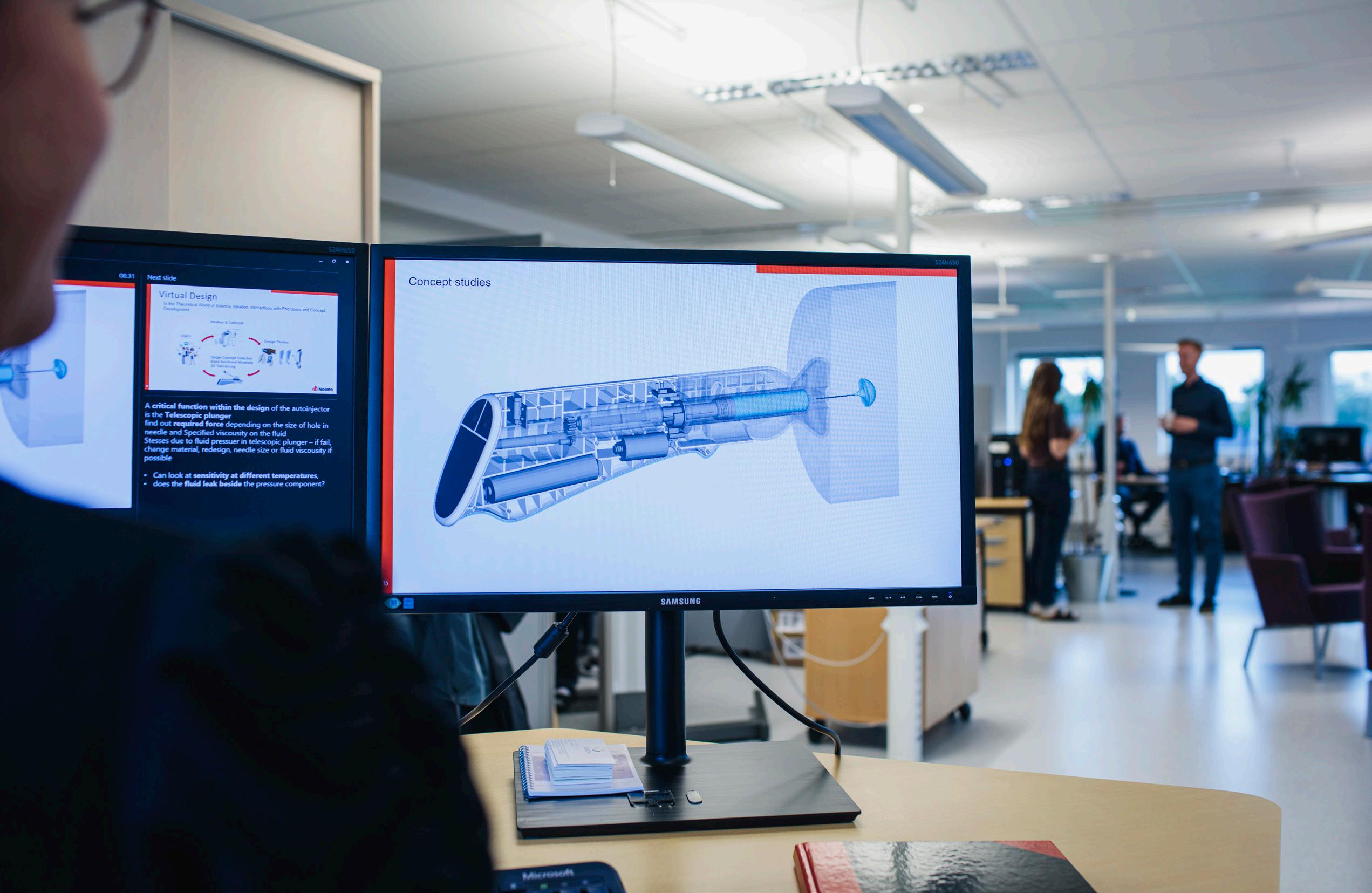
Virtual prototyping helps get things right from the start
Applying integrated, simulated design solutions early on at the design stage of development reveals opportunities for improvement before producing a physical prototype or the associated manufacturing tooling. Virtual prototyping is an amazingly powerful tool for ensuring efficiency and cost-effectiveness. Identifying enhancements early on in the process saves both time, money and reduces CO2 footprint.
Nolato is a full polymer solutions provider and a natural choice of partner early on in the process to develop and manufacture next-generation Medical products, with a focus on Medical Devices, In-Vitro Diagnostics, and Drug Delivery Devices. By engaging at an early stage of design, we create the conditions for more sustainable solutions. We partner with our customers to transform a product design into a high-volume, zero-defect manufacturing process. Our state-of-the-art Class 7 and 8 cleanrooms, at our 20 global medical manufacturing sites, feature advanced robotics and vision inspection systems to ensure consistent quality, and our in-house tooling, molding, high-speed assembly, decoration, and packaging capabilities complete our one-stop-shop manufacturing portfolio.
Want to know more? Contact us!
Medical Solutions, Box 93, SE-242 21 Hörby, Sweden. Phone: +46 (0) 415 19 700, www.nolato.com
In this article, Christa Jansen-Otten, Director, Technical Product Development, at West Pharmaceutical Services, discusses how the company’s FluroTec® plungers for prefilled syringe solutions can cope with cold storage conditions to extend drug shelf life and preserve integrity.
Selecting the appropriate primary container for drug delivery is an important decision that can directly impact patients. Prefilled syringes (PFSs) are one of the fastest growing segments within the injectables market, driven by a strong biologics pipeline, combination products, home care and self-administration.
There are many reasons why pharmaceutical companies are keen to switch from multidose vials (MDVs) to a safe PFS. One is to create a more convenient patient-centric administration format – PFSs are filled with an accurate dose and therefore reduce the risk of medication errors in a ready-to-use format. Using PFSs reduces the risk of microbiological contamination due to them requiring fewer preparation steps and less time for healthcare providers to prepare the drug for injection. In addition, PFSs also have less overfill compared with MDVs, which reduces drug waste.
During the covid-19 pandemic, various sizes of MDV formats were approved by regulatory authorities, which have proven to be a highly effective containment
“Given
solution, enabling high vaccination rates (13.5 billion vaccine doses administered worldwide through August 2023, according to the WHO in August 2021); however, a transition towards single-dose applications, such as PFS container solutions, during the endemic phase might be appropriate.
The development of messenger ribonucleic acid (mRNA) vaccines has paved the way for a whole new class of promising vaccines for infectious diseases and cancer, mRNA treatment for food and environmental allergies, and a platform for genetic diseases.
One of the challenges with highly sensitive mRNA-based vaccines is that they must be maintained at low temperatures. While data exists for cold storage in MDVs, less data is available for PFSs, which serve as both a container for storage and the drug delivery device. Therefore, PFSs must be carefully evaluated to high standards regarding key performance metrics, such as the container closure integrity (CCI), break loose and extrusion forces, and plunger movement during cold storage.
the need for more high-value drug products that can be stored at low temperatures to extend shelf life, preserve drug integrity and provide patient convenience, PFSs appear to be a logical solution.”

Christa Jansen-Otten Director, Technical Product Development E: christa.jansen-otten @westpharma.com
West Pharmaceutical Services
530 Herman O West Drive Exton PA 19341
United States
www.westpharma.com
Given the need for more high-value drug products that can be stored at low temperatures to extend shelf life, preserve drug integrity and provide patient convenience, PFSs appear to be a logical solution – for room temperature storage, they are perfect. However, drugs that need sub-ambient storage come with additional concerns, including leakage, syringe cracking and sterility breaches by plunger movement. These concerns are independent of the level of siliconisation or whether the syringe is a polymer or glass-based system.
Overall, the number of drug products requiring storage in temperatures lower than -20°C has risen significantly in the past few years. There are many reasons for using freezing conditions, such as slowing degradation, extending shelf life and reducing leachables from the container closure.
The growing trend of mRNA applications, especially vaccines, in the advanced therapeutics biologics space is moving to PFSs, requiring a plunger that can function at temperatures down to -50°C. Selected PFS FluroTec® plunger designs meet these criteria and are compatible with ISO glass syringes – as well as some cyclo-olefin copolymer (COC) syringes –that are currently available in the market.
There are challenges for the plunger components in terms of low-temperature storage. The syringes and plungers were designed to fit and function at room temperature. More specifically, they were designed to maintain sterility and CCI, and enable acceptable break loose and extrusion (BLE) forces during administration. It must be determined experimentally whether a PFS intended for use under frozen conditions can achieve an acceptable level of performance. The characterisation of the plunger performance in a PFS is essential to determine the suitability for intended use at low temperature.
The following sections give insights from observations obtained from a performance study conducted with glass and plastic PFSs in combination with FluroTec plungers using a well understood bromobutyl rubber formulation, 4023/50 grey, during and after freeze-thaw exposure.
The FluroTec barrier film lamination used for these respective plungers is a widely proven ethylene tetrafluoroethylene (ETFE)
“As pharmaceutical companies seek to move from vials to PFSs for mRNA vaccines, there is a lack of data demonstrating performance and CCI at low temperatures, including -50°C.”
film, which acts as a barrier that reduces interactions between a drug product and the elastomeric plunger and limits the migration of potential leachables from the plunger into the drug product, thereby reducing potential contaminants that may impact drug efficacy and safety. The challenges of storage and delivery of a covid-19 vaccine in a PFS are amplified, as vaccine contact time may be longer with a plunger than with a stopper.
As pharmaceutical companies seek to move from vials to PFSs for mRNA vaccines, there is a lack of data demonstrating performance and CCI at low temperatures, including -50°C. Additionally, there is no standard method for testing CCI on PFSs. All of this makes it difficult for mRNA drug developers to choose and validate proper PFS components for their drugs.
West conducted a study with two FluroTec plunger designs, the 1 mL long and the 1–3 mL. The evaluation was conducted with 1 mL long glass and polymer syringes, and with 2.25 mL glass syringes, respectively. West has developed methods for testing plunger movement, BLE and CCI for syringes that undergo cold storage processing. The BLE method is validated, while the plunger movement and CCI methods were developed by West.
The PFS system might be affected by pressure change, such as during air transport or low temperature and freeze/thaw cycles. When a drug product freezes, the liquid expands and, depending on the headspace, that expansion can physically push the plunger distally into the non-sterile area of the barrel. When the syringe is brought back to room temperature, foreign material could be introduced into the sterile area, creating a potential risk of contaminating the drug product. Furthermore, moving the plunger from its original position can potentially alter the initial expected break-loose value of the syringe system.
Experimental evaluation was made of water-filled PFSs comprising ISO-standard 1 mL long and 2.25 mL glass staked-needle
syringes with FluroTec plungers. Storage conditions were at -50°C (passive freezing in mechanical freezer, vis-à-vis controlledrate freezing) for >24 hours followed by bench-top thaw for >1 hour. In this experiment, the plunger position was recorded before freezer placement, immediately after removal and after thaw. Emphasis was on movement past the sterile barrier as defined by the sealing ribs.
CCI plays a crucial role in maintaining the stability and sterility of parenteral products throughout their shelf life. CCI may also be affected by extremely low temperatures, such as -80°C due to a loss of elasticity in the rubber components and the varying shrinkage rates of different materials. For example, it is not uncommon to see that the syringe barrel shrinks less than the plunger, which could result in minimal interference and a breach in the barrier against microbial ingress. In this case, CCI was determined by laser-based headspace analysis for oxygen by comparing values as assembled and after freezer placement and thaw. The test was conducted with 1 mL long-glass and COC barrels paired with a FluroTec long plunger and 2.25 mL glass barrels paired with a FluroTec laminated 1–3 mL plunger. Syringes were divided into three groups: room temperature (RT), -40°C and -50°C storage conditions.
BLE forces were measured by determining the force needed (with tensile testing equipment, e.g. by Instron Corp, MA, US) to initiate plunger movement and sustain a desired plunger movement rate. A comparison was made between samples before and after freezer placement and thaw. The test was conducted with 1 mL long glass and COC barrels paired with FluroTec laminated 1 mL long plungers and 2.25 mL glass barrels paired with FluroTec laminated 1–3 mL plungers. Syringes were divided into two groups: RT and -50°C storage conditions. The BLE analysis was performed according to ISO 11040-8, section 6.2 with a speed of 100 mm/min.
Plunger movement triggered by lower temperature largely depends on the fill volume. The data generated show that smaller fill volumes result in less movement. In the study, for the 1 mL long syringe filled at 0.5 mL, movement never exceeded 1.5 mm, while, for the syringes filled to 1 mL, movement reached a 3.5 mm distance. The sterile barrier zone for the plungers used in this study was estimated based on drawings at RT in an uncompressed state, and was determined to be around 4 mm. Therefore, to minimise risk of breaching the sterile barrier, not filling syringes to their maximum capacity may be a potential approach. The headspace, material of the barrel, design of the plunger and orientation of the storage used in this study do not seem to affect plunger movement in a significant way. It should be noted that the headspace influences plunger movement in plungers shipped by air transport and can create an additive effect to the movement observed, which is outside the scope of this report. An example of the results is shown in Figure 1 for the 1 mL long glass syringe with two filling volumes.
CCI testing showed no gross gas exchange during the -40°C and -50°C freezing conditions. Gross exchange is defined as a ≥2% increase in oxygen concentration, which was experimentally determined. The selected polymer system did show a >2% exchange when stored at RT in three out of the 10 syringes tested, which could be expected based on the inherent permeability of COCs.
When stored at cold temperatures, the exchange rates were significantly less, and no values were seen that were >2%. These results indicate that the assemblies of the 1 mL long FluroTec plungers in a standard 1 mL long glass syringe and a standard 1 mL polymer syringe, as well as the 1–3 mL FluroTec plungers in a standard 2.25 mL glass syringe, exhibited promising behaviour that warrants further study for container closure at low temperatures. The evaluation of CCI demonstrated no breach of any PFS. Example data are shown in Figure 2; the oxygen concentration was measured before and after freezer placement and thaw. No increase in oxygen concentration was observed. A breach would result in an oxygen concentration the same as freezer air (i.e. 21%), especially as the decrease in pressure within the PFS upon freezer placement would promote air ingress.

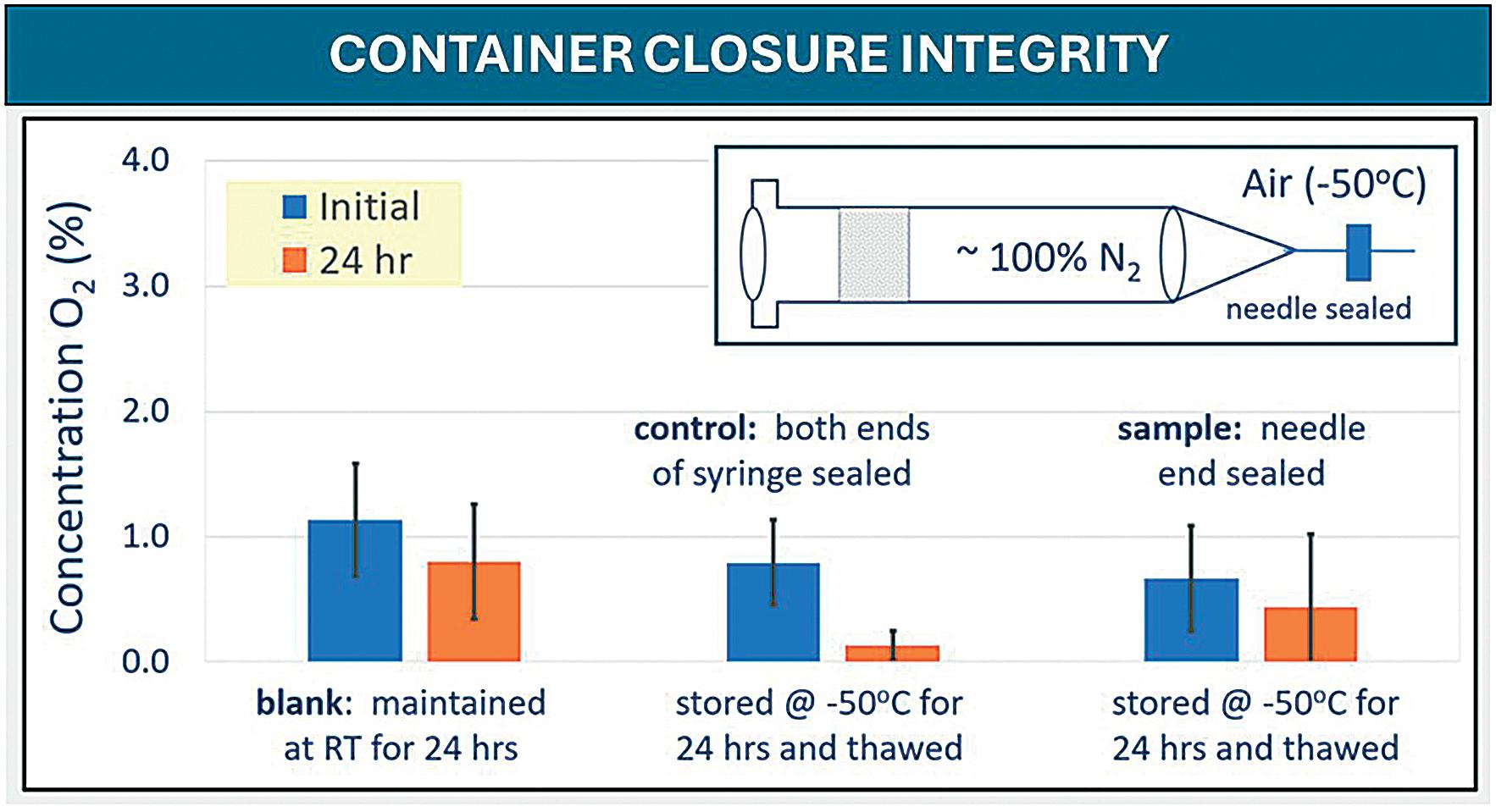
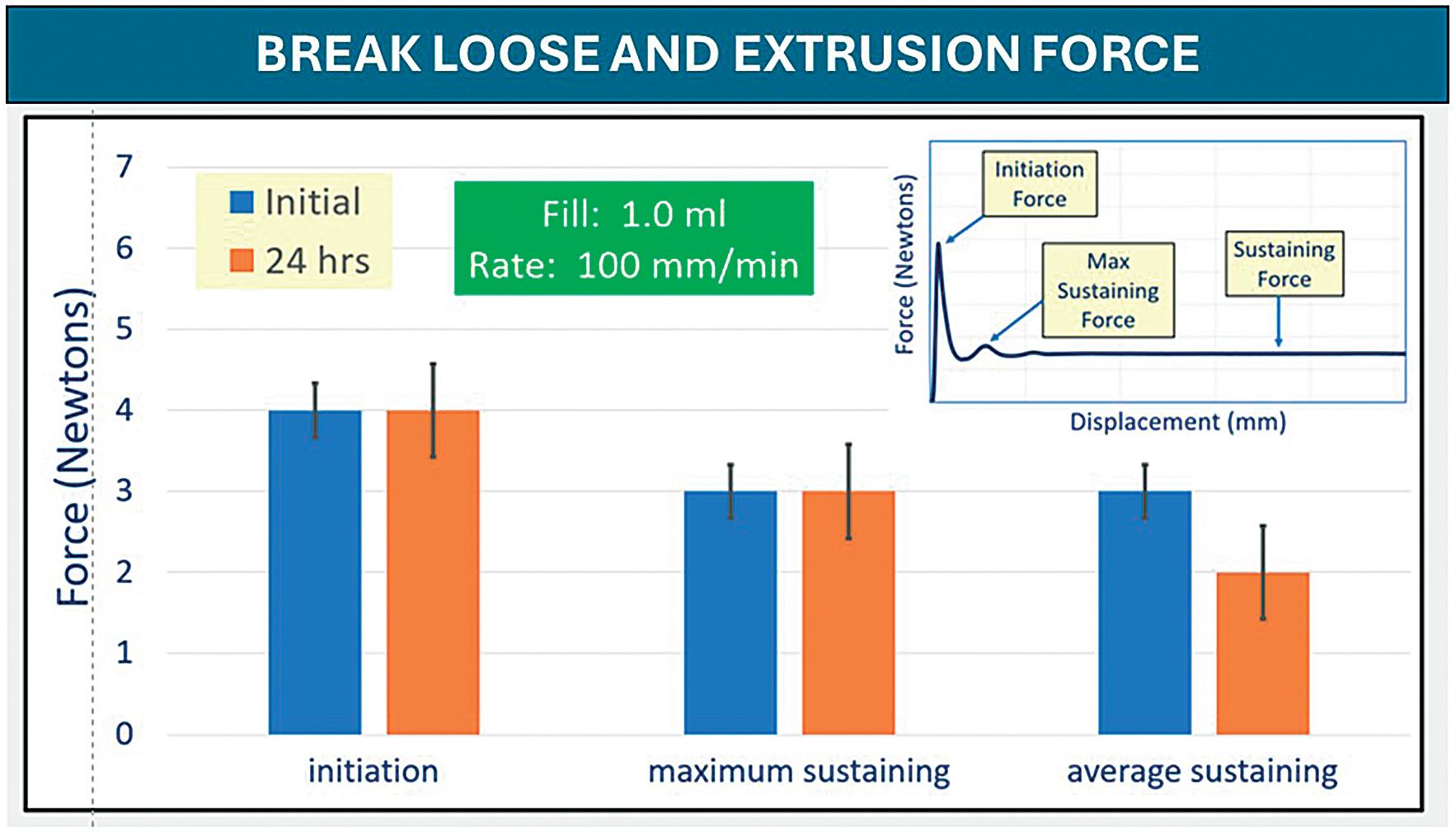
“Overall, the evaluation of initiating and sustaining forces at 100 mm/min demonstrated no change in performance for any PFS after freezer placement and thaw.”
The syringes tested for BLE post -50°C storage showed similar appearances. Overall, the evaluation of initiating and sustaining forces at 100 mm/min demonstrated no change in performance for any PFS after freezer placement and thaw. Syringes with FluroTec laminated plungers were tested for BLE forces post -50°C. Both glass syringes sizes showed typical BLE values and performance. The 1 mL polymer syringe showed a slightly higher break-loose, maximum extrusion and average extrusion than the glass syringes, but was still comparable with the glass performance. Example data are shown in Figure 3.
It should be noted that all the tests performed were intended to demonstrate examples of the developed tests and not necessarily real-life situations. As noted in the experimental section, test method elements – such as models and materials of the barrels, plungers and plunger rods, plunger placement method and headspace, fill media and volume, storage temperate
and other conditions – should be selected based on the intended use. Additionally, other parameters not tested in this work might need investigation, such as air transportation simulations, particle analysis and material properties to determine suitability of the prefilled packaging system for cold storage. Overall, it can be concluded that these testing approaches appear generally suitable for evaluating PFSs systems at low temperatures.
FluroTec is a trademark of West Pharmaceutical Services, Inc. in the United States and other jurisdictions, and FluroTec technology is licensed from Daikyo Seiko, Ltd.
West Pharmaceutical Services is a provider of innovative, high-quality injectable solutions and services. As a partner to established and emerging drug developers,
West helps to ensure the safe, effective containment and delivery of life-saving and life-enhancing medicines for patients. With 10,000 team members across 50 sites worldwide, West helps to support customers by delivering approximately 43 billion components and devices each year.
1. Gonzalez M, “From Vial to Prefilled Syringe: Migrating a Drug Product Presentation”. ONdrugDelivery Issue 129 (Feb 2022).
2. “Implications of transitioning mRNA Covid-19 vaccines from vial to prefilled syringe”. Schott Pharma, Jun 23, 2022
3. McAndrew P, Brasten LJ, Lasinka O, “Performance of Pre-Filled Syringe Systems at Low Temperature”. AAPS PharmSci 360, 2023, Poster Presentation, T1330-09-60.
Christa Jansen-Otten is the Director of Technical Product Development at West Pharmaceutical Services. With more than 20 years of extensive experience in the pharmaceutical industry, she is a recognised authority in the field of prefillable systems and delivery technology. Ms Jansen-Otten holds a diploma in Biomedical Engineering from the University of Aachen (Germany). Her career began as a Quality Assurance Manager at one of the world’s leading pharmaceutical companies, where she specialised in sterile filling and packaging. She later expanded her expertise in the Customer Quality Assurance department of a top manufacturer of PFSs. Since joining West in 2005, Ms Jansen-Otten has excelled in various roles within the Technical Customer Service, Marketing and Product Management departments.




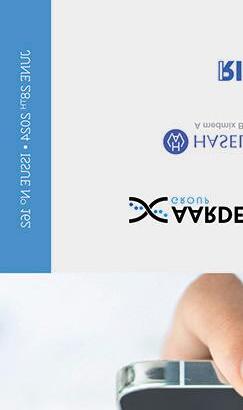


When it comes to sterile injectable drugs, maintaining sterility and avoiding product contamination are critical requirements for patient safety. The EU GMP Annex 1 provides technical guidance on the principles and guidelines of good manufacturing practice (GMP) for medicinal products for human and veterinary use. In August 2023, a significant revision of Annex 1 took effect and presents new challenges for drug manufacturers.
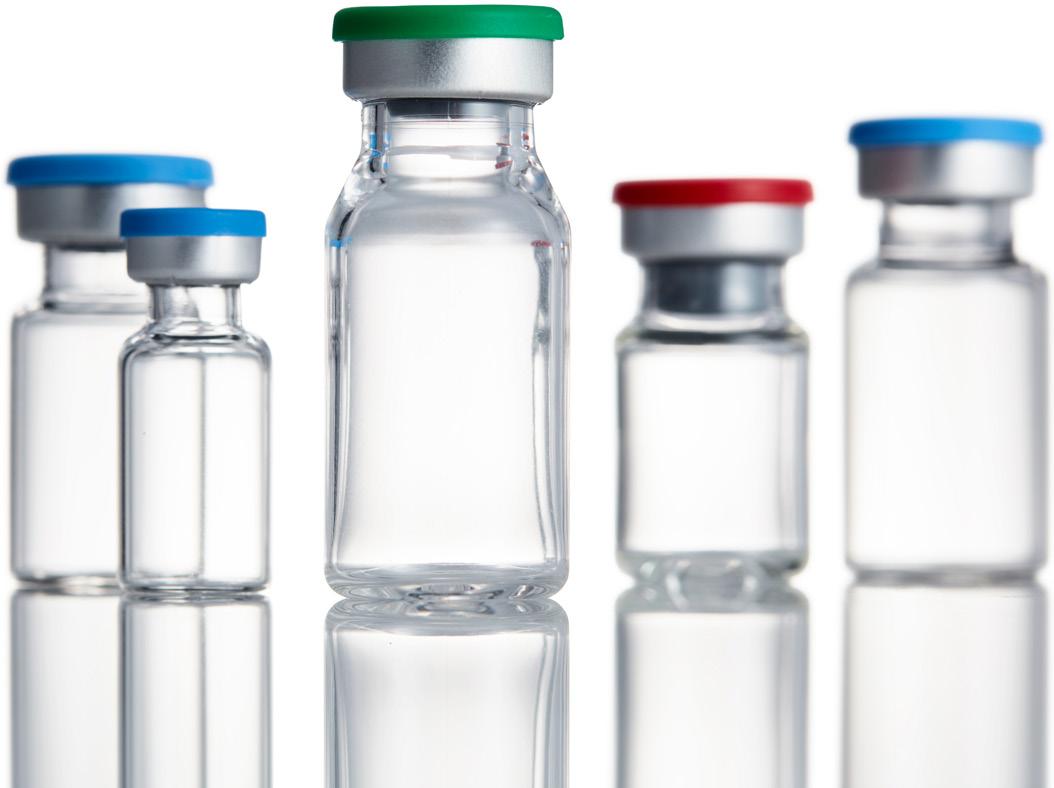
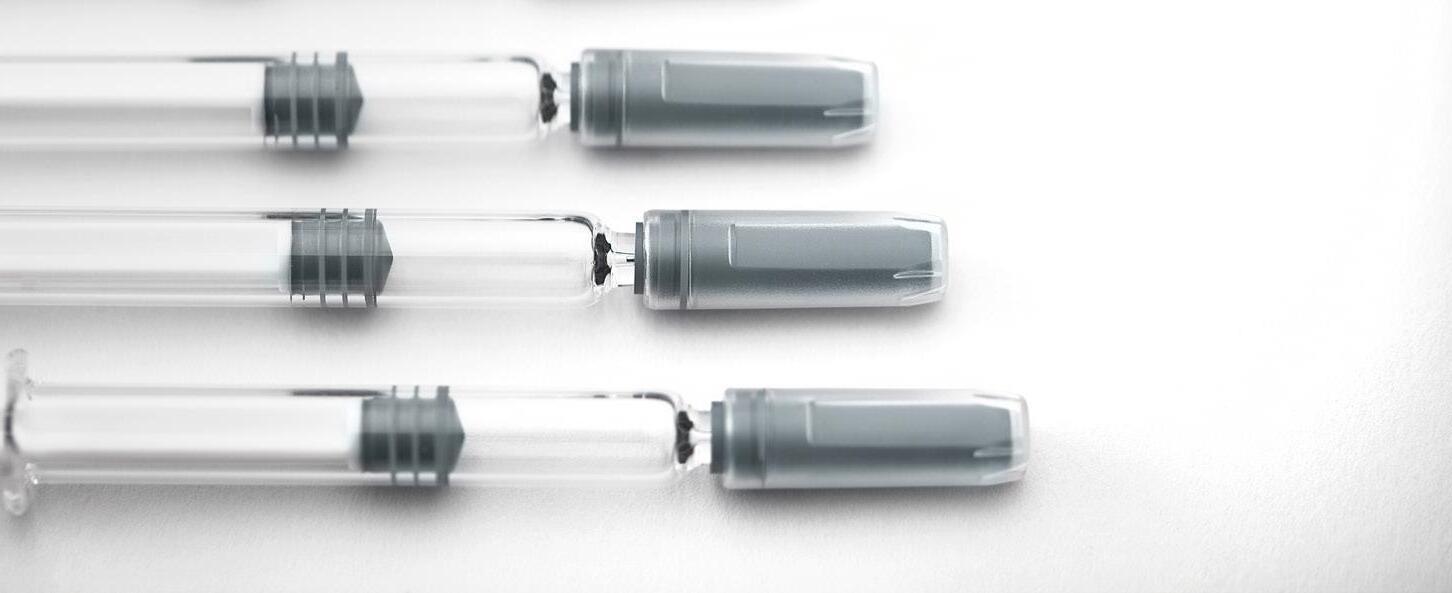









In this article, Alex Vasiev, PhD, Head of Biointerface at Springboard, discusses how next-generation contract development and manufacturing organisations can ensure the successful commercialisation of new combination products by mitigating development risks, accelerating time to market and helping to avoid costly changes late in the development process.
Creating and producing advanced drugdevice combination products, such as autoinjectors and pen injectors, requires a depth and breadth of technical expertise. As ever more pharmaceutical companies streamline their supply chains and outsource specialised technical tasks, these challenges are increasingly being shifted to their development partners.
Parenteral drug development is undergoing significant changes, with drug pipelines expanding to include more complex formulations.1 The market's focus on blockbuster drugs, such as glucagonlike peptide 1 (GLP-1), has also consumed considerable manufacturing capacity, making it difficult to find partners who can manage the technical complexities of new, niche applications while remaining flexible enough to handle smaller volumes, such as those for orphan drugs and clinical batches.
This is where next-generation contract development and manufacturing organisations (CDMOs) become essential. These specialised partners – who excel in the complex processes of designing, developing and manufacturing combination products – offer a comprehensive approach that combines cutting-edge technical expertise with adaptable manufacturing capabilities to meet the evolving demands of the market.
This article delves into how next-gen CDMOs mitigate development risks, shorten time to market and ensure the
“Optimising the stability, efficacy and injectability of new therapeutic formulations presents considerable challenges.”
successful commercialisation of new combination products. By adopting these strategies, pharmaceutical companies and their partners can strategically position themselves for success in an increasingly competitive market.
Optimising the stability, efficacy and injectability of new therapeutic formulations presents considerable challenges. Early decisions in formulation development –such as enhancing oxidation resistance, improving pharmacokinetic profiles, enabling sustained release or eliminating the need for cold-chain storage – play a crucial role in determining a drug's physical and chemical properties (Figure 1).
De-Risking Formulation-Device Compatibility If these unique formulation needs are not properly addressed, complications can arise later in development. Decisions aimed

Dr Alex Vasiev, PhD
Head of Biointerface
Tel: +44 1223 856136
E: alex.vasiev@springboard.pro
Springboard Pro Ltd
a Sanner Group Company
St John’s Innovation Centre Cowley Road Cambridge CB4 0WS
United Kingdom
www.springboard.pro
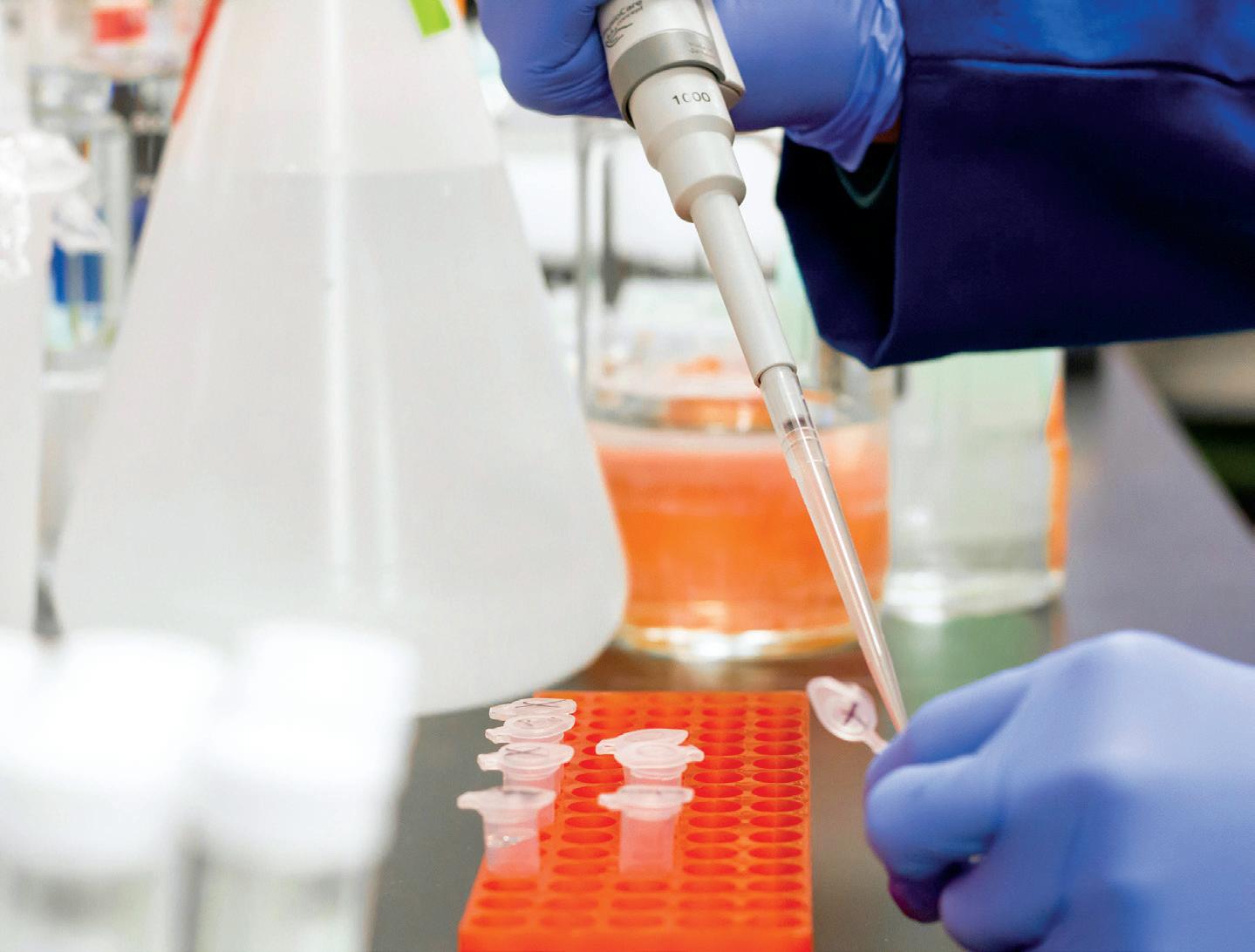
at reducing manufacturing and stability risks may inadvertently impact the user experience and, more importantly, the efficacy of parenteral therapies. This highlights the need for a comprehensive approach that considers formulation stability, safety and compatibility with the delivery system and the target patient population.
As the pharmaceutical industry increasingly focuses on biopharmaceuticals, including proteins, peptides, and nucleic acid-based drugs, the complexity of therapeutic modalities continues to grow. The rise in treatments for rare diseases is driving the development of even more advanced therapies, often synthetically engineered or biologically derived, and frequently conjugated with other molecules to enhance their therapeutic effects or stability. Emerging trends include peptidelipid conjugates, oligonucleotide-sugar
“A next-gen CDMO possesses a deep understanding of how a formulation's physical characteristics interact with the capabilities of delivery devices.”
conjugates and various combinations with antibodies, small molecules, synthetic polymers such as polyethylene glycol, and RNA.
These advanced therapies often exceed the capabilities of traditional drug delivery platforms, necessitating innovation in delivery device technology. By acknowledging these complexities early in the development process, teams can better anticipate potential challenges and make informed decisions that align with therapeutic, regulatory and commercial goals.
A next-gen CDMO possesses a deep understanding of how a formulation's physical characteristics will interact with the capabilities of delivery devices. Providing this level of advanced technical expertise requires the formation of multidisciplinary teams that bring together knowledge from chemistry, biology, material science, engineering and human factors – expertise that is not commonly found within large manufacturing organisations.
In recent years, the need for intuitive, user-friendly medical devices has become evident, especially as more therapies shift to self-administration at home. Incorporating patient insights early in the design process ensures that devices are functional, manufacturable and emotionally and cognitively aligned with
patient needs. Early-stage user research, patient process mapping and iterative usability studies are vital for refining device designs (Figure 2).
As the population ages and co-morbidities rise, particularly in rare diseases with complex pathologies, a platform approach can encounter unexpected challenges in user interface design and adaptability.
A next-gen CDMO supports clients by offering in-house human factors expertise and de-risking changes and their impact on the user interface by ensuring a deep understanding of its impact on the device design and its manufacturability. This comprehensive approach streamlines the development process and, avoids costly late-stage changes, shortening time-to-market.
Proactive Attitude to New Technologies
New technologies, such as augmented reality (AR) and virtual reality (VR), have become valuable tools in developing and de-risking production processes, particularly before committing to costly capital expenditures (CAPEX). AR and VR enable production teams to simulate and visualise processes in a virtual environment, allowing detailed analysis and refinement of workflows, equipment layouts and overall processes before any physical implementation (Figure 3).
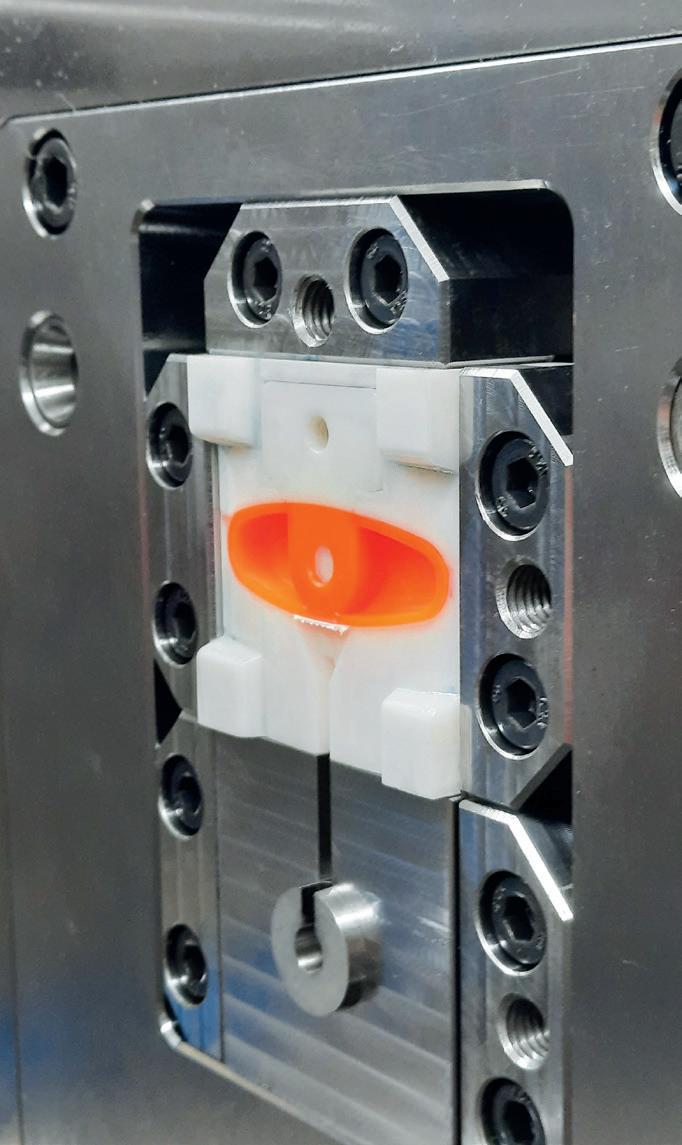
3:
The hallmark of a next-gen CDMO is reduced iteration and a right-first-time approach to development.
Next-gen CDMOs use AR and VR to enhance cross-functional collaboration, allowing engineers, designers and operators to interact with a virtual model of the production line. This collaborative approach ensures that stakeholders share a clear understanding of the proposed processes, leading to better-informed decisions and a more co-ordinated implementation strategy.
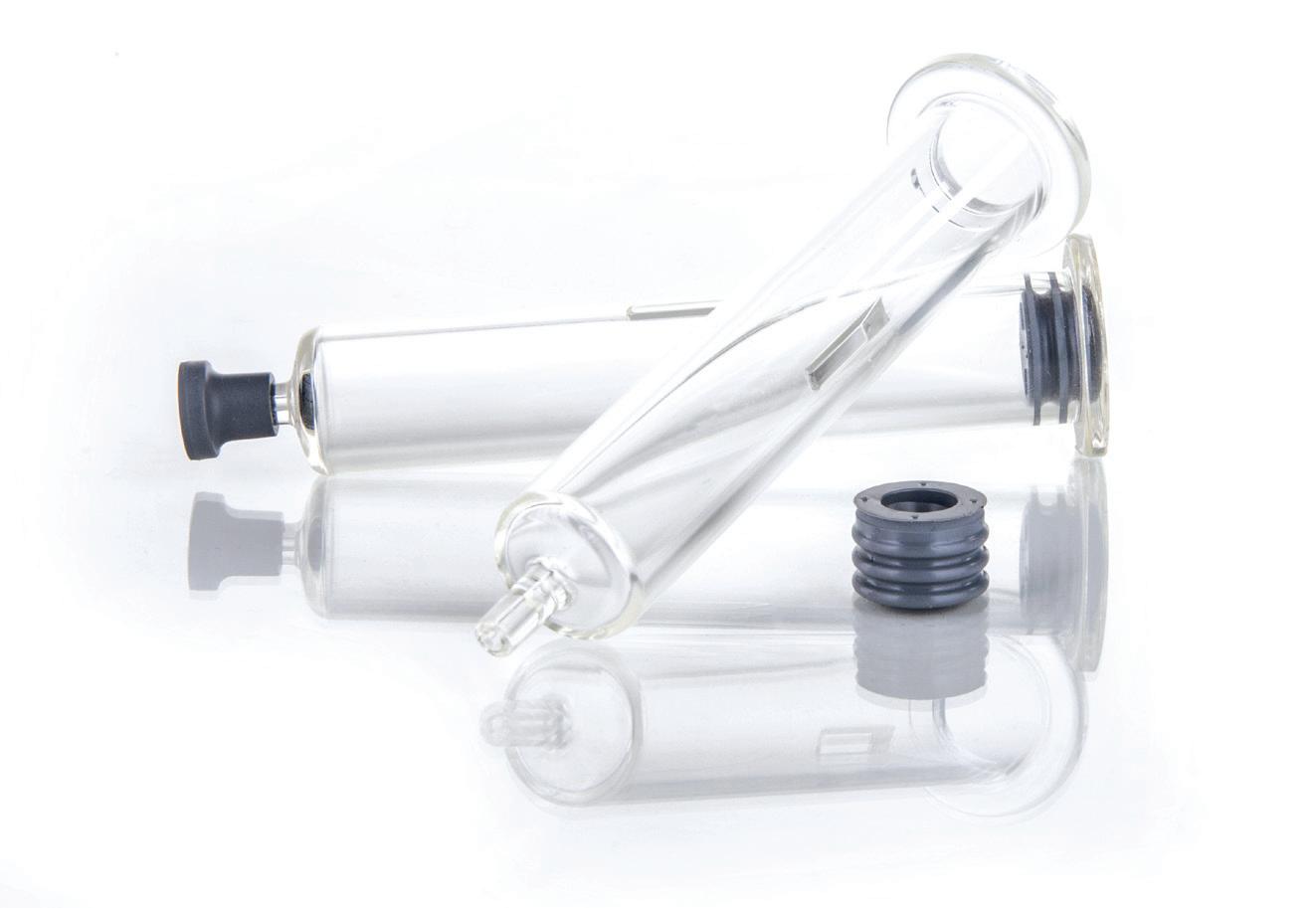
minimising financial risk and maximising operational efficiency.
Beyond process development, AR and VR are instrumental in training and onboarding personnel. By immersing employees in a realistic virtual environment, these technologies provide hands on experience with new equipment and procedures, ensuring that staff are fully prepared before actual production begins (Figure 4). This approach enhances workforce readiness and minimises the potential for human error during the early stages of production. By adopting AR and VR, companies can make more
Design transfer is a critical stage where design and manufacturing teams collaborate to ensure that product designs are innovative and manufacturable at scale. For combination products such as autoinjectors, multidisciplinary input is essential. Understanding material behaviour during processes such as injection moulding or metal stamping helps in designing components that are functional, easy to manufacture and less prone to defects, thereby reducing risks.
A streamlined information exchange between integrated CDMO design and manufacturing teams minimises the risk of costly design changes and production
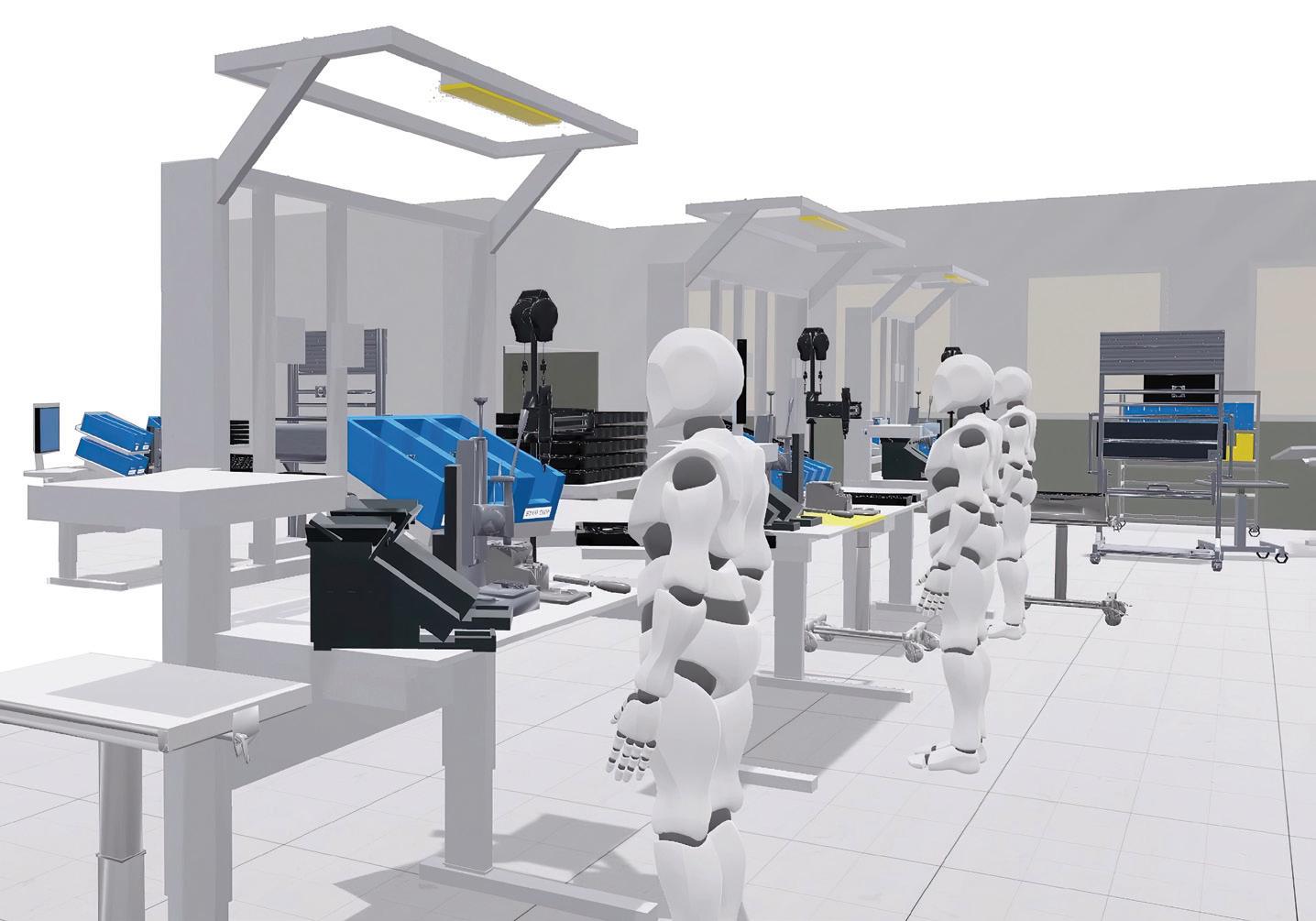
delays. By understanding material capabilities and anticipating tolerance ranges and draft angles, the design team can streamline the transition to production. An integrated design transfer process considers automation potential and scaling strategies from the outset, using historical performance data and manufacturing insights. This proactive approach avoids bottlenecks and quality issues, ensuring that products can be manufactured efficiently at scale with robust quality control systems. This integration is fundamental to achieving quality by design and ensuring that criticalto-quality requirements are effectively applied to components at the dimensional and functional levels.2
The ability to expand capacity is a hallmark of a next-gen CDMO. In today’s rapidly evolving pharmaceutical and medical device landscape, the ability to adapt manufacturing capacity is crucial for staying competitive and meeting increasingly diverse customer needs. This is especially true in the context of today’s parenterals market where:
1. Increasing global demand for GLP-1 receptor agonists and other blockbuster therapeutics is consuming significant production capacity3
2. The number of orphan drug designations with small patient populations has more than doubled over the previous decade.4
This presents conflicting needs, requiring flexibility and agility to accommodate both small clinical batches and high-volume production, even in a market where capacity is at a premium.
Expanding capacity is not just about adding more production lines or increasing output. It requires a strategic approach that involves anticipating market trends, investing in scalable technologies and building flexible infrastructure that can adapt to changes in demand. Modular manufacturing facilities that can be quickly reconfigured to handle different products or scales of production offer the ability to pivot rapidly in response to customer needs – whether that means scaling up production of an existing product or quickly bringing a new product to market. An example of this is Sanner’s new flagship facility outside of Bensheim (Germany).5
Aside from the facilities themselves, expanding capacity includes optimising supply chains to ensure that raw materials and components are available when needed. This involves building strong relationships with suppliers, maintaining safety stock of critical materials and implementing robust risk-management strategies to mitigate potential disruptions. A strong supply chain can respond more effectively to surges in demand, ensuring that production schedules are not delayed by material shortages.
In the last decade, many organisations have been severely impacted by unforeseen vulnerabilities in their supply chains and the raw material shortages resulting from disruptions such as epidemics and wars. While these risks are difficult to predict, they have been summarised by McKinsey and Co as stemming from a lack of robust processes to identify and effectively manage growing supply-chain risks in an increasingly interconnected world.6 New threats, such as cyber-ransom attacks, are emerging alongside more traditional and long-recognised supplier risks, such as supplier bankruptcy.
In complex combination products, the probability and severity of many supplychain risks are challenging to ascertain, especially when the supply chain is fragmented across multiple sources and tiers. These issues can be addressed systematically by cataloguing and mitigating known risks while enhancing the organisation’s resilience to inevitable unknown risks.
To ensure security of supply, organisations must facilitate flexibility in sourcing, ongoing risk analysis, safety stock holding, governance, reporting, key performance indicator monitoring and continuous improvement. Transparency
and visibility of incoming supply chains are crucial for saving time and ensuring that mitigation activities are well-informed and swiftly executed. As the pharmaceutical industry trends towards more outsourced, leaner organisations, CDMOs are inheriting many of these challenges and are implementing strategies and processes as part of a next-gen CDMO offering, including:
• Holistic risk identification and mapping: Established, holistic risk identification and mapping processes across the entire value chain of the product.
• Integrated risk management framework: A risk management framework that captures the severity of risks on the organisation, the likelihood of occurrence and the organisation’s preparedness to respond to such risks. A consistent scoring methodology allows identified risks to be ranked and prioritised.
• Effective monitoring strategy : An effective monitoring strategy informed by a quality risk exposure score based on measurable production metrics that can be tracked regularly.
• Governance and review processes : Implement governance and review processes, including a cross-functional risk board with representatives from every node of the value chain. This system requires the CDMO to have significant internal technical and statistical expertise to provide guidance on identifying and mitigating risks.
Next-gen CDMOs push the boundaries of drug delivery and parenteral development by bringing broad technical expertise and operational adaptability. As the complexity of biopharmaceuticals and drug-device combinations continues to
Alex Vasiev, PhD, is a multidisciplinary engineer with extensive R&D experience in both academia and consultancy. He is the Head of Biointerface at Springboard, where his primary focus is on the intersection of engineering, physics and biological systems. Before joining Springboard, Dr Vasiev managed front-end design and development at Oval (now SMC). In the field of drug delivery, Dr Vasiev has developed a range of innovations, including smart hydrogel microcarriers, patch pumps, soft-mist inhalers and several high-viscosity autoinjectors. He holds an MEng in Mechanical Engineering with Aeronautics and a PhD in Biomedical Engineering from the University of Glasgow (UK).
rise, these partners stand out by offering specialised capabilities that are essential for navigating the challenges of modern drug development. From the essentials of design transfer through de-risking the injectability of novel formulations to designing user-centric devices that enhance patient compliance, next-gen CDMOs are integral to the successful commercialisation of new therapies.
Their commitment to robust supply chain management and risk mitigation ensures uninterrupted production, even in the face of global disruptions. For pharmaceutical companies aiming to bring the most sophisticated parenteral therapies to market, next-gen CDMOs are not just partners; they are critical enablers of success, driving efficiency across the entire development lifecycle.
Springboard, part of Sanner Group since 2024, is an engineering company that specialises in the design and development of new products and technologies in the field of medtech and drug delivery devices, resolving technical challenges and decreasing time to market.
1. “What’s Trending: Parenteral Drug Development & Manufacturing”. DCAT Value Chain Insights, Feb 15, 2024.
2. Neadle S, “Combination Products Risk Management and Control Strategies”. PDA, accessed Sep 2024.
3. “GLP-1 Demand Fuels Growth in Pharmaceutical Manufacturing Capacity”. Contract Pharma, Jul 26, 2023.
4. Fermaglich LJ, Miller KL, “A comprehensive study of the rare diseases and conditions targeted by orphan drug designations and approvals over the forty years of the Orphan Drug Act.” Orphanet J Rare Dis, 2023, Vol 18(1), p 163.
5. “New state-of-the-art flagship manufacturing facility”. Company Web Page, Sanner, accessed Sep 2024.
6. Bailey T et al, “A practical approach to supply-chain risk management In supply-chain risk management.” McKinsey and Company, Mar 2019.
As a trusted partner, PCI offers expertise and solutions in sterile fill-finish and specialist final assembly and packaging of advanced drug delivery and drug-device combination products. The company’s seamless end-to-end injectable solutions, comprehensive approach and dedication to excellence positions it as a leader in optimising dosing and providing convenient, easy-to-use, patient-centric therapies to improve the lives of patients.
One of PCI’s key strengths is the flexibility it provides in offering solutions that cater to a diverse global client base. Whether manufacturing or packaging niche personalised medicines or large-annualvolume treatments, it has the capability and capacity to scale its services to meet specific needs, delivering streamlined supply chain solutions.
Sterile Fill-Finish and Lyophilisation
PCI’s scalable global manufacturing capabilities in sterile formulations and lyophilisation cover a broad range of small and large molecules, such as monoclonal antibodies, oligonucleotides and peptide drug products across multiple delivery formats, including vials, prefilled syringes (PFSs), autoinjectors, on-body injectors (OBIs) and cartridges for pens (Figure 1).
Advanced Drug Delivery and Combination Products
Driven by innovation and patientcentricity, PCI’s design and development expertise, combined with its device-agnostic assembly and packaging capabilities, offer flexible solutions for a diverse portfolio of conventional and specialty injectable drug delivery devices. Tailored to unique design, development
and manufacturing needs, PCI offers a complete range of capabilities, services and expertise, including:
• Expert design processes focused on human-factors engineering and technical functionality
• Optimising packaging designs for manufacturability, scalability, automation and sustainability
• End-to-end drug-device combination services, including:
– PFS assembly
– Pen, autoinjector and OBI final assembly
– Needle safety syringe assembly and precision labelling

– Integrated side- or top-open cartoning
– In-process functional testing and final release
– Serialisation
– Cold chain storage.
With a global network of experts, PCI can provide guidance at critical time points to assist in the development of patient-centric drug device combination products. The company’s wealth of industry experience can help to determine the best device container and strategy for a drug product and patient population – from the use of established, well-accepted platforms with regulatory approval to a more innovative device approach that may be more attractive for specific patient populations than more traditional platforms.
PCI’s pharmaceutical packaging design department provides an innovative and value-added service (Figure 2). The company’s dedicated team of in-house design specialists can deliver insightful packaging design and practical knowledge to deliver differentiated, sustainable and cost-effective packaging solutions. Working with its partners from as early as possible, the design department and a crossfunctional network of experts in sterile drug product manufacturing, engineering, operations and approved vendors are able to develop expert design processes focused on human factors engineering and technical functionality, delivering designs optimised for manufacturability, scalability and automation. This seamless solution ensures that key considerations are addressed at the right time, leading to both cost and time efficiencies and ultimately ensuring speed to market.

Providing an integrated, scalable solution, PCI’s mid-to-high volume commercial assembly technologies are also able to accommodate multiple drug device combination product types at a larger scale for later-stage clinical programmes, product launches and ongoing commercial market supply. PCI’s technologies can easily and cost-effectively be tooled for new autoinjector parts, enabling product customisation and allowing PCI to respond quickly and efficiently to technological changes and innovations.
Sterile Fill-Finish and Lyophilisation Expansion
With customer focus and flexibility at the core of PCI’s drug-device assembly and packaging capabilities, the company’s device-agnostic technologies can adapt to the unique requirements of varying platforms and bespoke device requirements, from concept to commercialisation. For example, PCI’s specialised clinical and low-volume commercial autoinjector assembly line provides a multi-platform autoinjector solution as well as the capability to assemble and label needle safety device platforms, making it the ideal technology for development studies, clinical trials and niche orphan drugs.
With a US$100 million (£76 million) investment, PCI is expanding its established sterile development and manufacturing campus in Bedford (NH, US) with a new multi-product, 50,000 sq ft facility. The new facility will provide best-in-class latestage clinical and commercial capacity, featuring Annex 1 compliant technology, including an aseptic fill-finish line within a fully isolated containment system, complete with twin 40 m2 lyophilisers with automatic loading and unloading systems. Processing batch sizes up to 300,000 vials at a rate of 400 vials per minute, this investment provides much needed large-scale capacity for the filling of life-changing small and large molecules, including biologics.
Complementing the continued growth and investment across its sterile manufacturing network and part of its global investment plan to address growing client demand for innovative injectable packaging solutions and readily available scalable capacity, PCI is investing more than $365 million in facilities and infrastructure supporting the clinical and commercial final assembly and packaging of advanced drug delivery systems, with an emphasis on drug-device injectable formats.
A key highlight of PCI’s ongoing expansion initiative is the acquisition of a purposebuilt pharmaceutical packaging facility in Dundalk, Ireland. The 90,000 sq ft facility is set to begin operations in Q4 2024 and will offer scalable drug device assembly and packaging for both injectable and oral solid-dose drug products. The site will also feature 3,000 pallet spaces of dedicated controlled ambient storage and 2,500 pallet spaces of 2–8°C refrigerated storage capacity to support its operations. In addition, PCI has commenced construction on a new 80,000 sq ft packaging facility at its CityNorth campus in Stamullen, Ireland. Expected to be operational by Q3 2025, this plant will expand capacity for the final assembly, labelling and packaging of injectable drug products, including vials, PFSs, and drugdevice combination products, including autoinjectors. The facility will also add 500 2–8°C pallet spaces and an additional 4,000 ambient pallet spaces, providing enhanced temperature-controlled storage capacity for the site.
Building upon its specialised injectable packaging solutions at PCI Rockford (IL, US), PCI is in the final stages of completing a new 475,000 sq ft facility to meet the growing market need of specialised assembly and packaging for injectable drug-device combination products. Over 20 dedicated suites will support the final assembly and packaging of vials, PFSs, autoinjectors, OBIs and pen injectors, such as those for the treatment of diabetes and obesity, in addition to oncology and autoimmune diseases.
With the aim of accelerating advanced drug delivery and drug-device combination products through clinical trials to commercialisation as efficiently and costeffectively as possible, PCI is expanding its Rockford campus further with an additional 70,000 sq ft facility. This facility will support the whole development lifespan of injectable drug products under one roof, from clinical to commercial, marrying efficiencies and streamlining drug product journeys.
As an integrated global contract development and manufacturing organisation, PCI is a manufacturing, packaging and supply chain expert able to provide seamless sterile fill-finish and lyophilisation solutions from development to commercialisation. Additionally, PCI offers integrated custom packaging solutions for sterile injectables that enable knowledge sharing and communication between teams to ensure that drugdevice combination product packaging is optimised for the product, patient and production.
Supporting a quick-to-patient supply chain, PCI’s scalable device-agnostic technologies, coupled with its extensive, readily available assembly and test tooling for the most common device platforms, removes the lengthy lead time of up to six months for new tool sets and provides significant validation time and asset cost savings.
With in-house laboratories, PCI provides a range of packaging and analytical services to support development, clinical and commercial supply of medicines globally. From product ID testing, method transfer,

release and stability testing to autoinjector system testing with functional tests and ISO 11608 standards to assess key performance metrics, such as cap removal force, activation force, dose accuracy and injection time, PCI can ensure that its partners’ therapies meet regulatory guidelines and are safe for patient use.
PCI is undertaking a significant expansion of its capacity and capabilities and, as a trusted partner, provides expertise and solutions tailored to the unique demands of drug development programmes and the patients that they serve. The company’s comprehensive approach and dedication to excellence in delivering customer service positions it as a leader in this rapidly evolving industry (Figure 3).
PCI Pharma Services is a global contract development and manufacturing organisation that provides integrated end-to-end drug development, manufacturing and packaging solutions
to increase product speed to market and opportunities for commercial success. PCI’s experience includes more than 90 successful product launches each year and over five decades in the delivery of supply chain healthcare services. The company has over 7,000 employees at 30 sites across Australia, Canada, North America, the UK and Europe. Leading technology and continued investment enable PCI to deliver development to commercialisation solutions throughout the product lifecycle, collaborating with its clients to improve the lives of patients globally.
PCI Pharma Services 3001 Red Lion Road Philadelphia PA 19114
United States
T: +1 215 613 3600 (US) +44 1495 711 222 (EU) E: talkfuture@pci.com www.pci.com

